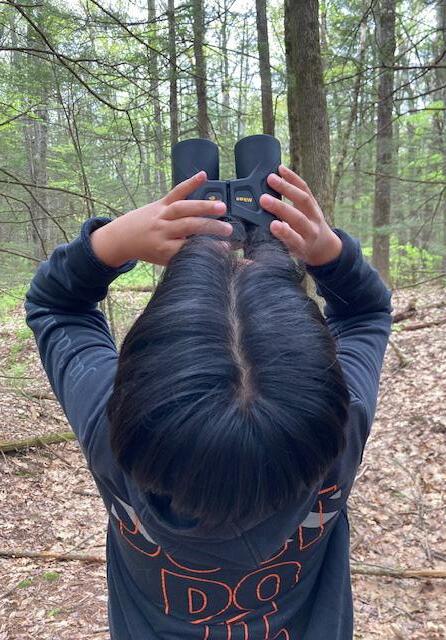

Mini-Grants for Outdoor Learning
2024 - 2025
Over the course of the 2024-2025 school year, MEEA received $156K from donors to distribute to over 142 schools in all 16 counties to advance outdoor learning efforts for over 30,000 youth
The Mini-Grants for Outdoor Learning Program supports a wide variety of projects and types of outdoor learning. In the past five years, 662 applications have been funded, totaling $787,711 going directly to teachers! By funding teachers invested in outdoor learning across the state, we’ve reached over 139k students in five years. Some of the outdoor learning projects this year included Pre-K students tromping through the woods to tap trees, middle school youth going birding, and high school students building outdoor classrooms for younger kids..
In this report, we share snapshots of the 149 mini-grant projects funded during the 2024-2025 school year across Maine.
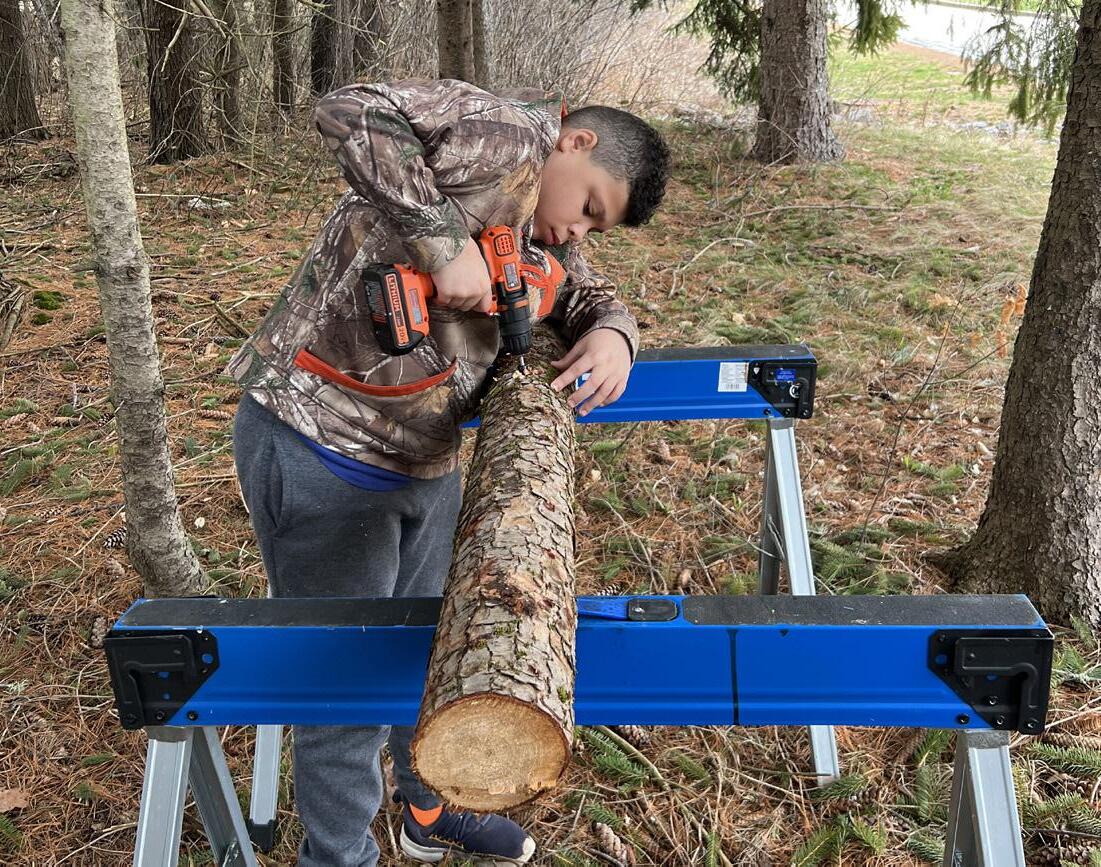
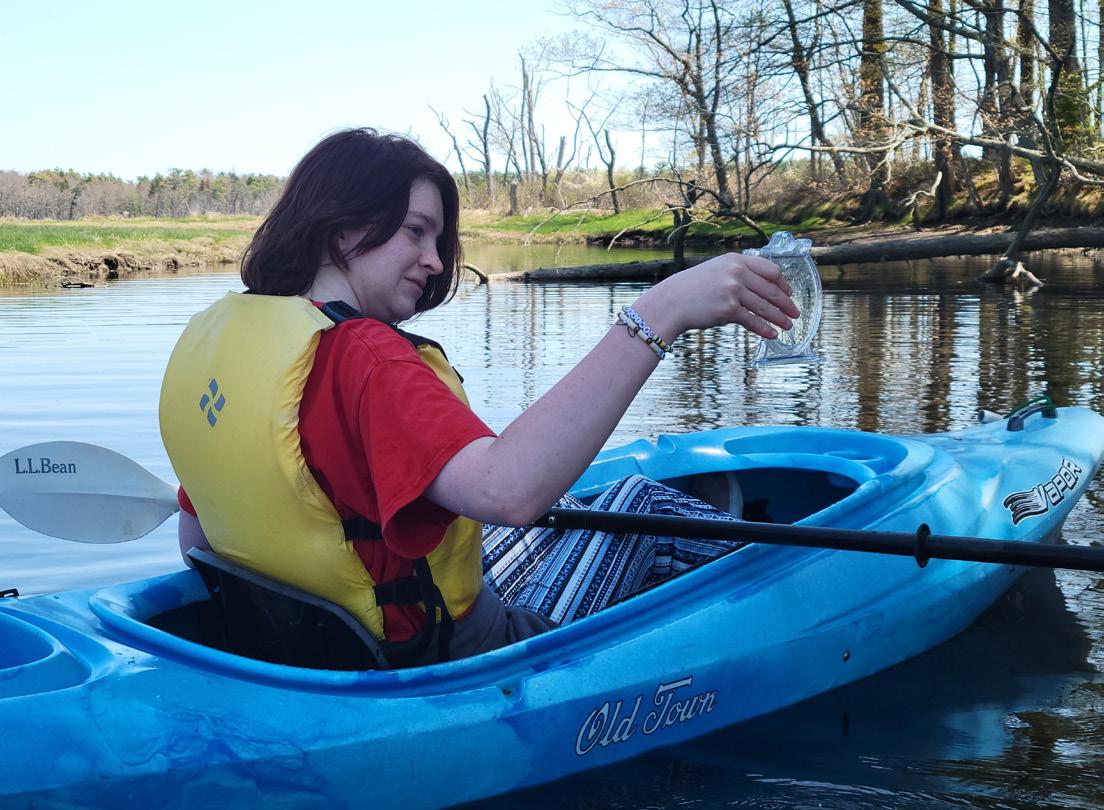
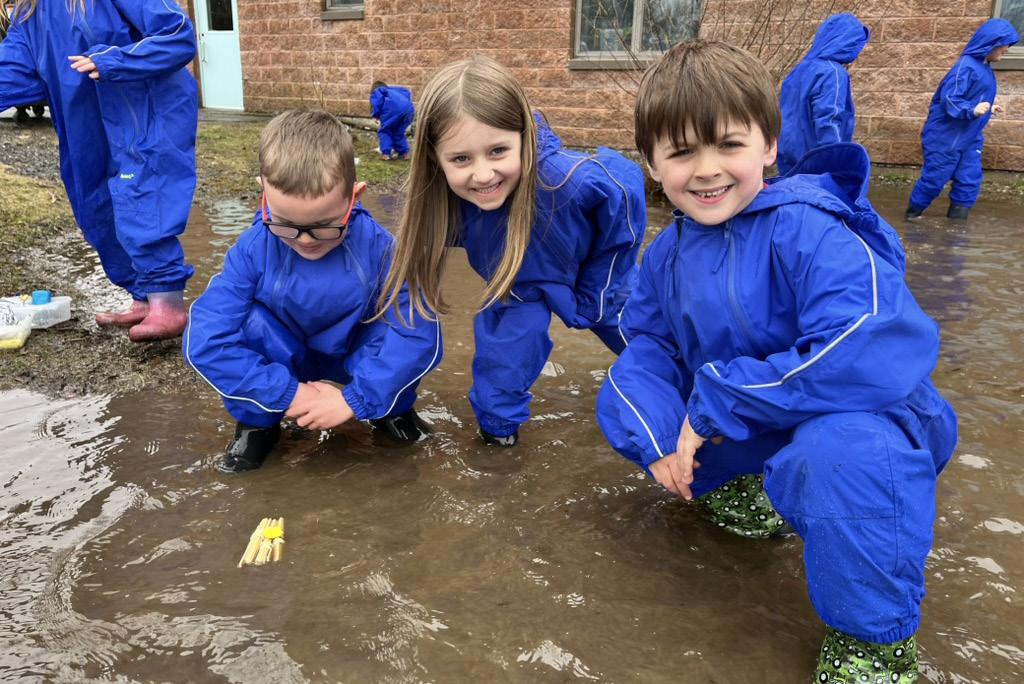

Clockwise from top left: Westbrook Middle School, Union Elementary School, Sacopee Valley High School, Sanford High School.
Art Outdoors
AMANDA C. ROWE ELEMENTARY SCHOOL
Leigha Hart
This was an important year for the Environmental Literacy Program at Rowe, as it was the first official year of this special in every students’ schedule. The curriculum taught was a wide range of topics, from environmental stewardship to flora and fauna explorations to Wabanaki Studies outdoor lessons focused on phenology. This grant allowed for me to use art and creativity to expand the ecology lessons in a way that reached more students. The added creativity also made the material more meaningful, asking students to engage more deeply with what we were learning. The supplies purchased for art projects and creative projects, challenged students to use their knowledge of the topic at hand as well as their imagination. It seems simple, but with MEEA funds I was able to purchase colored pencils, crayons, erasers, pastels, pencil sharpeners and paint pens for students to use on a regular basis. The grant also allowed me to purchase baskets for each table in which to keep these items. Building a program like this takes resources of energy, time and especially materials. The format of a specials schedule means that each week, around 450 students come into the Environmental Literacy classroom and use these creative tools.
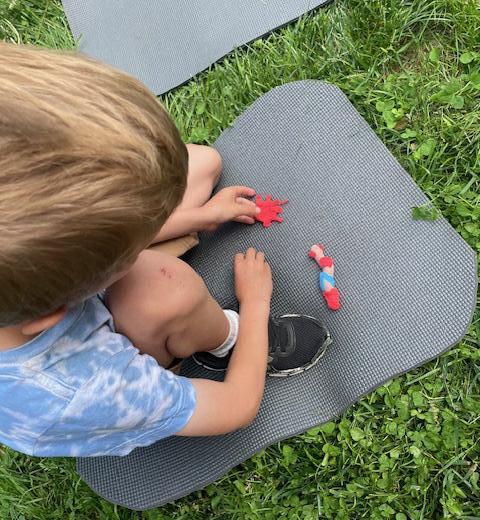
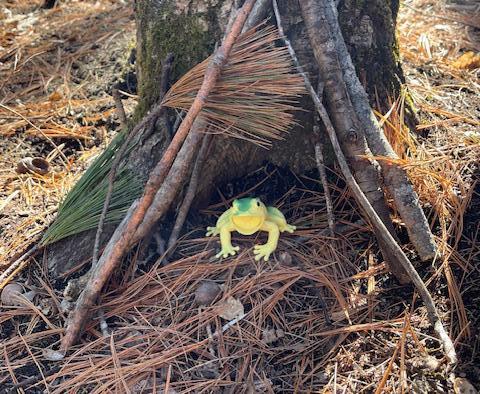
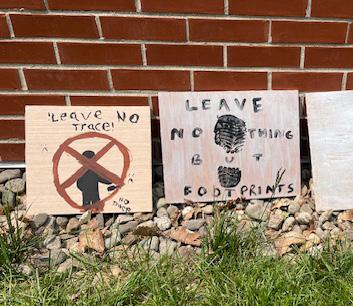
The most popular craft of the year, funded by MEEA, was the project in which students created their own insect. We sat in a circle outside after learning about the characteristics of insects and students let their imagination flow. Another favorite moments of the year was the 5th graders painting Leave No Trace signs that will be put up in the woods next to school as a reminder to students as well as the public to pick up trash and leave nothing but footprints. Thank you MEEA for helping fund this program and support it’s success long term!
Art Outdoors
CRESCENT PARK / WOODSTOCK ELEMENTARY
Ashley Oliver-Broderick
This outdoor art space has provided students with the opportunity to explore materials independently. The provocations in this space encourage students to explore and experiment with materials that are not always available to them in the traditional art room. Students are able to use this space to collaborate, to creatively problem solve, and to have a quiet space that allows them to express their ideas.
Having the opportunity to create a space like this for my students has allowed them to find new ways of creating art in a new setting. It has encouraged students to find independence and has given them the opportunity to have a space they can make their own. Students are given the chance to step up as leaders, by taking ownership of this space they are responsible for its continued success.
I have been able to see students eager to get out to recess to use this space. They are excited to have a unique studio that allows them to utilize their recess time a creative way. To see students taking their knowledge and excitement for art outside into a new setting brings so much joy as the art teacher. I see this an opportunity to engage the elementary school communities in a new way. We are excited to have this opportunity and continue to grow the space for years to come.
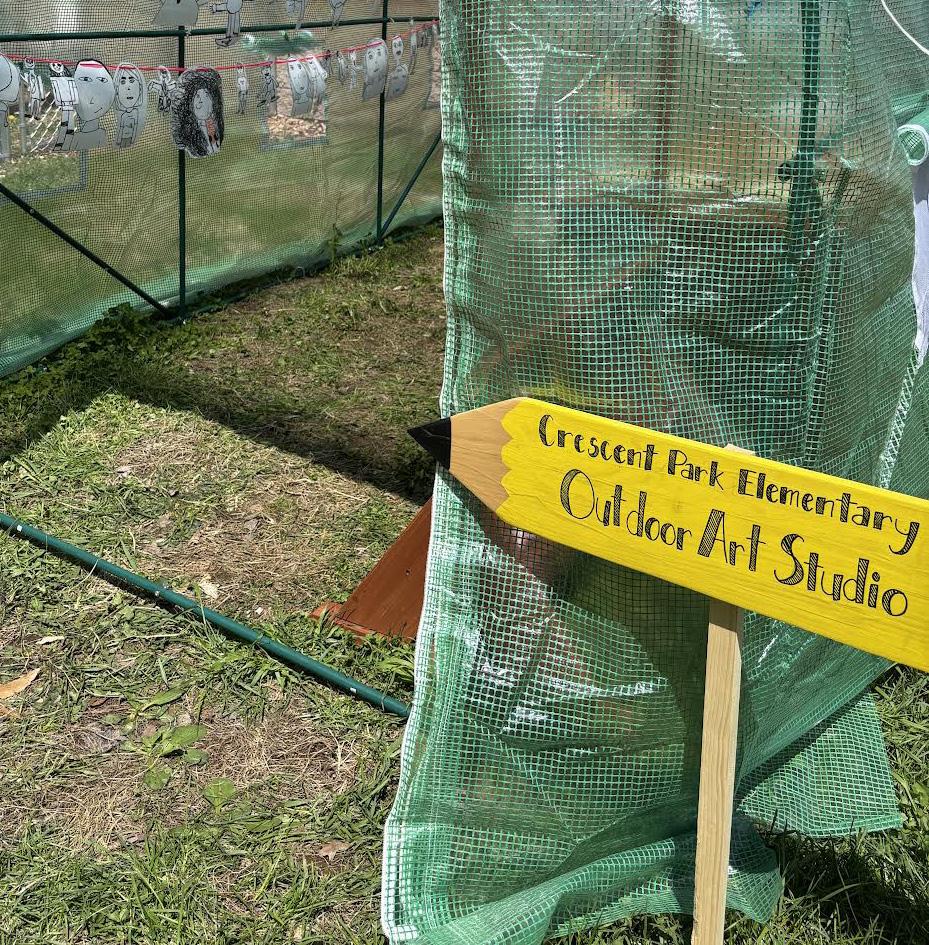
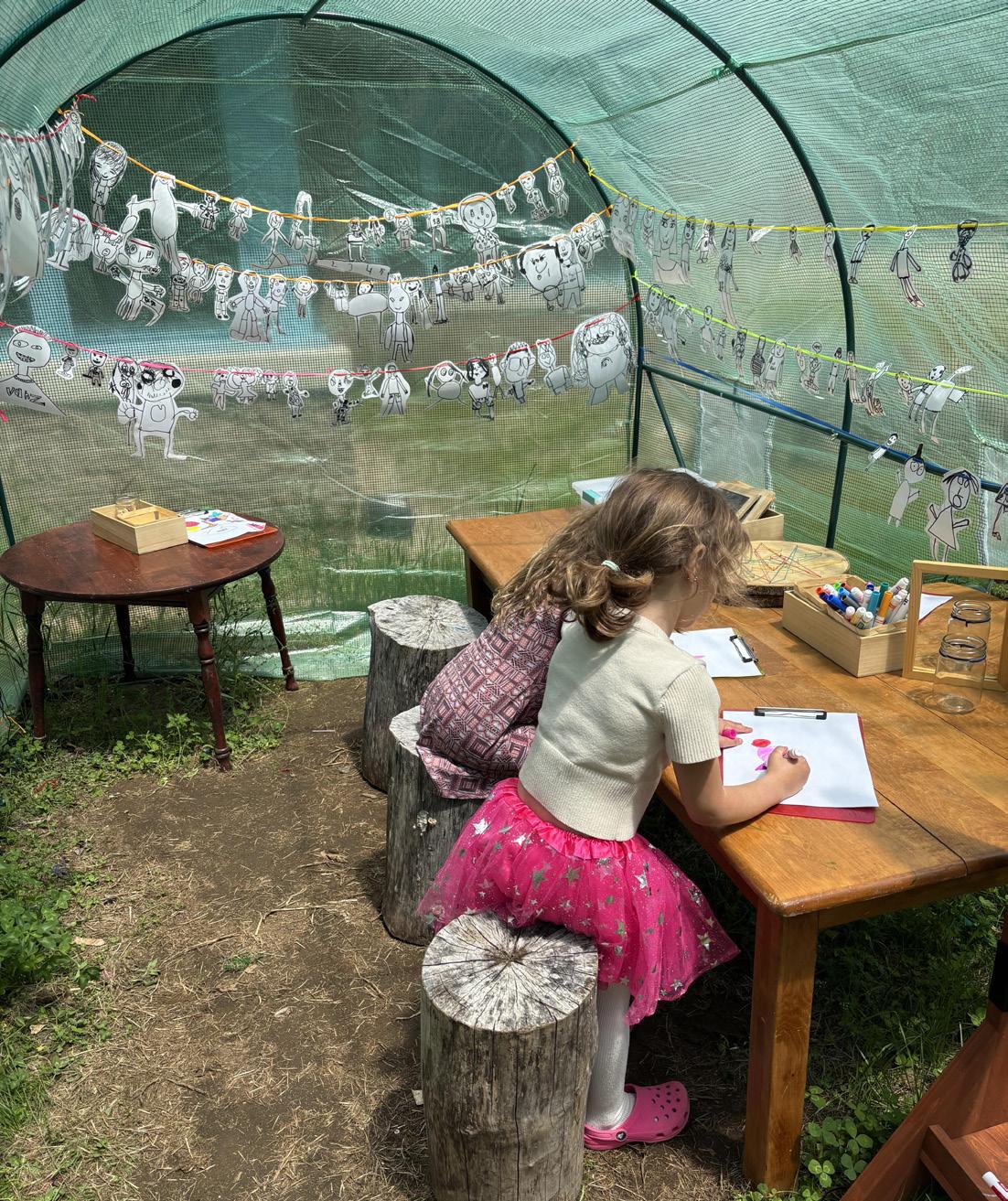
Students have said this about their new outdoor art studio:
“Sometimes when I am feeling alone, or upset I can go in there and use that space to have a little break” - 2nd grader
“I like going in there because it makes everything quiet, and I can draw, and I love to draw” - 3rd grader
Art Outdoors
HAMPDEN ACADEMY
Adele Drake
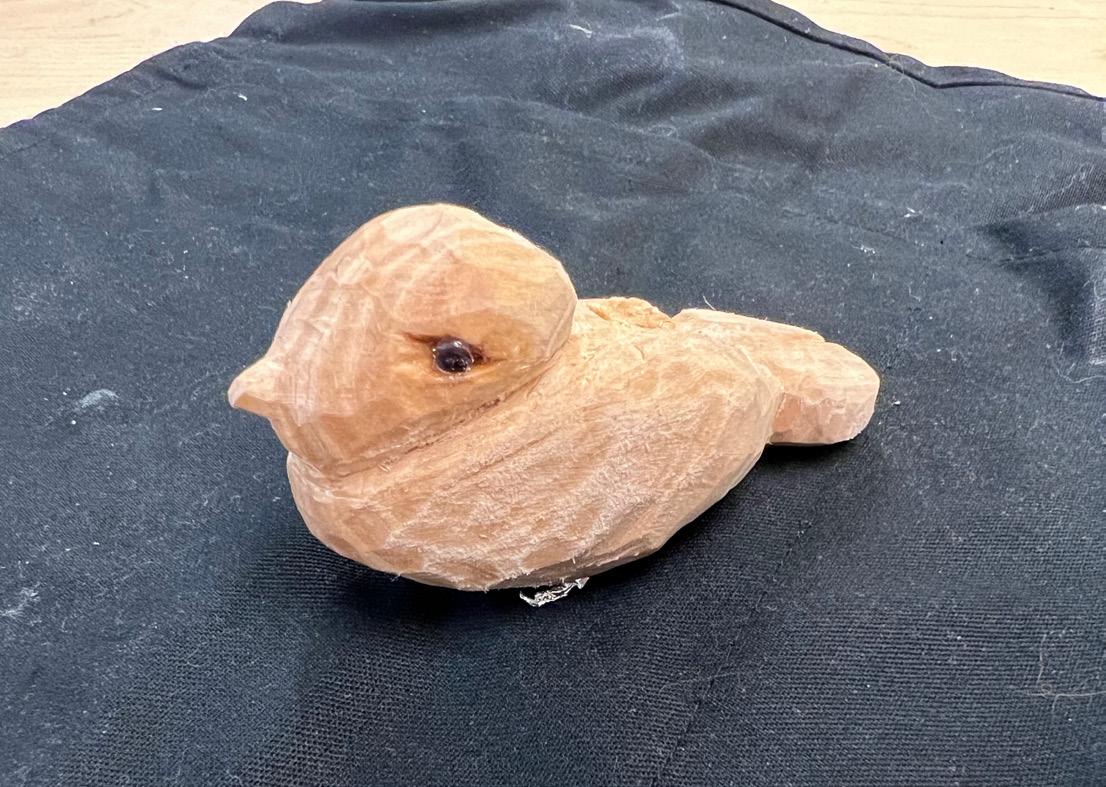
At Hampden Academy, high school art students engaged in an interdisciplinary project combining sculpture, environmental studies, and Indigenous knowledge. Rooted in the teachings of Robin Wall Kimmerer and Wabanaki cultural values, the project invited students to see the natural world not as a resource, but as a relative—to observe, reflect, and create with care and reciprocity.
The class by studyied traditional Wabanaki ash basketmaking and the cultural significance of the black ash tree. Students learned how the invasive emerald ash borer is threatening this tree and the basketmaking traditions connected to it. This provided powerful context for their wood carving.
Students chose to carve from wood into a bird or a spoon. As one student wrote, “The purpose of this lesson was not just to learn how to carve, but to understand our deeper connection to nature and the materials we use. Through carving a spoon, I was encouraged to slow down and appreciate the wood— not as a lifeless material, but as something that came from a living tree. I learned patience and intention, especially when I realized that rushing the process could damage the wood or the design.”
Project funds were used to purchase balsa wood, carving tools, gloves, and safety equipment to ensure all students could participate safely and thoughtfully. As they shaped their birds by hand, students gained not just technical skills, but a sense of ecological awareness and cultural respect.
Art teacher Adele Drake shared, “This wasn’t just about shaping wood—it was about shaping relationships.”
OXFORD HILLS
COMPREHENSIVE HIGH SCHOOL
Shellie Leger
Mr. Bickford and Mr. Crockett, gave me permission to organize an after school club whose charter was to create a student-led literary journal. Since convening a student editorial staff of 10 students, we have published two magazines with a small start-up grant of $1,000 from the Maine Environmental Education Association. This project was the result of having attended the Ecology School at River Bend Farm in Saco. At this wonderful week-end long workshop, we were asked to think of creative ways to embrace climate, justice and equity in our curriculum. We decided that since we were not in a stem class, but in the English department, we would start a literary journal, the focus of which was informed by stewardship of our shared lands.
The learning outcomes were largely organized around the ELA standards, such as reading, writing, and speaking and listening. Additionally, students were able to converse about best practices regarding protecting mother earth. What we did not expect, but were thrilled to discover, is that we watched disenfranchised students who were experiencing isolation, and some anxiety, blossom and thrive as they built culture with other like-minded students. Of note, we also built culture with several ecologically driven 501c3s in our local area, especially Mclaughlin Gardens.
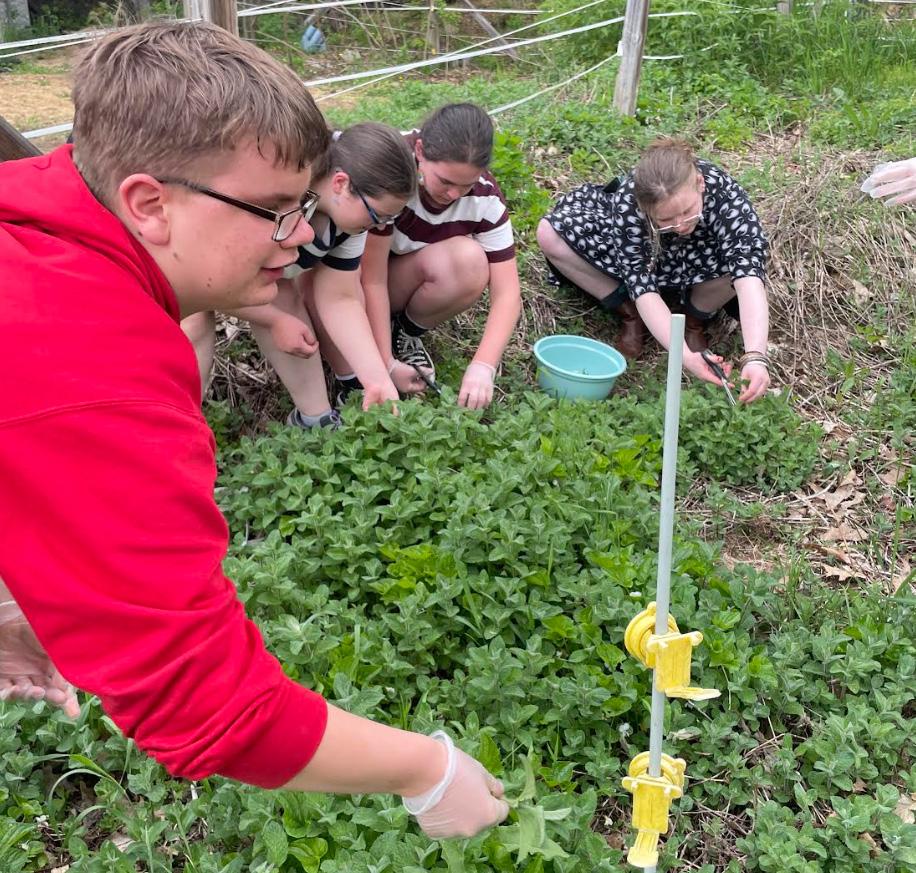
UPPER KENNEBEC VALLEY JR./SR. HIGH SCHOOL
Isaac Davis
Students were tasked with the goal of building bird houses, bat houses, and a brooder box for raising chickens. The objective of these three major projects was to inspire a sense of sustainability. We want our students to understand that our wilderness and the wildlife therein need all the help that we can provide in an effort to counter the human impact on our local environment. The other goal of the school is to educate students on how we may all reduce our impact by making the most of the land that we have. We can do this by growing our own gardens and raising our own livestock. In this case, not only do the school students maintain a greenhouse and garden, but, with the help of the MEEA, students were able to learn the ins and outs of raising chickens.
It is the goal of our school to provide a multi-faceted education where teachers are able to collaborate and, at times, combine classes for a more well-rounded delivery of the curriculum. These projects were able to bring together the outdoor education class, the agricultural studies class, the science classes, and the wildlife studies class in a combined effort to show students what they are capable of doing for themselves and for their community.
Along with learning how to give back, students also had the benefit of learning how to operate common tools and equipment utilized in the assembly of these homes. This knowledge will help students become more independent and confident in their abilities as they grow and learn.
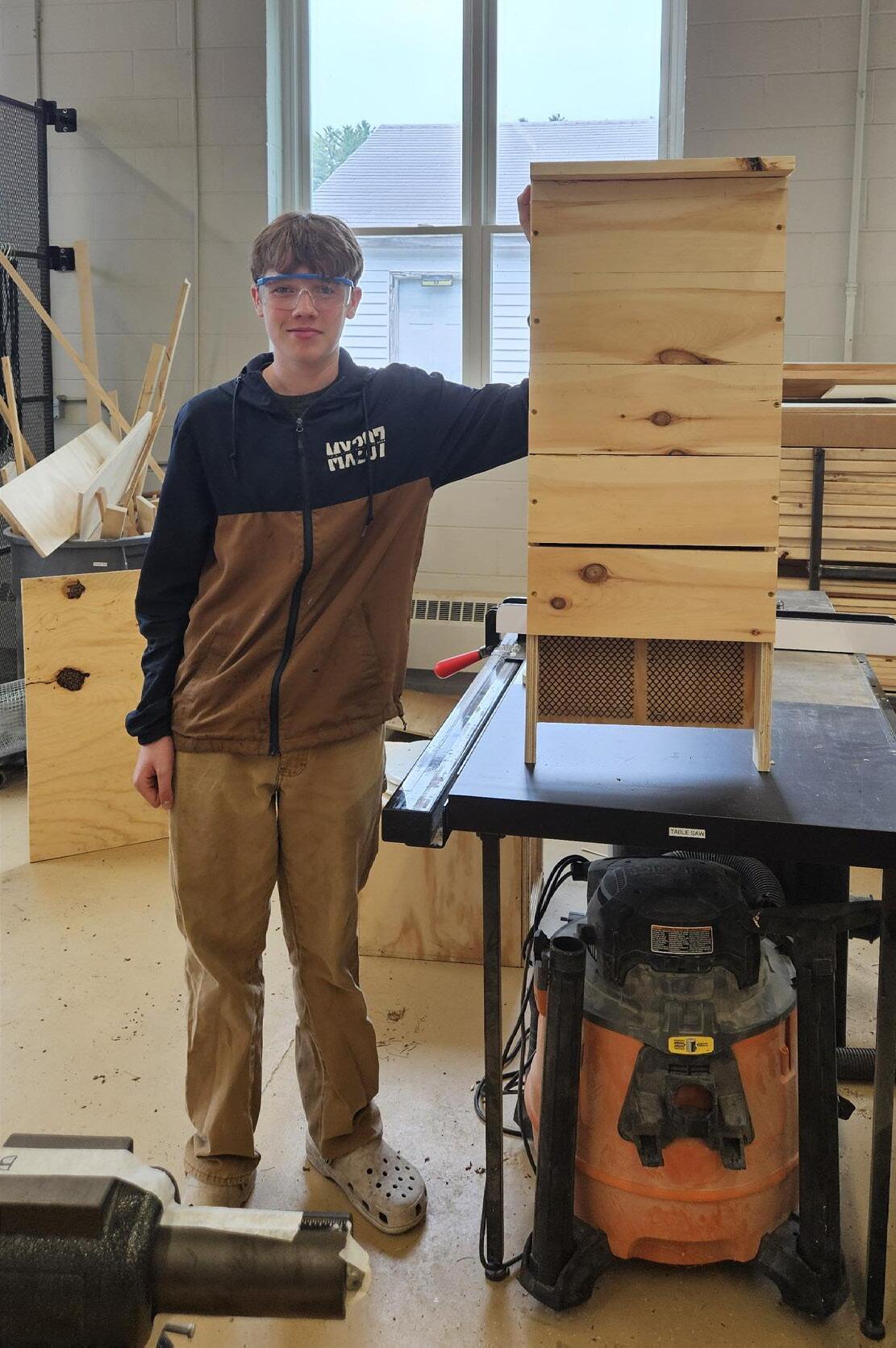
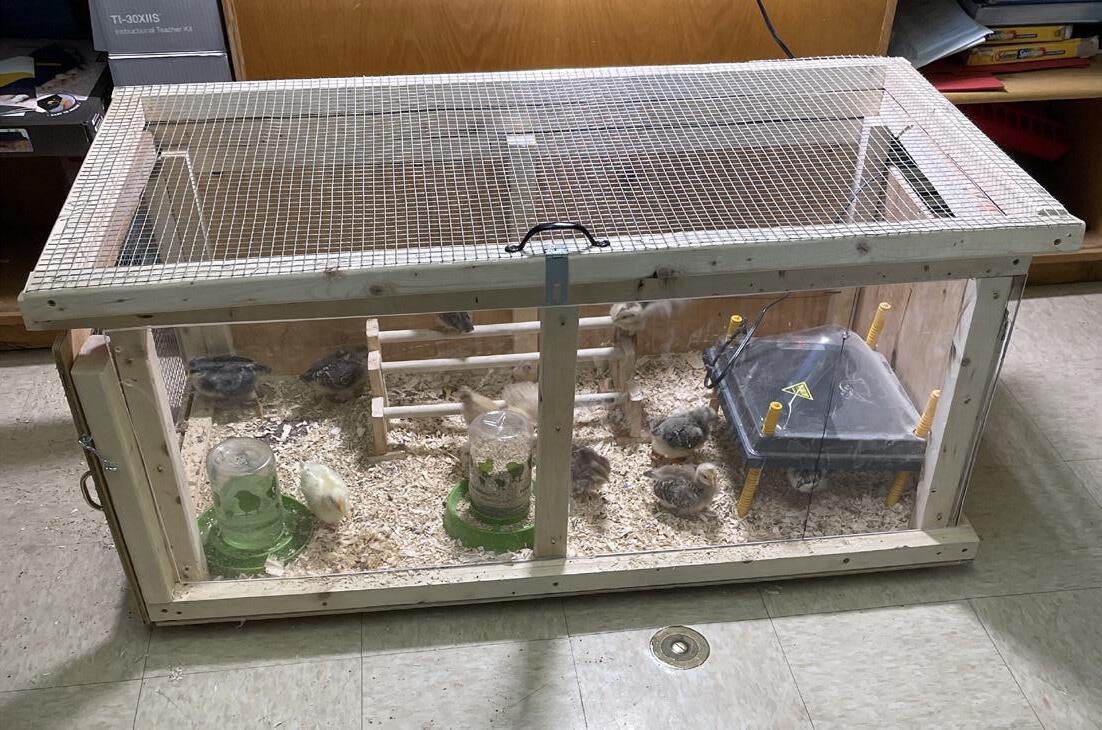
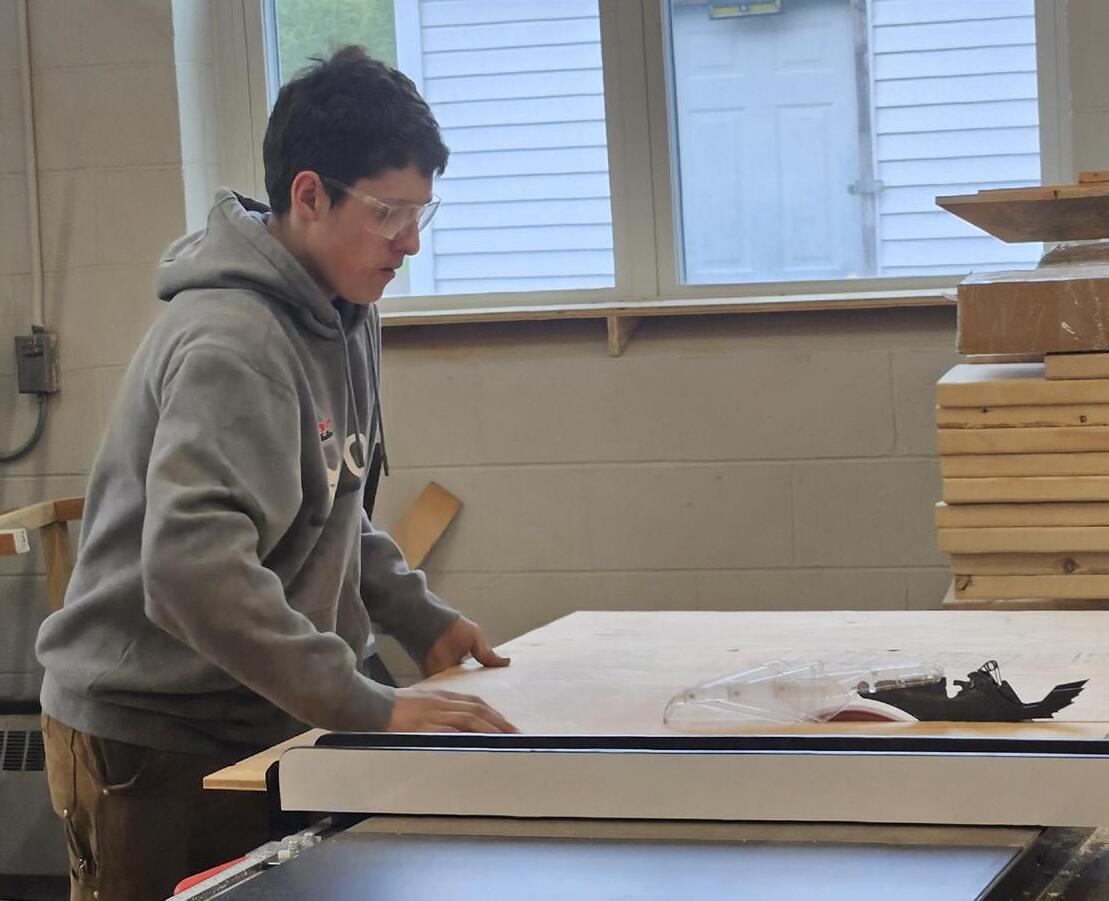
Curriculum & Professional Development
CAMDEN HILLS REGIONAL HIGH SCHOOL
Christelle McKee
Thanks to the support of this grant, students in my French 2 classroom embarked on a unique and unforgettable reading journey centered around nature and the environment—all en français! I used the funding to purchase a variety of Frenchlanguage novels and nonfiction books with ecological themes, including topics such as sea turtles, honey production, jungles, and volcanoes. Every student had their own book, chosen based on their interests and reading level, which they read over the course of a multi-week unit.
What truly brought this project to life was our decision to read outdoors whenever the weather allowed. Sitting under the trees with a book in hand, students often commented that it didn’t feel like school—it felt like an adventure. One student said, “It’s interesting seeing this we learn in class show up in a real book. This is the first book I’ve ever read in another language—and I actually looked forward to the days we got to read.” That same student later shared their book report with pride, describing in French how sea turtles return to the same beach to lay their eggs.
This unit quickly became a favorite. Students were deeply engaged, not only improving their French reading comprehension but also learning about the natural world in a new context. Several students asked if they could keep their books or borrow others in the series—proof that this project ignited a genuine interest in both French and environmental themes.
Without this grant, these rich, authentic texts would have been out of reach. The project exposed my students to new vocabulary and real-world topics—all while cultivating a love of reading. The joy and pride my students showed, both while reading and presenting their book reports, made it clear: this wasn’t just a unit—it was a meaningful experience they’ll remember for years to come.
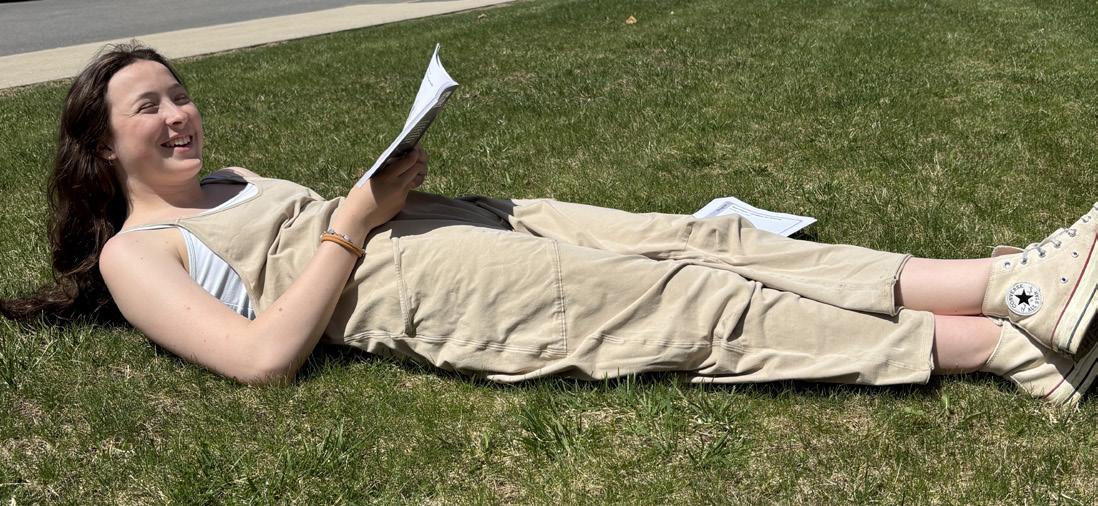
ELM STREET SCHOOL
Nichole Bryant

The mission of The G.E.O. (Get Everyone Outside) Initiative at Elm Street School (a subgroup of RSU 16’s G.E.O. Initiative) is to support educators, wherever they are, in getting their students outside to learn. In fall 2024, cofounder Jessica Harvey (2nd grade) attended Teach ME Outside’s “Building a Culture of Teaching Outside Workshop” and was eager to complete the five “gatherings” outlined in the Educator’s Guidebook. Harvey, Nichole Bryant (PreK), Victoria Kelley (3rd grade), Sophia Stone (2nd grade), and Becky Albert (K) agreed to meet regularly to advance outdoor learning at their school, following the gatherings outlined in the guidebook. Harvey and Bryant worked together to apply for a MEEA mini-grant to be able to offer stipends to their team for this work. Since the beginning of the 2024-2025 school year, the group has met to complete the gatherings along with other work connected to building a culture of outdoor learning at their school.
Considering the impact of having a mini-grant for stipends, Harvey says, “Teachers work long hours outside of their contracts, and much of that work goes unpaid. Being able to pay teachers for doing this work sends the message that this work is important and teachers should be paid for it.”
Bryant adds, “I know all of us would do what we’ve been doing for free, but getting reimbursed for our time was exciting. I think all the gatherings were extremely motivating.”
Stone states, “We have accomplished more than I ever thought we could in one year. The grant…was a little reminder that what we are doing is valued within our district.” In a similar sentiment, Kelley adds how “being paid…only recognizes the time and energy we have invested.”
Finally, Albert shared, “...the fact that we were able to get paid made it more of a success and commitment for everyone!”
In May, Elm Street School was named the 2025 School of the Year by the Maine Environmental Education Association for their work connected to outdoor learning.
Curriculum & Professional Development
TRI-COUNTY TECHNICAL CENTER
Stephany Perkins
These funds were used for a week-long Wilderness First Aid course for 9 students in the Natural Resource Program. Students learned hands-on skills through this interactive course that included multiple scenarios for students to practice.
Natural Resource Students at Tri-County Technical Center learned how to recognize and manage emergencies in a wilderness setting including how to protect from the cold, splint fractures, stop bleeding, and more. This was an amazing hands on course with interactive scenarios thanks to our wonderful instructor Nancy Zane from North Star Adventures. Congratulations to all students for the completion of this course!

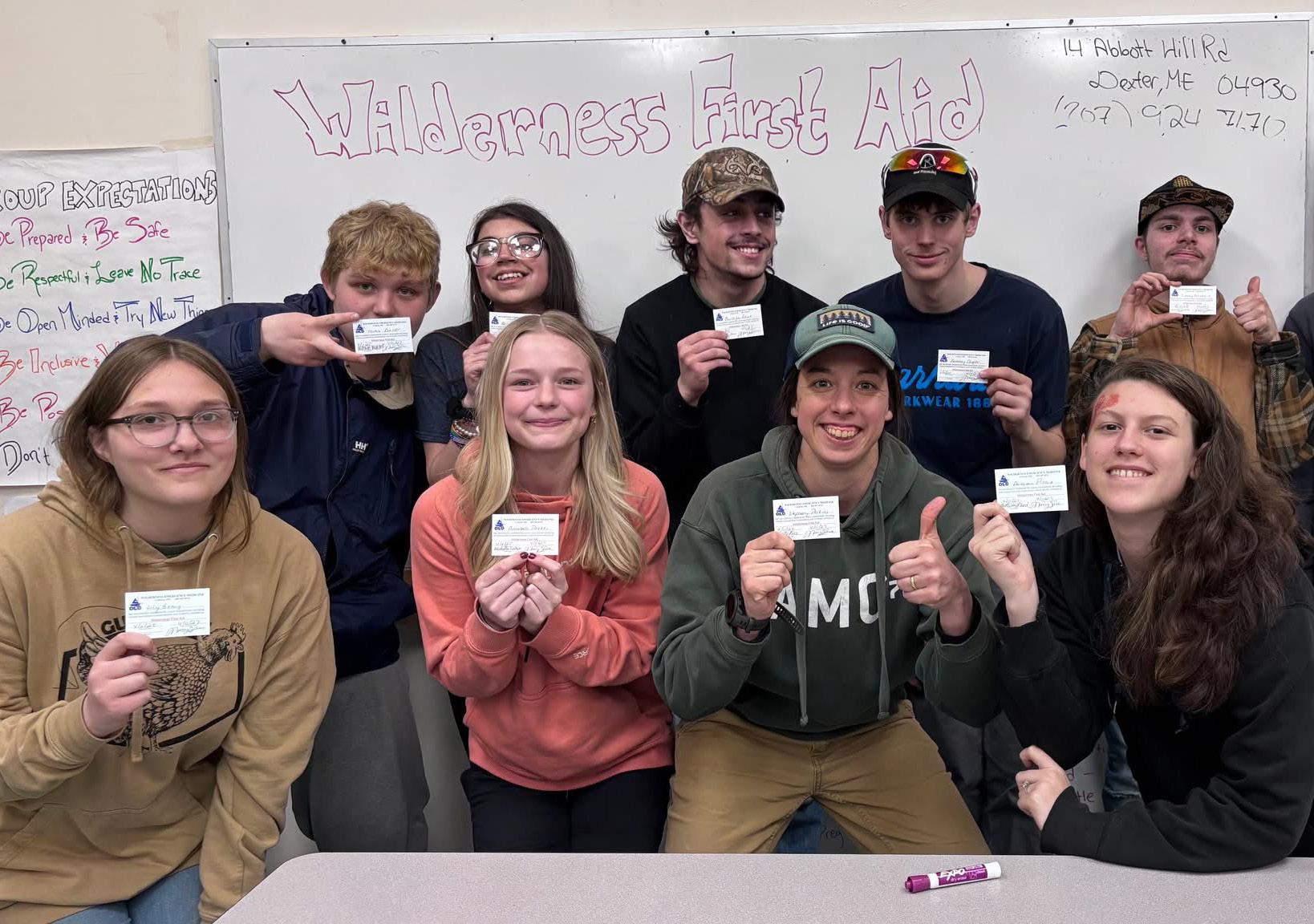
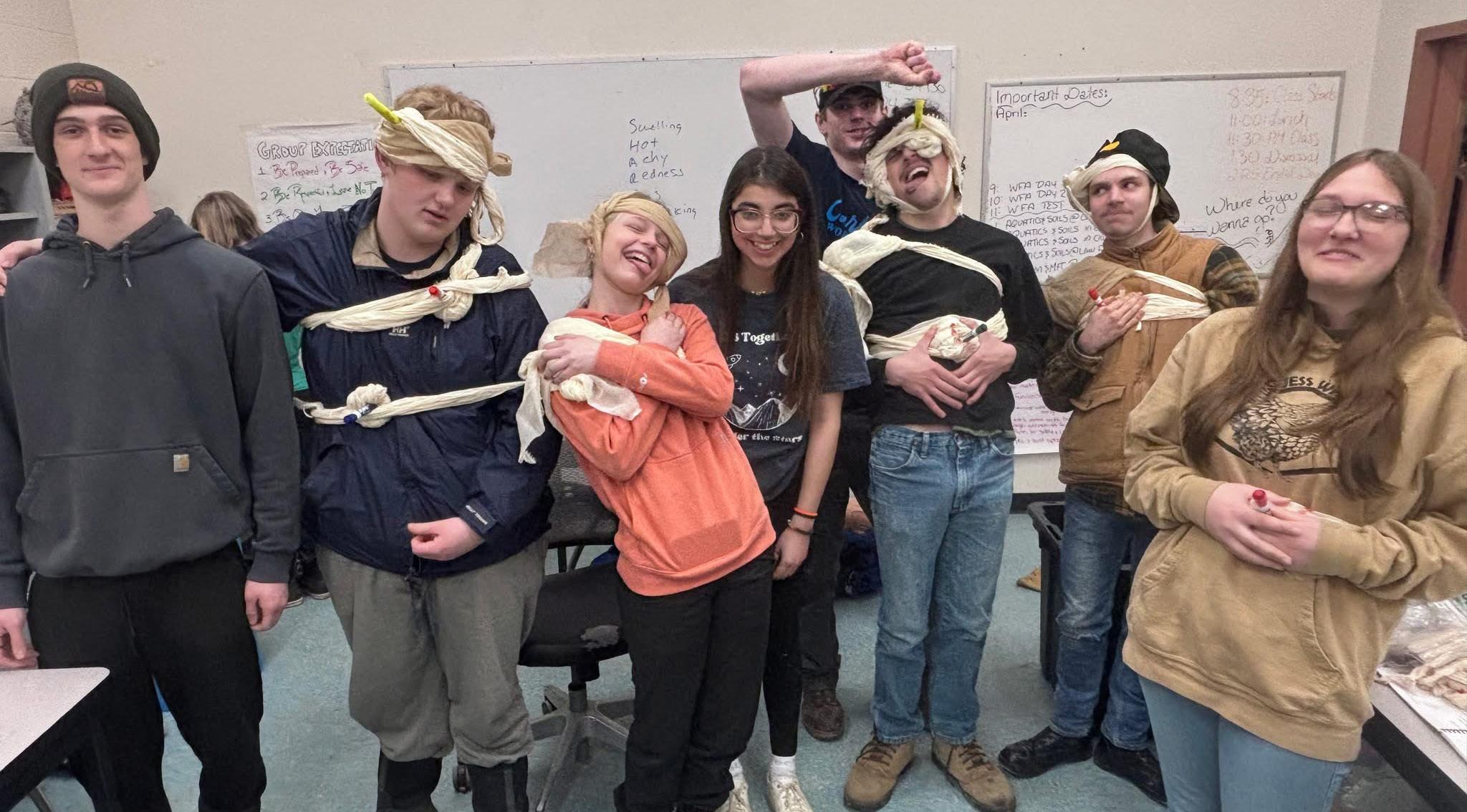
Field Trips
DEERING HIGH SCHOOL
Lucy Sommo
The MEEA grant allowed me to take 20 students to Freeport to go kayaking on Casco Bay for the first time. My high school students walked and took the city bus to meet at school on a rainy Saturday at 8am- so many came that I had to turn several away because we didn’t have enough room. Most of my students had never been kayaking before. It was wonderful to see joy on their faces as they got in their double kayaks, paddled out and explored the foggy bay. Taking time to learn outside the 4 walls of the classroom is hugely beneficial; my students practiced language, learned new skills, saw a new place and had fun.
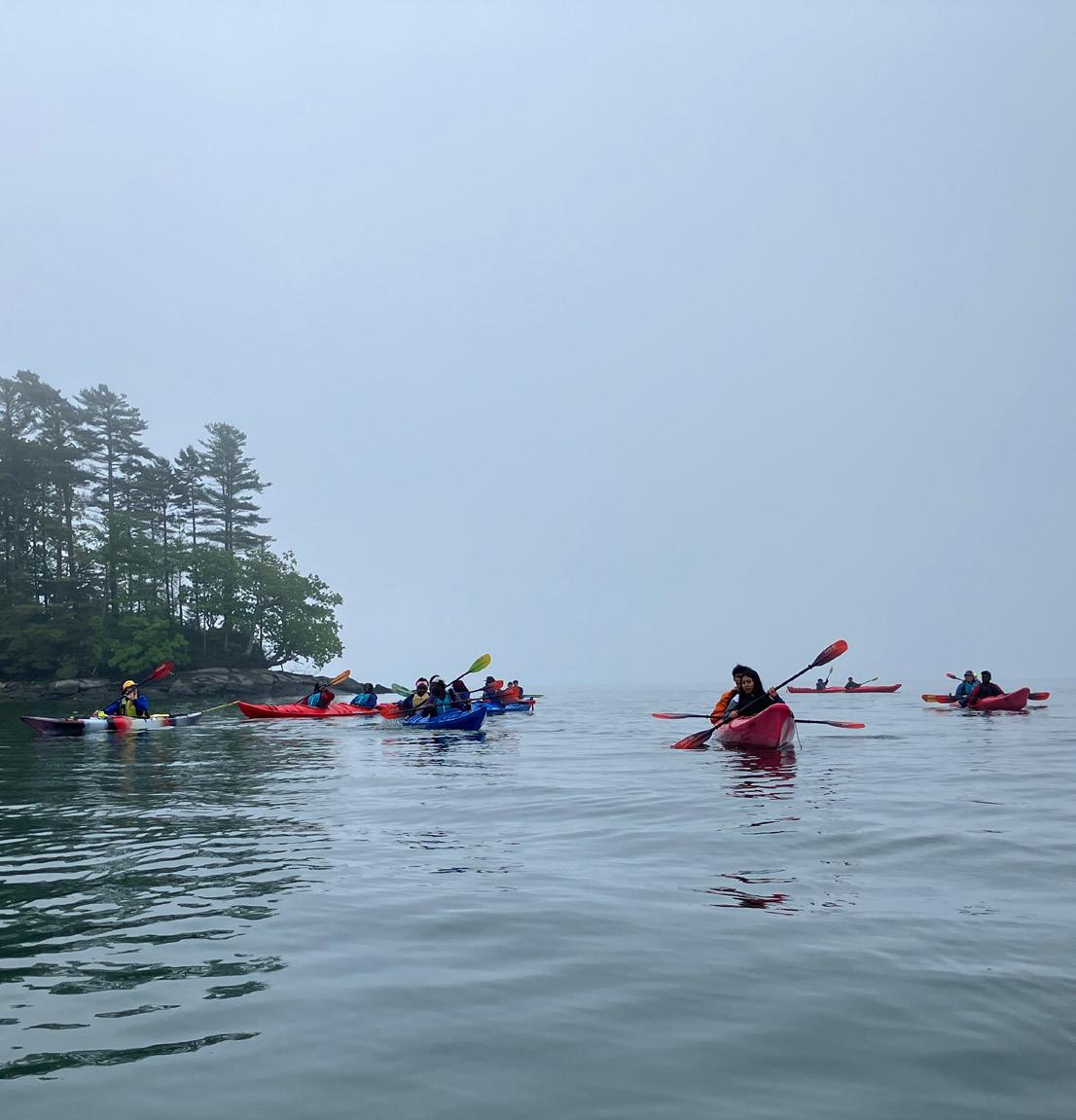
D.W. MERRIT
Sunshine Strout

Both groups discussed their comfort levels then excitedly chose to hike to the pond, curious to see what it’d look like covered in snow. During the hike students played nature fact telephone and a game called camoflauge where they replicated the behaviors of snowshoe hares - hiding from a coyote without warning where they could see the predator but it couldn’t see them. Once arriving at the pond students engaged in a sense meditation followed by scattering to sit still, silent, and alone with the viewpoint of the pond for 5-10 minutes. After, students hiked back while discussing their previous experiences of nature and what they looked forward to in spring.
A few quotes from students:
”Wow, this place is incredibly beautiful, I love how the snow looks covering the land.”
“What, really? No way!,” responding to the fact lichen is a symbiotic relationship between moss and fungi.
“Sitting there felt so peaceful, I wish we had more time.”
“I love hiking, I go all the time with my parents and in my free time. I haven’t been here though, this place is cool!”
Field Trips
FRUIT STREET
SCHOOL
Richard Fournier
Ask any of Bangor’s second grade teachers, and they’ll tell you that the recent field trip to the Rogers Farm Demonstration Garden was one of the most memorable adventures they’ve ever taken with their students.
From the moment they stepped off the bus, the students were buzzing with excitement—and not just because of the bees they were about to learn about! The day was packed with handson learning and discovery as students explored the world of plants, pollinators, and birds in the vibrant setting of the demonstration garden.
One of the biggest hits was learning about Maine’s native plant species. With sketch pads in hand, students carefully observed and illustrated the unique flowers and greenery around them. Their artwork was full of color and detail, a testament to how closely they had been paying attention. Many couldn’t wait to search for the same plants back at school or in their own #backyards—turning what began as a field trip into an ongoing exploration.
The students also got their first try at using binoculars for birdwatching. They learned to spot and identify local birds— and excitedly told their teachers that they couldn’t wait to find some of the same birds at home and point them out to their family members.
Of course, no trip to a farm would be complete without a little gardening. Wearing their garden gloves, students planted carrot seeds, carefully measuring the space between each one as they learned the basics of growing food. For many, it was their first time planting something in the soil.
Most importantly, the students brought back more than just facts—they brought home curiosity, enthusiasm, and a deeper connection to the natural world around them.
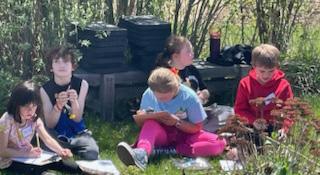
JAMES F. DOUGHTY SCHOOL
Lori Patterson
The James F. Doughty School was thrilled to collaborate with the Fields Pond Audubon Center, thanks to the support of the Maine Environmental Education Association’s 2024-2025 Mini-Grants for Outdoor Learning. This partnership focused on spring bird migration, a key part of the students’ 7th grade Maine Studies unit, and provided an immersive, hands-on learning experience for students.
Working closely with JFDS Library Media Specialist Lori Paterson and 7th grade Social Studies teacher Alyson Brown, Fields Pond Audubon Center staff guided 118 seventh grade students through an exciting field experience at the nature center. This outdoor adventure allowed students to deepen their understanding of Maine’s bird populations and their crucial role in local ecosystems.
During the field experience, students engaged in bird watching, learned to identify different species, and explored how migratory patterns influence the health of our environment. This experience also highlighted the importance of wildlife conservation and the delicate balance within Maine’s ecosystems.
We’re grateful for the collaboration with the Fields Pond Audubon Center to bring nature to life for these students, inspiring a lifelong passion for environmental stewardship.
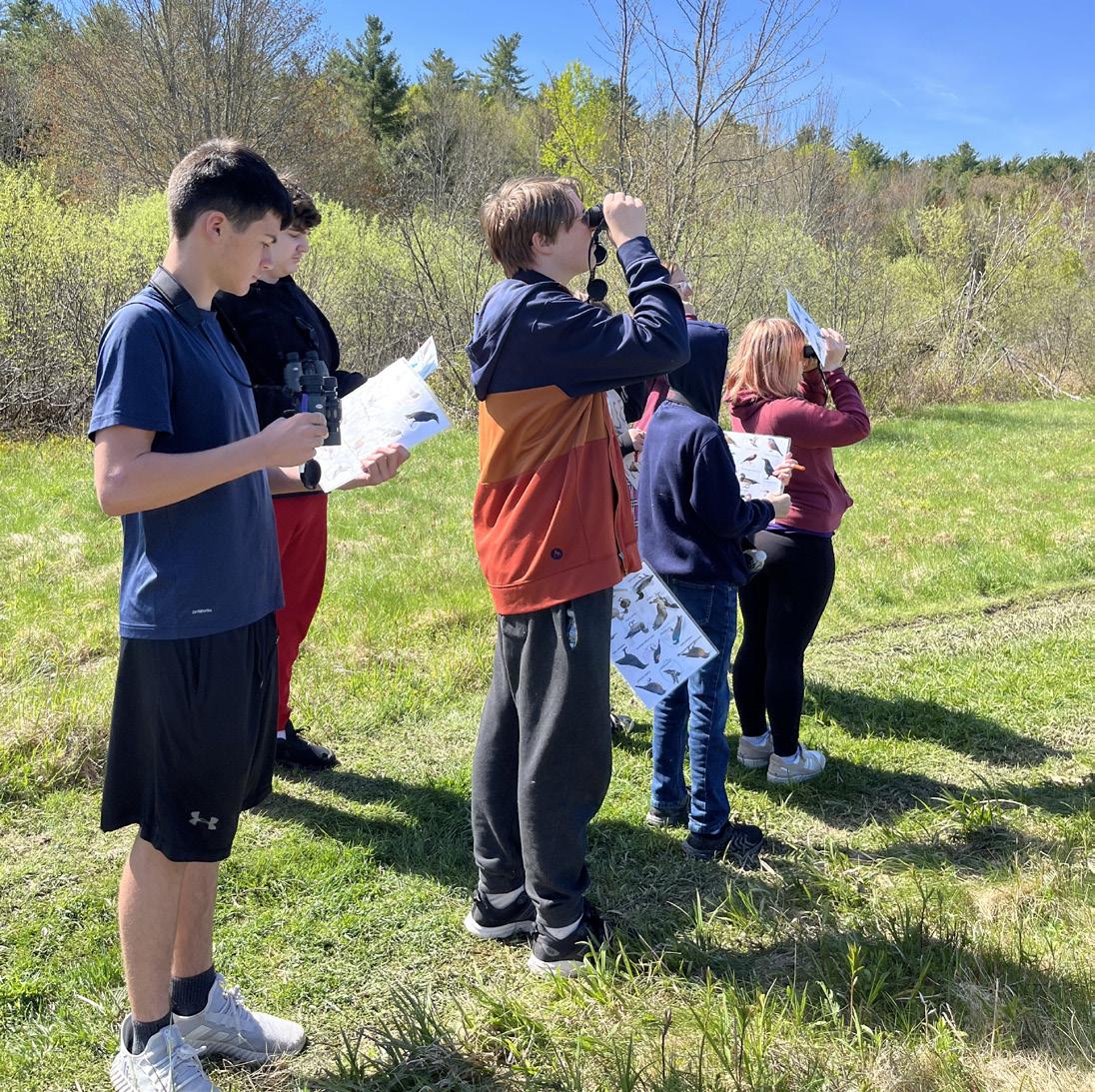
Field Trips
MAINE ACADEMY OF NATURAL SCIENCES
Jeffry Chase
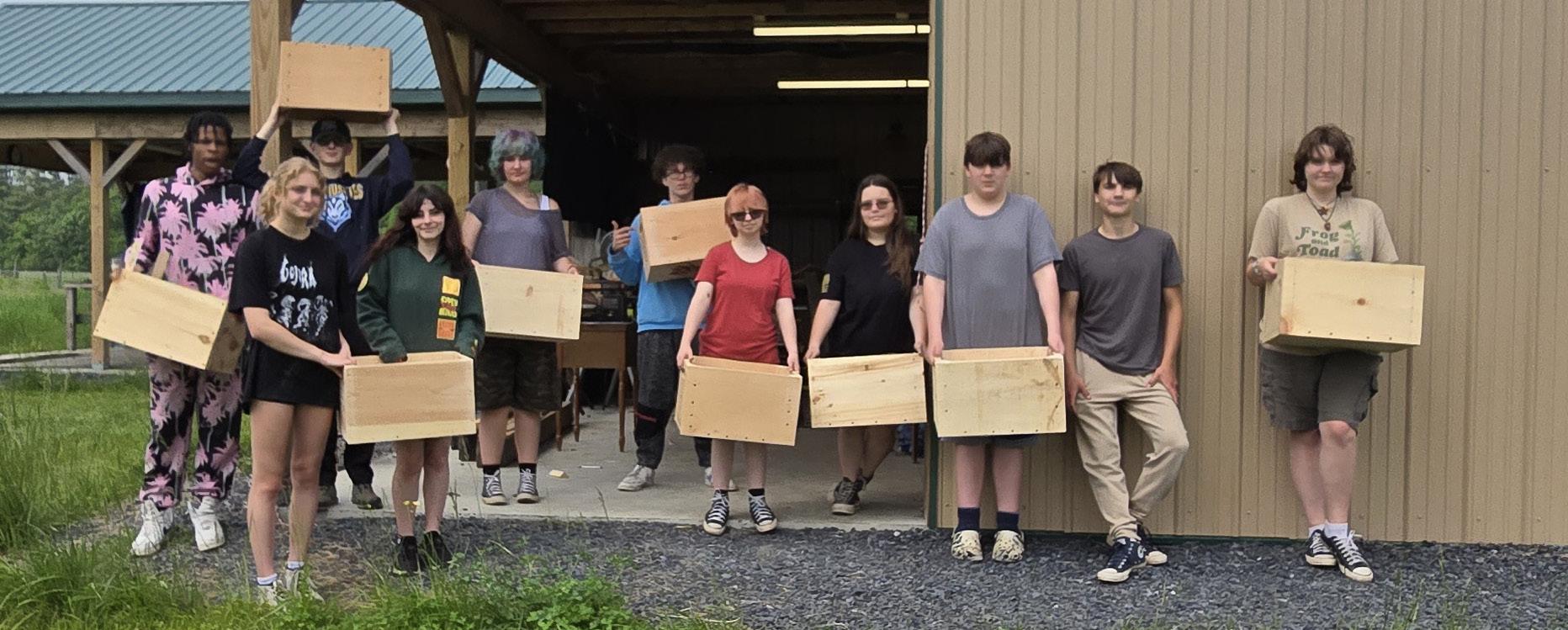
Six MeANS students were immersed in a 3 day residential learning experience at the Carpenter’s Boat Shop. The goal during this time was for our students to learn about woodworking through building apple boxes. Students worked with the Carpenter’s Boat Shop Craftsmen and learned about how to treat, cut and assemble them. Once completed, students returned to school and offered a two day workshop and taught their classmates how to build the boxes.
Below are the participants’ own testimonies of their experiences making apple boxes:
“I had a super fun time learning about different tools to use and how different types of wood can be used for certain projects. This was such a great experience and it has made me want to start doing my own woodworking projects. You really inspired me to let out my creativity and just have fun.”
- Jackson Cole
“The apple box trip was such an amazing experience. It really showed me that woodworking is funner than I had ever thought. I really enjoyed the fact they housed us on site so it was easier, and fed us as well. Everything was so good and I think that everyone should experience this, they had made everything feel so welcoming and it was very nice to connect with the people who run this program and be able to see an another option for what my future could look like.”
- Avah Lombard
Here’s what a few students had to say about their experience being taught by their classmates:
“ My apple box building experience with Ayah was great. She taught me how to build a box as best as she could and did an awesome job.”
- Kenneadi
“Building apple boxes with Jackson was interesting and I enjoyed it because I had something new to learn and experience.”
- Unique
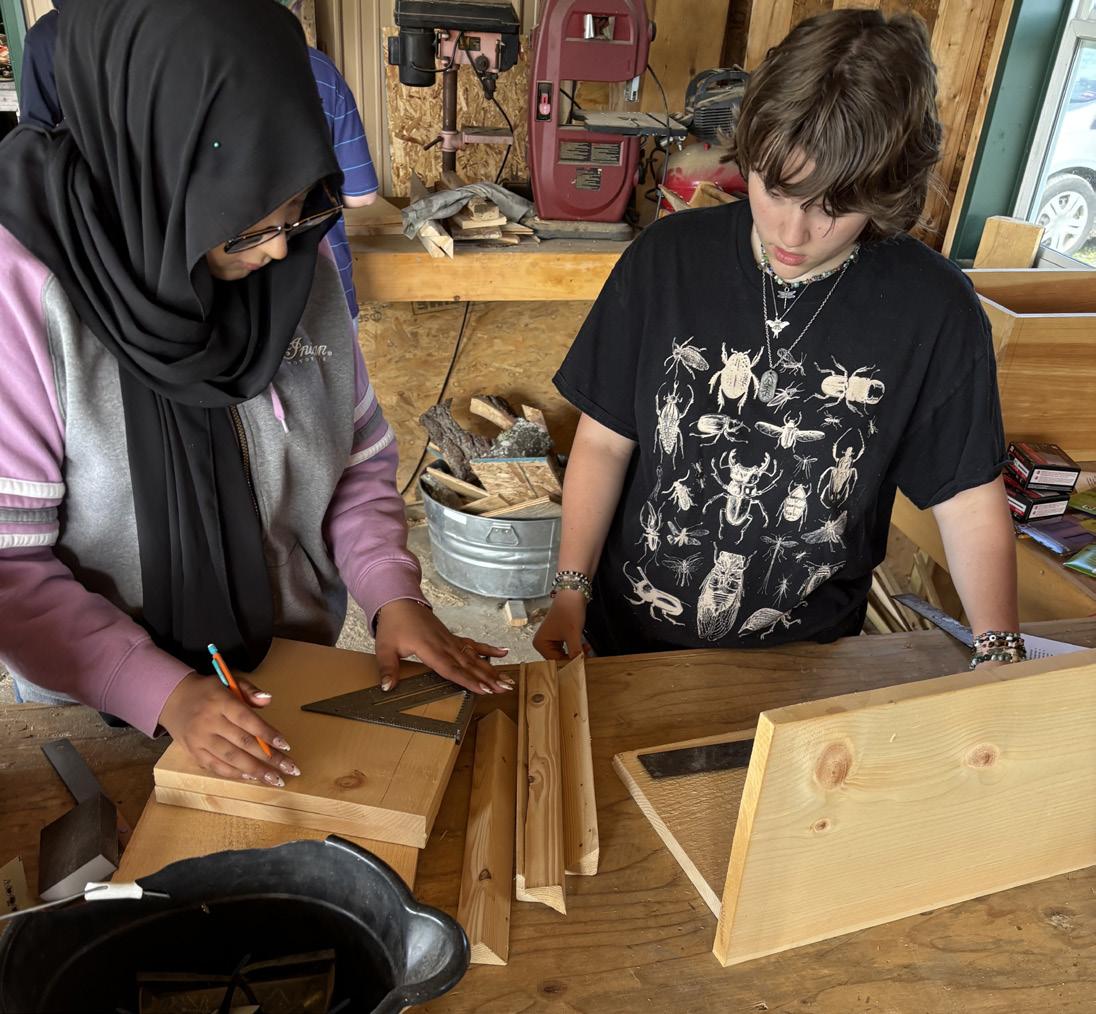
Field Trips
MESSALONSKEE MIDDLE SCHOOL
Amanda Ripa
In science, students studied the importance of seaweed through the carbon cycle and classification. We read “With a little kelp from our friends” multiple times, highlighting different topics we could dive further into. We learned about the intertidal zone and the placement of different Maine seaweeds and animals and the scientific naming system. Students named their own fish using greek roots. We also learned how cows are being fed seaweeds to reduce their methane emissions, and the use of seaweeds as fertilizers in gardens. To gain more enthusiasm, Mrs. Ripa fed students dried seaweed snacks in different flavors which were a fan favorite!
Our culminating project was a species ID card that was used at the coast during the tidal zone bingo station. When we got to Belfast City Park on May 29th, students participated in 4 stations: seaweed cyanotype prints, seaweed ID, food web frenzy tag game, and tidal zone bingo/scavenger hunt. After stations we ate lunch and had seaweed snacks including homemade ranch and miso soup both made with Maine harvested seaweed. After lunch students were able to have free time to comb the beach or play in the park. Overall it was a fabulous day spent outside with our students!
In a survey after the trip, many students expressed their gratitude for the field trip. One stated “the water was awesome and I found a new favorite beach!” Another stated “I loved it very much, thank you a lot for this field trip, it was an amazing trip.” And lastly “I loved the field trip and I had a blast!” It was a great day spent outside, searching for seaweed and enjoying the nature Maine has to offer.

NEW SUNCOOK SCHOOL
Carolyn Lewey
“What a day we had!”, Kenny, a fourth grader reports back to me as a wet and rugged group of students trudge back into the building. Our fourth grade class, along with their three teachers, had an engaging experience at Bryant Pond’s 4-H Camp, fully immersed in team building exercises, personal and group challenges and an expanded look at the natural world. Thanks to the skilled staff at Bryant Pond, our students came back energized, with new knowledge about the natural world around them and outdoor skills. The funds from this grant significantly supported our efforts to incorporate outdoor learning into our classrooms and gaining hands-on educational experiences.
“This experience addressed an immediate need and gave our students a meaningful outdoor experience that complemented our curriculum. I cannot wait to go back!”
- Kate Hutchins, 4th grade teacher
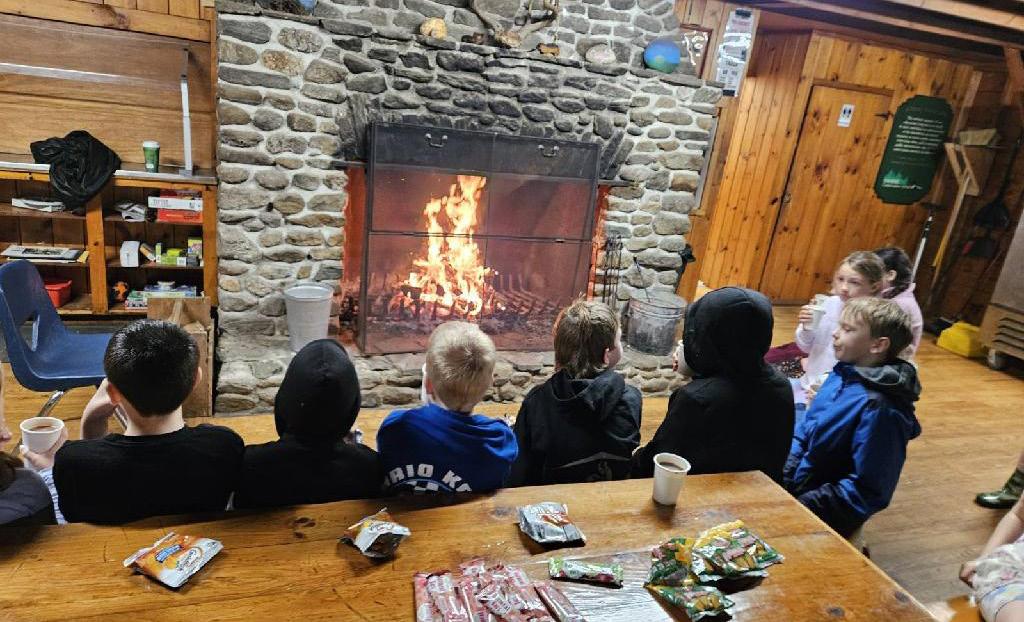

Field Trips
PLEASANT HILL SCHOOL
Jennifer Humphrey
Pleasant Hill Primary School in Scarborough, through an MEEA funded grant, partnered with The Scarborough Land Trust to develop a kindergarten field trip to extend the curriculum beyond the classroom walls, to learn about insects of the southern Maine region, local trees, and bats. Students, staff, and Trust volunteers dug into rich learning both indoors and out, delving into lessons about insect anatomy and exploring various types of local insects under magnification. They learned the parts of a tree, how to treat trees with respect, and how trees help humans by providing oxygen. Hands-on activities were a highlight, with students exploring pine cones, leaves, and cross sections of trees to count the rings. Students enjoyed learning about bats’ echolocation, and real bat pelts were a hit with the students.
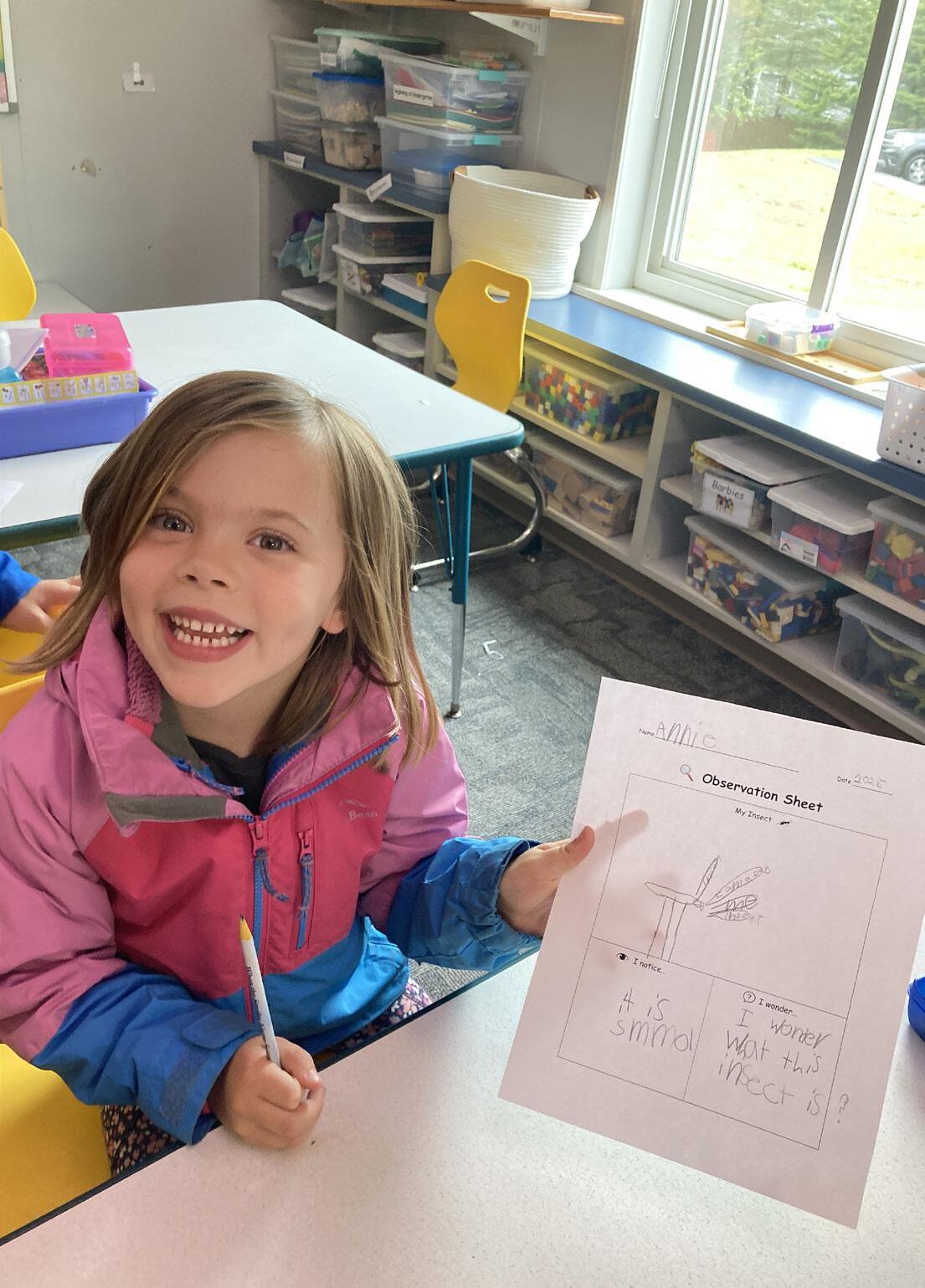
In chatting with one Kindergartener about the learning, he said that getting to see a mosquito in the magnifying box was “so cool.” He could see all the body parts more easily and could draw them. He also liked being a “bug” during the game when a classmate had to pretend to be a bat and find classmates, aka “the bugs” using “echolocation”.
The hope is for the partnership between the school and the Trust to continue for years to come, to foster in children a sense of place and an appreciation for the beauty of the Trust lands near which they are being raised.
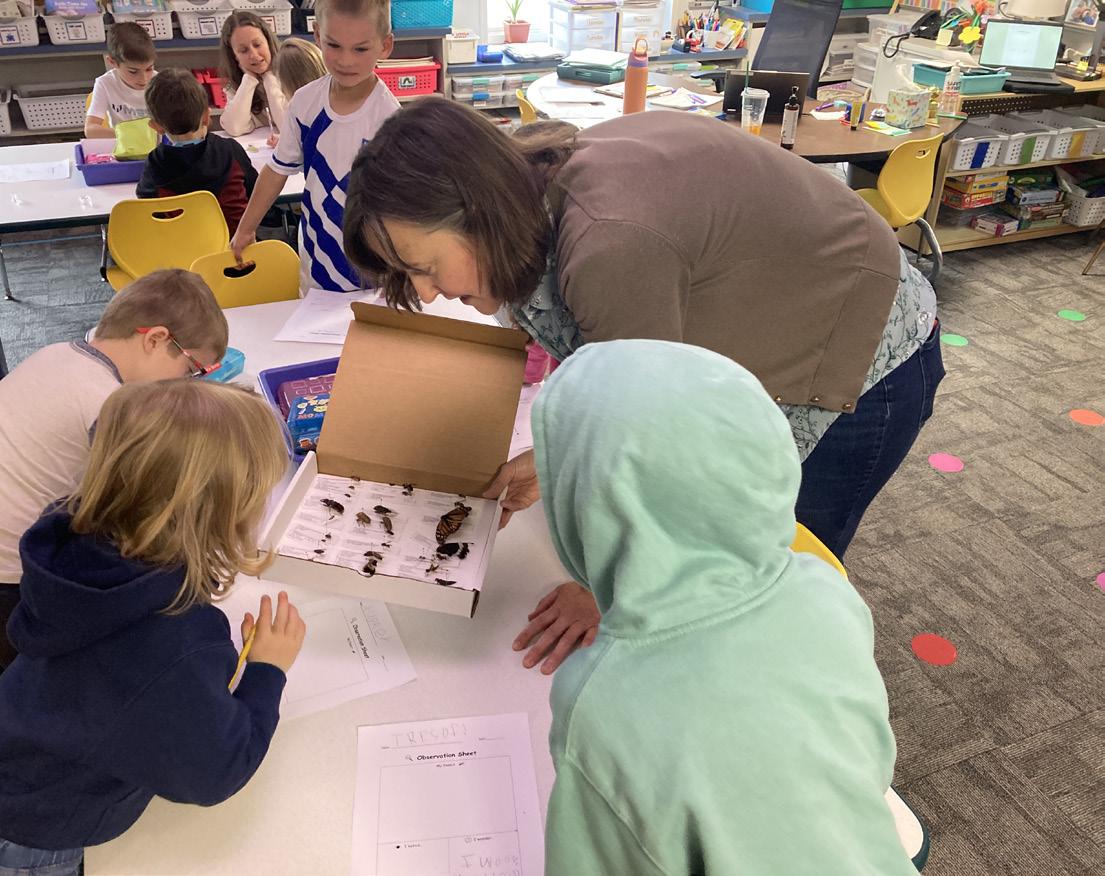
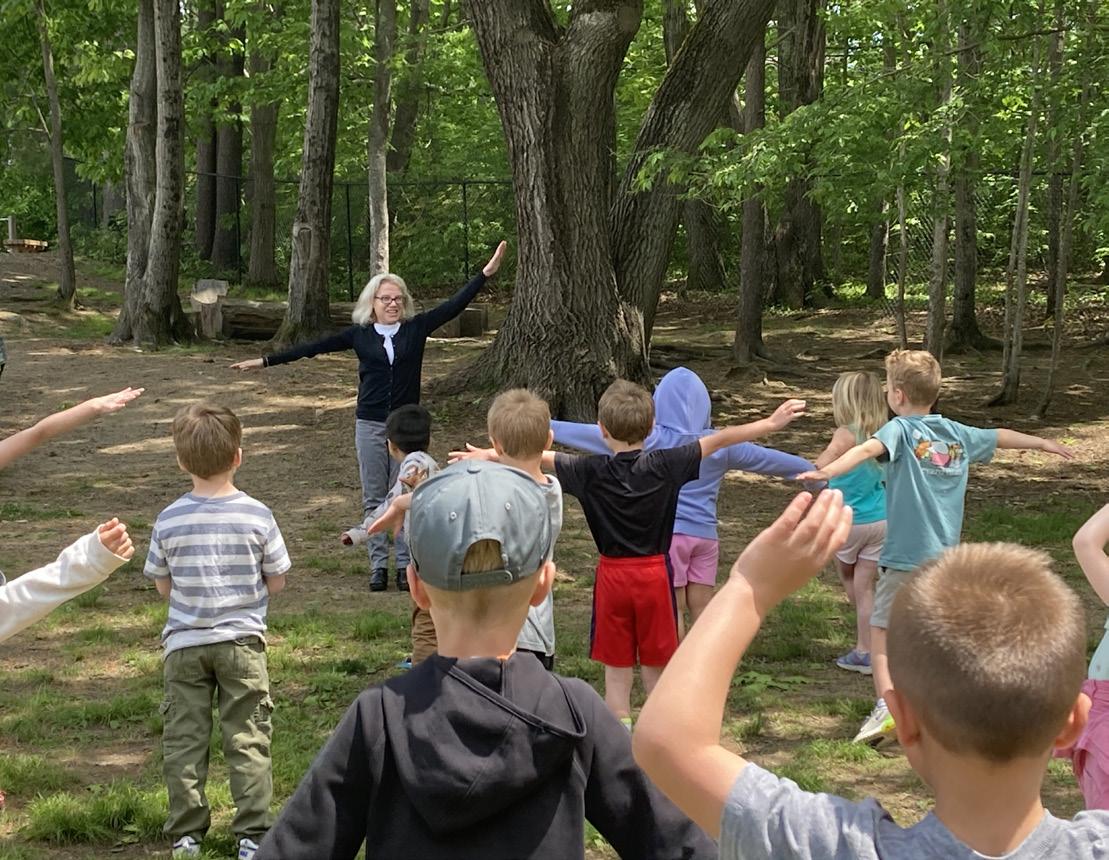
Field Trips
PORTLAND HIGH SCHOOL
Kirsten McWilliams
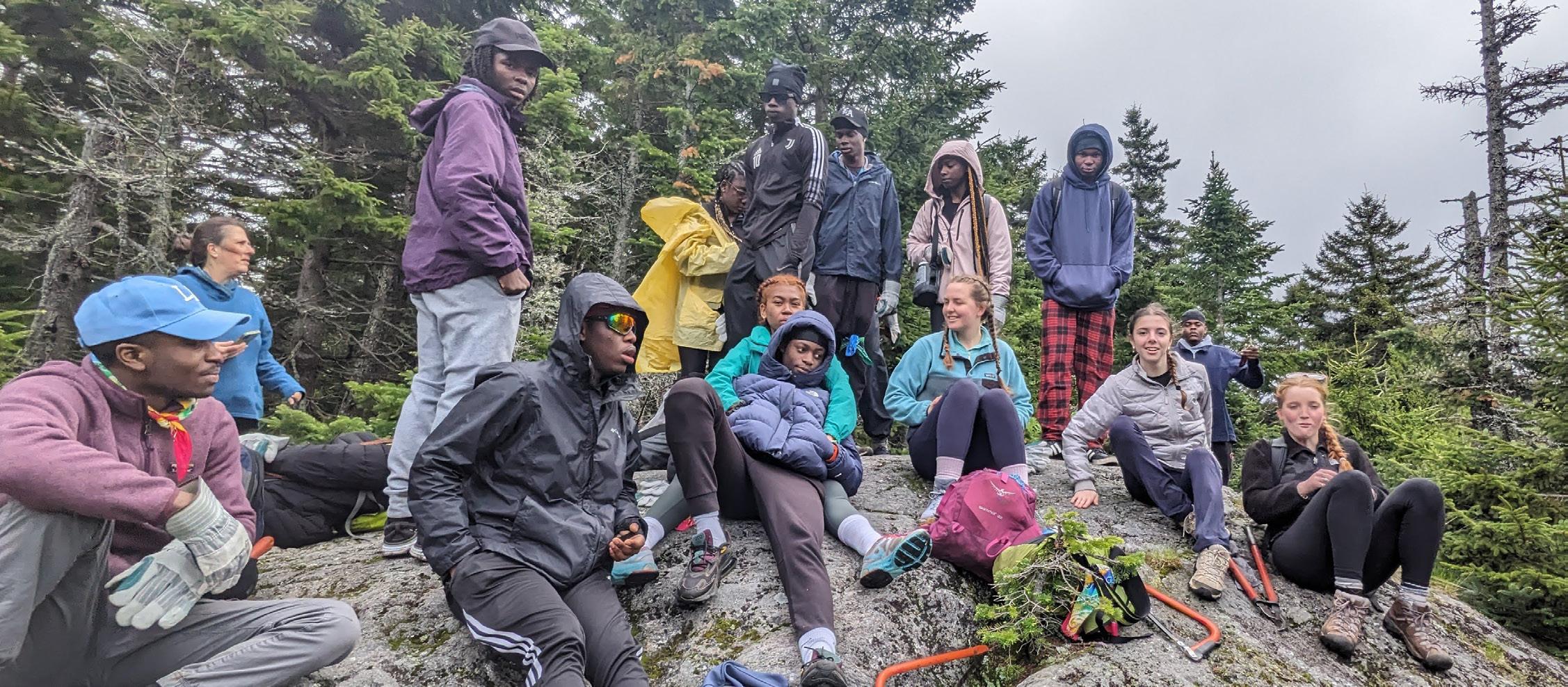
As a club operating in the middle of Portland’s urban landscape, the PHS Outing Club provides access to special outdoor experiences that the students of Portland High School would struggle to find elsewhere. On our most recent trip, students ventured to the Bigelow mountain range to do volunteer trail work with the Maine Appalachian Trail Club. The experience allowed students to learn about topics such as outdoor navigation, erosion, wildlife, trail maintenance, and nature preservation and taught them how these concepts apply to the real world. With many of our club members being New Mainers, it was crucial for them to learn these environmental concepts in a hands-on context, as many of them had not been in the Maine wilderness before. The experience not only led to a deeper understanding of nature for many of our students, but it also built their confidence and skills for facing the outdoors on their own. One student said she was scared of the woods before coming on our trip, but after seeing and learning what the wilderness was really like, she was excited to come back again sometime soon.
Earlier this year the club went for an urban hike on the Stroudwater and Fore River Trails of Portland. In planning for this hike, students were tasked with using paper maps to connect different trails for their route, determine an accessible meeting place, and estimate the time and distance of the route they had
designed. Students also learned a lot about the nature in their own backyard. One example of this is when a student observed a change in the tide when we looped back on our route; when the student asked what had happened, this sparked an educational discussion about the tide cycles and the moon. This outdoor learning would not be possible without the generous support of the Maine Environmental Education Association, as our club relies solely on grants to cover transportation, lodging, food, and gear necessities for our outdoor excursions.
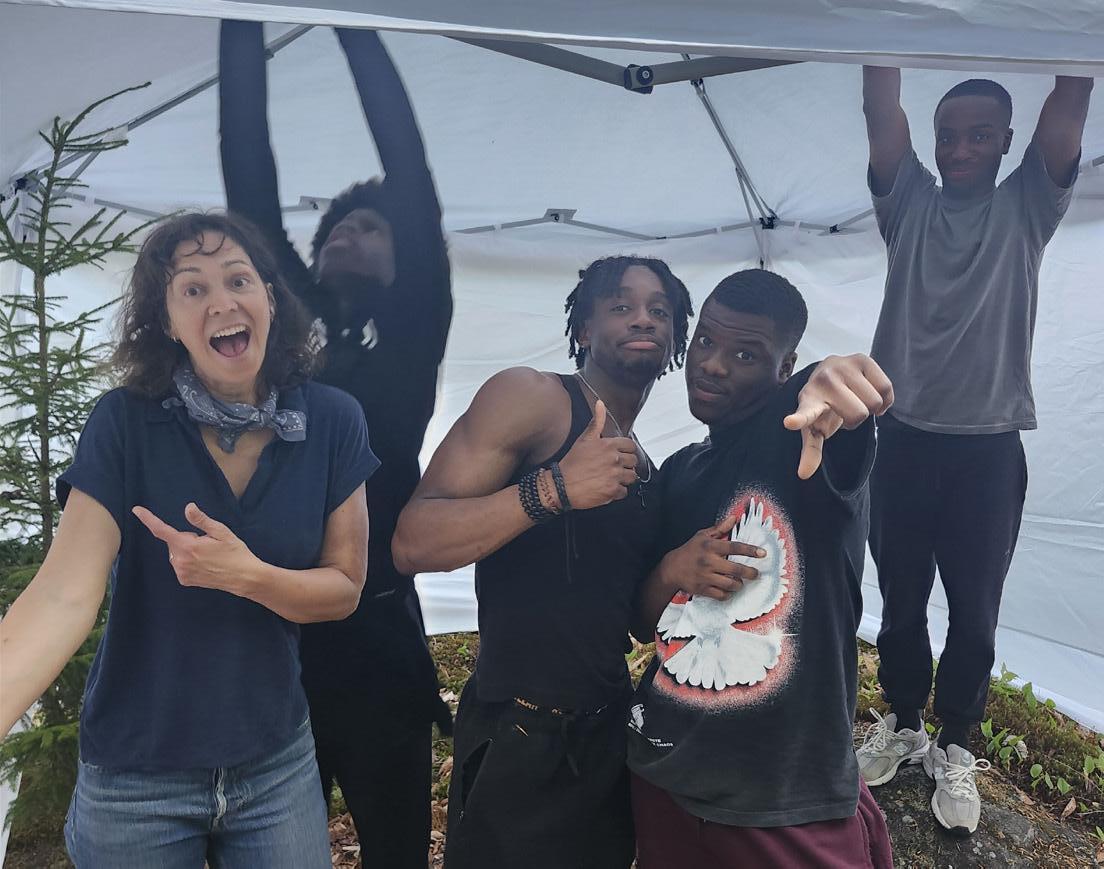
Field Trips
RSU#2 MONMOUTH MEMORIAL SCHOOL
Judy Macomber
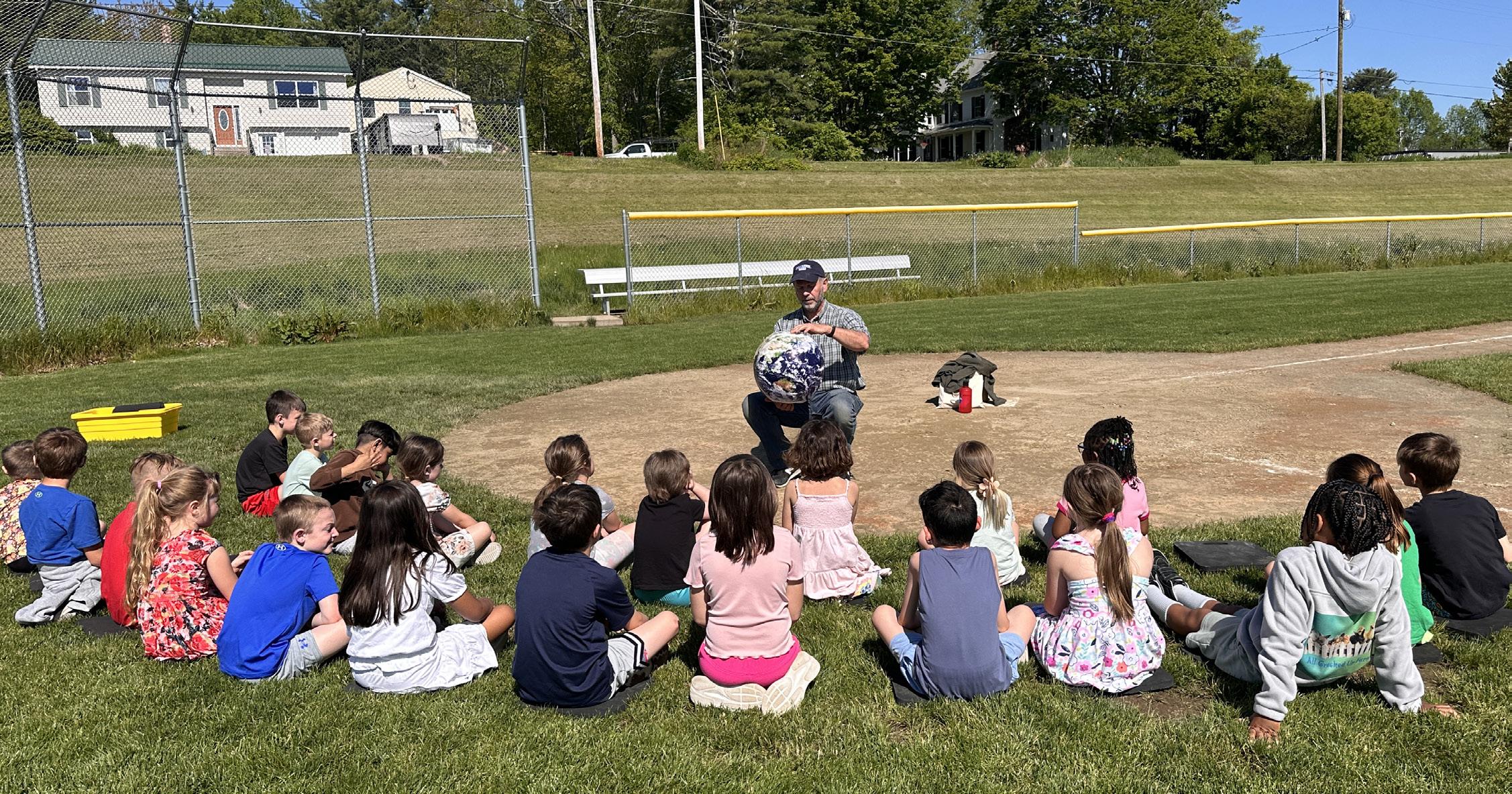
The place-based visit from the Northstar Planetarium brought the Universe to life for our youngest learners. Presenter John Meader engaged students with a hands-on experience using life-size models of the planets and the Sun. Students used their hands, eyes, and curiosity to compare and contrast the sizes and characteristics of each planet, deepening their understanding through tactile learning.
The experience sparked wonder and meaningful connections. One first grader declared that Jupiter was their favorite planet because “it lies on its side,” showing how students were not only observing but also applying their own interpretations to what they learned. Another first grader marveled at how “teeny tiny” Mercury is compared to the massive Sun—an observation that reflected their growing grasp of scale and proportion in the solar system.
As viewed in one of the pictured moments, a second grader was asked to estimate the distance between the Earth and the Moon. As Mr. Meader encouraged the student to keep backing up to accurately model the distance, the child exclaimed, “Where in the world is the Moon? It looks really big at my house!” His comment revealed the difference between perception and
reality, and how powerful in-person learning experiences can challenge and reshape those perceptions.
Thanks to this grant-supported program, our students didn’t just learn facts about space—they experienced them. They walked away with not only new knowledge but also a deepened sense of curiosity for science.
The remaining portion of our grant was used to purchase lawn games, which became a valuable addition to our outdoor morning meetings.
One standout activity involved a large Tic Tac Toe game used in a relay format. Students not only had to think strategically but also support and encourage one another. This blend of movement, teamwork, and play created an ideal environment for reinforcing pro-social behaviors.
Integrating physical activity with structured play has had a notably positive impact on our students’ emotional development. The lawn games offered a fun, active way to foster cooperation, empathy, and positive peer interactions— skills that continue to carry over into the classroom.
Field Trips
SACOPEE VALLEY HIGH SCHOOL
Elizabeth Sanborn
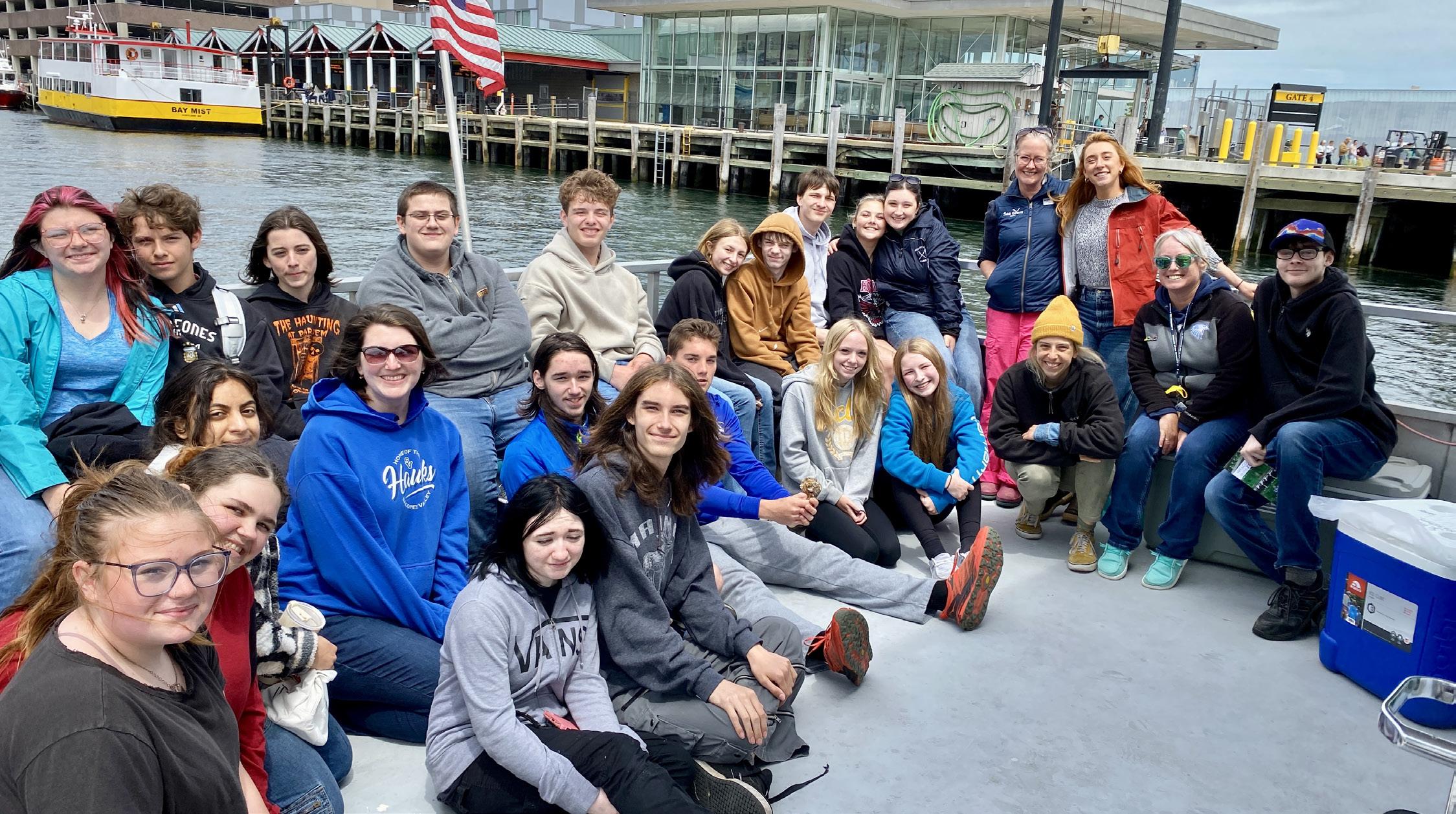
The MEEA grant allowed us to continue a 2024 initiative called “Bringing the Sea to Sacopee” through our Extended Learning Opportunities program at the high school. Program director, Elizabeth Sanborn, arranged for students interested in marine biology and aquaculture to spend time on Casco Bay for the day with the immense help of Keri Kaczor from the Maine Sea Grant. We invited many experts on board from Maine Sea Grant (Jaclyn Robidoux, Alicia Gaiero and Keri Kaczor), Friends of Casco Bay (Sara Freshley and Meghan Vigeant), Casco Bay Estuary Partnership (Victoria Boundy, Natalie Bingham, and Janelle Goeke) and University of New England (Brian Will), who freely shared their knowledge about working waterfronts, aquaculture, and the various ways for students get involved. Our boat ride took us up to Madeline Point Oyster Farms, where we got to watch and listen firsthand to farm manager, Michael Scannell and co-owner, Zach Henninger explain how the farm uses ecologically restorative practices to grow a world-class oyster. Because our school is located in Hiram, over thirty miles from the coast, many students had never been on the ocean and knew very little about our state’s wonderful coast.
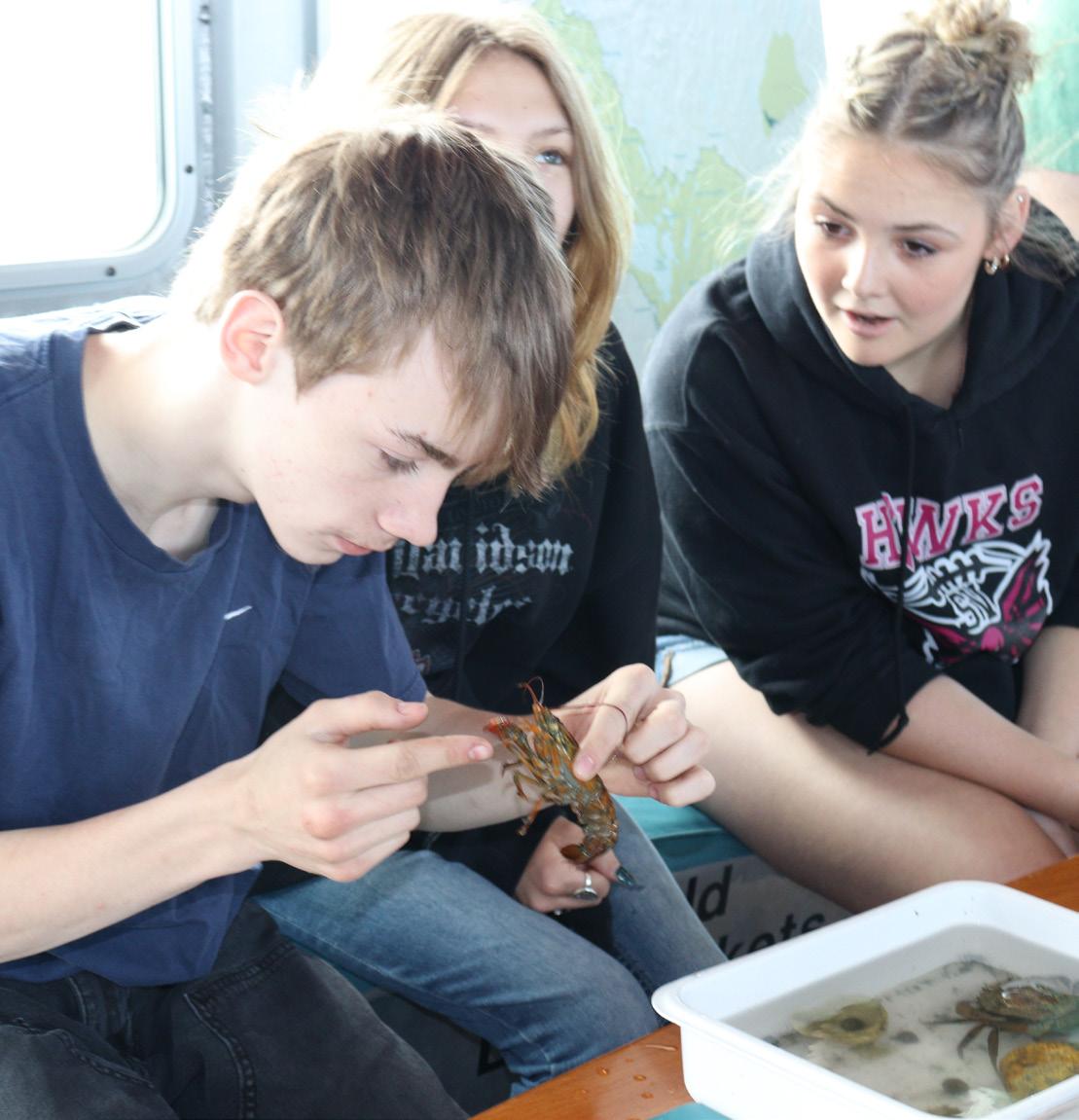
Kristie Baker
Field Trips
SANFORD HIGH SCHOOL
Lindsay Strout
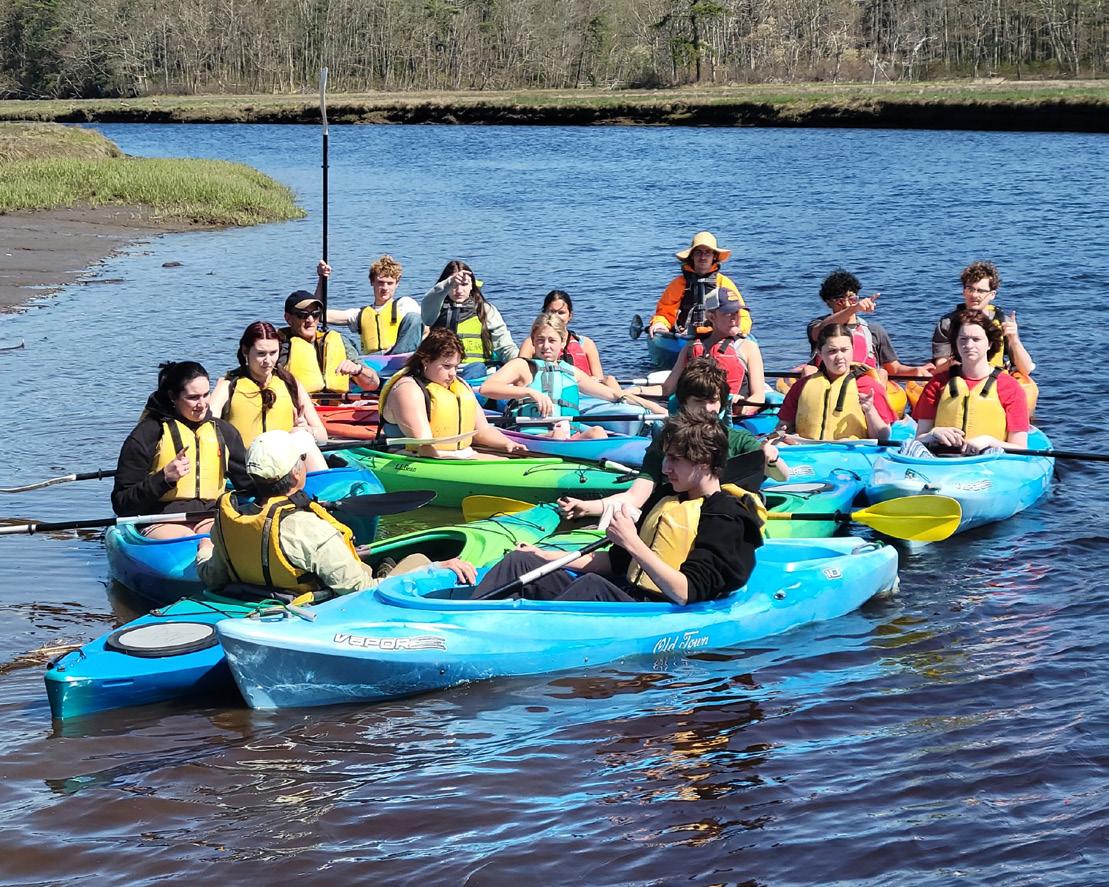
Students were very excited about this project mostly because many of them had never been kayaking before. One student admitted he thought he would have gotten wet getting in and out since that is what a friend had told him to expect. The launch area at Loudholm Farm though has a ramp that stabilizes your kayak as you enter before even getting in the water. While kayaking wer were able to hear and see many birds and although we did not get a photo of it we say an eagle fluing around the area and were told that they had recently established a nest along the river. Student were also excited that they knew how to use the refractometers in the field since we had praticed in the class with the set I purchased with some of the funds.
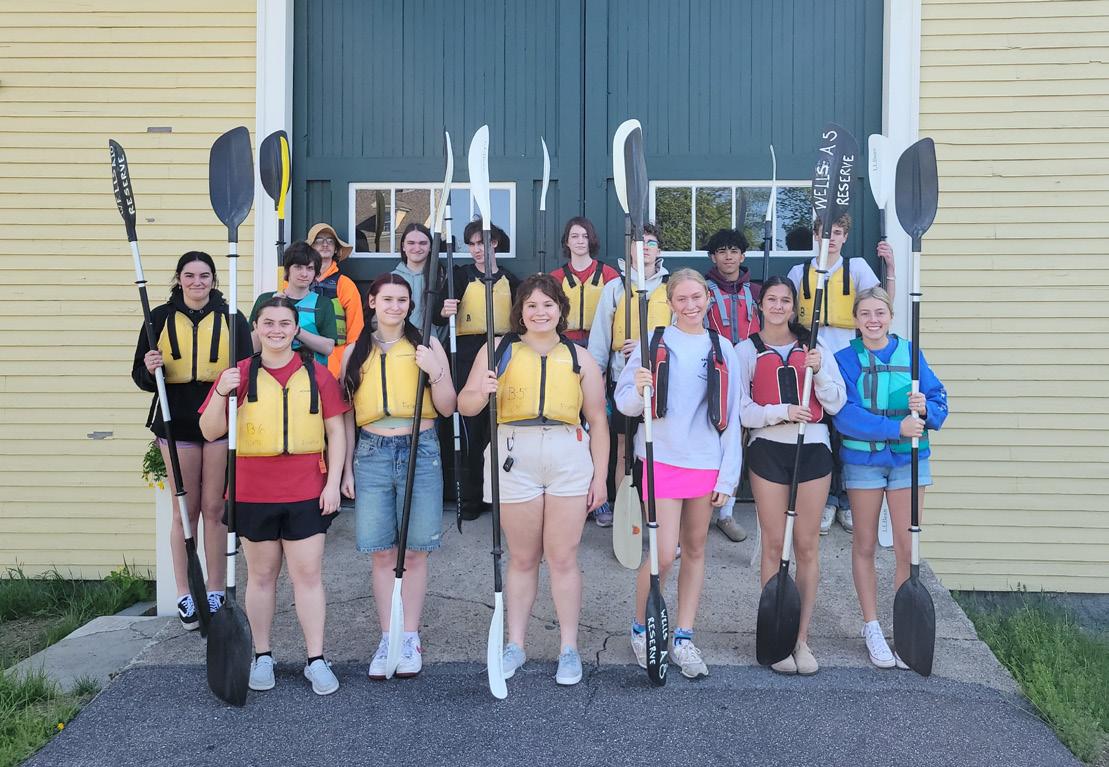
My students and I were lucky enough to observe, engage and learn about Maine’s wild animals all semester long. For some of my students they have never seen these animals up close and personal, or even in the wild! So these field trip opportunities are able to get these students engaged with the wildlife we love and respect here in Maine. Thank you MEEA for helping us get to the Center for Wildlife and Maine Wildlife Park!
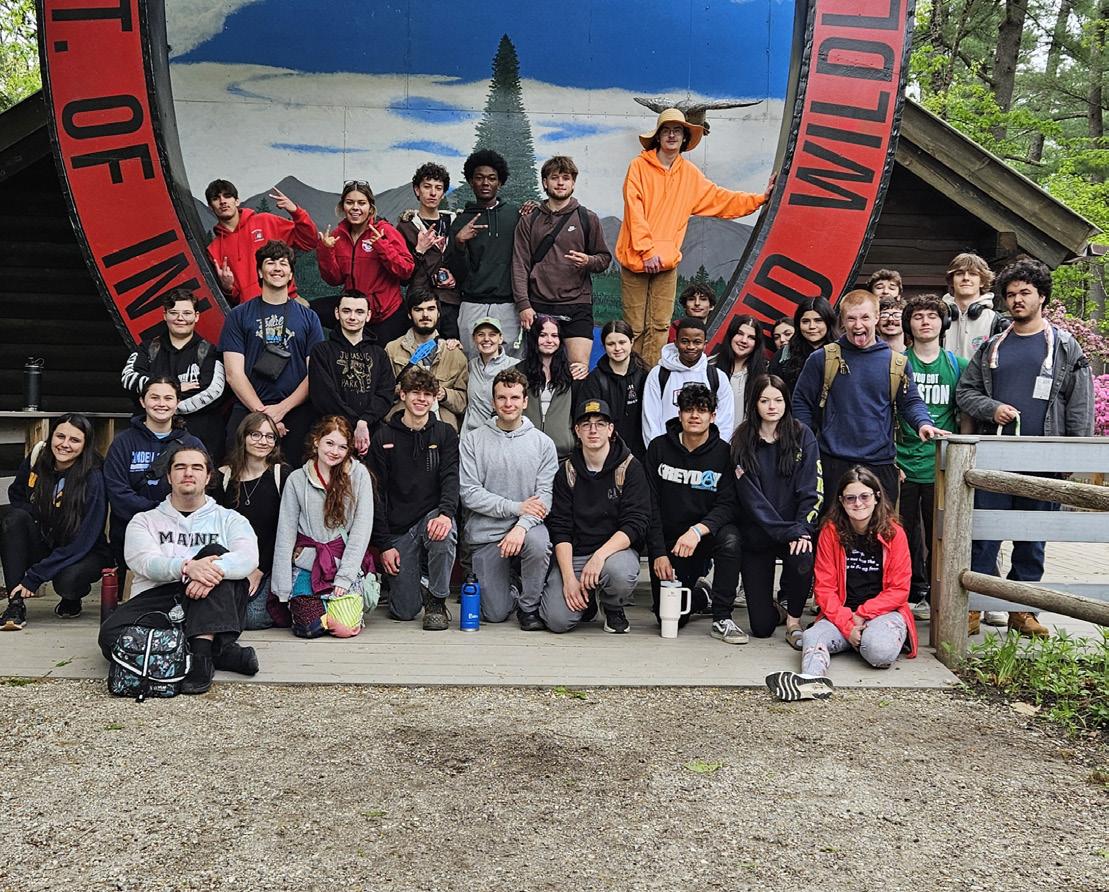

Foul-Weather Gear
BOWDOIN
CENTRAL SCHOOL
Shannon Baker
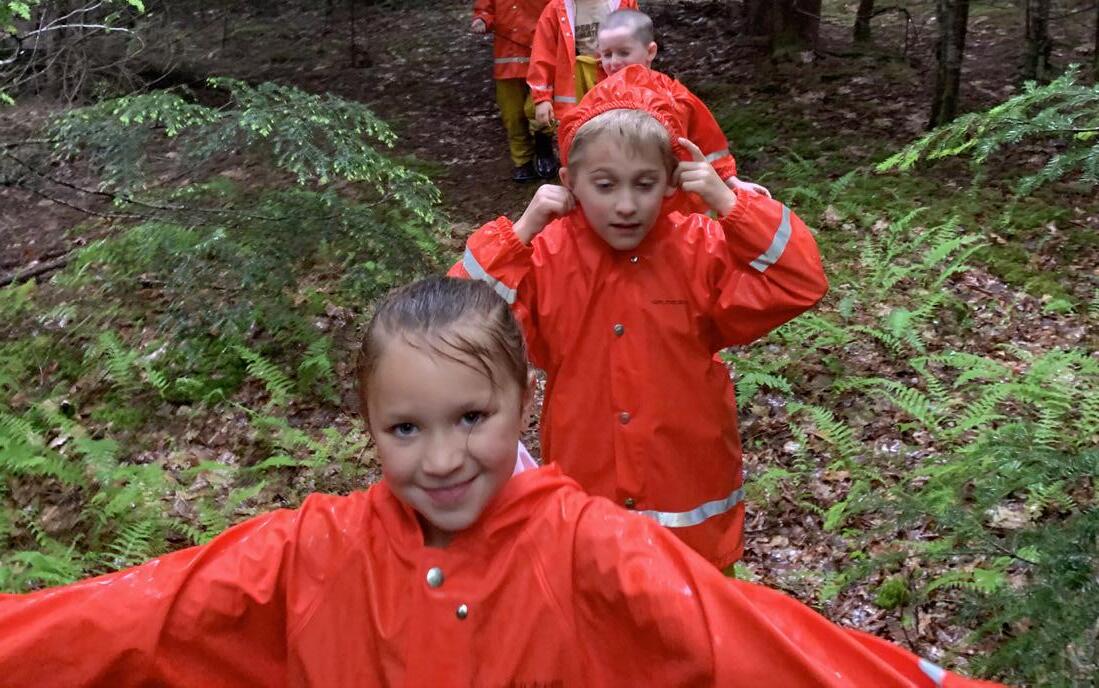
The kindergarten classes at Bowdoin Central School have been using an outdoor forest classroom for 7 years. On Woods Wednesday students spend several hours in the forest surrounding our school. Before we had gear to keep our students dry and comfortable, our outdoor learning was limited by rainy, wet weather. During the school year 2024-25 we were awarded an MEEA Mini-Grant which allowed us to purchase 30 Grunden raincoats for our students. We now have a full set of Grunden rain pants and jackets for each student in kindergarten. We are now able to use our Forest Classroom throughout the school year in all weather.
Woods Wednesday is a favorite part of students’ learning experience. Students are involved in both teacher-led curricular activities as well as student led exploration. Our students benefit from outdoor learning by engaging in imaginative play, developing independent problem-solving skills, and gaining practice with making choices with their learning. Outdoor learning has promoted growth with resiliency and responsibility. Some favorite activities include building bridges, forts, and fairy houses, with materials and in ways that are just not possible on our school playground. Students develop ownership of both our Forest Classroom space as well as with their ongoing projects. Often these projects require students to work together and share ideas and plans with each other. They create their own work teams and work on jobs together.
Our outdoor learning has affected student appreciation for our school campus and the woods in general. My students are amazed when they discover frogs, salamanders, and snakes. Many begin looking closely at trees, insects, and frogs. They ask questions about the natural world.
CAMDEN HILLS REGIONAL HIGH SCHOOL
Erica Gates
This year, the funds we received for outdoor gear played a huge role in getting our students outside and meaningfully engaged with their environment. With the money, we were able to purchase a wide range of essential items, including rain gear, winter clothing, hats, mittens, and boots. These supplies formed the foundation of our new outdoor gear library, allowing all students—regardless of personal circumstances—to participate fully in outdoor learning experiences. Each of our students had a tote with their gear in it for the year.
Equipped with proper gear, our classes ventured outside regularly, even during colder or wetter seasons. We organized hikes, gardening projects, fishing trips, and even winter beach excursions, all of which became powerful learning opportunities. These experiences not only enhanced students’ understanding of the natural world but also fostered important life skills such as resilience, cooperation, and curiosity. Many students who previously hesitated to participate outdoors due to lack of appropriate clothing now enthusiastically engage in every activity.
The impact extended beyond academics. Outdoor learning became a platform for building community and strengthening relationships between students, staff, and families. Parents expressed gratitude for the inclusive opportunities, and students began showing greater respect for nature and each other. Teachers noted improvements in students’ mood, focus, and social interactions—especially among those who benefit from movement and sensory input.
Thanks to this funding, we’ve laid the groundwork for a sustainable outdoor learning program. This gear ensures that future students will continue to have access to these opportunities, regardless of the season or weather. We are deeply grateful for the support that made this possible, and we remain committed to expanding our outdoor learning efforts to enrich student well-being, learning, and connection to the world around them.
Foul-Weather Gear
CAMDEN-ROCKPORT ELEMENTARY SCHOOL
Kimberly Wickenden
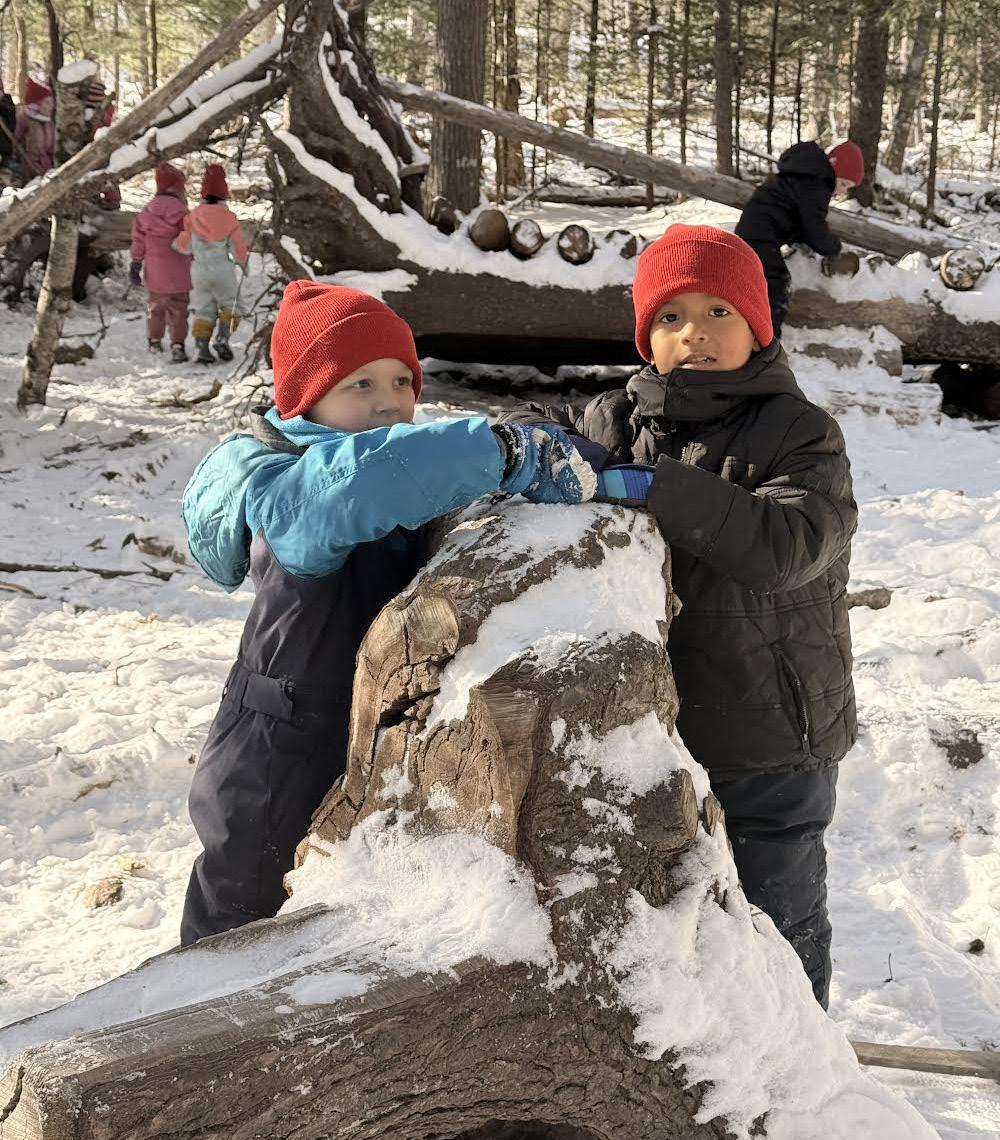
Mrs. Wickenden’s Class and Mrs. Curtis’ Class was blessed with a grant to buy hats for all seasons. We wanted a bright color to be able to quickly find and identify our classes as we were out exploring. We have winter beanies and are just starting to wear our baseball visor style hats as the weather is warming and we need more protection from the sun. These has has ensured that ALL children are prepared for the woods and outdoor exploration.
“I love that I can find my friends now!” -Alex age 5
“Look, we are the “Red Team”. Let’s stick together and work together! “ -Karma age 5
“I love it when every child in my class has the supplies, resources and tools they need to be successful during Outdoor Learning. I want all my students to be safe and happy when outside, without judgement or worry due to their personal socioeconomic status!” -Kindergarten Teacher
CONGIN ELEMENTARY SCHOOL
Bethany Fournier
We were so thankful to receive this grant and to be able to provide the students with the supplies needed to be outside as much as possible. The rainsuits and boots were particularly appreciated by all staff as the students do not like changing their school day routine. When it rains we can still take the kids outside to play and jump in the puddles. Of course the children love this but the staff also love being able to enjoys the outside and burn off some energy now that they have the appropriate weather gear. We also have been able to offer additional play and learning equipment such as the bounce house, sand box and swing. This is excellent learning experiences for the students as they navigate taking turns and collaborating with peers. The students have more offerings of activities while outside and are able to use their individualized communication devices to request continuation or termination of tasks. Due to learning styles, safety and resources, these students do not get to experience these opportunities often.
“We are so thankful that we can take the students outside in all weather to be able to explore the playground, stick to their routine and use up some of their endless energy. It is absolutely what is best for all of us, to be outside everyday!”
- our special education teacher
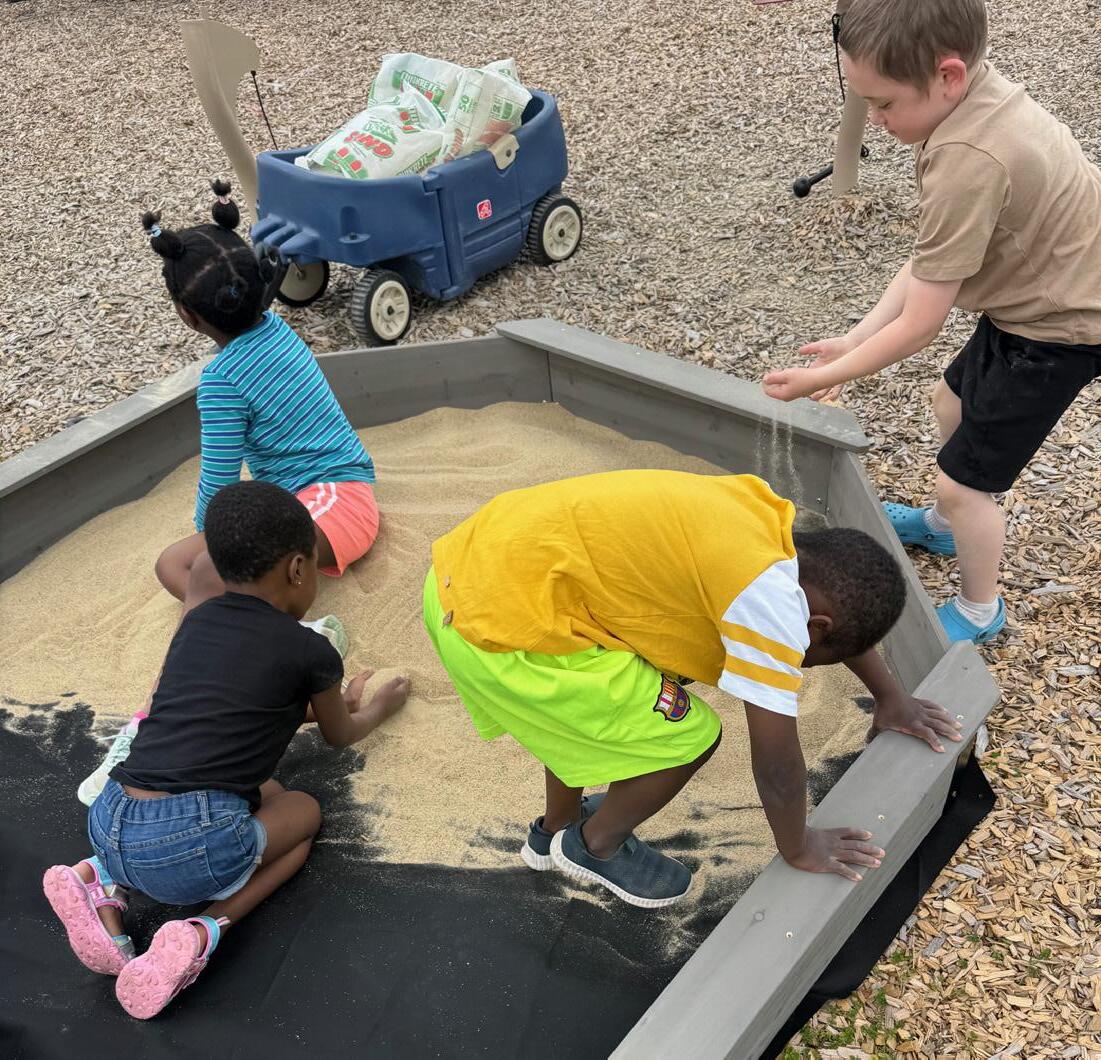
Foul-Weather Gear
FIDDLEHEAD SCHOOL
Jacinda Cotton Castro
The rain ponchos and Yak-Traks will help our students gain access to time outdoors despite rainy or icy conditions, which are becoming increasingly common.
Appropriate gear and increased comfort outdoors means more impactful learning outside of the classroom and increased enthusiasm for going outdoors in all sorts of weather.
The literature will increase the diversity of our outdoor learning library and provide more opportunities for Wabanaki studies and climate change integration.
This funding supports both. Immediate needs include more gear for inclement weather and the literature will support learning that are doing now and want to integrate more in the future. Many of our students are ill-equipped for rainy, cold weather. With over 60% of our students eligible for free and reduced lunch, our families do not have the means to outfit their children in foul weather gear- especially rain pants.

GREAT SALT BAY COMMUNITY SCHOOL
Hedda Scribner
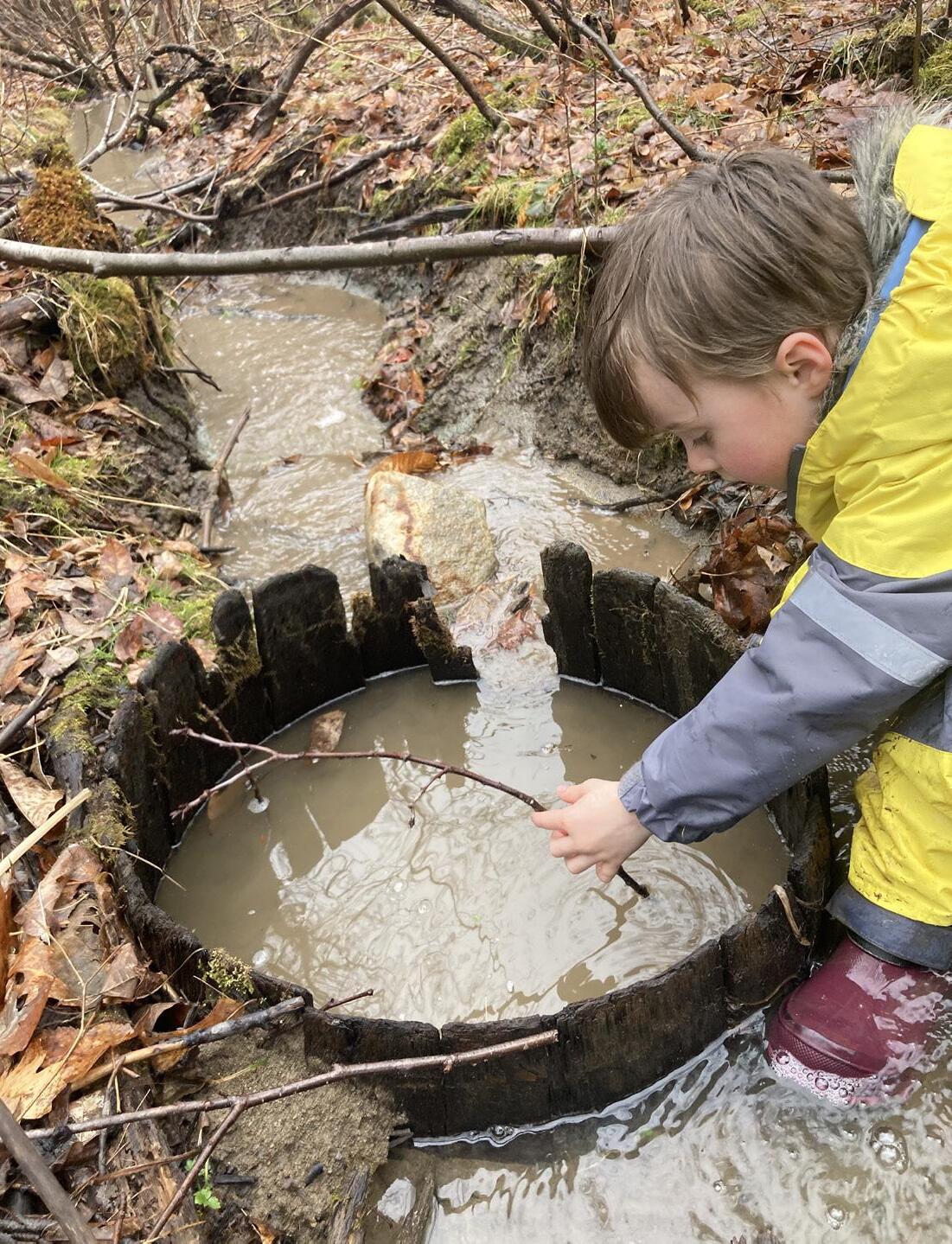
We see the joy and freedom these rain suits bring to the children. We watch as those who were a bit reserved explore freely because of the safety and comfort the rain gear provides. We watch as the kids who like to test the boundaries of their bodies push that much further. We hear giggles and belly laughs as the children splash to their hearts’ content and we witness the joy in the twinkling eyes and huge smile of a non-verbal child as he sees the vibrant green leaves in the moving trees overhead and hears the birds’ songs. We listen almost daily to a child who once spoke only a few words, ask unprompted “Please, can I go to the woods?” when he needs to find a calm, safe, and nurturing place. These moments, and many more, are made possible because of this gift. We sincerely express our gratitude. With this mini-grant you have planted memories in these childrens’s hearts and minds that will continue to nurture them throughout their lives and drive their sense of adventure and exploration.
Foul-Weather Gear
GUY E. ROWE ELEMENTARY SCHOOL
Laura Fisher
We all used to dread when it rained because we had to stay inside, but with our new rain suits we no longer have to feel that way. Both students and teachers were eagerly awaiting for rainy weather to use them. When we were finally able to use them on a rainy day the students said “this is the best day ever!” We suited up and went on a puddle hunt around our school and boy did we find the biggest puddles! It didn’t just bring excitement to the students, but also all the staff that were watching from their windows. Later that day staff told me “the kids looked like they had so much fun” and “it is so great that they get to experience this.” I even got asked “do we have rain suits for the teachers?”
The best part of a rainy day is finding all the puddles to jump in! Outdoor experiences are so important for children because it allows them to explore their environment and use their senses to learn about what is around them. This funding has allowed us to do this in all types of weather. The students got to jump in the puddles, play in the mud, and feel the splashes on their faces without the uncomfortableness of wet clothes. One of my quietest students was so excited, laughing and jumping in the puddles. She ran up to me all proud to show me the mud on her face!
We even had support from the parents when it came to getting outside in the rain! Parents were so excited seeing their children exploring the outdoors and having fun while doing it. Many parents said “that looks amazing” and “I can’t wait to hear all about it.” Some even wanted to join us on the next outing! This grant has been so helpful with getting my class outdoors almost every day. It has sparked an interest of the outdoors within my students and has created many more age appropriate outdoor-learning opportunities for me and my students.
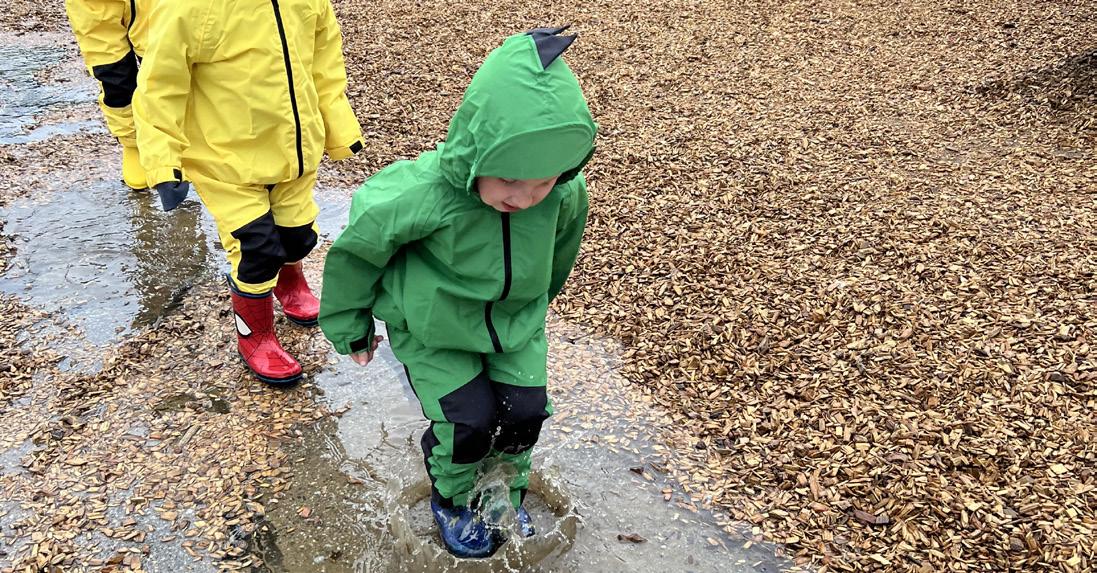
KATAHDIN ELEMENTARY SCHOOL
Scarlet McAvoy
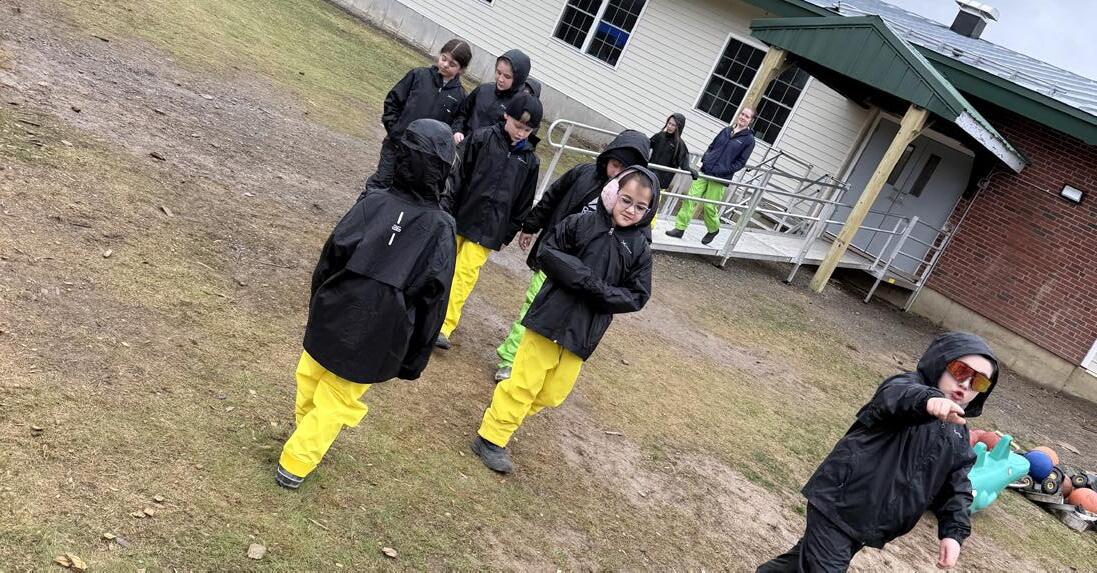
At Katahdin Elementary School, we value outdoor learning. However, not all of our students have the quality gear to make outdoor learning comfortable in all kinds of weather. Many of our students are ill-equipped for rainy, cold weather.
We are very fortunate to have a gear library located within our school. We inventoried our gear library and we noticed our gear library included rain gear for younger students, but was lacking in sizes that would fit our upper elementary students. Wet days are the often the most difficult days to venture outdoors, because students quickly become uncomfortable if they do not have the proper gear. The feeling of discomfort continues when they return indoors, because their clothing remains damp and wet. The funding we received was used to support an need in Grade 3-5 classrooms. The gear allowed children to suit up and go adventuring and learning in the outdoor classrooms and “Cougar Path” that surrounds our elementary school.
These funds will support our efforts to be in our outdoor classrooms in all weather conditions. Right now, teachers feel limited on when they can take their students outside. Many teachers are worried about how long students could sustain learning in foul weather. Purchasing quality gear will ensure that children can be engaged in outdoor learning for longer periods of time--in all weather.
When even just a few students do not have the gear they need, it impacts the whole classroom. Teachers are reluctant to take children outside to learn when they know the child does not have the gear necessary to be dry and comfortable.
The quality weather gear purchased reached beyond the regular school day. Our school offers and After School Program for students. Students who participated in activities after school were also able to utilize the rain gear and enjoy more time outdoors with staff and friends.
Foul-Weather Gear
MARCIA BUKER ELEMENTARY SCHOOL
Jennifer Merrill
Marcia Buker Elementary first graders participate in the Forest Friday program. Each Friday morning we spend time in the forest exploring and enriching our academic programs with outdoor learning activities. We have orange t-shirts for safety so that we can see each other in the woods. The shirts don’t fit over our winter gear and are sometimes too hot to wear over regular clothes in the warmer temperatures. These orange vests that we purchased with the MEEA grant are easy for kids to put on over bulky winter jackets or quickly over a t-shirt. The vests allow the students to have more freedom to explore a wider area since everyone can see each other. Students know that they can go a bit farther to investigate as long as they can see the teachers and other students.

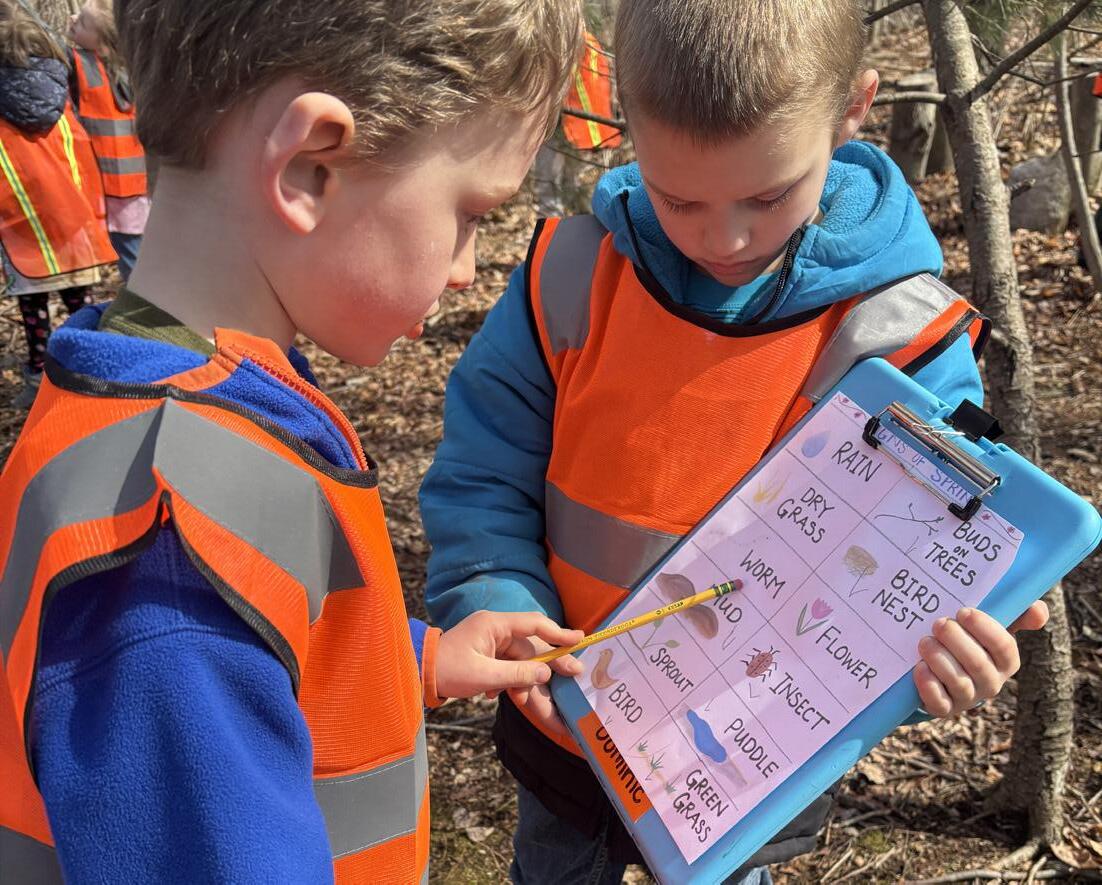
MILLER SCHOOL
Miranda Belcher
Thanks to the generous support and grant from the Maine Environmental Education Association, the Pre-K, Kindergarten, and Special Education students at Miller School are now equipped with high-quality rain gear, making outdoor learning and play possible in all kinds of weather. With waterproof rain bibs and pants, they can now learn, explore, discover, and grow—rain or shine.
Outdoor learning is a critical part of our curriculum, helping students build physical coordination, develop social-emotional skills, and engage with nature in meaningful ways. However, unpredictable weather often limited access to outdoor time, especially for our youngest and most vulnerable students. With the grant funding, we removed that barrier and made sure every child had access to the gear they need to stay warm, dry, and happy.
From puddle-stomping and navigating slippery paths to imaginative play in the drizzle, our students are embracing the elements with excitement and curiosity. One Pre-K student perfectly captured the joy of these new experiences, saying, “I feel like I’m a weatherman giving the weather during a crazy storm!”
The new rain gear not only supports health and safety—it empowers students to build resilience and confidence through active play and exploration. It also gives our teachers the option to engage their students in different outdoor lessons without having to worry about their comfort and mobility due to the weather.
We are incredibly grateful for the opportunity to make outdoor learning more accessible and inclusive. The smiles on our students’ faces and the stories they bring back inside are daily reminders of the value of outdoor learning. This has helped us give our children the tools they need to learn and thrive—no matter the weather.

Foul-Weather Gear
MOUNT
ABRAM HIGH SCHOOL
Jodi Badershall
As teachers, we know that all too often students come to school without their needs being met. As a physical education teacher, I found it hard to think about getting my kids outside when they did not come with appropriate clothing or footwear. The grant allowed me to purchase items that would enable students to get outside. We often take for granted warm hats, socks, and gloves, forgetting that these are not items that everyone has. I did not think about the impact it would have beyond the classroom. I had teachers come to me to outfit students that did not have cold weather gear to simply wait for the bus. They were so thankful and appreciative that I had put it together. Without the grant, I would not have been able to support so many students and build an inventory that will be available for years to come. Being able to provide gear to keep students warm certainly warmed my heart and I am so thankful for being given the ability to do that!
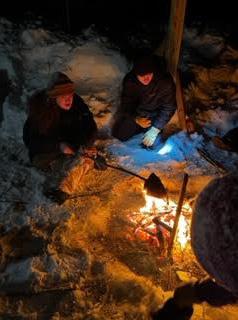
OXFORD
ELEMENTARY SCHOOL
Kayla Frechette
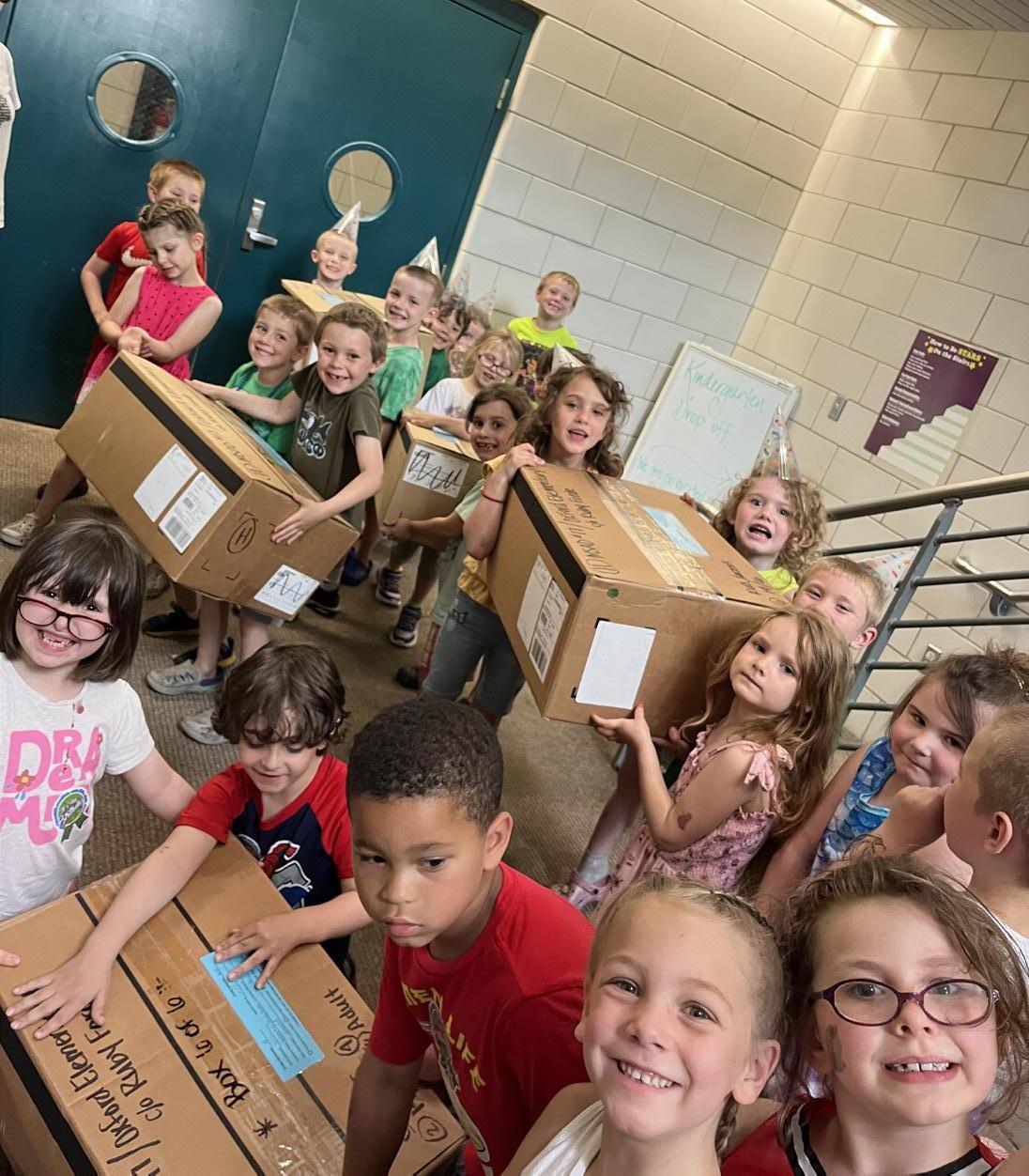
Oxford Elementary School was a lucky recipient of the MEEA Mini-Grant. These funds were requested to purchase outdoor clothing for students who are unable to afford quality outdoor gear during the winter months. This project has enabled the school to collaborate with a local community business to purchase high-quality outdoor gear at discounted prices. This outdoor gear will be distributed throughout the school building, allowing any student to access it when needed. This will enable them to utilize the outdoor learning classrooms and fully engage in recess play. Every week, students throughout the school go outside. In Kindergarten, our students go outside every Friday for Forest Friday. When we go outside, we typically have some students who are not prepared to be outside for long due to not having the necessary outdoor gear, or their gear is of low quality, so they quickly complain of being cold. This gear will allow us to supplement what some students already have, and will enable other students to have a complete set of gear to access the outdoor areas.
Foul-Weather Gear
PORTLAND ARTS AND TECHNOLOGY HIGH SCHOOL
Katie West
This project focused on the premise of creating a traveling classroom for the Outdoor Education and Leadership students here at PATHS in Portland. This new program takes place nearly entirely outside for juniors and seniors from local area high schools.
The aim was to purchase a collection of backpacks that would serve as students “outdoor classroom” no matter where we were traveling or exploring on any given day. The backpacks were to be both symbolic and utilitarian. As a long time outdoor teacher, I value my students feeling physically and emotionally safe as they challenge themselves. These backpacks allow students both to feel as if they are a part of a group all focused on same effort, as well as help them take responsibility for group gear as they share the pack up process for the day’s learning as a team, dividing up what is needed into each other’s packs. By all having the same backpack, it creates a visual statement of a singular group made up of unique individuals.
In this way, the backpacks represent their ownership of their learning and their budding leadership and collaboration skills.
One student who was visiting this year deciding if he wanted to join heard me explain how we use the backpacks and the premise and purpose behind them. His eyes widened in what seemed like joy and motivation at the same time. He said, “I’m in! I love adventure!” I could tell that it was the combination of empowerment and ownership of his own experience while feeling the shared experience in a group was what made him want to join our program.
At that moment, I knew that the backpacks were successful even to someone newly introduced to the program.
Feeling safe, prepared, and connected does wonders for one’s ability to take that extra step into a new world of adventure, skill building, and shared leadership.
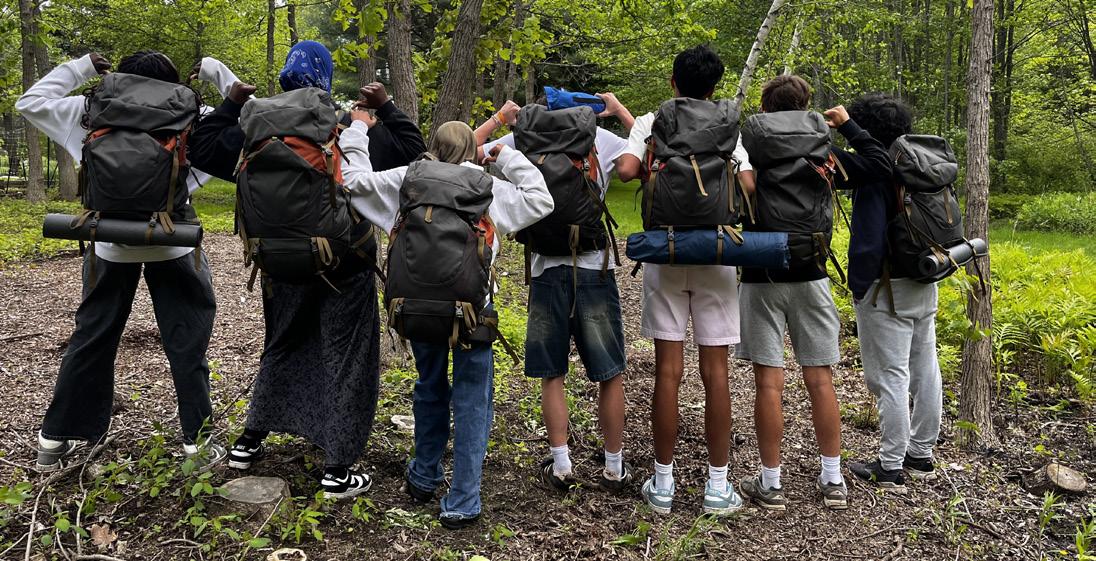
PHIPPSBURG ELEMENTARY SCHOOL
Nina Willette

At Phippsburg School, we implemented a new block of learning time called Forest Friday. For an hour each Friday afternoon, students at Phippsburg School engage in opportunities for place based outdoor learning. We were able to celebrate the success of our program through the Maine DOE newsroom of school success stories. During our outdoor learning time, students worked with many community volunteers, whether it be working in our school garden, exploring the trails behind our school, visiting our vernal pools to learn about the Big Night, or visiting some of the sacred grounds of past Phippsburg residents. Part of our Forest Friday time was providing opportunities for our reading buddy pairings to work together. Every Friday, the school principal took two classes to learn together. Learning activities were sometimes aligned with the seasons, or they may be aligned with classroom instruction. Students worked together to experiment in nature, building habitats in the woods, creating snowflake art, building small worlds from parts and nature, and having opportunities for games and play.
When kindergarten students were asked what they liked best about Forest Friday, kindergarten students said, “I like playing with the older kids.” “I like playing in the garden with the older kids and learning about how plants grow.” “I like being outside in nature.” When second grade students were asked what they liked best they said, “That we can go outside, that we get to work with our reading buddies, and that we get to learn with other kids.”
Being able to offer weekly outdoor education to our students at Phippsburg School has brought us closer together as a community. It has also allowed us to put a greater emphasis on teaching students to be environmental stewards, protecting our precious planet to ensure sustainability for generations to come.
Foul-Weather Gear
PRESCOTT MEMORIAL SCHOOL
Tamara Casas
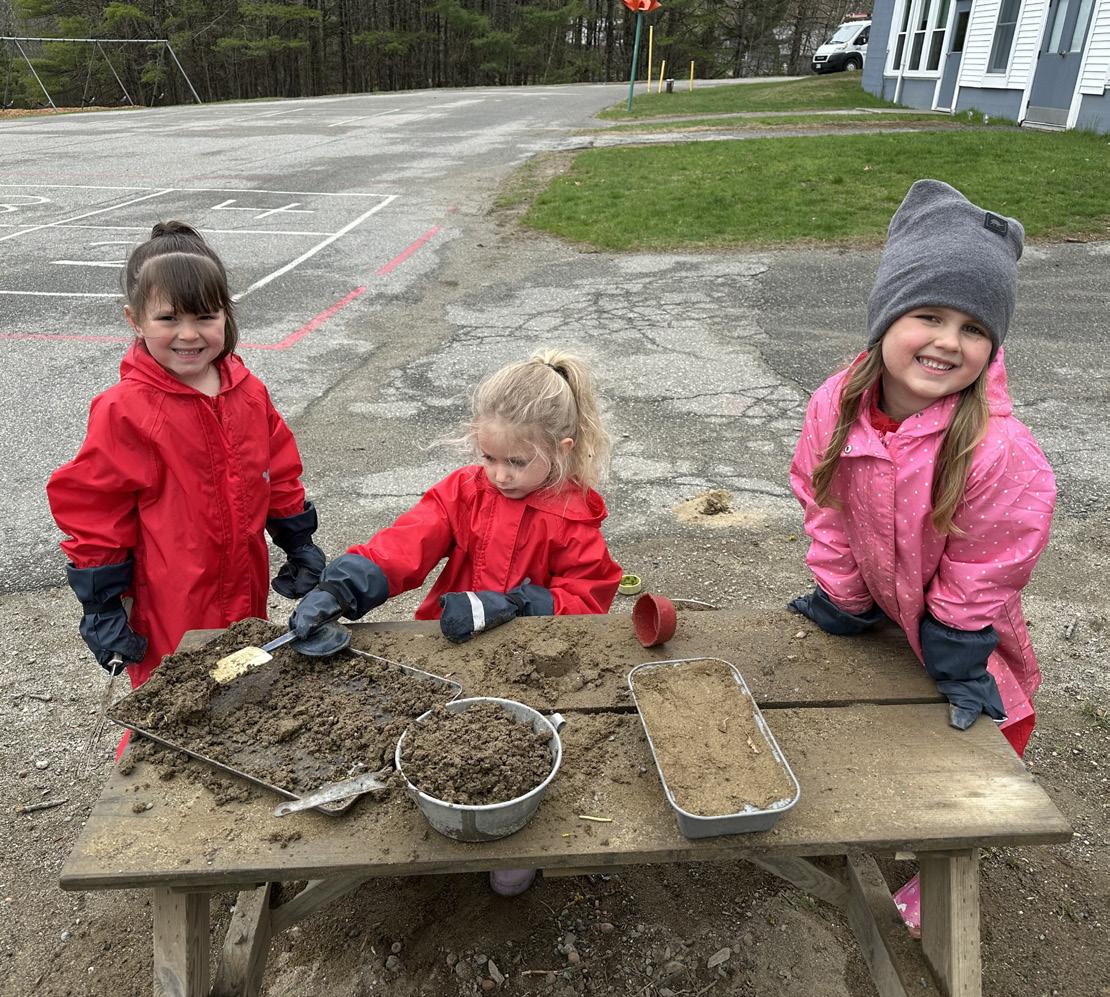
Prescott Memorial School Pre-K was excited to receive a grant from the MEEA to purchase outdoor gear to support outdoor learning, even in inclement weather, as well as to have to gear to be able to have a safe and comfortable outdoor recess almost every day.
My goal in applying for this grant was to enable children to get outside to learn–moving their bodies, exploring, using their senses and having pleasant and positive experiences outdoors and in nature even when the weather is “bad.” With the grant I was able to purchase high quality waterproof, insulated snowpants, waterproof rain mitts that had a dual purpose of being a waterproof outdoor layer in the winter, full rain suits, and fleece neck warmers. With all this amazing gear, I was able to accomplish my goal. We accomplished so much learning and had great fun too! One little boy, outside at recess with his waterproof mitts on over knit mittens, looked at me incredulously and shouted, “My hands aren’t cold!!!!” He had never worn waterproof mittens before, and became much more excited to go out in the cold after that. On rainy days my class cheers when I tell them we have to put our “red suits” on to go out. They love to play in the rain!
During our outdoor learning times we have had outdoor centers that included gross and fine motor activities, math, literacy, art, science, and more. We went on listening and
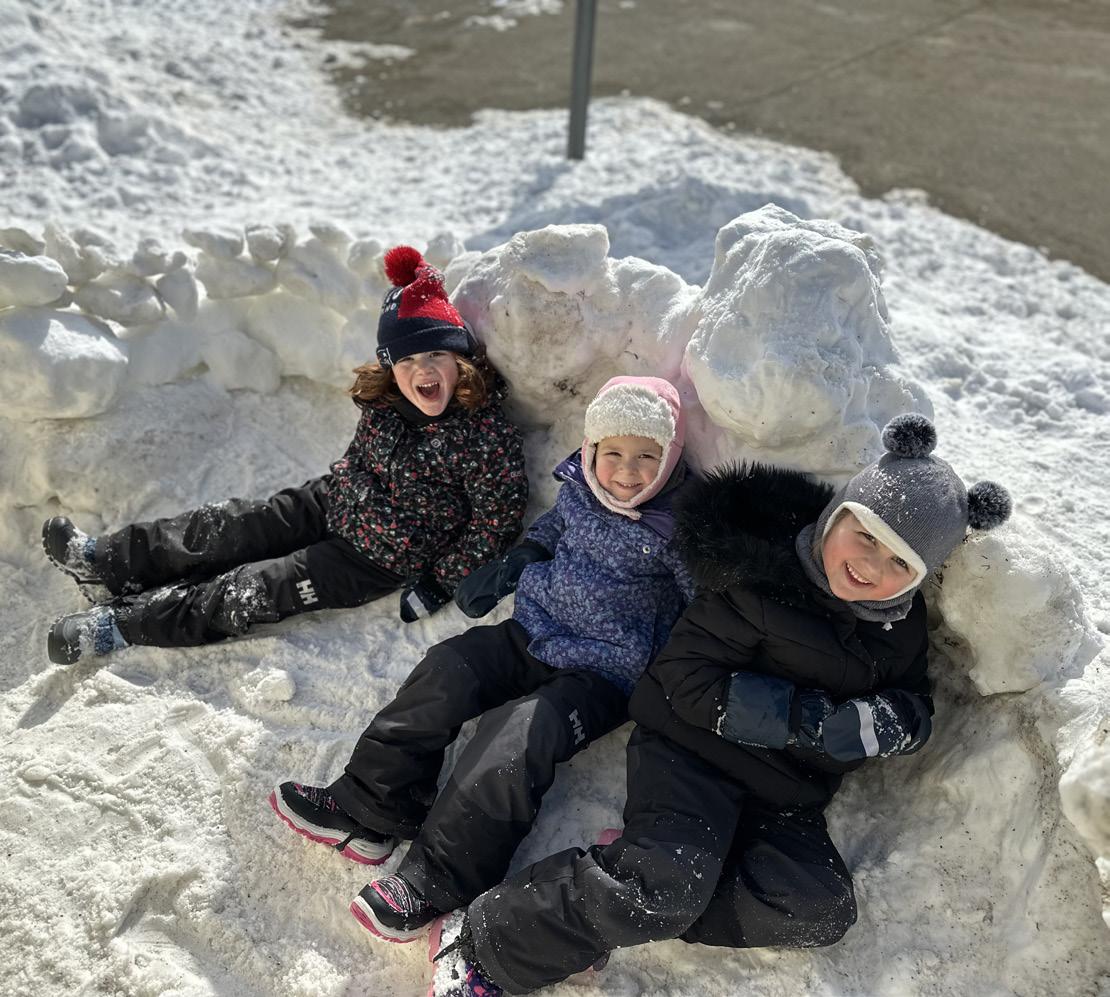
nature walks on the nature trail, splashed in puddles (what better way to learn about displacement!) dug in the sand and mud, collected rain water, built structures out of snow, went on story walks, and so much more!
We are all so grateful for our amazing gear that kept us warm, dry, safe, and comfortable this school year. This has given us so many wonderful opportunities and experiences outdoors this school year. Thank you MEEA!

Foul-Weather Gear
REGION 9 SCHOOL OF APPLIED TECHNOLOGY
Sonya Arsenault

I wanted to have some natural toys in my outside play area. I wanted to create elements of the natural environment that children can use creatively for play. This opens the child’s imagination, promotes social skills and develops creativity for learning. Unlike manufactured toys with predetermined uses, natural items like sticks, rocks, leaves, and water can become tools, building materials, or characters in a child’s story. I had visited the University of Farmington and was so amazed with the inside and outside natural play areas.
I purchased a mud kitchen for my class. I will be using this for the upcoming year with my students. I also got a sensory bin for outdoor play to enhance sensory exploration, as well as cedar stepping stones to develop physical skills.
I have a small space but would like to create a natural and calming environment for the children. I hope to start with some of the equipment I purchased from this grant.
RSU 1: PRE-K CHOICES CLASSROOM (MIDCOAST)
Althea Brown
Midcoast Maine Community Action is the parent organization for Early Head Start and Head Start in northern Cumberland, Sagadahoc, and Lincoln counties. Our CHOICES Pre-K program is a collaboration between us and RSU 1 (Bath, Woolwich, Phippsburg) and serves approximately 16 four- and five-year-olds and their families every year. This Pre-K class is primarily for families who meet income requirements, are homeless, and/or are involved in the foster care system. Most of our families do not have room for outdoor gear for their children in their budgets. We received $1000 in grant money from MEEA for rain gear. Since receiving the rain gear, the classroom is spending both more time outside minutes-wise and is able to be outside every day. Previously during very wet periods, this class stayed inside because they had no good way to dress students for the weather. Receiving this grant, along with additional professional development, also signaled to teachers that nature-based experiences are important to us as an organization, and the teachers have begun creatively weaving outdoor learning experiences into existing Pre-K for ME curriculum. Katie, the Lead Teacher in this classroom, has implemented a “Wild Wednesdays” program with her students that utilizes a forested area adjacent to her classroom. Students and teachers alike enjoy and get so much out of getting to explore “outside the fence”. We know that nature experiences and outdoor play have a large variety of benefits to students (and teachers!). With increased time outside, we see fewer challenging behaviors and increased problem solving and exploration from our students.
Foul-Weather Gear
RUMFORD ELEMENTARY SCHOOL
Sarah Marshall Larissa Wing
“This is the best day of my entire life” - words heard and shared by first graders every trip to our outdoor learning space.
From the stream where students are able to dig into the sand to examine small objects with magnifying glasses to taking brave chances walking across fallen trees to explore new areas, the woods offers both challenges and quiet moments for reflection.
As we completed our last full year before the transition to Mountain Valley Community School, we were able to partner with our peers across the river to bring both groups of first graders together for an enriching learning experience. I’m so grateful for the grant funding which allowed us to purchase 48 pairs of ski pants ranging in size from 4T to 18. This will ensure we have ski pants available for outdoor learning for our Pre-K students as well as many of our 5th graders. We are hoping to further expand this in the future to help provide year-round gear to all students so that access to appropriate clothing is never a barrier to participation and inclusion. Additionally, we were able to purchase 18 pairs of quality gloves - something that there truly never seems to be enough of!
These items will be the foundation of our clothing share closet when we transition to Mountain Valley Community School next winter and combine Rumford and Meroby Elementary Schools. Over 500 students will be able to utilize the outdoor learning space each week, meaning these items will see lots of use and love!
Thank you for making this purchase possible - we know how important outdoor learning is, and have prioritized providing access to gear as a mission as we continue to move forward with securing items that our students so desperately need! More ‘best day’s ever’ are coming for our students, and I am so grateful that we’ll be able to say ‘YES’ when they ask if we have what they need to borrow!
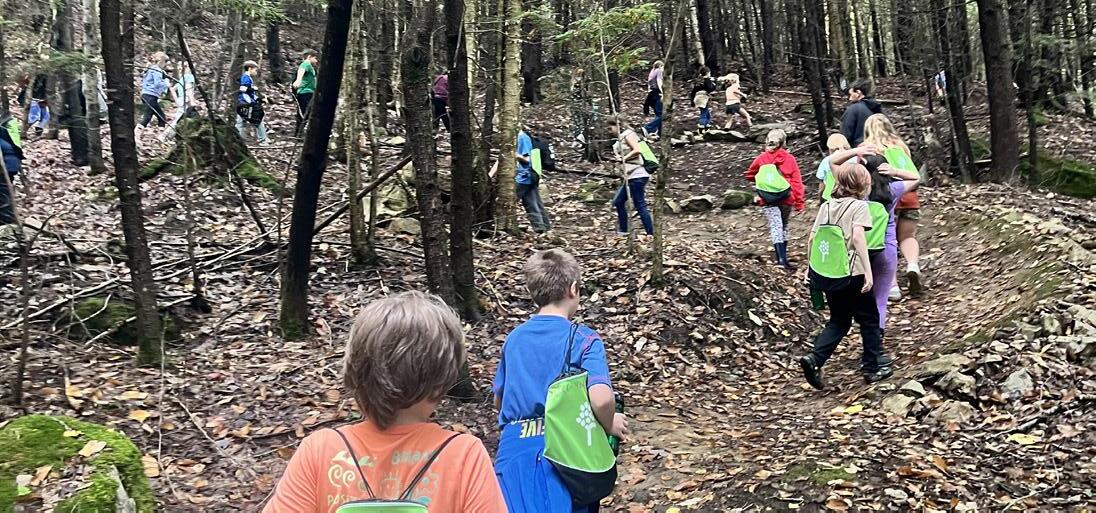
When I first sought out to complete this project, I had envisioned creating an outdoor weather gear closet within in my school. This year we faced many challenges as a district and school. Mountain Valley Middle School shut down due to mold issues, and Rumford Elementary School absorbed over 90 fifth grade students. This left no space for an outdoor education closet. However, despite our challenges, we persevered and continued to keep outdoor education at the forefront of our minds. Students were able to get outdoors and explore! By the end of the school year, we ordered over 60 pairs of rain boots to add to a future outdoor weather gear closet that will be housed at our brand new school, Mountain Valley Community School, which will be opening next school year. These boots will bring equity to our outdoor education program. Many of our students do not have the appropriate clothing or foot gear, to get wet and explore all that our surrounding woods have to offer. However, I am hopeful and excited to see how this project will continue to unfold in the years to come. My dream is to get more children learning outside!
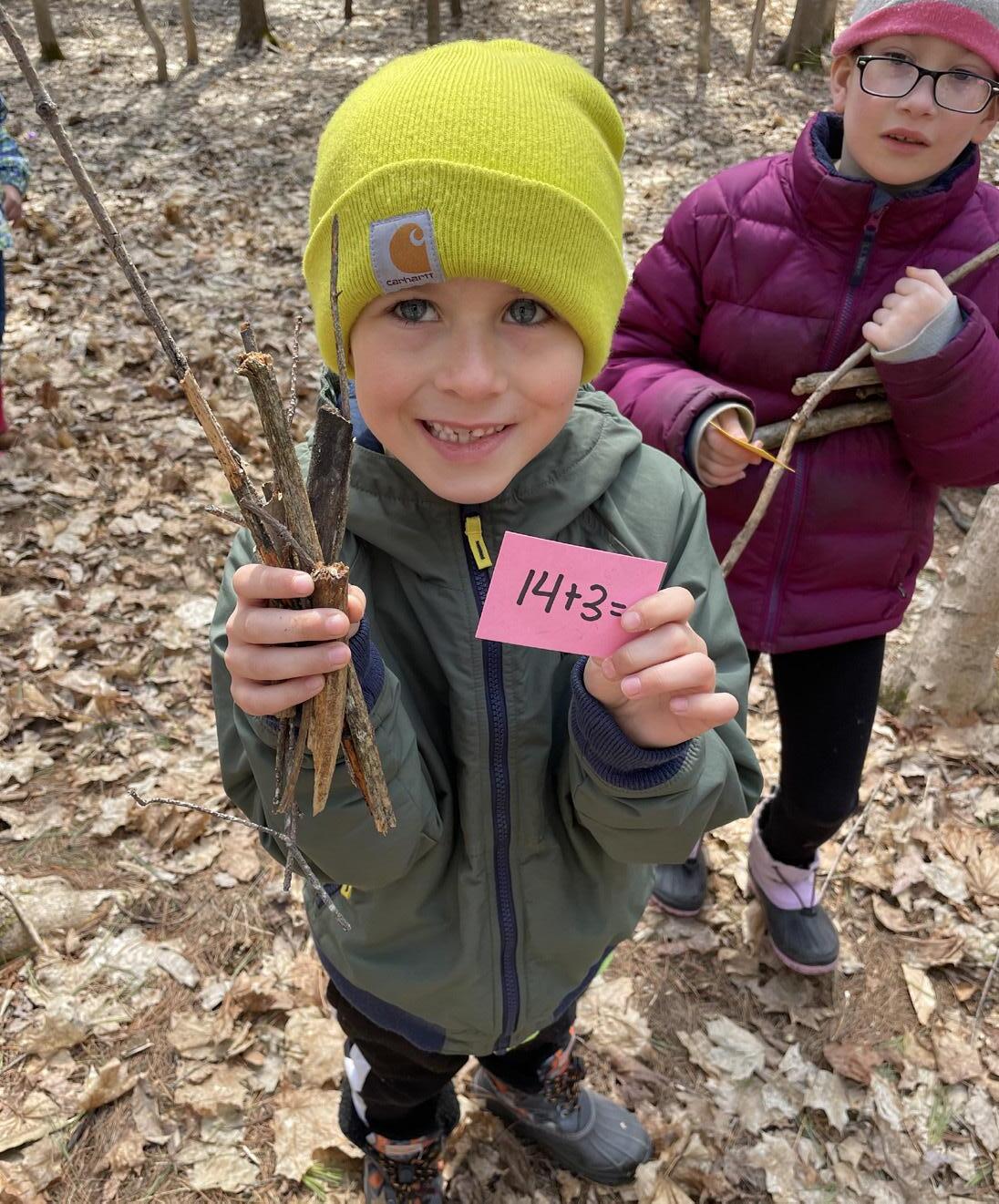
Foul-Weather Gear
SOUTH SCHOOL
Bethany Browne
Being able to access our outdoor space in wet weather has been wonderful for our students and teachers. Watching the students observe the same spaces as the seasons change and witnessing their wonder and amazement at the simple blessings of nature has been incredibly rewarding. Two weeks ago I spent Friday afternoon slogging around a vernal pool with a group of fourth graders hunting for frog eggs. All of our senses were were enriched by this experience. We smelled the decay of old leaves as we waded through the water, felt slimy plants and cold water that leaked through the top of our boots when we went to deep, observed the light making its way through the brush. This vernal pool is next to our school and yet we had never appreciated all of the wonder it had to offer until we put on our boots and went exploring.
“I’m really thankful for Forest Friday”. -a student

ST. GEORGE SCHOOL
Erin Dominguez
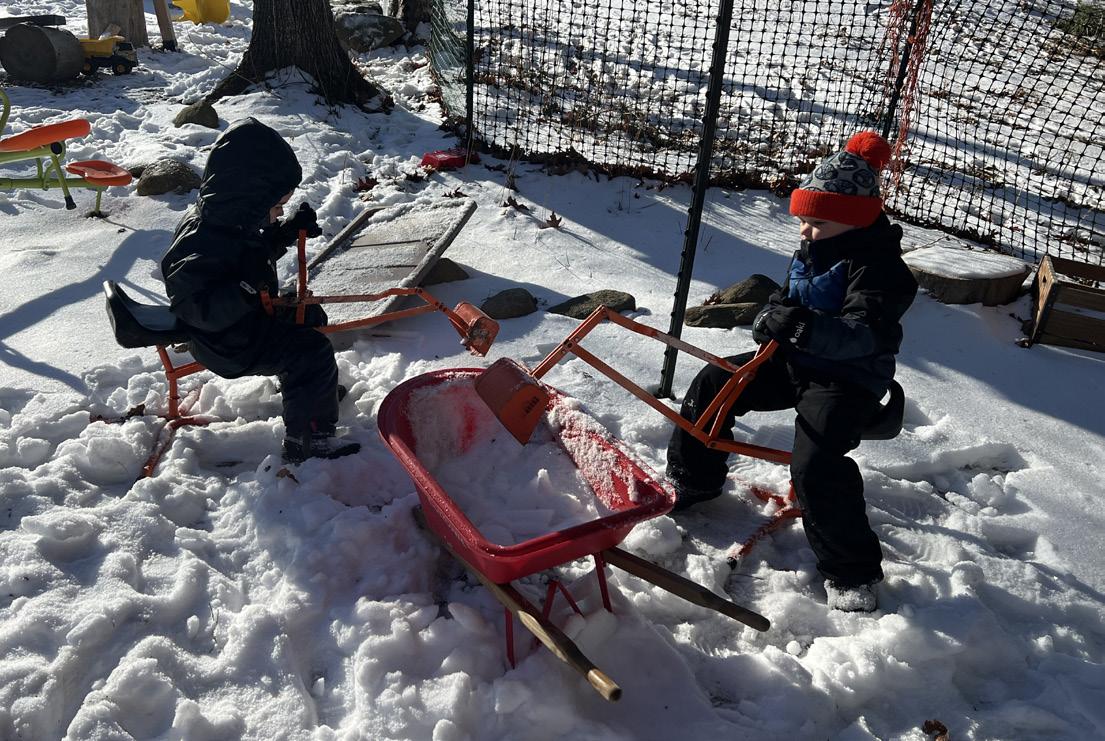
With the funds from this MEEA grant, our PreK classroom was able to supply this year’s students (and many future ones) with high quality foul weather gear including WATERPROOF(!) snow suits, as well as neoprene snow boots, winter mittens and wool socks. This gear meant we ALL could have so much more fun, much more time to make meaningful connections in nature, and “so much less complaining about being cold!” as our PreK team has shared. There was never a hesitation if a student didn’t arrive with appropriate gear for the weather- we had something for them to borrow and get on with our adventure. Our school actually welcomed a handful of three year old students mid-year, and will be launching one of the first official public three year old preschool programs in the state by next Fall. This gear has become indispensable, critical to the hours and hours of successful play outside during some of the most challenging times of the year, especially by our newest and youngest students.
The Oaki snow suits in particular surpassed our expectations, and we certainly put them through all manners of weather and water exploration. Trees were climbed. “Skating” on the icy marsh was possible, especially with the warm boots and padded snow suits to cushion their falls. Many quiet moments forest bathing in the snow were had. When the rest of the school had many indoor recesses due to rain, we were able to go out and relish the puddles and mud. One of our favorite memories from this year was the impromptu mud slide the students initiated during the snow melt and rain fall one March morning. I’m quite certain this is a fond memory they will carry with them, as well as their growing appreciation and respect for nature.
Foul-Weather Gear
TELSTAR FRESHMAN ACADEMY
Norm Greenberg
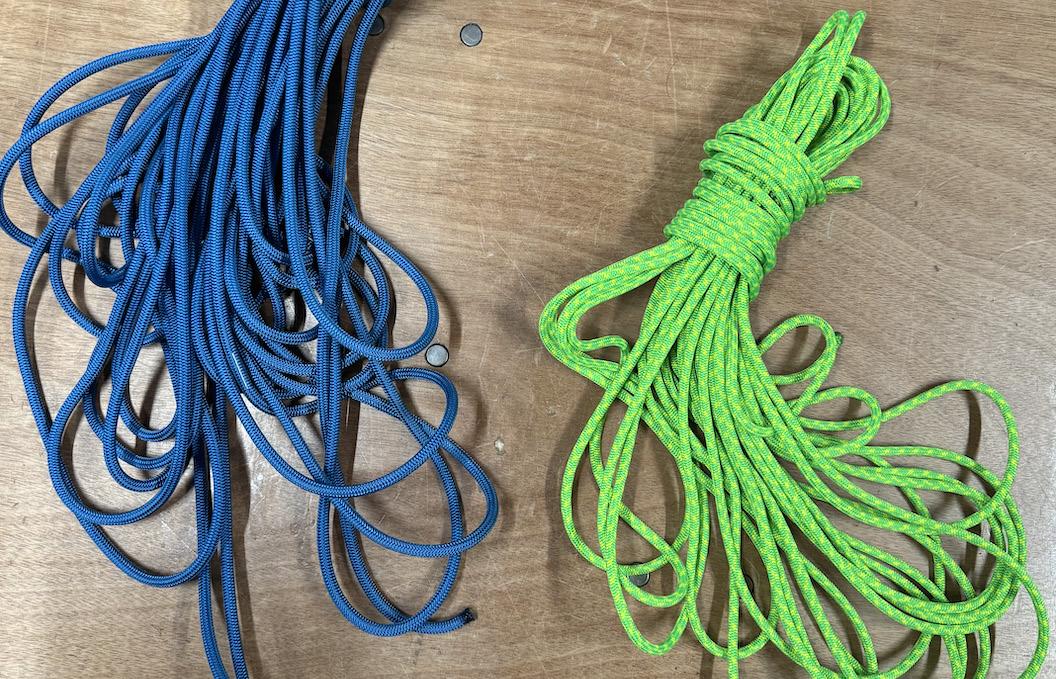
Many of our students do not own rain coats, so they are somewhat restricted from participating in outdoor activities, academic or otherwise, in school. In the past, if it was raining, they had to accept getting wet in order to go outside, for school or for fun. This discouraged their participation and their learning. With the great selection of sizes that we now have, every student has an equal opportunity to participate and to learn. The raincoats that were purchased with MEEA grant money went on our recent 3 day/2 night canoe trip on Richardson Lake, and helped keep our students warm and comfortable. The rest of the grant money was spent on accessory cord to create prussik loops and cordelettes for tying anchors during our rock climbing unit in Outdoor Leadership. We try to make our curriculum as hands on as possible, so having a piece of equipment for each student, or each small group of students when they are working in groups, is critical to maximizing engagement and understanding. This new cord will increase the number of equipment and allow us to achieve this goal.
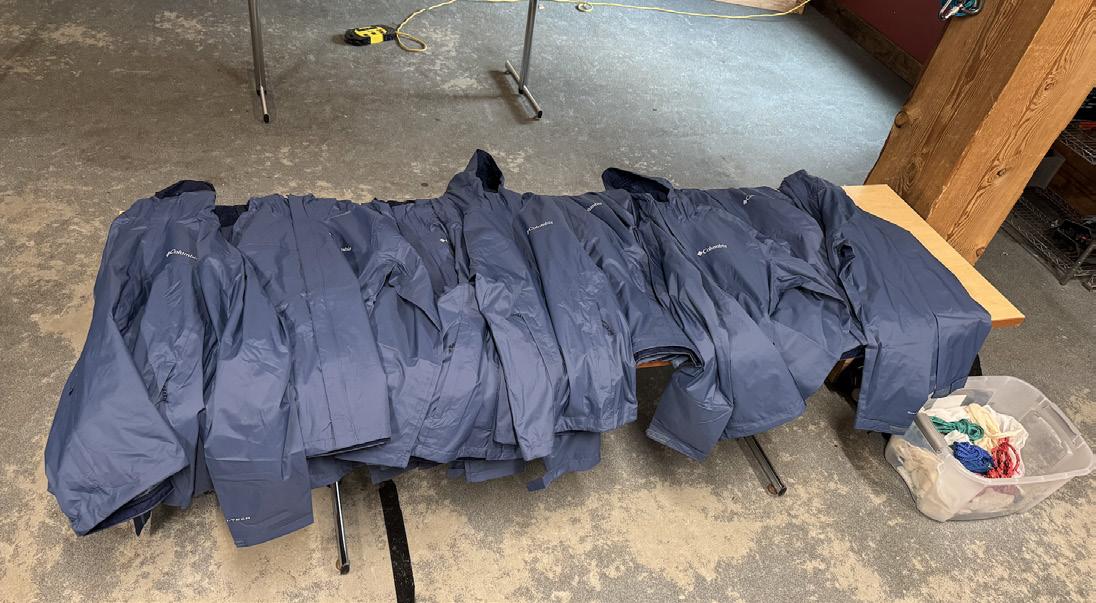
UNION ELEMENTARY SCHOOL
Kristi Todd
Thanks to the generous grant from the Maine Environmental Education Association, our kindergarten class at Union Elementary School has been equipped with rain suits that have transformed how we learn and explore. These rain suits have made it possible for our students to go outside in all types of weather, unlocking new opportunities for hands-on, experiential learning that directly supports the Next Generation Science Standards (NGSS) for kindergarten.
With the ability to venture outdoors on rainy days, we’ve taken full advantage of our natural environment to explore scientific concepts. Students have experimented with various materials to observe and test what sinks and floats. Building on this experience, students have planned, drawn, and written about boat designs using materials that float, connecting literacy and science through Science Technology Engineering Art and Math-based learning. They’ve then created boats and tested their designs in large puddles, revising ideas based on their observations—mirroring real-world scientific inquiry.
Students have also played with the concepts of motion and forces as they have discovered how wet slides increase speed, linking to physical science standards. Splashing in puddles and observing the flow of water has sparked curiosity and joy while deepening understanding of water and weather-related phenomena.
This increased outdoor time has had a noticeable impact on classroom engagement. After rain suit adventures, students return to the classroom more focused and ready to learn. Their excitement is contagious—every rainy day, someone exclaims, “This is the best day ever!”
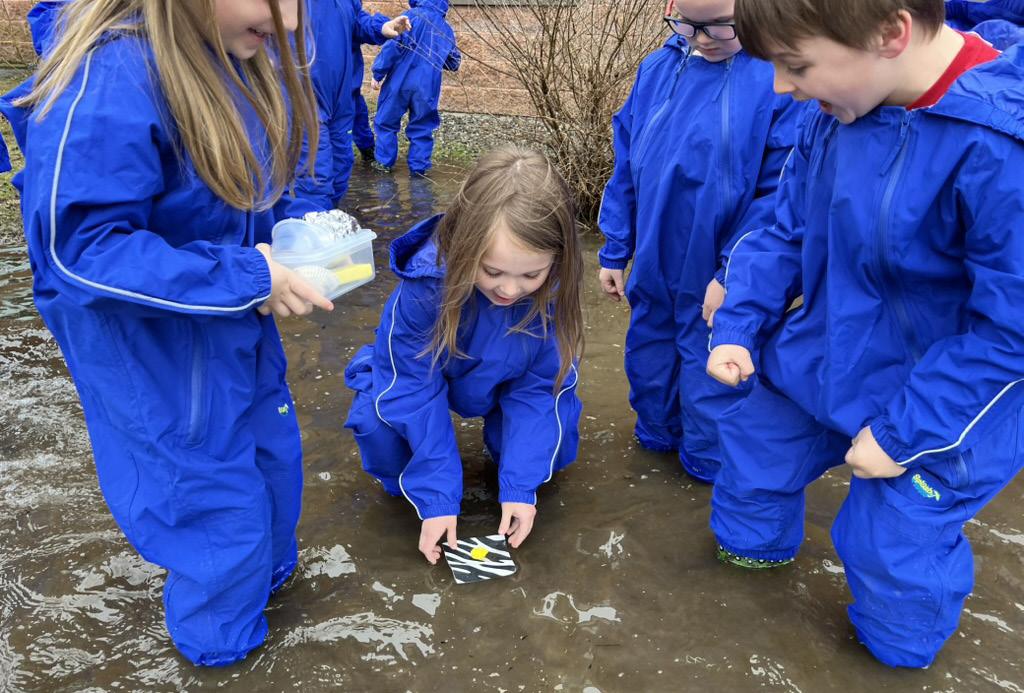
Foul-Weather Gear
VEAZIE COMMUNITY SCHOOL
Loyann Worster
The Mini Grant for outdoor gear awarded to Veazie Community School’s Pre-K program has helped improve our approach to outdoor learning. With the support of this grant, we were able to acquire high-quality, weatherproof gear for teachers. This allowed visitors, specialists, paraprofessionals and therapists to join us in the forest.
One of the most significant impacts of this grant has been to open the accessibility of nature visits to other adults. In the past, concerns about cold, wet weather often limited who might want to join our outdoor activities. Now, it is common for paraprofessionals to lead children from our early childhood program down to the stream to join us for exploration. Some days a speech therapist or special education teacher takes the journey to the forest with us.
Attaining gear for teachers benefits the students in many ways. Teachers with proper gear are more excited to go outside, and are more tolerant of cold and wet weather. When teachers have a positive attitude about spending time in the rain and cold, students will too. When adults and children share joyful nature experiences together it strengthens their relationship with each other- leading to higher learning outcomes.
With the proper gear, more adults are able to join our class in the forest which means a stronger adult:child ratio. With more adults wearing waterproof boots and pants, children are able to participate in more risky play around teachers who are prepared for anything. The photos show a favorite spot of the children this year: the stream. Teachers were able and willing to join them at the edge, inching closer to explore waterfalls, ice formations, and spring insects. Children and teachers explored together through fresh deep snow, frozen ponds, and the wet spring thaw.
Overall, the Mini Grant for outdoor gear has been instrumental in enhancing the quality and effectiveness of our outdoor learning program at Veazie Community School. By providing essential gear that supports all-weather outdoor exploration, this grant has empowered our adults to embrace the wonders of nature. We are incredibly grateful for this opportunity.
W.G. MALLETT
Hannah Goodenow
I feel so grateful that I have been able to purchase enough rain gear for all Pre-K students at Mallett school to have what they need for their bodies to stay dry in all play!
We were so excited to be able to pull our rain pants on and button our new rain jackets to puddle play and plant on a spring rainy morning! Our kiddos had been waiting with excitement to plant their grass head cups outside, however the rain decided to show up. We didn’t let that stop us and we were all able to dress appropriately to stay dry and experience the love of mud and puddles. We worked together to plant our cups and one child was so excited that “nature was watering our seeds for us!” Thank you for helping us have exactly what we need in order to enjoy play in all weather!
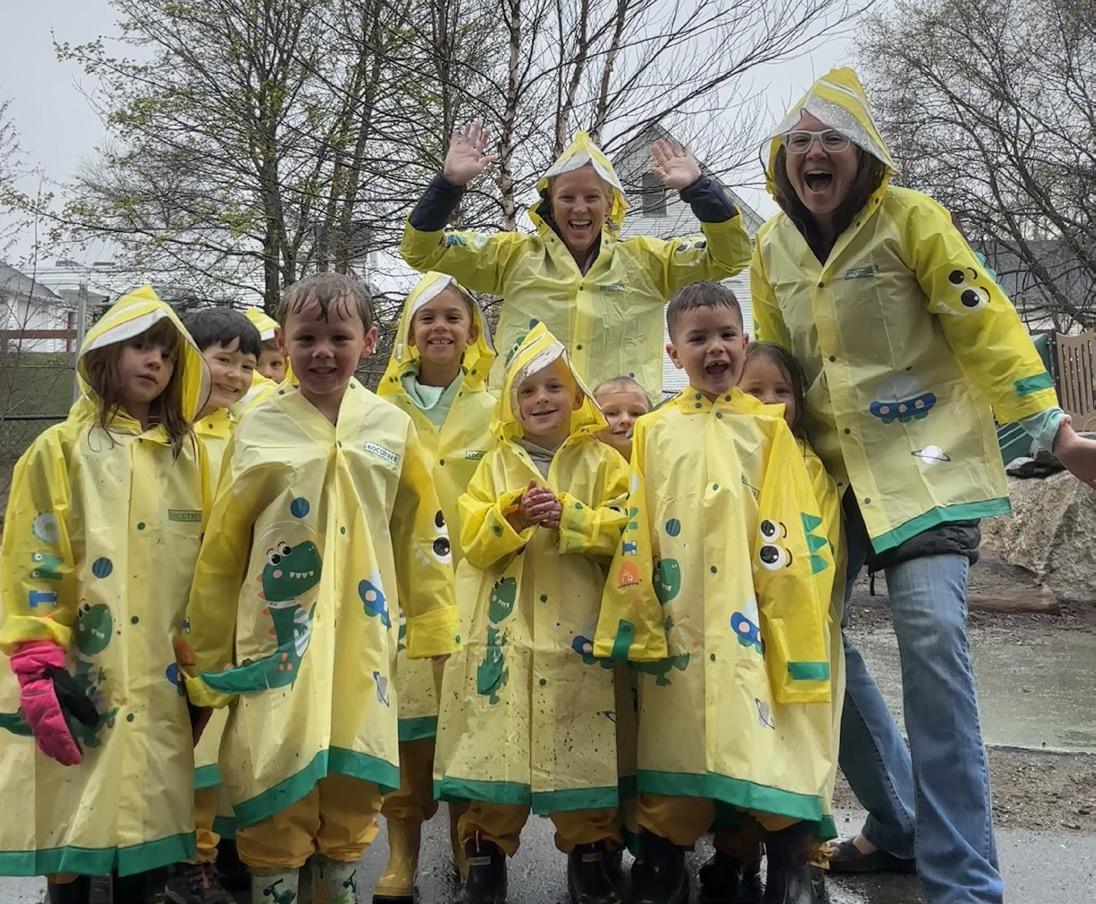
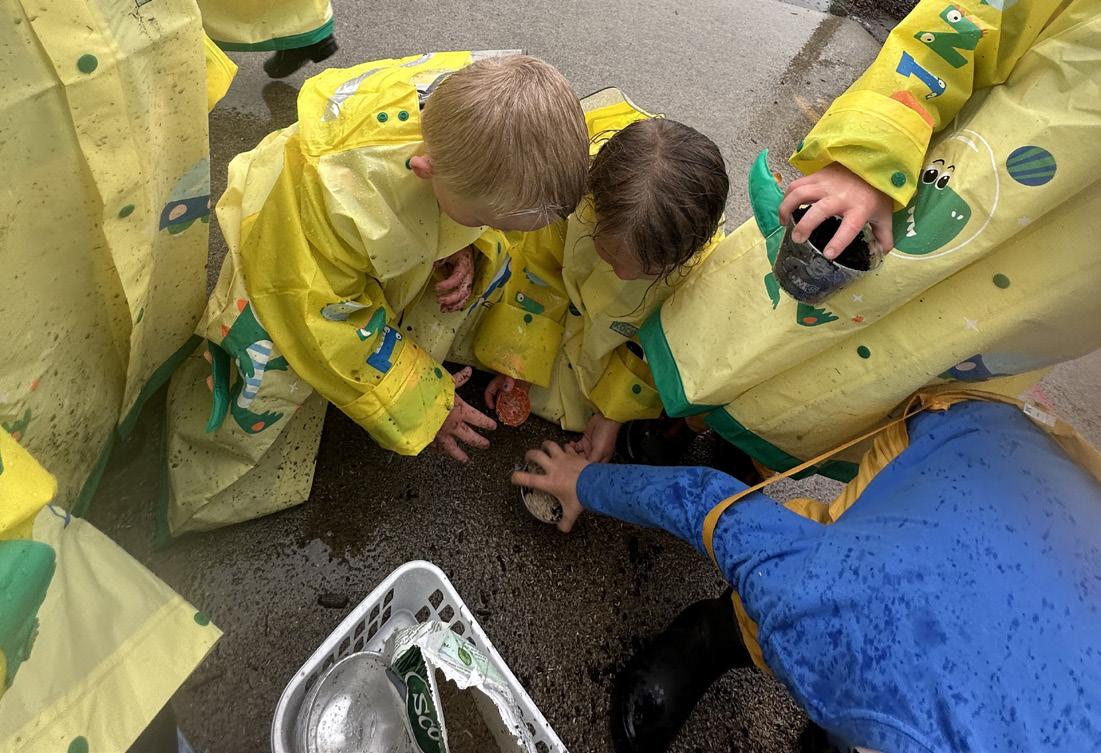
Foul-Weather Gear
WISCASSET ELEMENTARY SCHOOL
Becky Hallowell
Students at Wiscasset Elementary School have been enjoying the use of raincoats, waterproof gloves, and waterproof journals. It is our goal to take kids outside, regardless of the weather. The raincoats and gloves allow them to be out in the rain and snow, and they love the freedom that comes with having the appropriate gear. They can comfortably play in the rain, observing how the leaves collect water and jumping in puddles.
The rain jackets have become a beloved resource throughout the school. Students from pre-k through fifth grade come to visit the fourth-grade gear library when a field trip day proves to be wet. On a stormy May day, the younger students headed to the Coastal Maine Botanical Gardens wearing bright yellow raincoats. Kids who had their own raincoats still wanted to wear the yellow raincoats to match their peers, and because there was a “cool” compass on the sleeve.
We have an outdoor classroom on the Sheepscot River where the students feel calm and safe, so we use this space for a sit spot routine. In the past, the students have been frustrated when rainy, damp weather ruins their journals. Now they love taking out the waterproof journals in any weather. They feel more like real naturalists, going outside all the time, not just when the conditions are ideal.
This MEEA grant has made accessing the outdoors, regardless of the weather, a reality for all our students. It has created an equitable situation where everyone has what they need to enjoy nature.

WOODSTOCK ELEMENTARY SCHOOL
Samantha Grosso
At Woodstock Elementary School, outdoor education is becoming an essential part of how students learn and grow. With the support of a grant from the Maine Environmental Education Association, our kindergarten program took meaningful steps this year to expand place-based, outdoor learning—giving all students the opportunity to explore, discover, and connect with nature as part of their daily experience.
The project focused on building equitable access to outdoor learning, especially in our youngest grade. Grant funds were used to purchase critical gear that supports frequent, safe use of outdoor spaces: weather tools for real-time observation, materials for creating cloud finders, and essential outerwear such as rain boots, ponchos, and orange safety vests. These items removed barriers for students who may not otherwise have appropriate clothing or supplies and made it possible to take learning outside in all types of Maine weather.
Implementation began with our science units, and the results have been powerful. Whether recording weather changes, exploring the forest playground, or reading under the trees with third-grade reading buddies, students are fully engaged and invested in their learning.
This project has laid the foundation for a sustainable outdoor learning culture at our school. Thanks to this support, students are not only meeting academic standards, but also developing a lasting appreciation for the natural world around them.
One kindergartener summed it up perfectly: “I like learning outside because it smells like trees and it feels like I’m free!”
A colleague shared, “The gear made such a difference. We didn’t have to hesitate—we just went outside, even on misty days. It made outdoor learning feel normal, not just a special treat.”
Garden & Greenhouse
ASHLAND DISTRICT SCHOOL
Anna Belanger
Thanks to a grant from the MEEA, fourth grade students from Ashland District School worked to add an additional four raised beds to our garden area. The students got to be a part of the complete process. Students got to use drills and hammers to assemble the beds in the school’s shop. Students used cedar lumber to build the beds and added hardware cloth to the bottom to help protect the gardens from animals. For many of the students, it was the first time working with these tools and while a few were nervous to start, it give them a big confidence boost. “I didn’t know I could do that!”
We added the beds to the garden area that is in the middle of our bus loop. ADS students will get to see the progression of the beds each day as they ride in on the bus. Each of the beds were filled with compost material, loam donated by Rafford Construction and Coast of Maine Castine mix.
On June 11th, Veggie Day of our ABC countdown, the elementary students, grades PreK to fifth grad, transplanted tomato, pepper, cucumber plants that had been started in their classrooms. Additional rows were filled with carrots, zucchini, garlic and other vegetables along with flowers to help with pollination. Each class also made something to help support pollinators in our community – butterfly feeders, bee watering stations, butterfly houses and mason bee hotels. All student were excited to take home their creations and help the pollinators in their own backyards. Everyone involved agreed veggie day was a WONDERFUL day and the PreK students even said they were already looking forward to next year with the garden lady!
We are excited to work in the garden and get vegetables out to our community with the building of a farm stand this summer. We look forward using the vegetables in our school cafeteria again– the carrots were a big hit last fall!
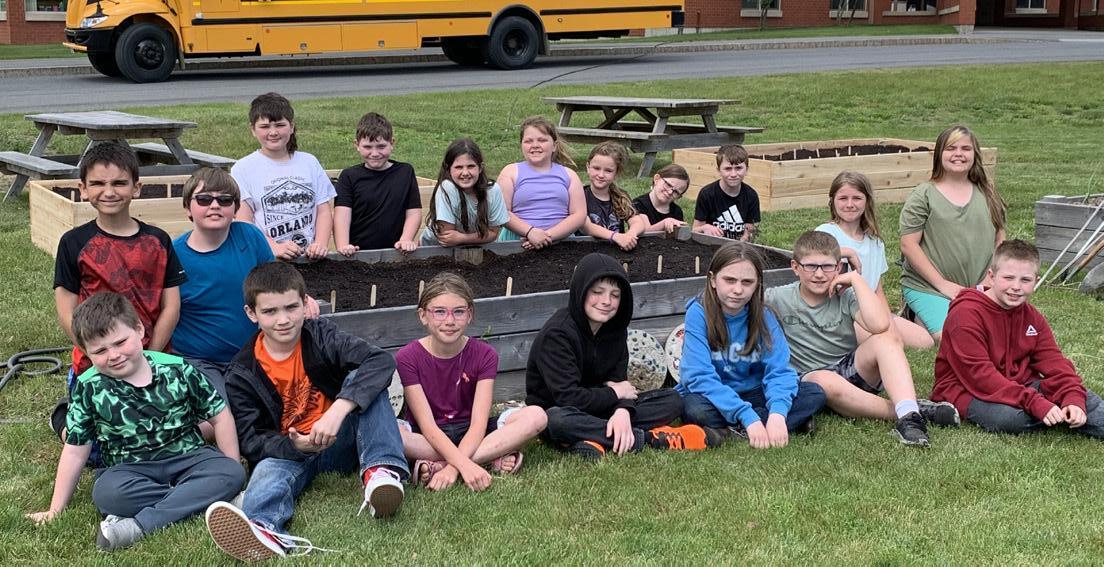
FAIRFIELD ELEMENTARY SCHOOL
John Bicherl

For nearly a decade, the greenhouse at Fairfield Elementary School sat idle—forgotten and overgrown. This year, thanks to grant support, we were able to bring it back to life. Students led the charge: organizing supply lists, planting seeds, and making daily trips to the greenhouse to tend to their plants during earned break time.
Before we could grow anything, we had to reclaim the space. Students inventoried leftover supplies—pots, trays, tools—and helped determine what could be reused. Tables were cleaned, relocated, and rearranged to optimize sunlight and airflow. With each small improvement, the greenhouse began to shift from abandoned to inspiring.
The project quickly became more than a gardening experiment—it became a tool for self-regulation, responsibility, and pride. Watching flowers sprout from tiny seeds gave students a sense of ownership they don’t always get to experience. At the end of the year, students hand-delivered their blooms to classrooms for end-of-year celebrations, or brought them home as gifts for their families.
A special shout-out goes to our custodial and facilities staff. Once they saw the success our students were having, they jumped in to make sure everything worked—repairing fans, checking heaters, and supporting our efforts every step of the way.
We also learned a lot: especially how hot the greenhouse gets in late spring—nearly 120 degrees! That discovery led to our plan for next year: a two-part growing season with vegetables in the fall and flowers in the winter. What began as a simple restoration has grown into a lasting part of our school culture— something beautiful, blooming right in the center of campus.
Garden & Greenhouse
FRANK I. BROWN ELEMENTARY SCHOOL
Tammy Nason-Tierney
The Brown Elementary School Green Team was so excited to learn that our proposal to build a school garden was granted by the Maine Environmental Education Association! We purchased and filled five 4 x 6 ‘ raised garden beds and augmented current infrastructure to create tool storage and organization with quick access to our new outdoor learning spaces.
This spring Brown School took part in a food waste study through the University of Maine’s Mitchell Center for Sustainability Solutions, Maine Food Rescue Team. Check out our school’s story on Maine News Channel 13 on the WGME website! Garbage to Garden is a supporting partner of this study, so it only made sense for us to purchase our raised garden beds from them. Each grade level in our K-4 elementary school now has 24 square feet of growing space in beds filled with the compost mix created from our own school waste! Many classrooms spent the last weeks of the school year filling the beds with their own vegetables starts, watering young plants, and even enhancing the soil with their school-made worm compost!
After planting the seeds in the garden, one of the children exclaimed, “Oh it’s a kindergarden- do you get it?!” to his teachers.
The MEEA grant and the outdoor learning spaces it helped create were a serendipitous coincidence as the school district’s theme for 24-25 was “Together We Grow.” Thanks to your support we are growing peppers, zinnias, beans and even more importantly, we are growing curiosity, responsibility and a deeper connection to the natural world.
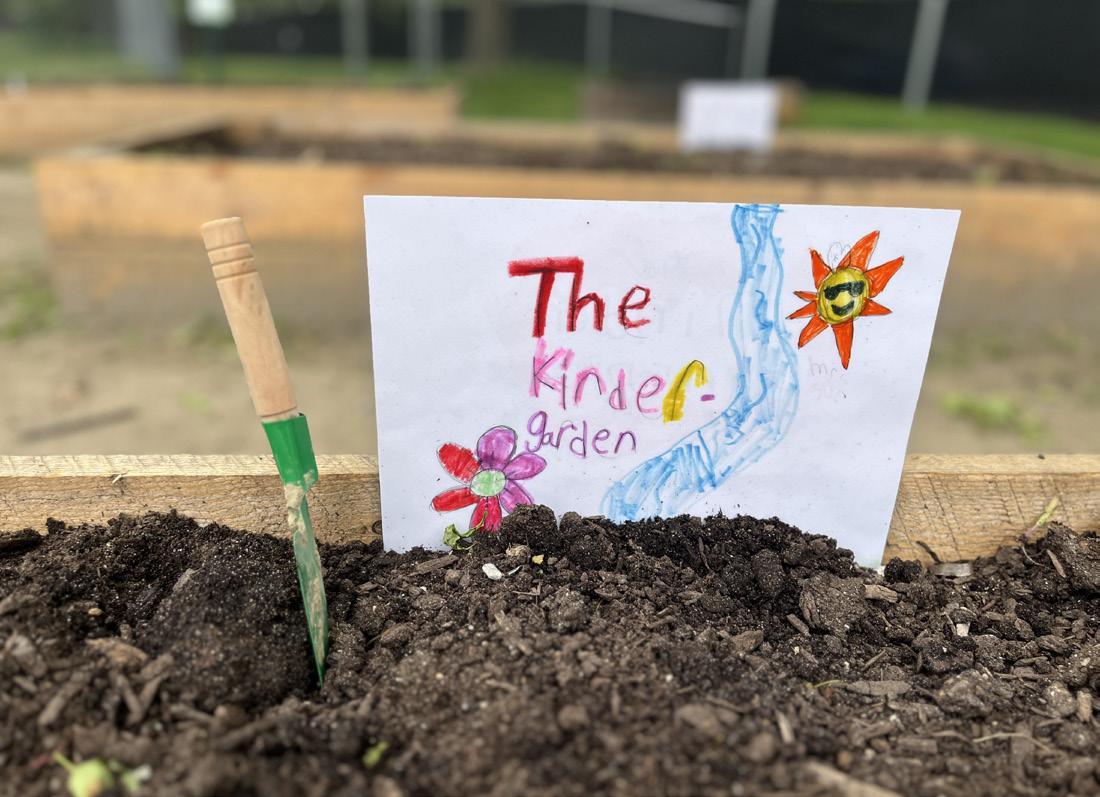
HARRISON ELEMENTARY
Samantha Geer
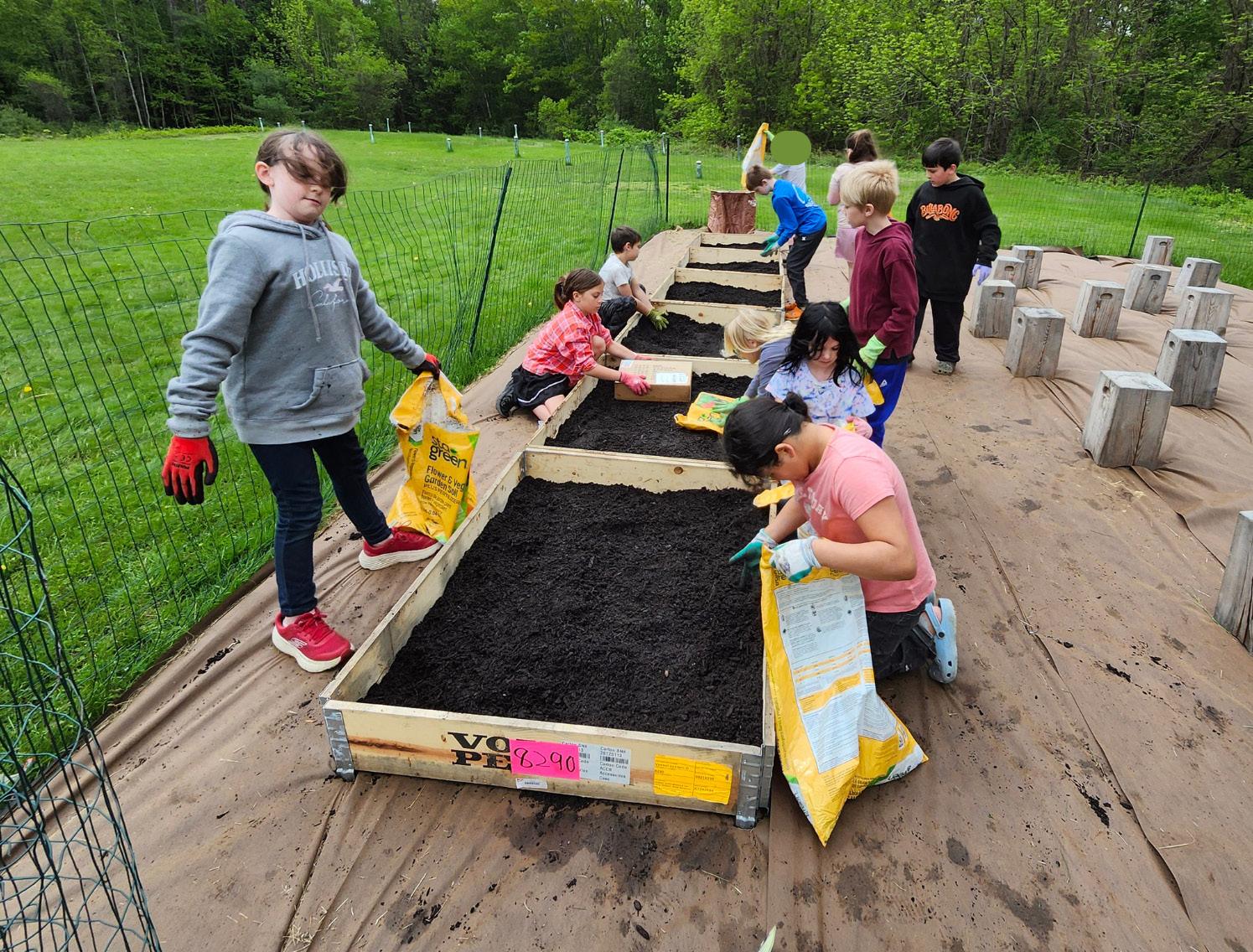
We are so thankful to be able to expand our garden and offer our students such a meaningful and engaging space to learn. Students thoroughly enjoy getting out in the garden everyday! One teacher shared that every morning they have students asking if they are going to go out into the garden and they are disappointed if we aren’t able to get out there. Past students also have very fond memories of setting our our initial garden space and still talk about it years later!
Thanks to the MEEA mini grant, we were able to create a usable outdoor learning space that all students in the school will be able to benefit from. Whether it is to use the outdoor seating for a peaceful setting during writing, getting handson science lessons by planting, or using math skills to plot the location of the different plants, there are so many ways for students to get outside and enjoy the garden space.
One of our goals for this year was to plant enough vegetables that every student can go into the garden and pick something to enjoy, and ultimately we will make theme gardens for students to make recipes from the garden.This year we focused on simple veggies such as cherry tomatoes, beans, and ground cherries. Ground cherries are a big hit from students going on field trips to Roberts Farm, so we are very excited to add them to our garden space!
Creating this new garden space took a ton of work from the entire school and I can’t wait to see how it continues to engage students through the years. This project not have been possible without this mini grant, so thank you!
Garden & Greenhouse
KATAHDIN PROGRAM
Christine Fredette

The garden program has had a huge impact on our program in past years. It had fallen into disrepair (plastic torn, hoops leaning and full of weeds), and needed some love and attention. With a small group of students we were able to rebuild the structure, install an irrigation system and reintegrate farm to school into our curriculum. Without the grant funds to improve the infrastructure we would not have a “garden project”. This project provides produce to the cafeteria, and any surplus goes to our food insecure families. Teaching students how to grow their own food, trying foods outside of their comfort zone and getting them outside while doing it is central to this program. Changing habits while teaching life skills is just one of the goals of our program.
Students have tried spinach in smoothies, spanikopita (spinach pie) and we were able to offer our cafeteria with enough spinach to provide for the high school’s lunch. Seeding, growing and harvesting these vegetables increases the likelihood that students will try them and like them. When they tried the smoothies with spinach they said, “there is spinach in here?!” or “I love this spinach pie stuff, this is amazing!” Without these funds, we would not have been able to move forward with this project. Thank you!
LISBON COMMUNITY SCHOOL
Hanna Stevens
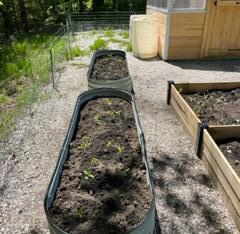
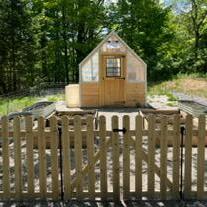
This project has been enjoyed by many classes, and individual students. Some of our classes started the seeds in their classrooms, and then were able to transfer them into the green house once it warmed up. Other classes signed up for planting in the raised beds, which has been wonderful. The students involved have put in the work caring for these plants. Other students have helped shoveling soil into the raised beds, which was more work than expected! As a school counselor, I work one-on-one with many students and most have chosen to do their counseling session at the green house while helping the project along. Another notable experience was with some students who were struggling in class making good decisions... we would take a walk to the green house and check on the plants while making a plan for returning to class. Every time I did this with a student, they had a successful day afterward. This project has been so exciting for the kids -- it gets them outside, gets their hands dirty, makes them curious about plants and nature, and most importantly keeps them engaged. I cannot tell you how often I am asked by students to go to the garden! We are hopeful to see some progress with the plants before school is out!
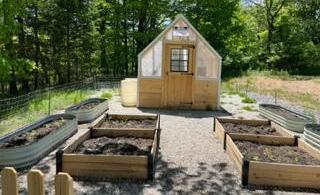
Garden & Greenhouse
OLD TOWN HIGH SCHOOL ALTERNATIVE EDUCATION
Bryan Murphy
The MEEA grant has been a great supplement to our gardening work at the school. Over the last five years, our program has established and maintained a school garden. Our garden and harvests have multiple purposes: donation to the local food pantry, educational opportunities for the students, and an opportunity to demonstrate “farm to table” for our students.
Working with Rogers Farm, UMaine’s crop research facility, students frequently are able to assist in prepping, planting, and harvesting a variety of crops. This year, students participated in the planting of a large crop of carrots (among other things), which will be harvested in the Fall. The MEEA grant allowed us to purchase material to construct a root tumbler, that will make cleaning the carrots more efficient. Once constructed, the hope is that, in addition to our students being able to use it, Rogers Farm and the local elementary school can also use it, as needed. It is meant to support area youth and their gardening efforts.
The other major purchase with the MEEA grant was an outdoor pizza oven. This purchase supports our program’s vision of engaging students with our gardening efforts by demonstrating that there are a variety of ways to incorporate fresh, locally grown vegetables and herbs into things most people typically enjoy. We feel it is important that students experience the “farm to table” aspect of our gardening. As we prepare the food together, we are also able to reflect on the prepping, planting, maintaining, and harvesting of it, as well. As Max Hase, staff member in the program points out, “Though the level of stoke can be a bit low sometimes during the grind of gardening, when the pizza is launched into the oven, and then a few minutes later, the students see their ingredients on the plate, it is all worth it.”

ORONO HIGH SCHOOL
Jen Branchflower
The Secret Garden is working to create a beautiful space in an enclosed courtyard that allows any high school group to engage in outdoor learning, formal or informal in the space. There is quite a bit of student learning occurring as students imagine and then execute various projects as the garden develops. Our vision is that it will be used by many teachers in a variety of outdoor learning projects.
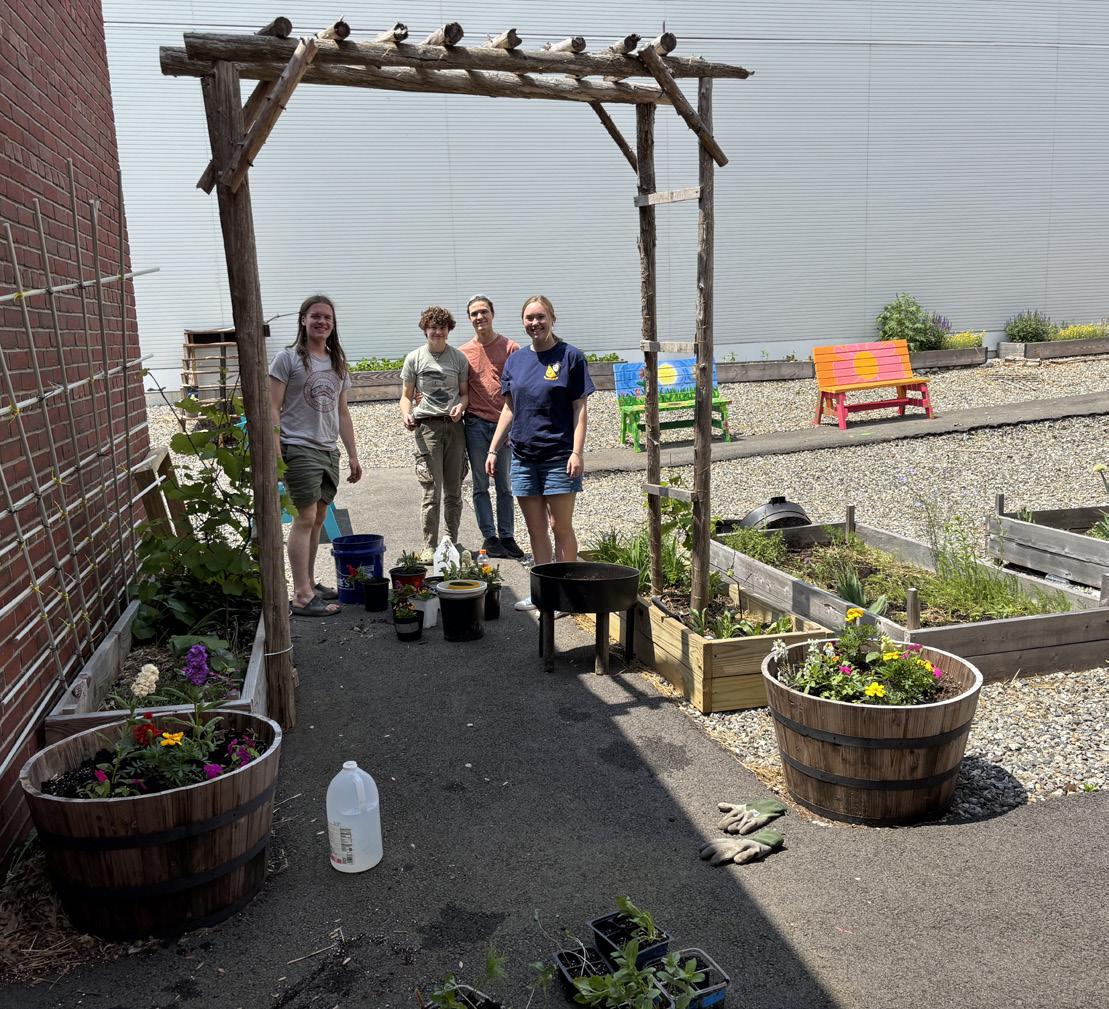
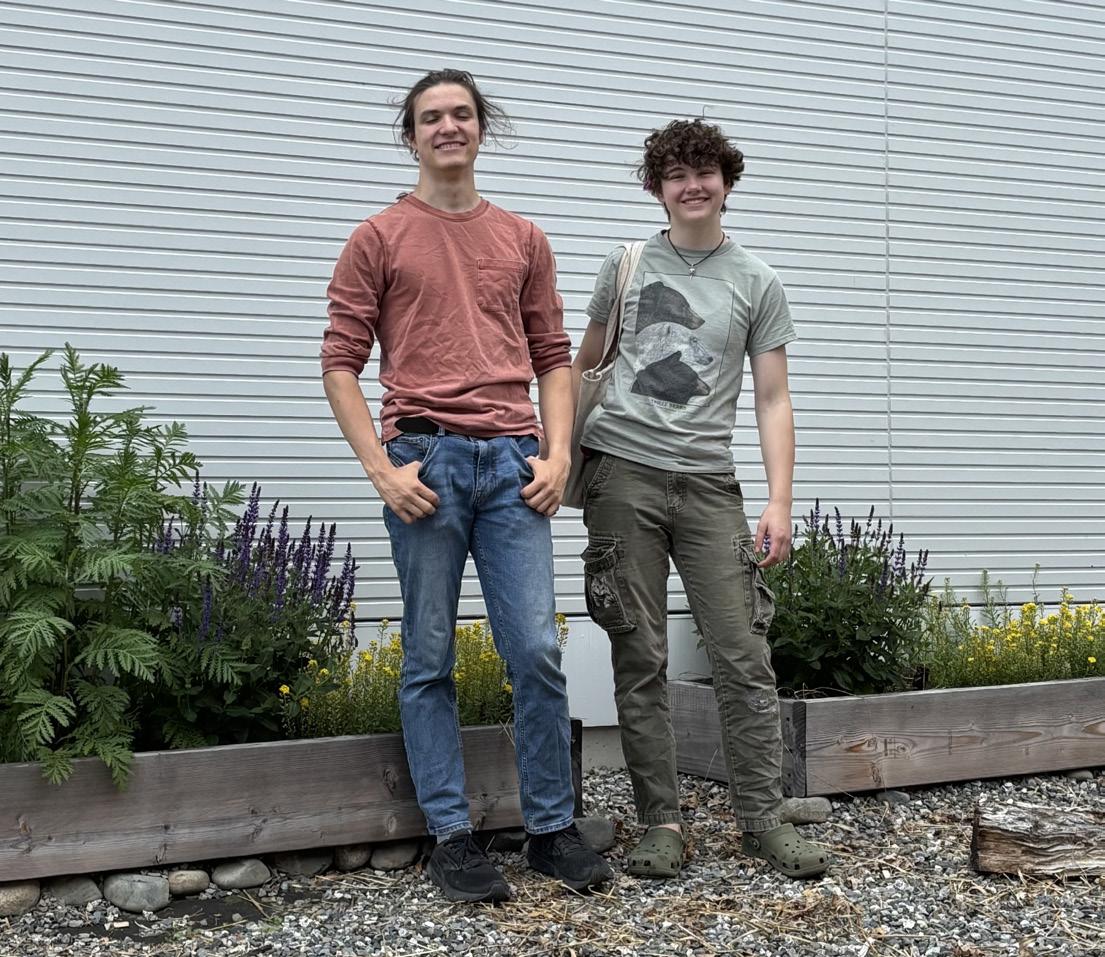
Jessica Archer ORONO MIDDLE SCHOOL
Our school community garden is strategically located between the high school, middle school, and elementary school, so it is accessible to students in all grades. Middle school students partner with students from the elementary school to work and learn in the garden together. Being in nature supports mental health. Students use the school community garden to take care of their mental health while learning about plants and organisms that use the soil. The students use this space for not only learning, but for mindfulness, too. Social emotional learning is essential in today’s world, and this outdoor space is perfect for connecting with nature while learning with classmates.
One seventh grader said, “Our garden is so full of life, and every visit is a new and different experience!”.
And, from a second-grade student after planting his squash seedling, “I can’t wait to come back in the fall and see how big my plant is!”
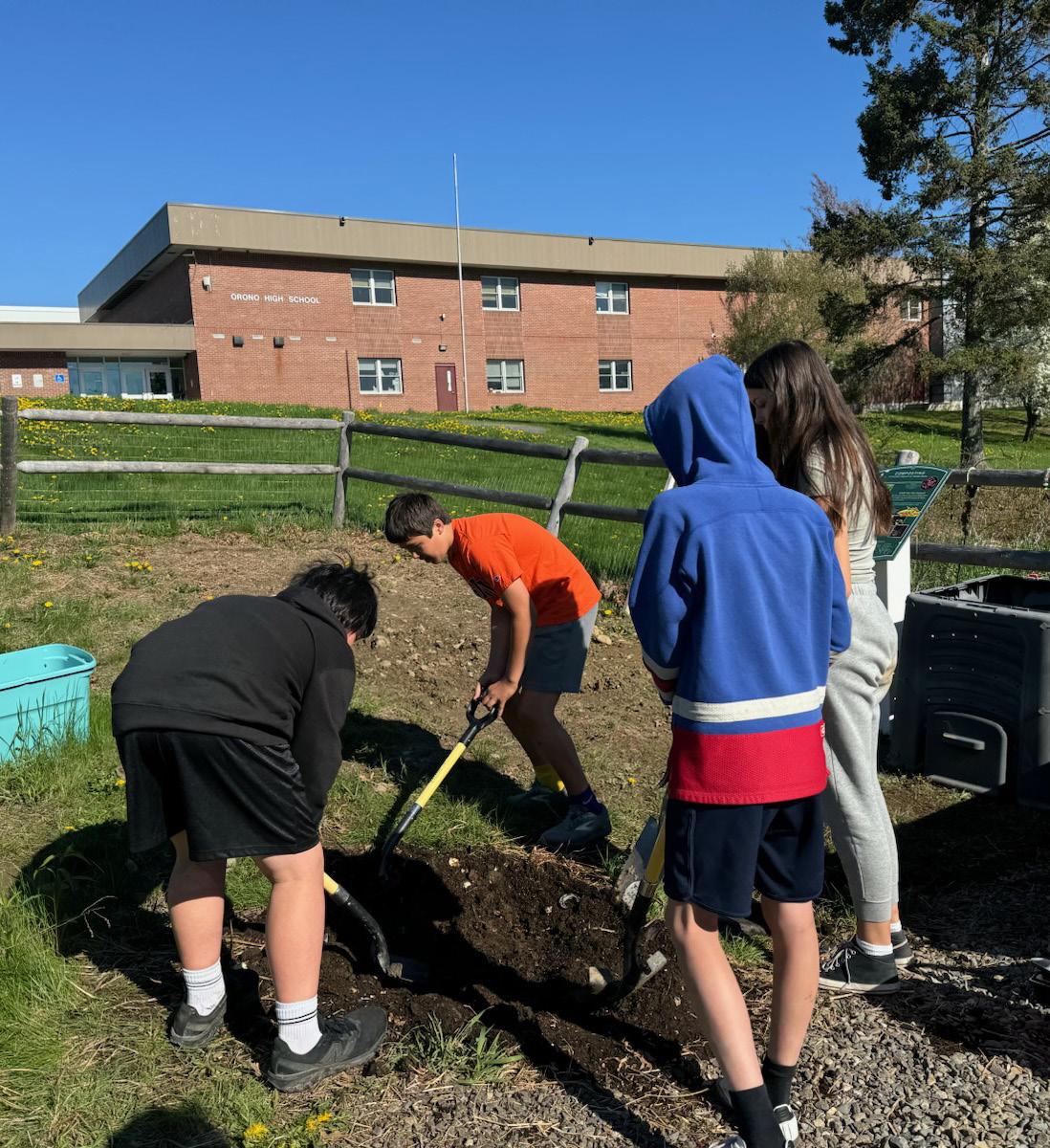

This project supports our culture and diversity efforts in our school district by acknowledging the importance of Wabanaki culture and their connection to the land. Students created a Three Sisters Garden by preparing the new space for optimal growth of the three crops based on research and consulting with experts who have grown these crops. An educational weather-proof sign was designed to educate visitors about this new addition to the school community garden. A seasonal outdoor, weatherproof library will store books that include information about plants used by the Wabanaki as well as other traditional stories involving their culture and connection to the land. Books about gardening and related concepts (pollination, decomposers, etc.) will also be available in this outdoor library. Seventh-grade students visited the University of Maine’s Rogers Farm twice this year to learn about gardening practices, invasive species, composting, pollination, PFAS in the soil, and the Wabanaki connection to the land. The school community garden has grown since its creation in 2020 into an outdoor learning space for students to learn about plants, pollination, composting, symbiotic relationships, soil health, and how to best take care of nature and all it has to offer.
Garden & Greenhouse
OTISFIELD COMMUNITY SCHOOL
Jessika Sheldrick
Like many schools across Maine, our outdoor learning program continues to evolve and expand. With features such as a themed garden, pollinator garden, a mini hiking trail, and reading hammocks, we have worked hard to create engaging outdoor spaces for our students. This year, thanks to the generous support of MEEA funds, we were able to take a significant step forward by purchasing two weather-resistant outdoor bubbles—one designed for wet/cold conditions and the other for wet/hot days.
These structures allow our students to enjoy outdoor learning in any weather, ensuring our programming remains consistent and impactful throughout the year.
A highlight of this project was the authentic student leadership it inspired. A group of sixth graders took on the challenge of assembling the bubbles, working collaboratively with minimal adult guidance. As the project unfolded, student leaders naturally emerged, organizing their peers, assigning roles, and setting shared goals. Their sense of ownership and pride was evident—not only in the finished product, but also in how they cleaned and maintained the space afterward. They even encouraged others in the school to treat the outdoor learning spaces with respect.
Since the installation, students have used the bubbles as spaces to eat lunch, read, and create art—bringing learning outdoors in a comfortable and inspiring environment. In addition, with the help of end-of-winter discounts and supplemental funds,
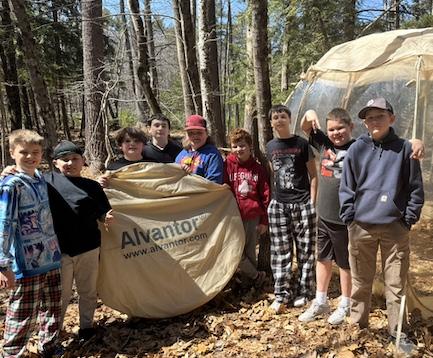
we were able to purchase several pairs of snowshoes. These will support students in exploring the outdoors even during snowy months. The wet/cold weather bubble also serves as a warming shelter, allowing students to extend their time outside safely and comfortably.
While we’ve yet to use the bubble during winter, it’s already proving to be a valuable resource during the spring and will continue to serve students year-round.
As Maine author David Sobel once said, “If we want children to flourish, to become truly empowered, then let us allow them to love the earth before we ask them to save it.” With continued support, we are proud to create spaces that nurture this love and empower our students to lead, learn, and grow—outside and in all seasons.
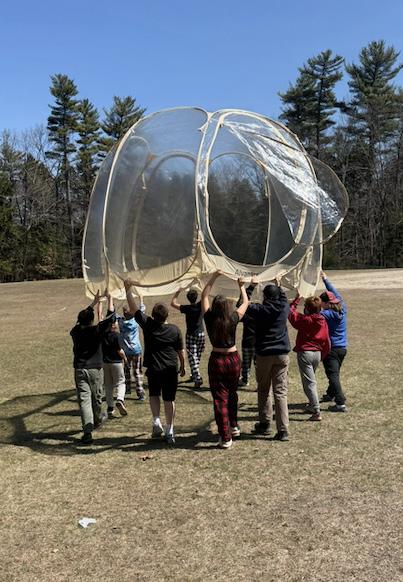
Garden & Greenhouse
SACCARAPPA SCHOOL
Kari Brown
With the generous grant funds, I was able to purchase a variety of educational resources, including decodable books tailored to students’ reading levels and specialized workbooks designed to facilitate learning about plants and their growth processes. These resources not only fostered literacy but also sparked a passion for outdoor learning among students.
A significant highlight of the Outdoor learning was the opportunity for students to engage in actual gardening. With the necessary supplies funded by the grant, students dug into the soil, planted seeds, and observed the remarkable growth of their plants. They learned about the different parts of plants—roots, stems, leaves, and flowers—while making real-world connections to their classroom lessons. As part of our gardening project, students completed a comprehensive writing unit, documenting their observations and reflections on their experiences. The students expressed overwhelming enthusiasm for the unit, with many stating that this outdoor learning experience was the best part of their year. Their excitement about being outside, collaborating with peers, and nurturing their plants has cultivated a deep appreciation for the environment.
The grant funding has not only enriched academic learning but has also created lasting memories and invaluable lessons for the students.
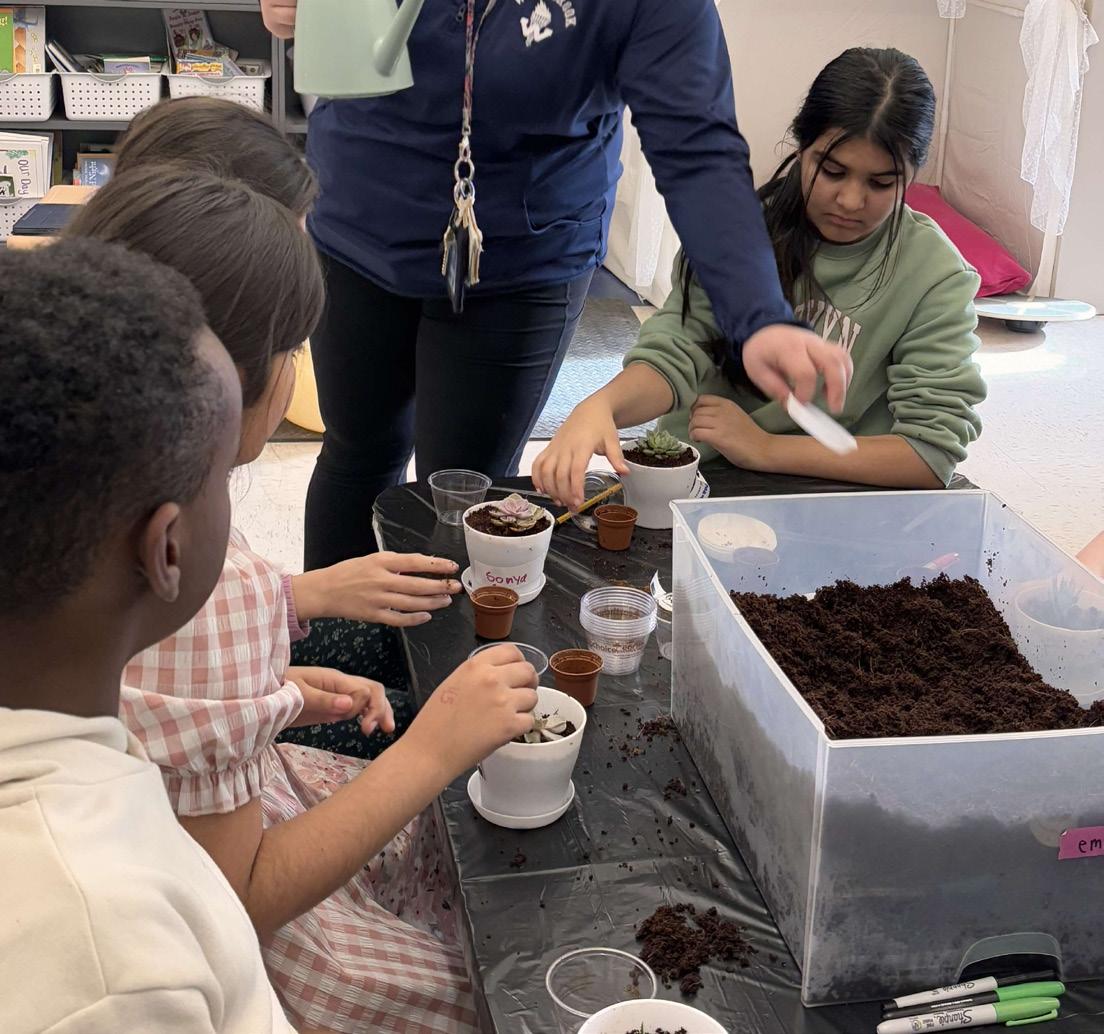
SEDGWICK ELEMENTARY SCHOOL
Beverly Hawkins
Our students got to experience the full maintenance process involved with our outdoor raised beds. They observed the need for new beds, built new ones, tore out the old ones, and set the new frames in place. They then could step back and appreciate the work involved and take pride in their part in the project. They “own” those raised beds now and see that they too can be a big part of the solution! Thank you!
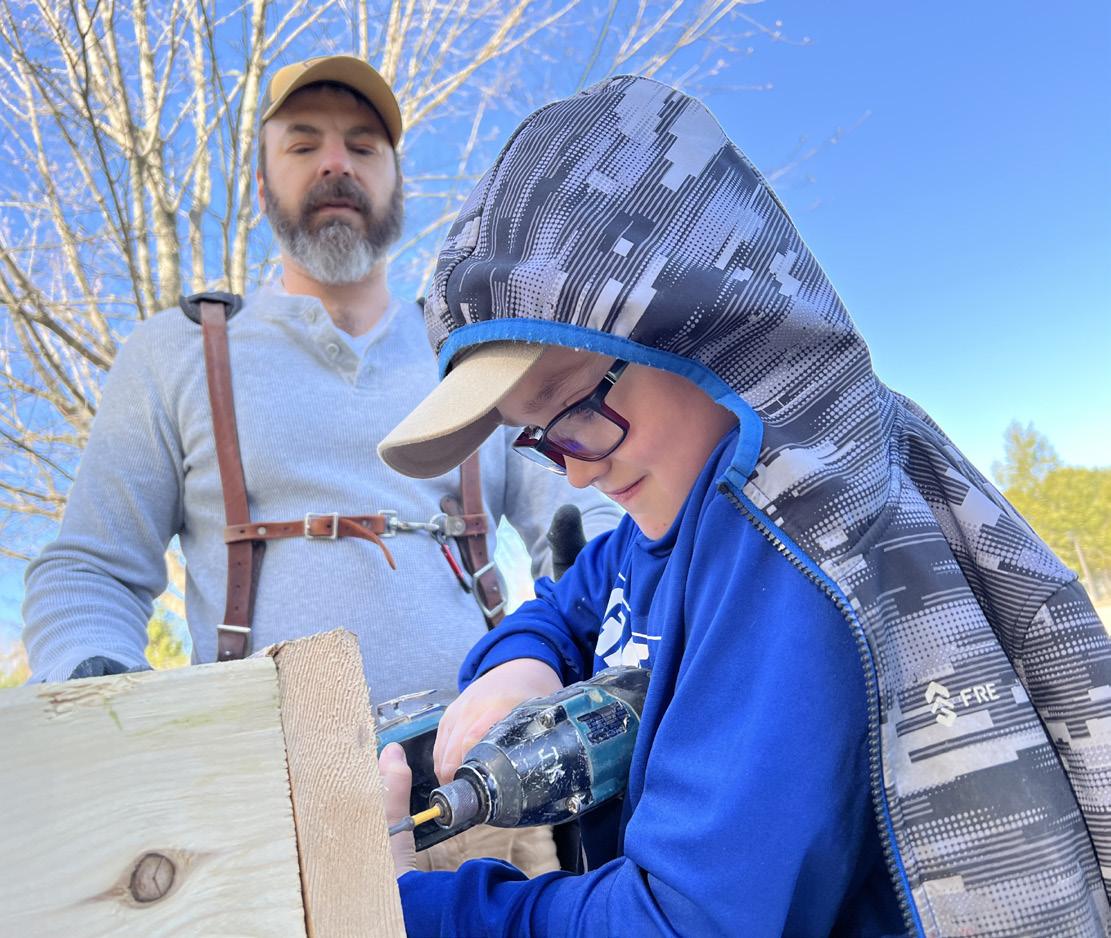
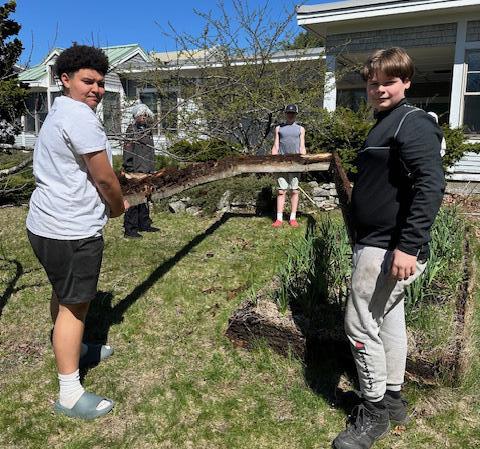
Garden & Greenhouse
SPRUCE MOUNTAIN PRIMARY SCHOOL
Susan Wiles

Our project aims to use composters and metal containers to create small-scale flower and vegetable gardens for students. By incorporating hands-on gardening into the learning experience students will gain a deeper understanding of plant growth, sustainablility, and the natural lifecycle of both flowers and vegetables.
The metal planters will serve as durable, reusable growing spaces for each student or small group. These containers will house a variety of plants, chosen by the students ranging from colorful flowers to nutritious vegetables. Through regular care, students will observe each stage of the plant lifecycle - from seed to sprout, full growth, flowering or fruiting, and ultimately seed production or decompostition. This will provide direct, meaningful insight into biological processes and environmental responsibility.
Composters will be used to teach students about organic waste recycling and soil enrichment. Students will collect food scraps and garden waste to create compost, which will then be used in their own planters. This process reinforces the concept of sustainability and shows how natural materials can be returned to earth in a beneficial way.
In addition to science education, the project supports interdisciplinary learning by incorporating math (measuring plant growth), language arts (journaling and labeling), and art (designing the planters). It also encourages teamwork, patience, and care for living things. By the end of the growing season, students will have developed a sense of ownership, environmental awareness, and practical gardening skills that they can apply at home and in their communities. Thank you for this opportunity for our students to gain planting knowledge, responsibility, and connections to the natural world.
SOUTH BRISTOL SCHOOL
Deb Thibodeau
The garden and apiaries at South Bristol School are an integral part of the learning that goes on in the Guidance Program to help teach social emotional skills. Gardening is instrumental in development of these skills when choosing what to plant, how we should plant it, caring for it, harvesting it and sharing it. Kids learn grit when trying to keep the garden alive during a hot dry summer and they have decided that the work is worth the harvest we reap. We enjoy participating in community programs. We were asked to be the host of the So. Bristol Historical Society Garden Tour this summer, which was very successful. Every student in the school puts their hands in dirt and aprox 80% of students put a bee suit on this year. The garden is also used as a therapy tool. Students beg to go out to the garden to work!!

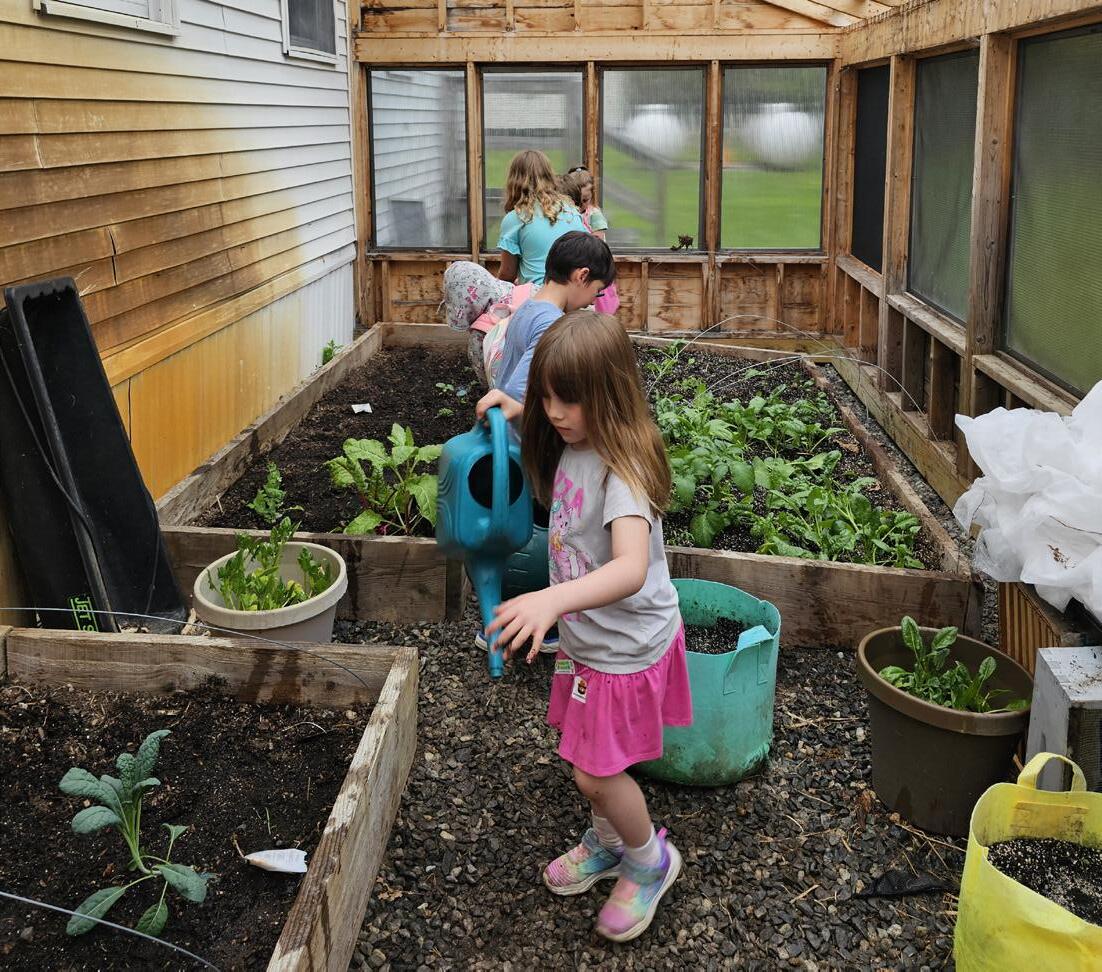
Garden & Greenhouse
SOUTH PORTLAND HIGH SCHOOL
Tania Ferrante
Our project aimed to enrich both the educational experience of our ecology students and the environmental health of our campus and community by establishing a tree nursery focused on local fruit trees. Using the grant funds, we purchased a raised bed, soil, irrigation supplies, and grafting materials to create a thriving nursery. The students received a hands-on lesson on tree grafting from Hilary Barter of Re-Forest South Portland, which brought classroom concepts about biodiversity to life. This experience deepened their understanding of biodiversity’s role in creating resilient ecosystems and inspired them to care for the trees they helped cultivate. These young trees will be planted not only on our school campus but also throughout the surrounding community, helping to increase local biodiversity and provide habitat for native wildlife. The project fosters a lasting connection between students and the natural world, turning lessons into tangible, positive environmental impact. Our collaboration with Re-Forest South Portland has been invaluable in guiding students through the science and stewardship of tree grafting. Through this initiative, we are nurturing future environmental leaders while enhancing the ecological diversity of our campus and community, one grafted tree at a time.
As one teacher noted, “This project connects our students to the environment in a meaningful way, empowering them with skills and knowledge that extend beyond the classroom.”
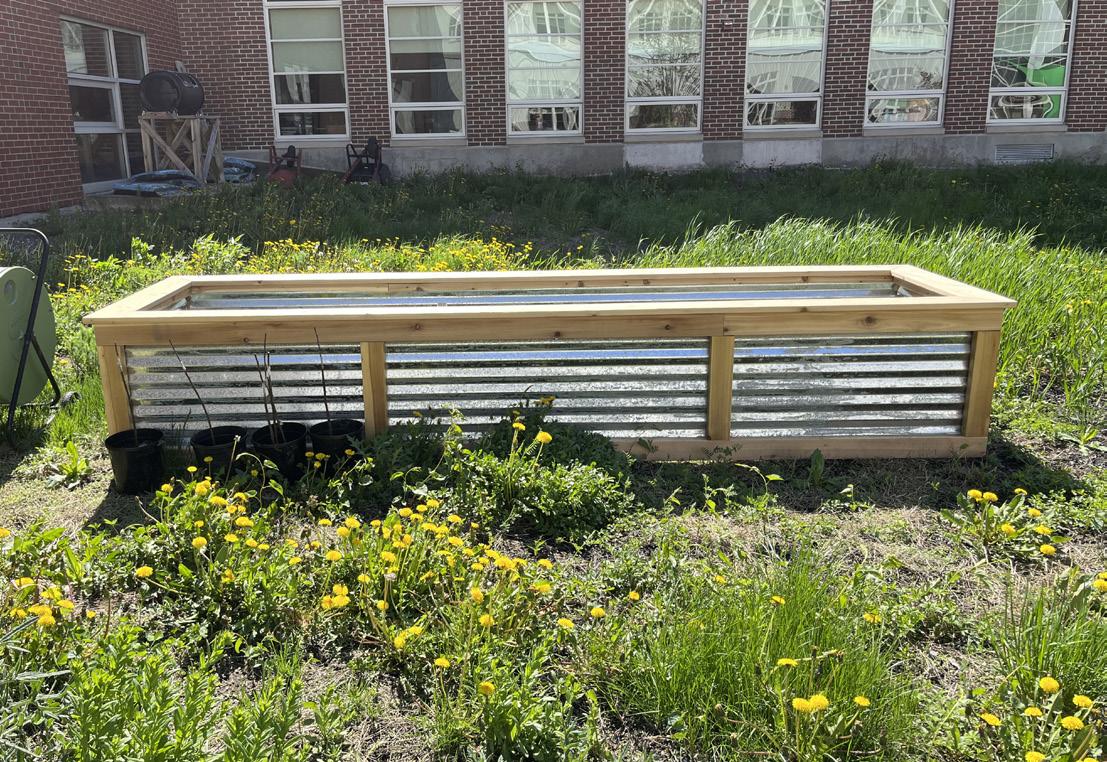
SOUTH PORTLAND MIDDLE SCHOOL Liana Popkin
We were so fortunate to have been able to pay a stipend to a garden coordinator for South Portland Middle School this year. She worked with organizations to secure soil, seeds, and seedlings for vegetables and herbs. She also planned a garden opening and seedling swap day for families and community members to be able to pitch in but also to get something in return. This summer we will have a camp for ~20 at-risk youth at our school, and they will be able to learn about taking care of a vegetable garden, cooking with the produce in it, and taking home what they’re able to harvest. In the fall, we will also be able to offer school-wide garden-related after-school programming to our 800+ students. We hope to be able to integrate the garden more into the school-year curriculum now that it has been better established.
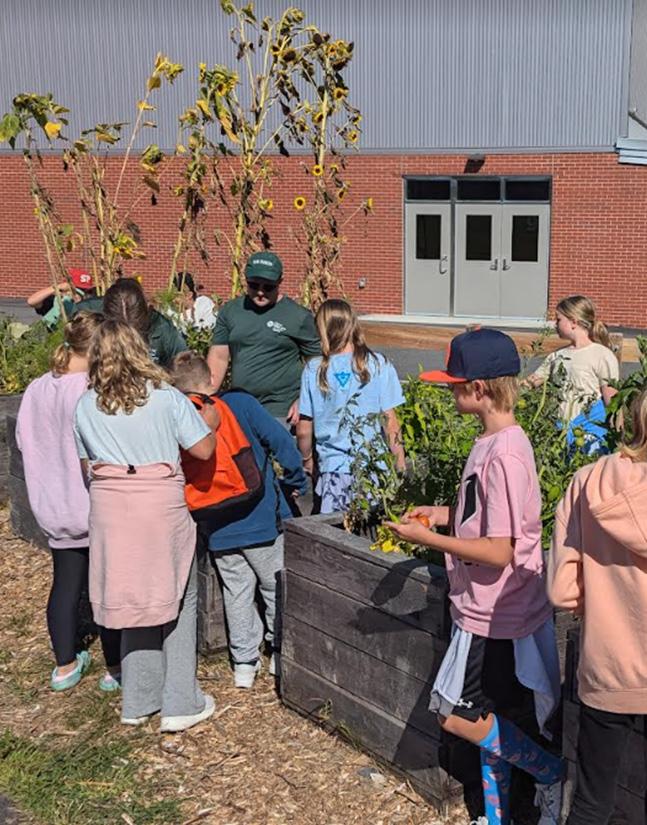
Garden & Greenhouse
WASHINGTON ACADEMY
Marissa Carroll
At Washington Academy, a trio of new field microscopes is changing the way students see the world—literally. Through facilitated lessons led by Americorps member Rowen and Maine Conservation Corps member Holly, students in Coastal Ecology, Marine Biology, Honors Biology, and Sustainable Agriculture were able to have a new experience with their day to day learning. Rather than just digging in soil or walking by rows of vegetables and groups of native plants, they are now able to explore living systems on a cellular level and uncover the complex structures that sustain life, providing context to concepts they had previously learned but not truly experienced.
In visits to Maine Audubon’s on-campus native plant nursery and the school’s greenhouse and small farm, students collected samples and used the microscopes right in the field. For several students, it was the first time they had seen plant cells, soil organisms, and decaying matter up close outside of a contrived classroom setting. What was once abstract or simply pictures in a textbook became tangible.
Evelyn V., a senior in Sustainable Agriculture, shared: “The microscope helps me understand things I’d only been told about. Seeing the properties of the cells made concepts like permeability real to me.” Kellan S., a Marine Biology junior, added, “I didn’t know leaves looked like this, with so much detail. I can see how they are still alive even when we might call them dead.”

Beyond sparking awe and curiosity, the microscopes helped connect rich academic curriculum with hands-on activities that happen with our greenhouses: growing food and native plants for restoration projects. The integration of microscope lessons deepened student understanding of how native plants, healthy soils, and food systems are all linked. Being given field practice in preparing slides, determining appropriate sample collection, and taking a moment to pause and wonder with an instrument that had previously only been known as an “inside tool” helped them to transform their understanding of the outdoor classroom!
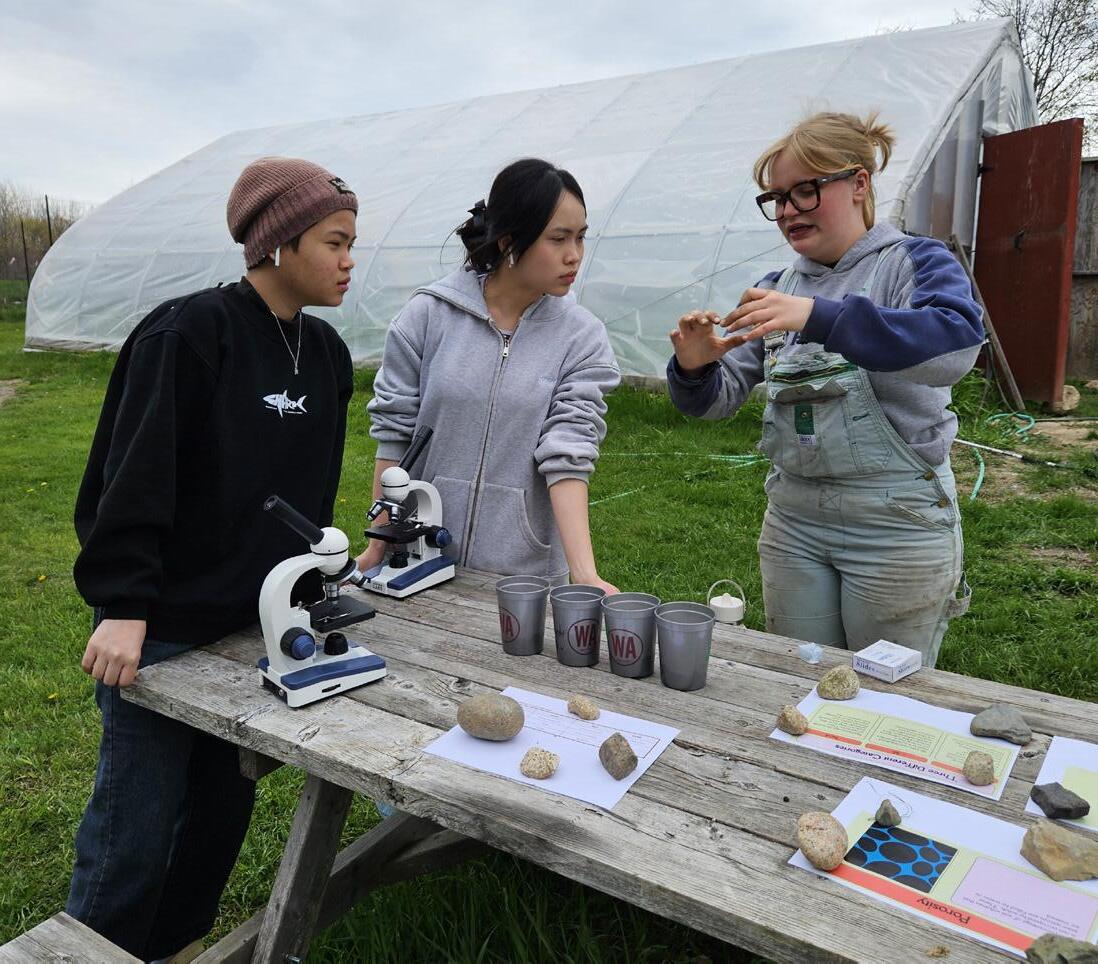
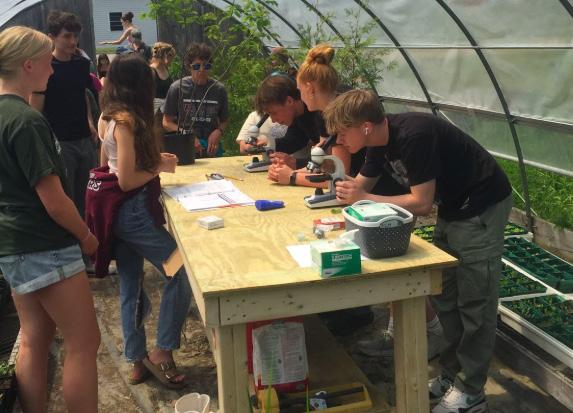
Garden & Greenhouse
WATERVILLE SENIOR HIGH SCHOOL
Noel Glowa
This is Waterville Senior High School’s project greenhouse. The greenhouse is something we’ve been working towards for a couple years now so that we can get kids outside and provide hands-on learning opportunities. It gives us a space to run projects year round, like characteristics of plants for biology, soil and water quality for chemistry, agricultural practice for environmental, etc.
We’ve also incorporated other student groups, such as Green Team, who will help work the greenhouse and collect food waste from the cafeteria to produce our own compost. This project not only brings the classroom outdoors, but opens the door for us to involve many other groups and communities. It presents the opportunity to grow some of our own vegetables, run inquiry projects, and collaborate across different classes and curriculums.
Thanks to this grant from the MEEA, we were able to purchase compost tumblrs, weed barrier, and various tools/equipment for students to be able to garden come the fall. Students have been excited to help get the greenhouse up and running. As seen in the photos, students and faculty built the greenhouse themselves over the past few months, and are now setting it up to begin composting and growing. It has been an excellent way to get those in the school community involved in volunteering, and being placed directly in front of the school, the greenhouse gives a statement on our values and priorities as an educational institution.
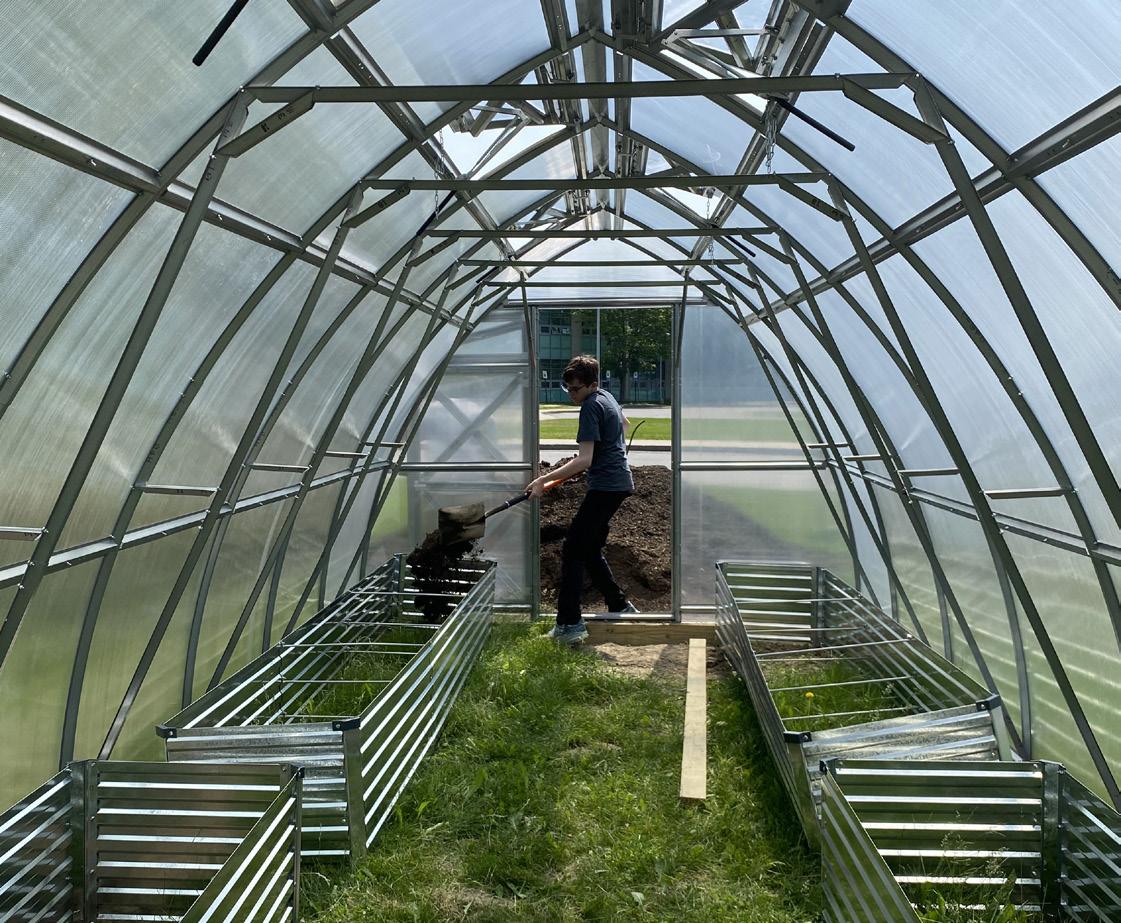
WESTBROOK HIGH SCHOOL
Sadie DelVecchio
The Westbrook High School Sustainability Club is working hard to make our campus more environmentally friendly. Last year, we put in a native garden at one of the entrances to the school. This year, we were focused on a starter pollinator garden, focusing on native plants to Maine. We hope to expand this pollinator garden to encompass most of the bus circle at WHS, converting the grassed area to wildflowers. To start this project, we received a generous $500 Grant from MEEA. Students spent the winter months picking out plants based on: size (both height and width), nativeness to Maine, hardiness, time of bloom, types of pollinators attracted, color, type of soil/ compost most suited to flower gardens, and a comprehensive fertilizer. We designed a 16 ft by 14 ft garden space based on our objective and budget. We picked the bus circle so it is more visible to the community. By adding identification signs, we are aiming to allow the members of the community who pass by the garden to observe and learn how pollinators interact with each plant species individually and how each plant species grows as time goes on.
"It looks terrific!! Thank you for doing this. The bees will be happy!" - teacher
"Looks fantastic, Sustainability Club! Let's go, pollinators!" - teacher
"Thank you, Sustainability Club, for providing more plants for the pollinators!" - student

Garden & Greenhouse
WESTBROOK MIDDLE SCHOOL
Austin Mehlhorn
Whenever our garden project gets a grant or plans a project, we try to get as many different groups of students involved as we can. With the mushroom project and how many plugs we were able to purchase, we were also able to get many students from different programs involved. The work started with the Garden Club and Robotics Club’s coming together to start plugging logs. Then our Functional Life Skills and STEAM classes worked to continue inoculating mushrooms. Finally, two of our multilingual classes will be finishing up the last of the mushroom project. Students get to learn about the decomposition process that take place and how mycelium function and create a mushroom. Our mushroom logs will continue to provide mushrooms and lessons for 5-6 years before needing to be replaced. Mushrooms that are harvested by students will be taken to our school cafeteria for the students to eat. We have found that students take pride in brining food from the garden into the cafeteria and they are more likely to try eating the food that they have grown.

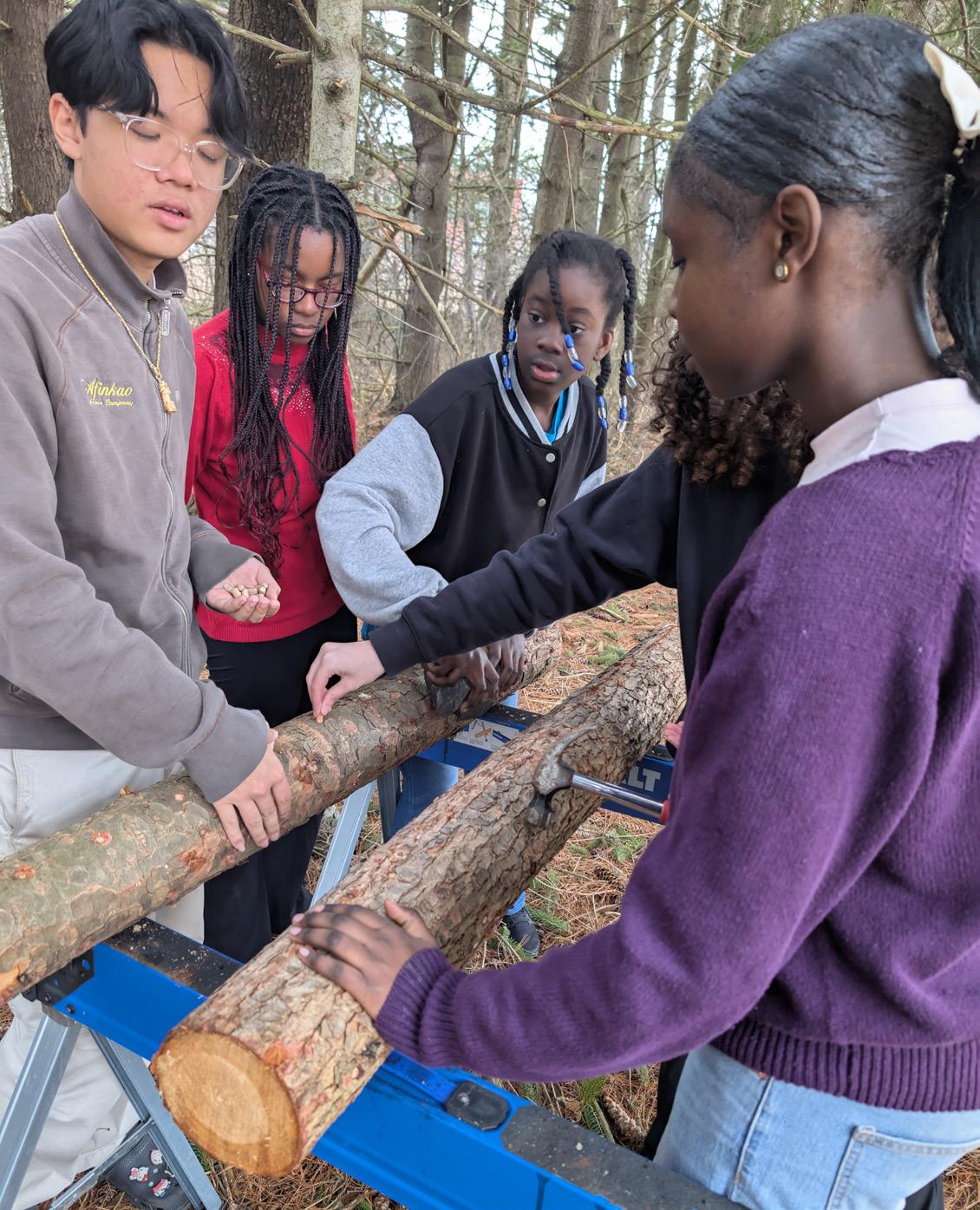
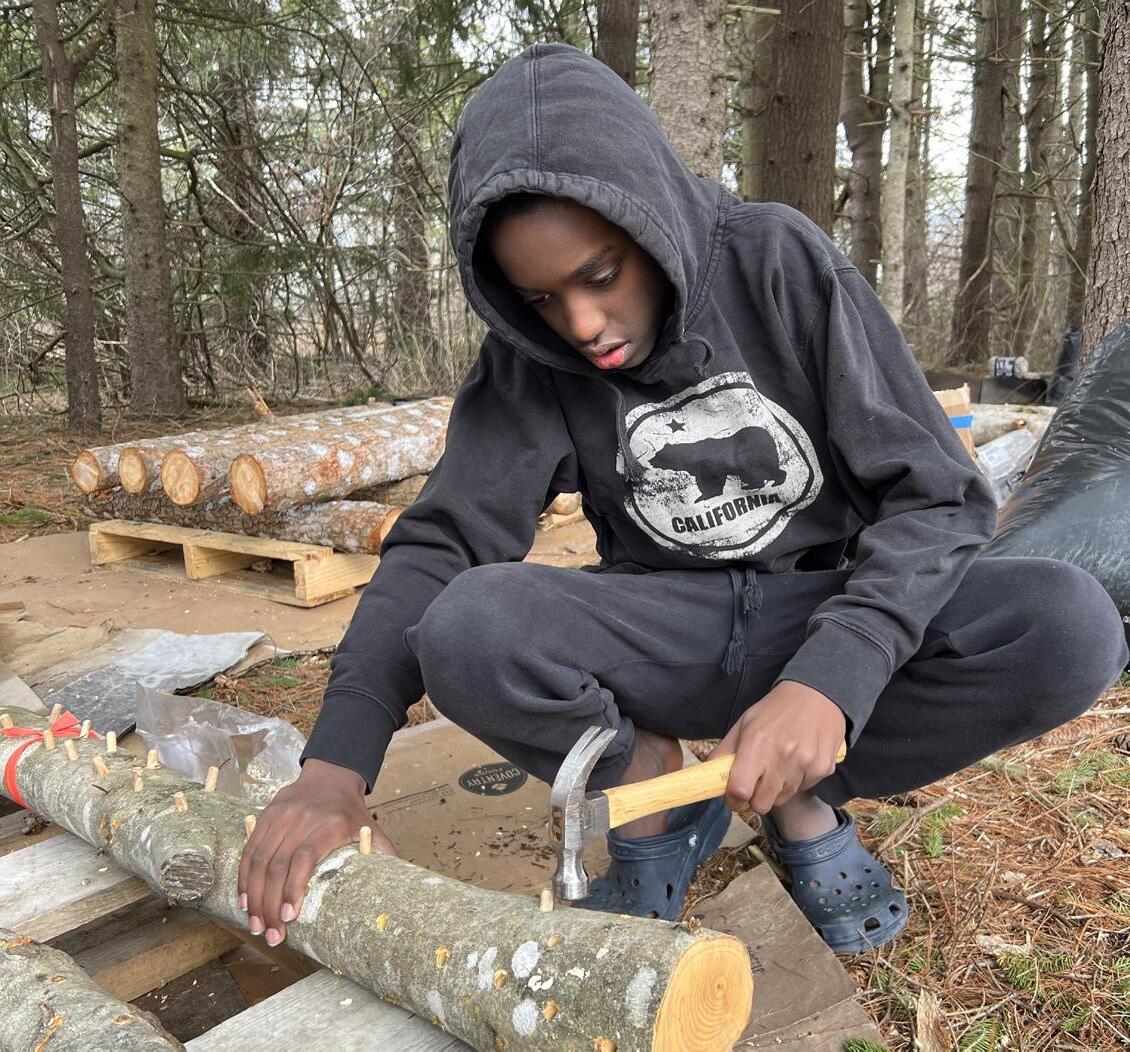
Outdoor Classroom Solutions
BOOTHBAY REGION ELEMENTARY SCHOOL
Jessica Murray
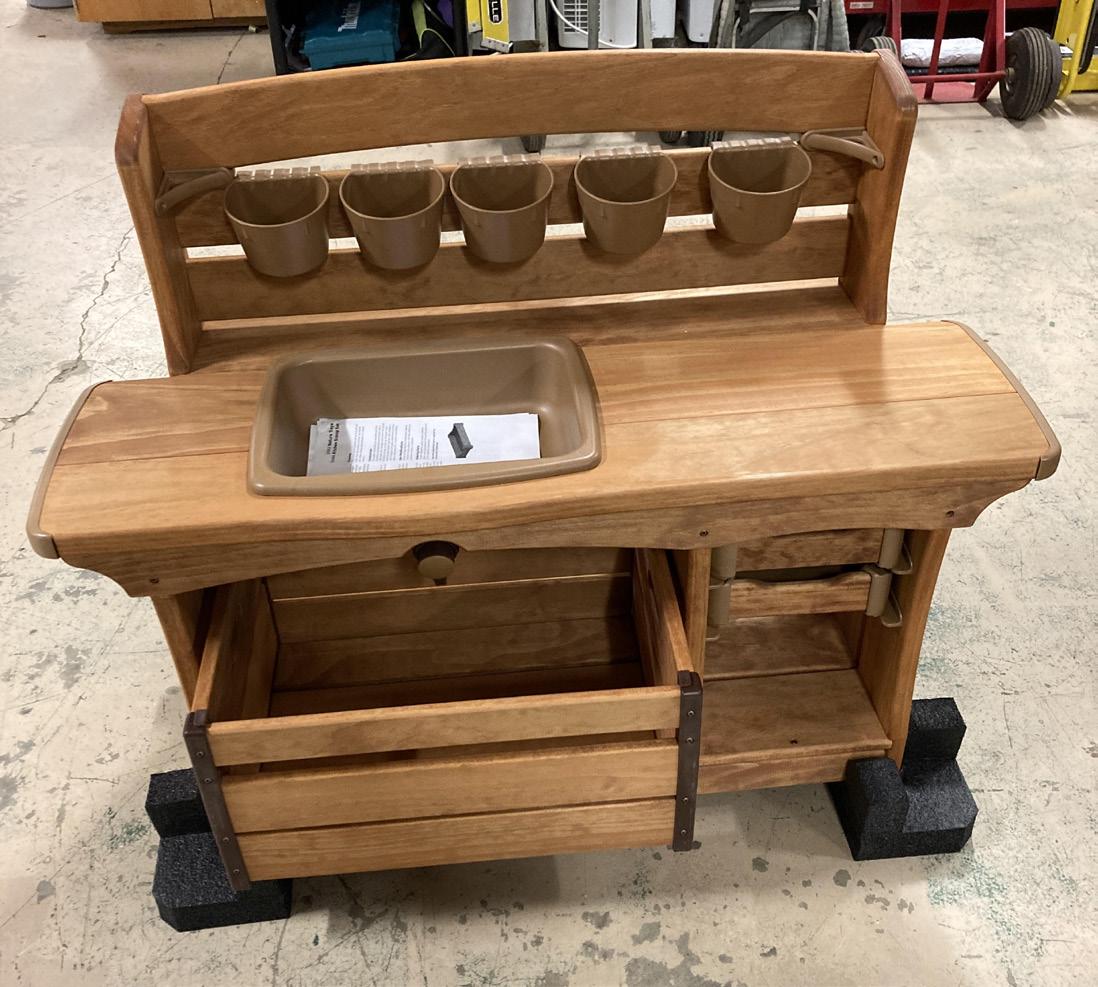
Thanks to generous support, our playground is now home to a mud kitchen. A space where imagination, creativity, and hands on learning come to life. This outdoor feature will invite children to mix, pour, scoop, and create using natural materials like mud, water, and leaves. It supports the development of fine motor skills, language, collaboration, and problem solving in a joyful unstructured environment.
As one teacher shared, “I cannot wait to add the mud kitchen to our playground, It will become a space where friendships can grow and confidence will be built through play.”
BROOKSVILLE ELEMENTARY SCHOOL
Mia Rubow
As the new Ag Arts teacher at Brooksville Elementary School in fall of 2024, I was lucky enough to inherit an established greenhouse, a raised bed garden and a program that offers an agricultural arts special to each grade, pk-8th. Now building on this foundation, we are working to increase integration of the garden space into the school day/culture beyond ag arts class time and expand the growing space to include fruit trees, shrubs and perennials and provide a gentler, more inviting microclimate for plants and humans alike. Our gardens and play areas are mostly treeless and are ruthlessly exposed to wind and sun. Our ReTree grant funded orchard will be planted this fall, and over time, we hope to keep adding fruiting shrubs and perennials to the understory, creating mini food forests and providing an opportunity to learn about mutually sustaining plant communities.
Fostering a sense of ownership and creating community are priorities at the BES garden and with the help of the MEEA mini grant, we are well on our way! Kid-sized wheelbarrows and shovels, real outdoor kitchen tools and kid-controlled water from our new rain barrel allow the kids to work independently. We love inventing our own dishes with whatever the garden is offering and discovered recently that raw rhubarb, baby carrots and kale flowers make a most delicious and beautiful salad!

Outdoor Classroom Solutions
BUXTON CENTER ELEMENTARY SCHOOL
Amanda Blunda
“Not
all classrooms have four walls.”
This quote is at the core of our crew learning. Outdoor learning across content areas is the norm for our classroom, and we are always looking for new ways to encourage others to take their learning outdoors. Our school is home to a diverse student population with a variety of learning needs. Many students have limited interaction with nature and connection to place, which is something that we want to improve. This year’s MEEA MiniGrant was used to provide all members of our community with new opportunities for outdoor learning, helping to “breakdown walls” and bring learning outdoors.
Grant funds were used to purchase a variety of materials. A mud/nature kitchen was purchased to allow students to “cook” their dream meals using mud and natural objects. Funds were also used to purchase a rain barrel, a wind spinner, additional plants for the sensory garden, and tools needed to maintain our outdoor learning spaces. Finally, funds were also used to purchase materials to build a sensory path, which includes student created sensory tiles and outdoor instruments.
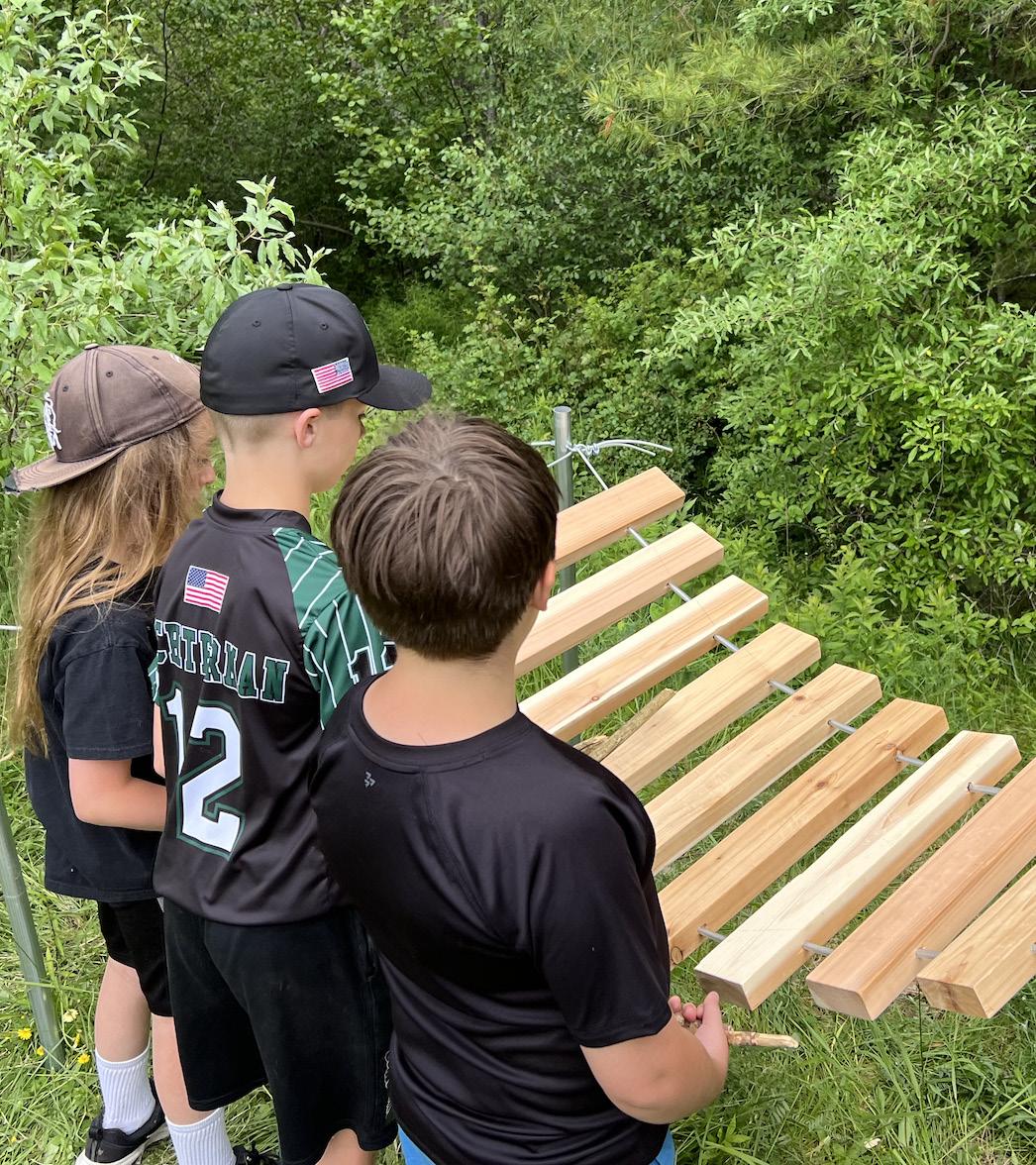

Each of these items will allow students to connect with this place, learn by engaging with nature, create music, and encourage everyone to go outside. By providing fun ways to learn outdoors, we hope to inspire others to choose to learn outdoors more often. We also hope that students will enjoy their time outdoors so much that they will choose to go outdoors more while at home.
As students created each portion of the sensory path they shared how “amazing” and “fun” it is to be outdoors. After playing the outdoor xylophone, one student simply stated, “Cool” with a huge smile on their face and a sense of awe. Several students stated, “how lucky are we to be able to learn in this place.” Outdoor learning is an opportunity all learners should have. We are grateful to MEEA for providing the funds needed to make additional outdoor learning opportunities a possibility for our community.
Outdoor Classroom Solutions
CENTRAL AROOSTOOK JUNIOR HIGH SCHOOL
Whitney Williams
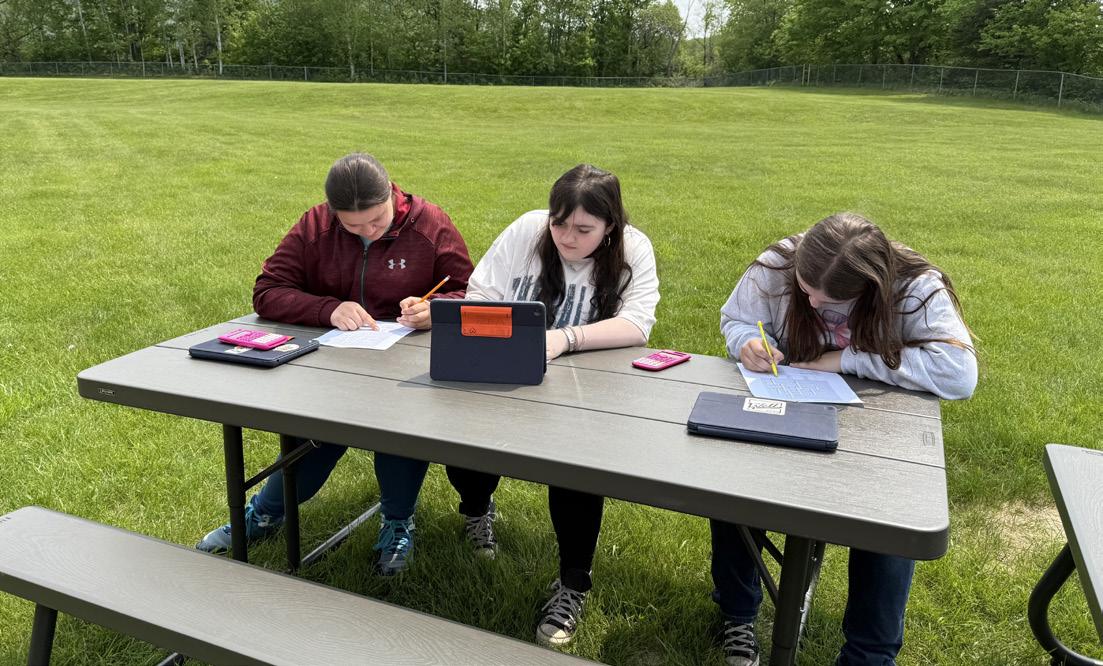
As the first signs of spring appear, students and teachers at Central Aroostook Junior High eagerly look for opportunities to take learning outdoors and enjoy the warmth of the sun. However, this enthusiasm is often tempered by the impracticality of using iPads, textbooks, and notebooks on uneven or unstable surfaces. The recent addition of five picnic tables—strategically placed in a shared side lawn area—has helped eliminate these challenges by offering stable, accessible workspaces. With the new tables in place, students have been able to bring their classroom activities outside, gather with friends during lunch, and experience the mental, emotional, and physical benefits of being in nature. The small-group design of the tables also supports focused collaboration while minimizing distractions for others.
CAJHS students and staff extend their sincere thanks to MEEA for the generous funding that made this outdoor learning space a reality.
“The picnic tables are more than just a place to sit. They provide a place to socialize, see nature, and support well-being while doing classwork.”
-Cheyenne Henderson, 8th Grade Student
CHERRYFIELD ELEMENTARY SCHOOL
Patricia BlanchardBeal
The shed for our outdoor classroom has proven to be a transformative project for our educational community. This structure will not only provide essential storage for tools and materials but also serve as a versatile space for hands-on learning experiences. A recent conversation with our Pre-k teacher highlighted the project’s significance: she shared how the outdoor classroom space has already inspired students to engage more deeply with nature and science. “Having a dedicated space for our outdoor activities will allow us to expand our curriculum and foster a greater appreciation for the environment,” she remarked. The shed will facilitate a range of activities, from gardening to environmental studies, ultimately enriching the educational experience for students. As we move forward, we anticipate that this project will not only enhance learning opportunities but also strengthen the bond between students and their natural surroundings.
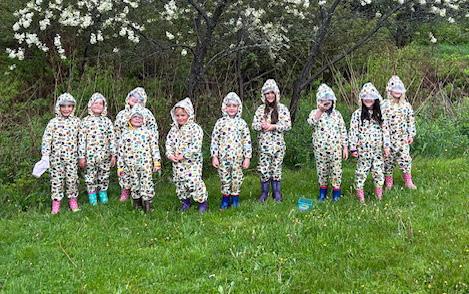
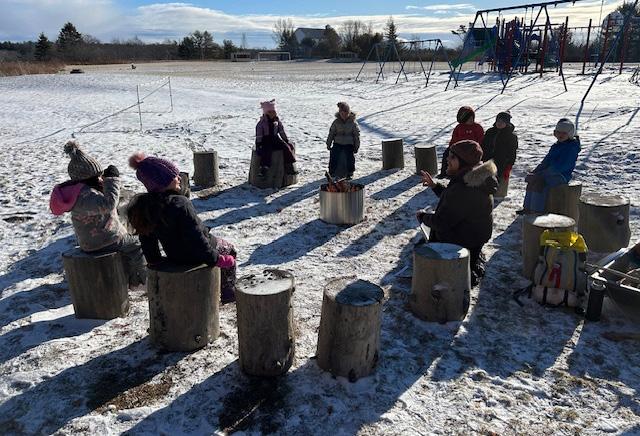
Outdoor Classroom Solutions
EDDINGTON
ELEMENTARY SCHOOL
Kristina Dumond
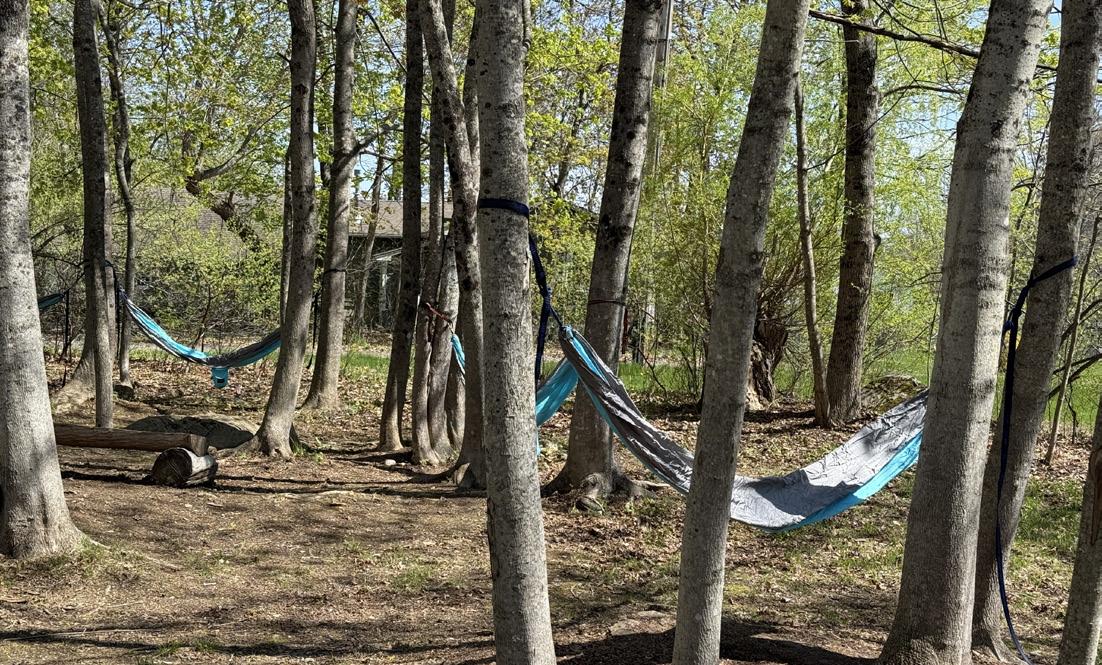
MEEA’s generous donation has significantly enhanced our outdoor learning space. We now have comfortable learning areas for whole group instruction, small group learning and independent workspaces. Student are able to gather on the outdoor rugs for whole group instruction. Students are able to sit and listen to stories read aloud with out the distraction of rocks, sticks or bugs that are often on the ground. They benefit from the option of sitting on picnic blankets to work in small groups. This makes math activities much easier to complete without losing important math tools in the grass. The highlight of their new seating options have been the hammocks. Students have loved using them to buddy read or work on independent tasks.
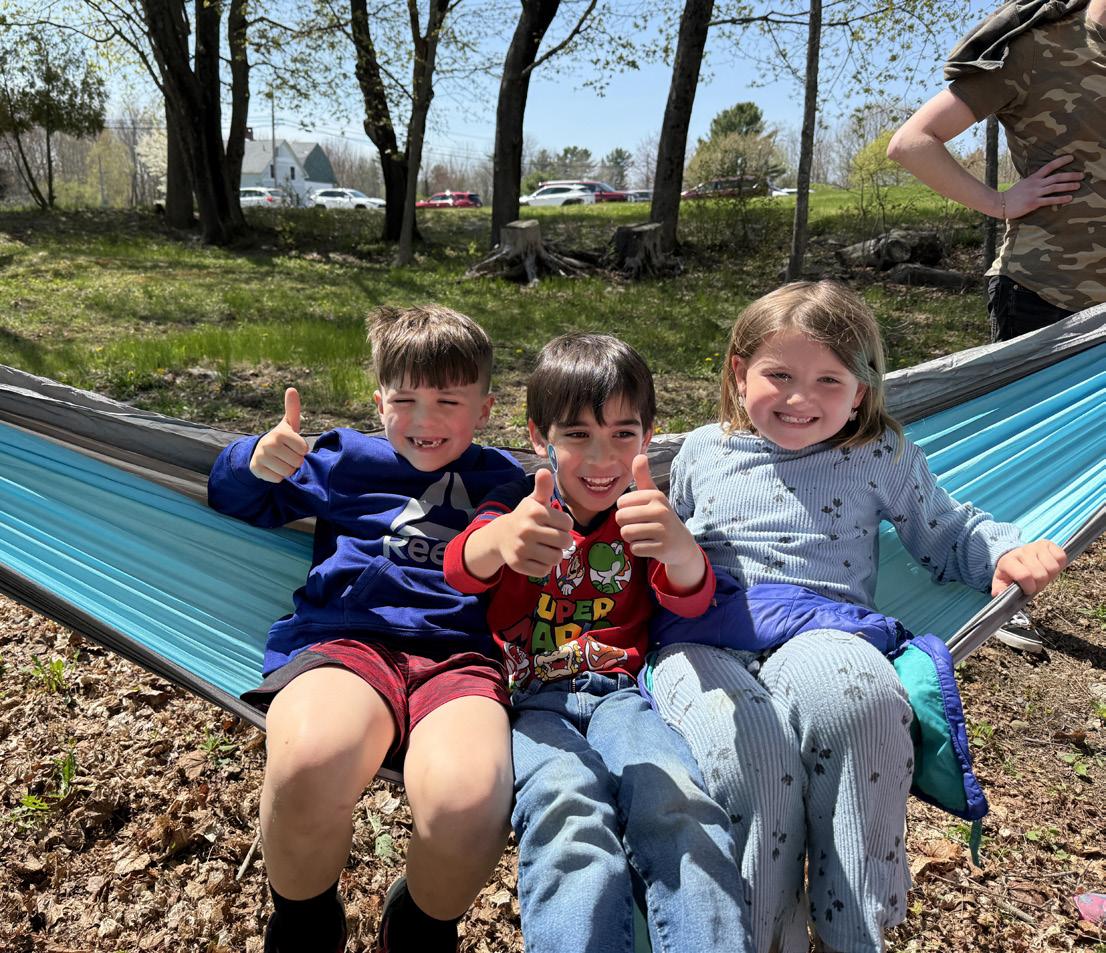
FAYETTE CENTRAL SCHOOL
Melissa M. Savage
“I love the tables, wow we have shade now, let’s go and investigate the ants.” These are just a few of the things I have heard since being able to use the grant funds to purchase items for Fayette Central School. The tables and umbrellas have created an additional outdoor learning center for any classroom at Fayette to use. Clipboards, pencils and a metal wagon have allowed for teaches to access materials that are all readily available. The wagon sits by our door and has been utilized by all classrooms so far. Being able to have a dry plastic storage box for outdoor materials has also allowed for all classrooms to store things in a safe dry area. Being able to provide these items to Fayette Central school has increased outdoor learning areas, and time. Allowed easy access for outdoor materials for the whole school and also for after school hours and for the community.
This grant has provided additional materials that has helped the school and community to get outside more. Natural materials have been added to our play area which was donated by families. Being grateful for the grant that we received and the continuous growth of family support around outdoor learning has been the key to being able to offer this experience to all grades at Fayette Central School.
This year Fayette was able to purchase a outdoor learning structure which allowed one classroom at a time, now with our two tables there is now room for 2-3 classes at one time. Being able to use the materials purchased by the grant Fayette School continues to build a stronger outdoor learning atmosphere. We are all thankful for the support that MEEA continues to offer to the public schools. Let’s get our students outside, exploring in our natural environment.
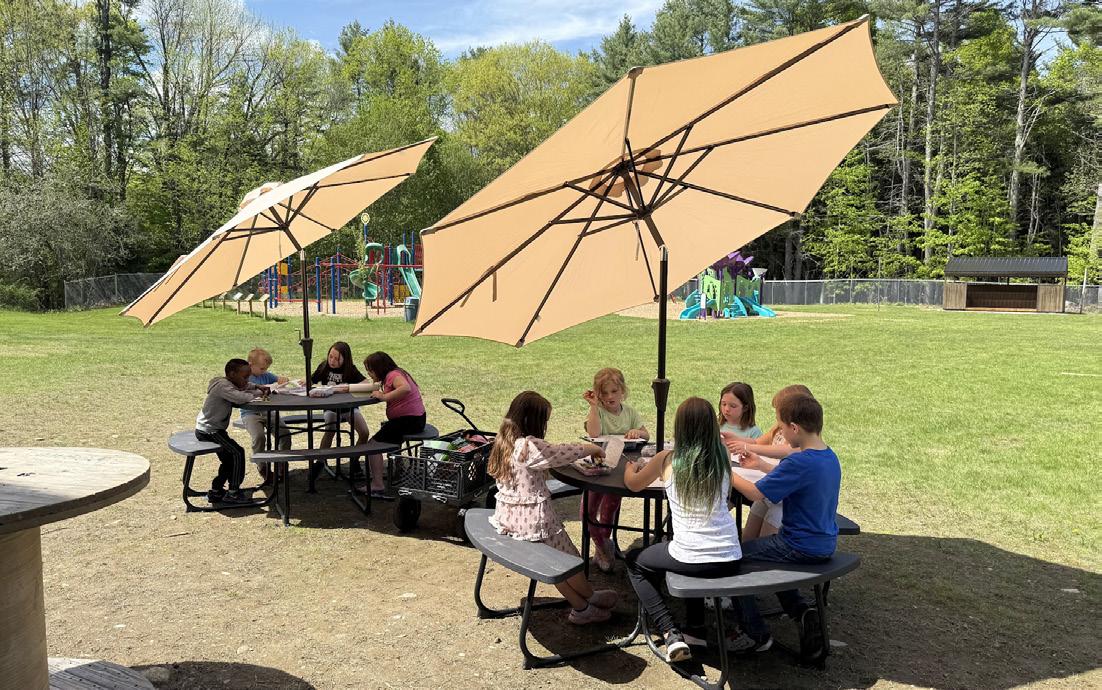
Outdoor Classroom Solutions
GEORGE E. JACK ELEMENTARY SCHOOL
Victoria Sibley
The outdoor space at George E Jack school has been untouched for years. What once was a space with active garden beds was now overgrown and left behind. This space had so much untapped potential, and this year our mission was to begin to tap into what it could be. Through dynamic conversations with students, planning with administration, collaboration with an Eagle Scout, and support from our maintenance team, we quickly hatched a plan. Our first step in this process was obtaining materials for an outdoor classroom space. The MEEA grant gave us the opportunity to fit out our space with 6 curved benches as well as a rolling easel. This grant and these materials gave momentum to the future of our space. Now we have a space for all learners to engage while outside, but this is just the first step in our vision. This furniture has created a space for learners to engage, relax, and to learn and think differently. “This is where I want to learn!” was a cheer from one learner as we finished our build. Time outdoors benefits all learners, and the outdoor classroom provides just that. It is a space where our learners are thinking differently, exploring with curiosity, and engaging in learning with creativity. Both teachers and students have been incredibly enthusiastic about this project, with on educator stating, “This is such a positive opportunity to have for our kids...This space. I’m just thinking over everything I can do here. It’s so exciting to have a place where their brains get to think and work differently.” This year is the first year of a long journey with the goal of the continued pursuit of outdoor education. We are so grateful to the MEEA for their support.
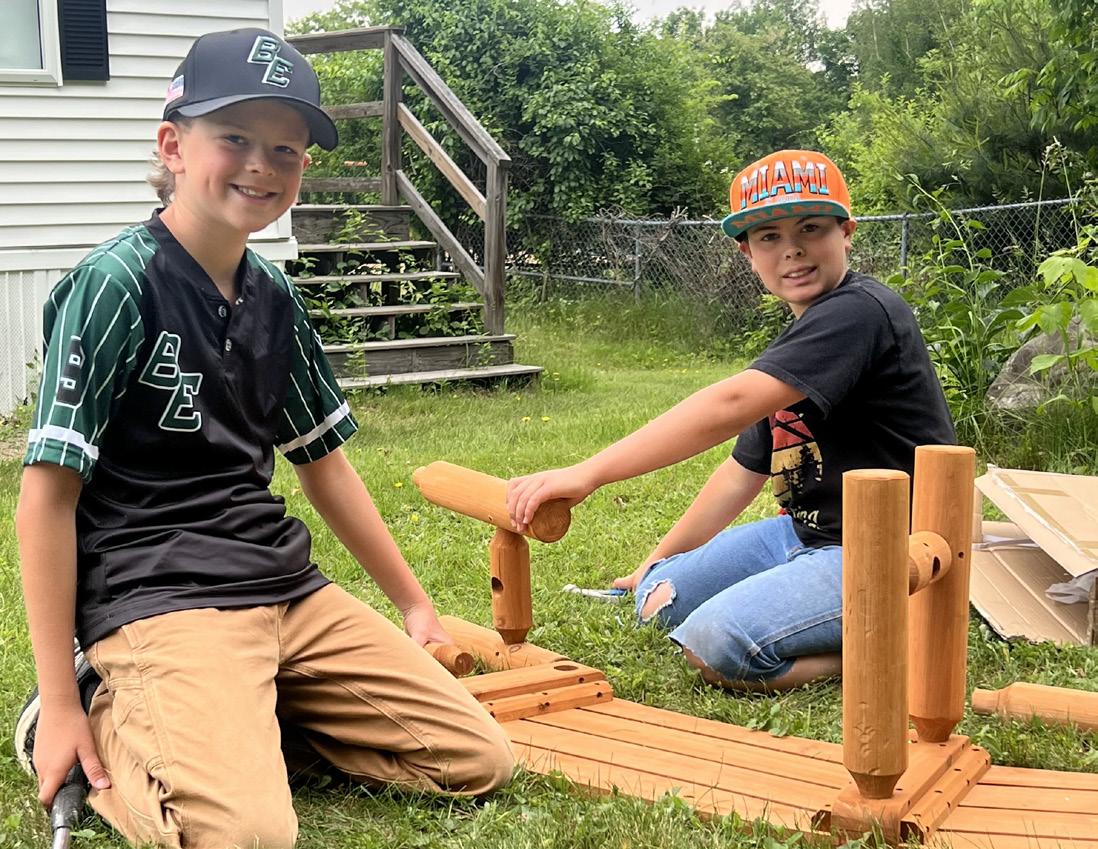
HOLLIS ELEMENTARY SCHOOL
Anne Duffy
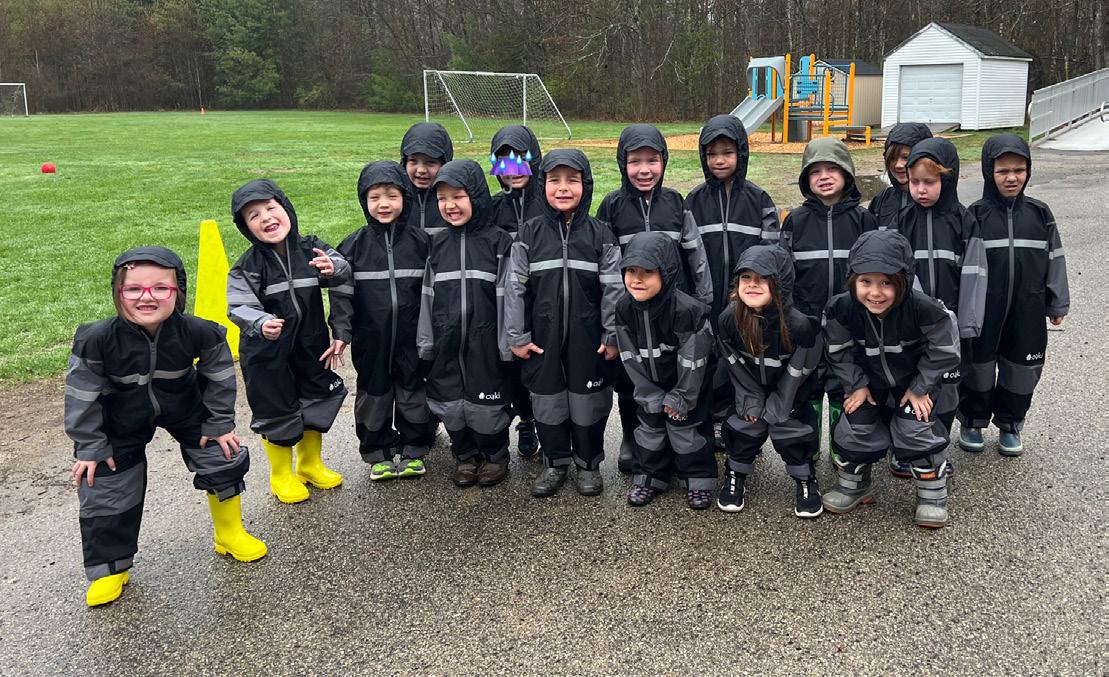
The idea to purchase rain suits stemmed from a conversation that we had with Anne Adams at Maine Early Childhood Outdoors in which we talked about barriers to outside play. A topic of discussion was the fact that several of our pre-k students do not have access to proper rain gear and many have sensory issues surrounding being wet. Therefore, rainy days are spent inside instead of exploring their play area, fields and forest in the rain. We knew that we could offer so many rich learning experiences if we had the proper gear to get them outside in inclement weather. As soon as we were awarded this grant, we knew exactly what we wanted to purchase- full body rain suits! Now we just had to wait for some rain…
Lucky for us, it has rained in Maine non- stop for weeks! On our first rainy day, we helped our 4 and 5 years olds don the suits- they were BEYOND excited to go out and play in the rain. Once outside, there were numerous shrieks of joy as the kids ran to the play set with the biggest slide. The slide was fast in the rain and it was an absolute delight to hear them giggling and laughing all the way down. There was cooperation happening when they had to take turns and wait in line to climb the stairs, there was happy chatter about what the next turn on the slide would be like. These kind of fun, shared experiences are so important in building our classroom community! One little friend shouted “This is better than playing in the snow!”. Another opportunity to play in the rain came the very next day and this time, the kids discovered worms in the puddles! It was all hands on deck to “save the worms!” And bring them over to our school garden. There was a lot of discussion about where the worms would the happiest and what they wanted to eat for food. This high interest play led to a week long study of worms!
Outdoor Classroom Solutions
LINE ELEMENTARY SCHOOL
Kelli Karish
When I first purchased the tables I was excited to be able to use the tables year round enjoying each season here in the great state of Maine. They allow students the opportunity to be outside, learning about our amazing environment. From learning about the ecosystem that our school sits on to the animals that we discover under logs, in the dirt, in holes of the trees we have many opportunities for outdoor learning here at Line. We even have a wooded path created by the Boyscouts that we use year round for hikes into the forest as a “Literary Trail”. It was my mission this year to try to get our students outside more so that they may learn in a different environment than the classroom. We have done lessons on force and motion, having tug of war competitions. I have also done measurement lessons on liquid capacity. Our Kindergarten classrooms discovered worms as well as eating their snacks outside at these tables. Finally, our special education teacher has used the stadium seating for her learners reading to them outside and doing discovery lessons. All in all they have been very successful and I look forward to using them in the Fall and Winter months next year. I also plan on asking the Parent Teacher Committee for funds to help us buy umbrella’s for each table allowing us some shade on those hot and sunny days. When I asked my students what they liked most about this new seating outside, they said, “ When it is warm and sunny we like to be able to learn outside because we enjoy the fresh air and get to move around.” I think that says it all.
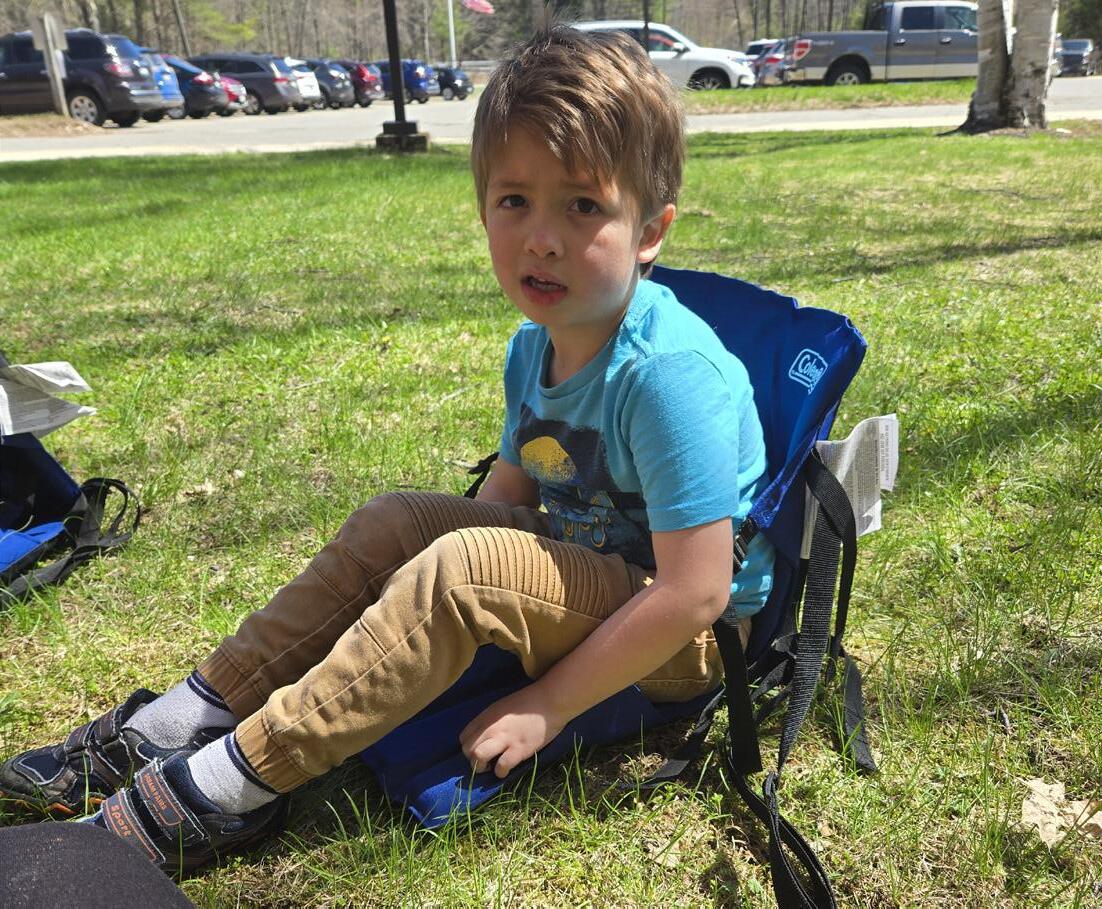
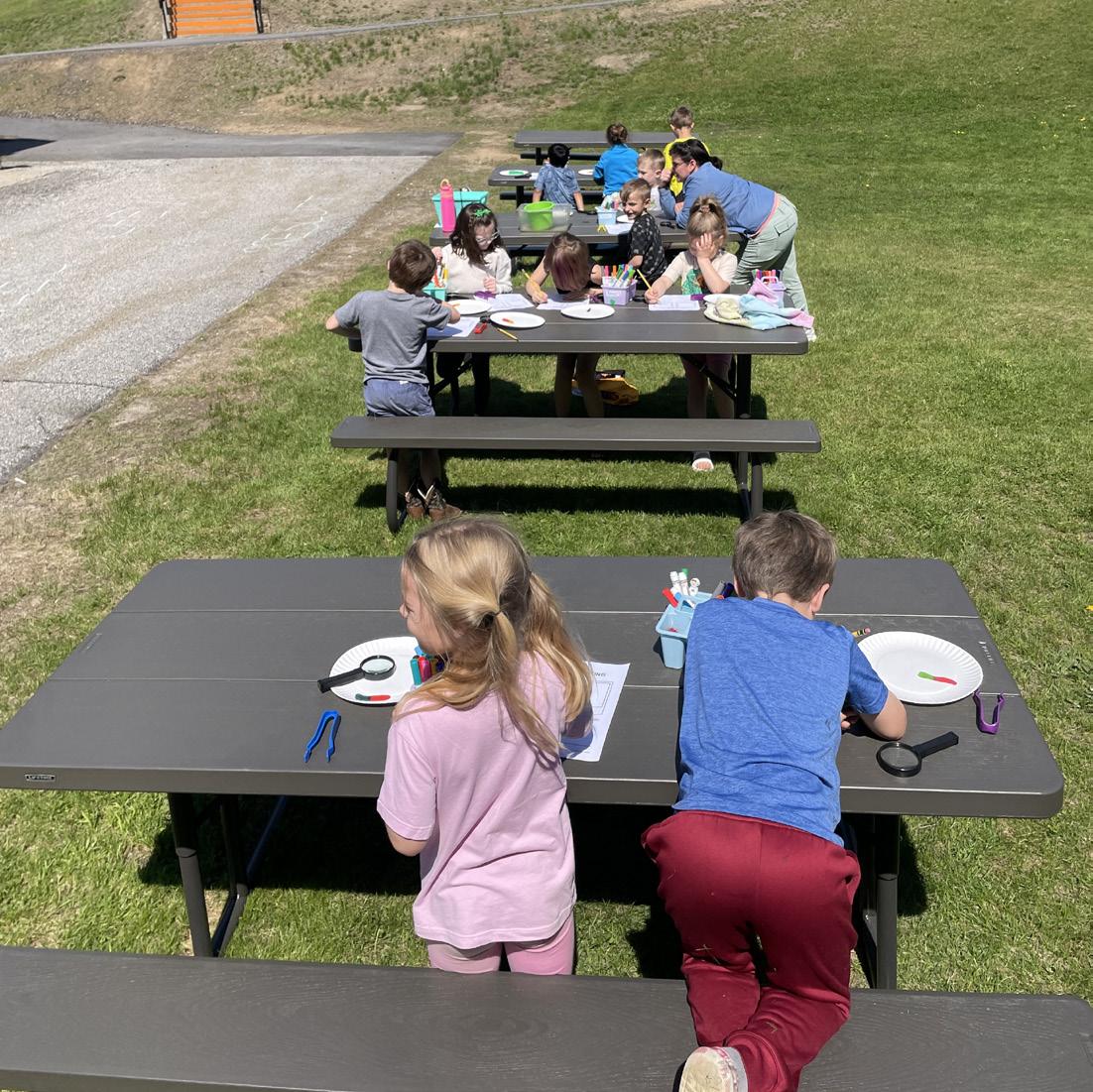
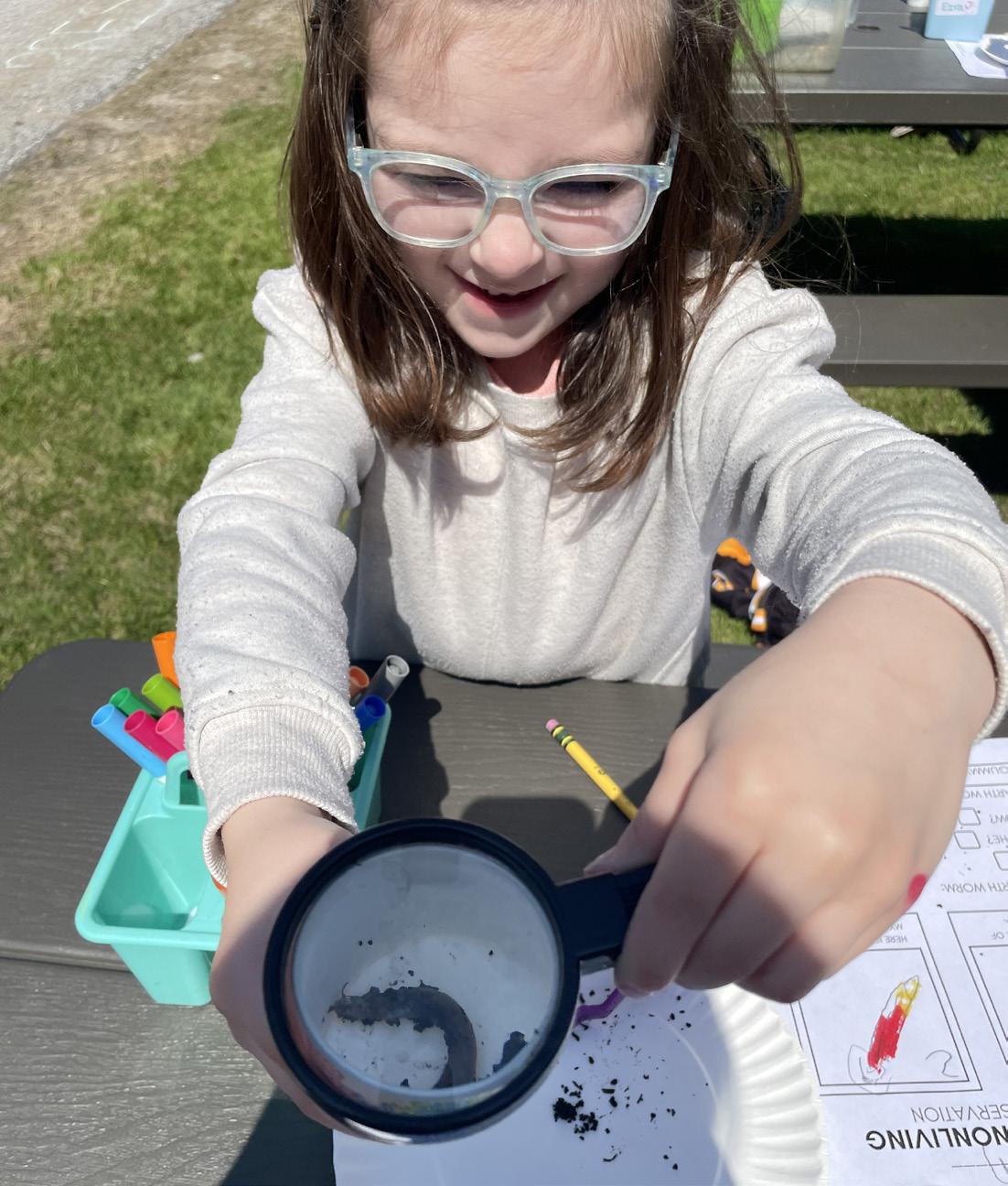
Outdoor Classroom Solutions
LONG ISLAND SCHOOL
Marci Train
We used the journals and chairs for outdoor observations. Sometimes we would make hypothesis on what happened when we were not on the playground. Then we would check the game cam to see if we were correct. It was especially fun to track creatures in the snow and write about them in our journals then look on the camera to see if the “story” we thought that the tracks had told was actually correct.
I figured that we would continue to use the game cams and the journals through the winter months but I was surprised at the amount of use we got out of the camp chairs. Often times the students would grab one for circle time or read aloud while sitting on the floor at school. We also noticed that the students were able to sustain their focus on their observations for a longer amount of time while they were using the chairs. Unlike cushions, they had a back and also rocked a bit for those students that needed the sensory feedback.

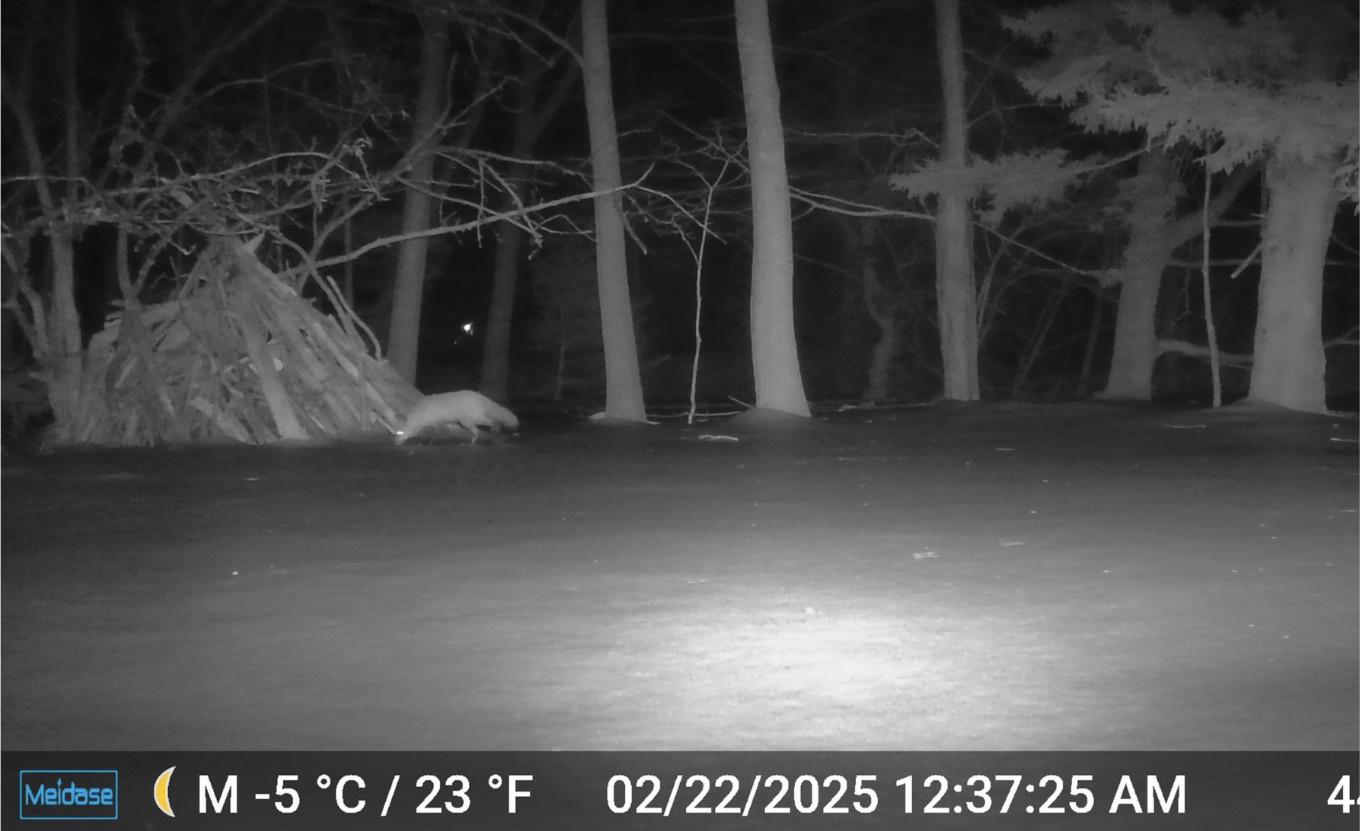
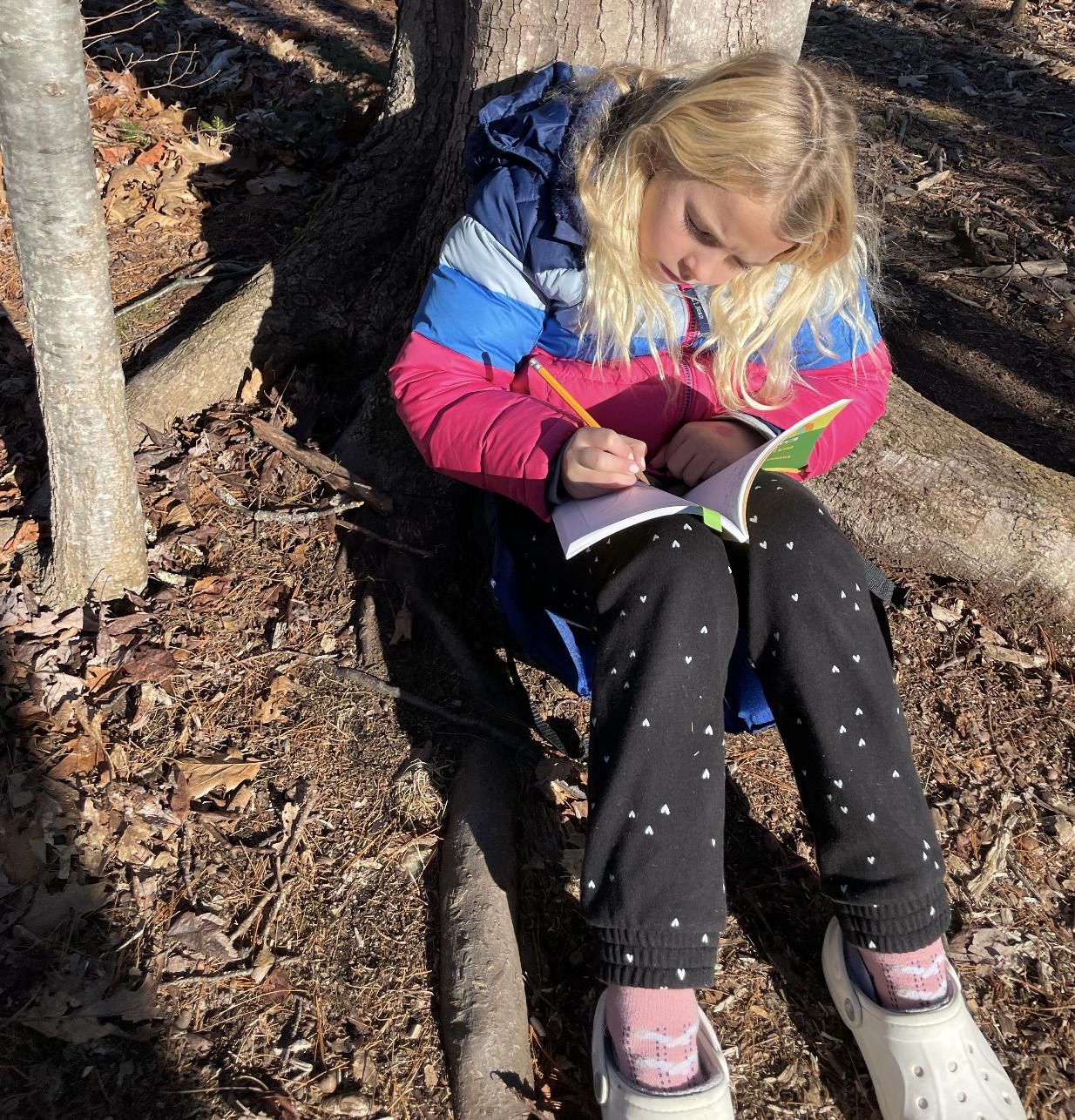
We put one of the game cams in the woods on the playground. We were surprised at just how much wildlife activity occurred when we were not at school. We waited until spring to set the second game cam up to see what we could see at the vernal pond across from the school. We made a lot of observations of different species of birds and frogs that came through this spring, but didn’t quite see any on the camera. We tried to adjust the angle of the camera so it points directly at the pond, but we still were not able to pick up as much activity as we would have liked to.
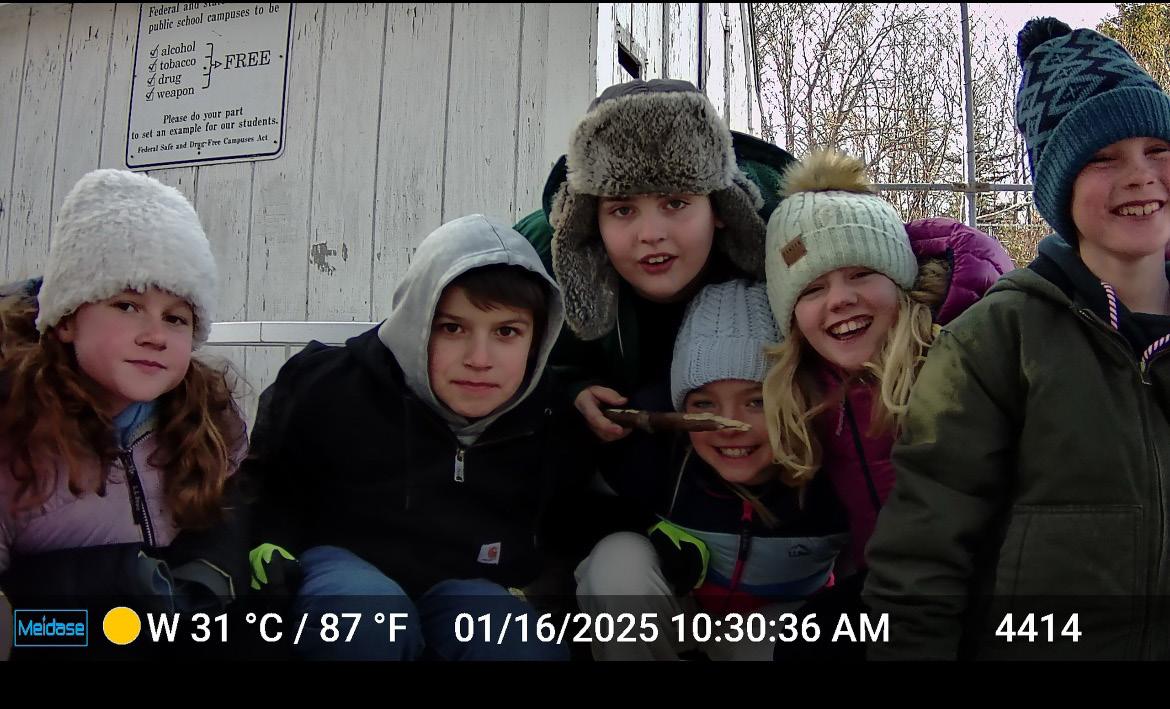
Outdoor Classroom Solutions
LYSETH ELEMENTARY SCHOOL
Leigh Quigley
As an elementary environmental educator I provide outdoor and nature-based engagement and activities for all students in grades pre-k to 5. I created this specialized learning “garden” to make outdoor learning and experiences readily accessible to teachers and students. By eliminating the need to organize or plan an outdoor experience/lesson, teachers are more inclined to use a green space for teaching, learning and imaginative, active play.
I designed the “Kindergarden,” as a place where children can learn about ecology through a nurturing outdoor environment that supports their development through play, exploration, and experimentation. Students have found so much joy in exploring the new materials - raw wood building blocks and stones, outdoor play kitchen and dining area and multilevel stump paths and steps. This has encouraged them to make connections to found materials like sticks, stones, leaves, mulch and more.
Teachers are now readily embracing this accessible green space. As one teacher recently shared, “It’s incredible to see the kids so engaged. They’re not just playing; they’re truly exploring, experimenting, and connecting with nature and each other in a way that just wasn’t happening before.” The other day I watched a group of kindergarteners collaborate to create a restaurant, complete with mulch soup, grass salad and mud cookies. Their energy and enthusiasm were palpable.
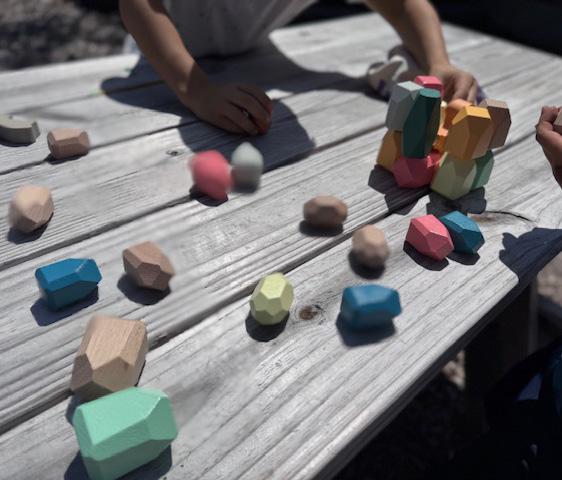
The rich sensory experiences provided within this environment - from the rough bark of the stumps, to the textures of leaves and moss, to the sounds of rustling leaves and and twittering birds - stimulate cognitive growth and are laying a strong foundation for future learning both in the classroom and within the broader living schoolyard. And with fewer explicit rules, I see children directing their own play, making choices, and exploring independently, each of which foster a sense of autonomy. I’ve also seen children who didn’t connect in the classroom for some reason work together to build something, navigate a challenging path, or create imaginative scenarios. It has been wonderful to see all of this unfold!
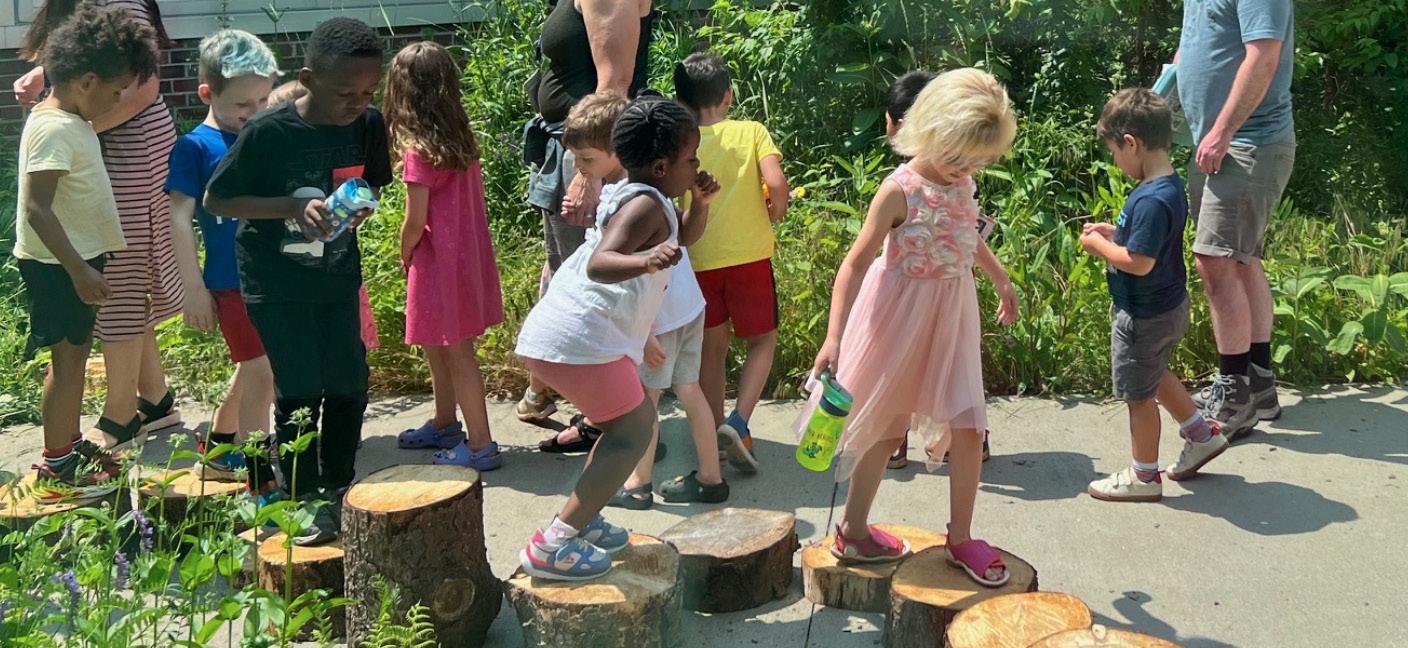

Outdoor Classroom Solutions
MATTANAWCOOK JUNIOR HIGH SCHOOL
Jaide Berry
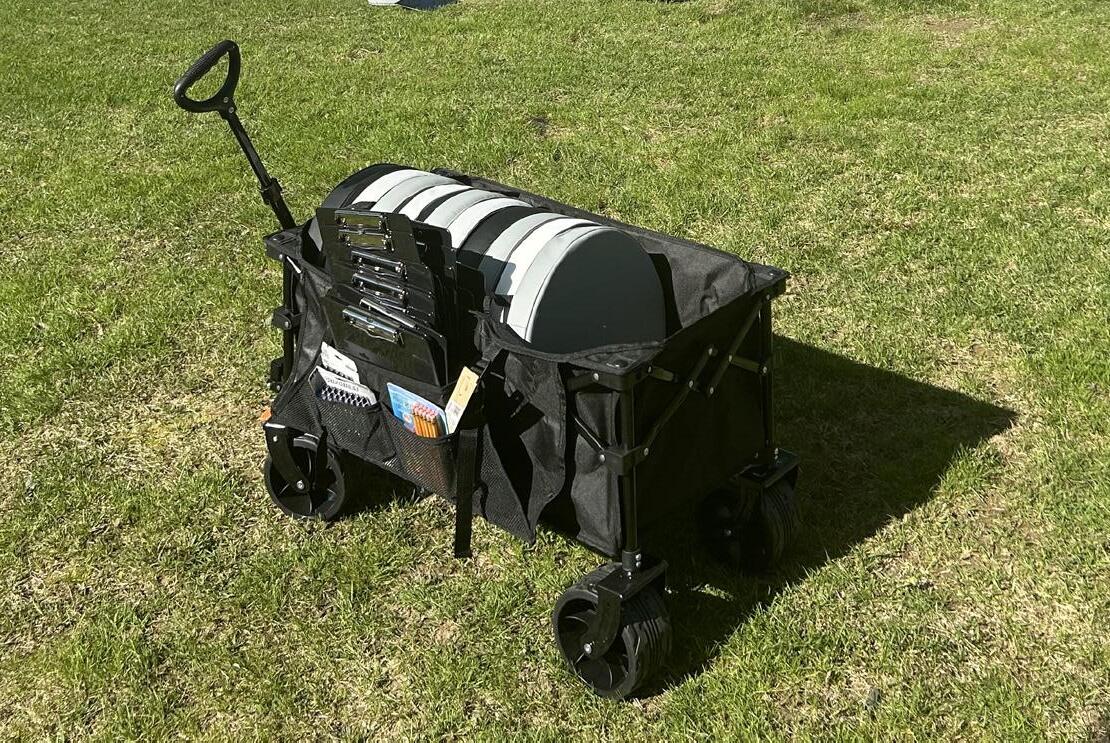
Mattanawcook Junior High School sits on the beautiful Mattanawcook Pond. In the spring time students are able to kayak and fish during Physical Education. Expanding outdoor learning opportunities beyond Physical Education class is crucial in meeting the growing needs of students. Being able to sit comfortably along the banks of the water or in the open field to journal or observe will help students connect with all senses and deepen their learning.
Providing Junior High age students a chance to practice hands-on safe risk taking in nature will support their natural curiosity and problem solving skills.
The funding will provide materials that the entire school will have access to. Teachers will be able to utilize the tools to allow students and staff to be comfortable and safe during outdoor learning, eliminating some barriers to taking students outside.
The funds allowed the school to create a mobile classroom. An all-terrain wagon was purchased along with weatherproof sit spots, clip boards, and writing tools. This mobile classroom allows teachers to quickly grab and go to head to our beautiful outdoor learning spots, cutting down on prep time.
After receiving the wagon and tools:
“As soon as the weather is nice all the students will be asking.” -School Interventionist
“A wonderful set of tools to use for the outside classrooms.” -Exploratory Teacher
THE MOLLY OCKETT SCHOOL
Kelli Krebs
The kids were inspired with all things “eggs” and then were set free with opportunities to create egg drops and tall forts. Every single student demonstrated politeness, kindness, creativity, helpfulness, compassion, strong communication skills, care, innovation, and, most importantly, PLAYFULNESSfor 4 full hours!
They engineered amazing forts, built ladders with hammers and nails and wood, carried heavy pallets and bricks throughout the site, created art with paint and chalk, played in the stream making dams, carried a HEAVY concrete culvert into the stream, built swings and slingshots, climbed trees, and relaxed in the great outdoors on this beautiful day.
There was awesome teamwork, collaboration, and problem solving observed ALL throughout the woods!
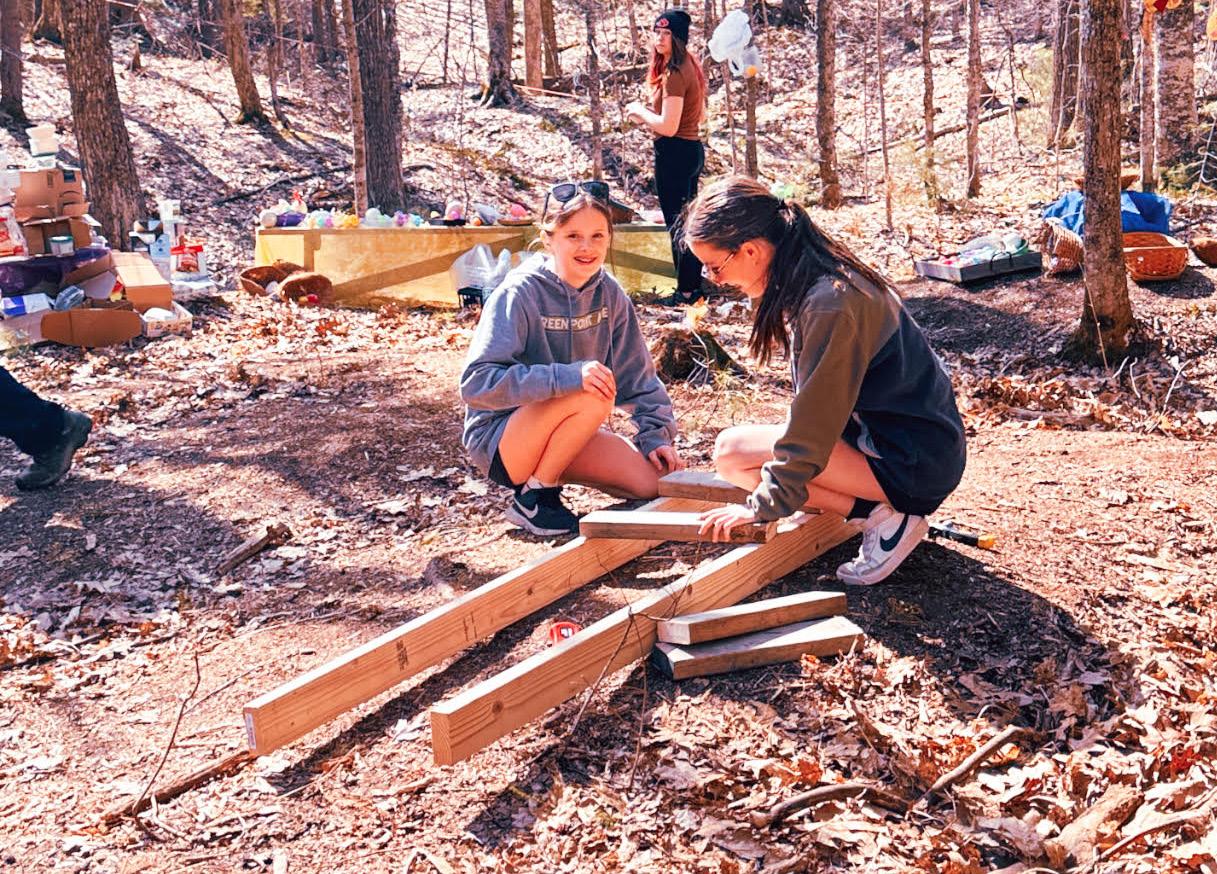
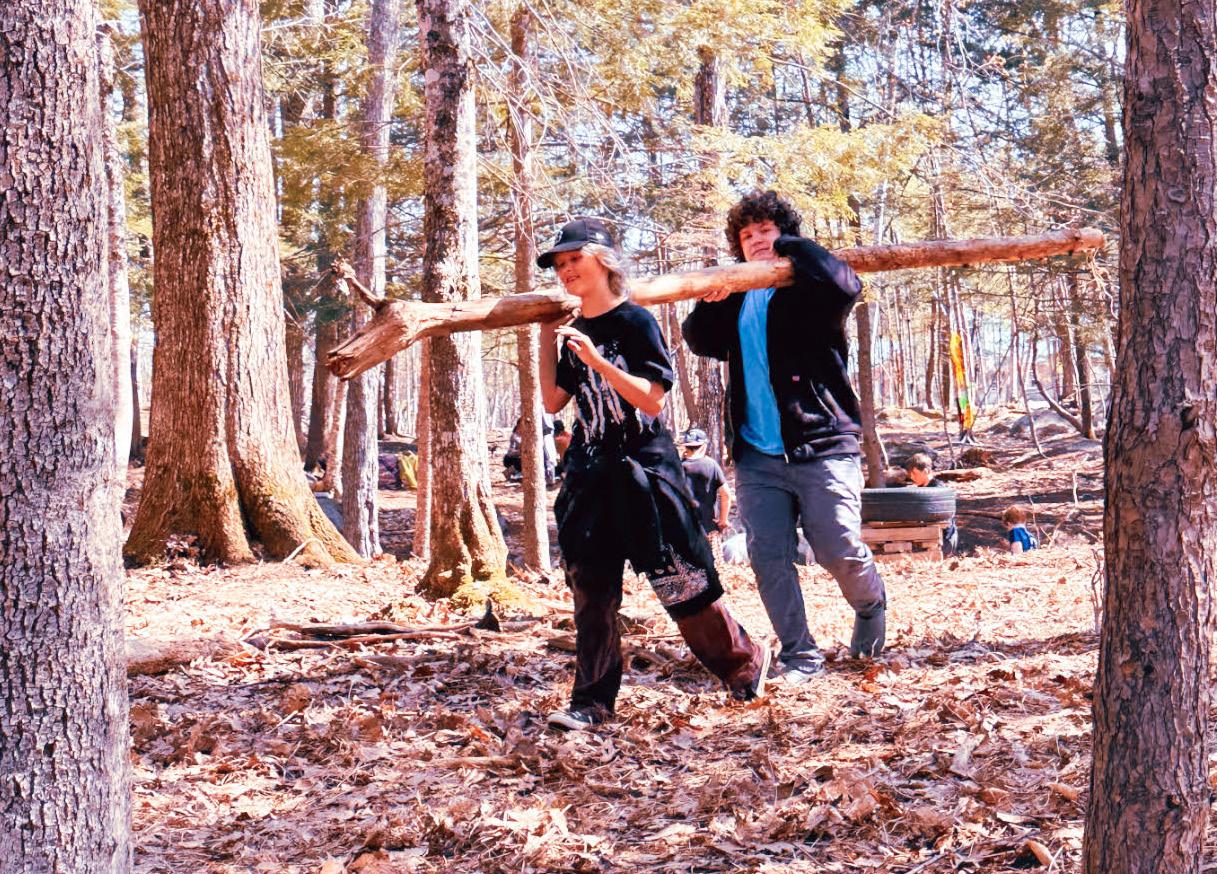
Outdoor Classroom Solutions
MORSE STREET SCHOOL
Aja Stephan
As an early childhood educator, I know that water play is both highly engaging and important for children’s development, promoting physical, cognitive, and social-emotional growth. Working with water enhances motor skills, develops hand-eye coordination, and introduces basic math and physics concepts. Water play also fosters social skills, emotional regulation, and creativity. The preschool children worked together for many days with these wooden ramps in many different kinds of weather and conditions. Their engineering challenge was make the water from the rain barrel get to either the sand box or a bucket. Below is an excerpt of a conversation between four students as they work together with these wooden waterways. It demonstrates the ways they are building their knowledge about how water moves and about to collaborate, plan, be flexible, and persevere.
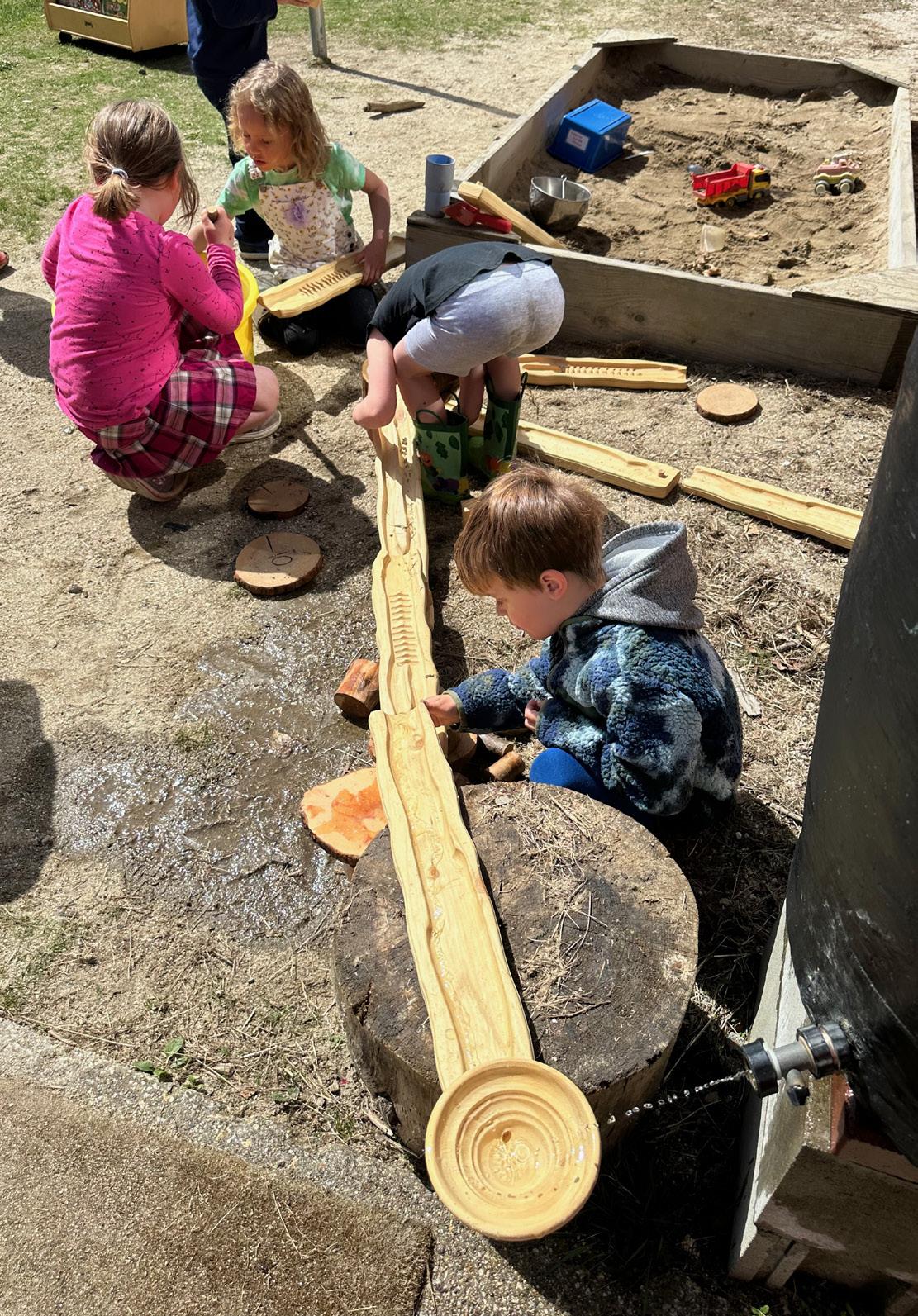

Child 1: We could put it right there then it would be tipping that way.
Child 2: Oh, I think I got this! Guys, I think I have an idea!
Parker: We need to move this over that way a little bit. Oh yeah, that will work Caleb: You are doing a great job. This will work so much! Let’s test it out! It’s working! Look at it!
Child 3: No, it’s leaking!
Caleb: That’s ok! Guys! I will put another one on! Woah, woah, woah!
Child 4: How’s it doing over there? Great?
Caleb: I think it’s perfect!
Child 3: Ah, you are leaking it Parker!
Child 4: Ah, a pathway!
Child 3: Ms Stephan, we need more water!
Caleb: I think we have this! We really do!
Parker: No! It’s getting stuck in the holes again!
Child 4: It’s a water fountain!
Ms. Stephan: How did you do it?
Parker: We needed 3 of them there!
Caleb: I can’t believe we really did this. I gotta tell my mom!
Here is an excerpt of their dialogue as they are testing their hypotheses and trying different ideas:
Outdoor Classroom Solutions
MOUNT DESERT ELEMENTARY SCHOOL
Shannon Westphal
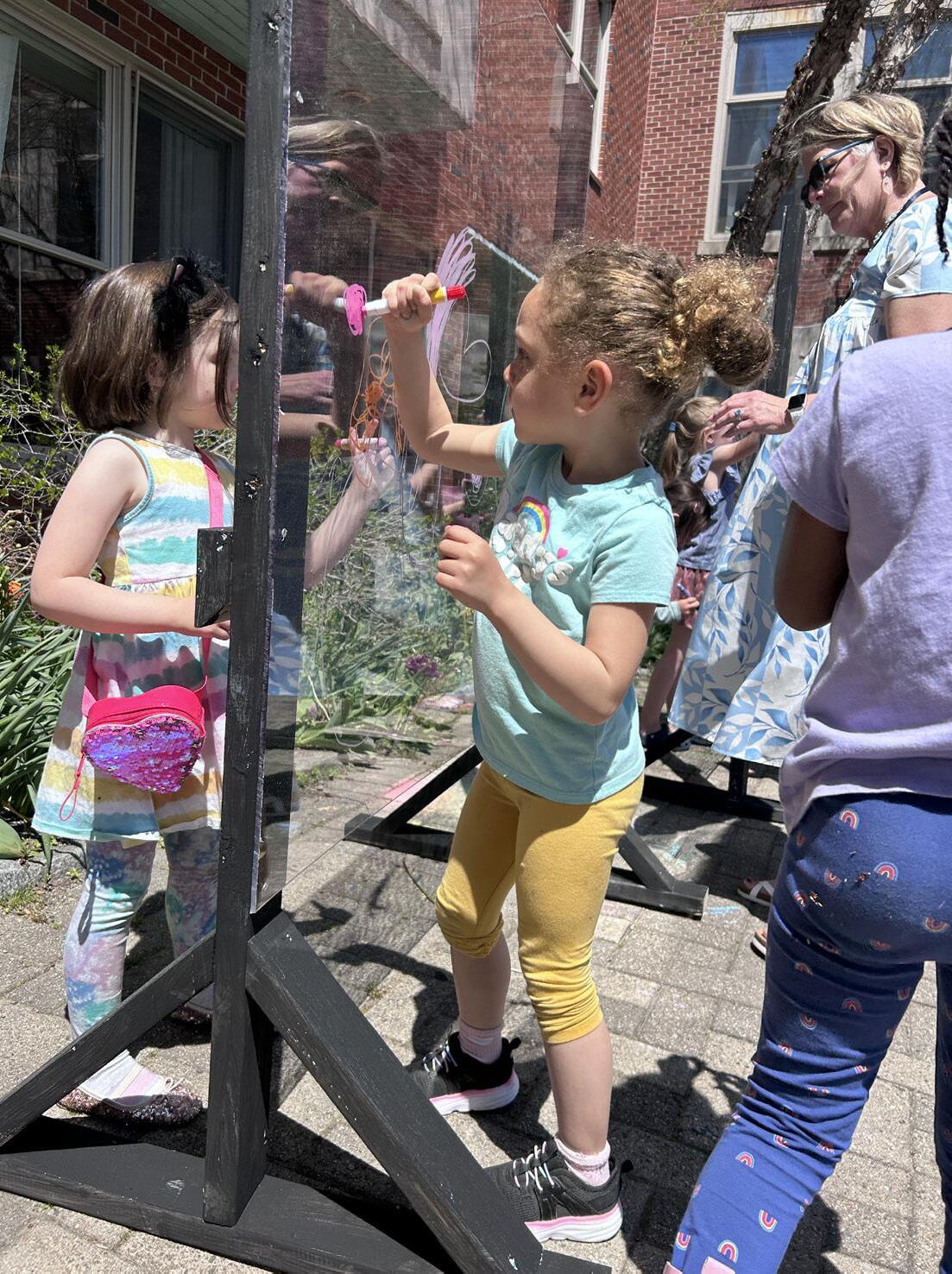
Mount Desert Elementary School now has an outdoor classroom! With funds provided by Maine Environmental Education Association, art teacher Shannon Westphal was able to create a space where students can go outside to learn. By organizing materials that the school already had and purchasing new supplies to round out the space, teachers and students can easily move learning outdoors.
Teachers can take their students out the patio exit, grab a chair and any other materials they might need to hold class. The space is equipped with movable safety barriers and a brand new plexiglass easel for drawing and blocks for engineering. More predictable materials can also be found, such as pencils, clip boards, crayons, and chalk. The space is open to all grade levels and the hope is that students and staff will be able to learn traditionally while also taking advantage of the regulating benefits of being out in nature.
MT.
ARARAT MIDDLE SCHOOL
Lauren Watkinson
The Trail Building and Interpretive Sign Project, funded by the Maine Environmental Education Association (MEEA), has expanded both Mt. Ararat Middle School’s landscape and its students’ learning experiences. What began as an overgrown swampy area behind the school has become an impressive trail system complete with an outdoor classroom, built entirely by students in the Outdoor Adventure Focus program.
The students operated power tools and faced many challenges like navigating around trees or soft, uneven ground, in all weather conditions, building more than just a trail—they developed confidence and real-world skills. Working with cedar planks, gravel, and campus-sourced logs from fallen trees gave students access to problem-solving with a variety of materials. As captured in project photos, students work intently together to measure and secure bog bridge sections across diverse terrain. This hands-on approach provided an alternative learning pathway for students.
The impact extends beyond the builders themselves. Teacher PJ O’Hanlon notes, “It enriched our campus by making adjacent green spaces more accessible and better integrated into school life.” Teachers across disciplines can now utilize this outdoor classroom space, while students gain a recreational area that promotes physical activity and environmental connection. The images tell the story: focused collaboration, careful craftsmanship, and satisfaction of building something meaningful together.
The next phase will bring interpretive kiosks featuring QR codes linking to trail camera footage, creating real-time connections between students and local wildlife ecosystems. This integration of technology and nature will create an engaging, multi-disciplinary learning environment and demonstrate how outdoor education can provide alternative pathways to learning, allowing students to connect classroom concepts to real-world applications while developing practical life skills and environmental stewardship values.
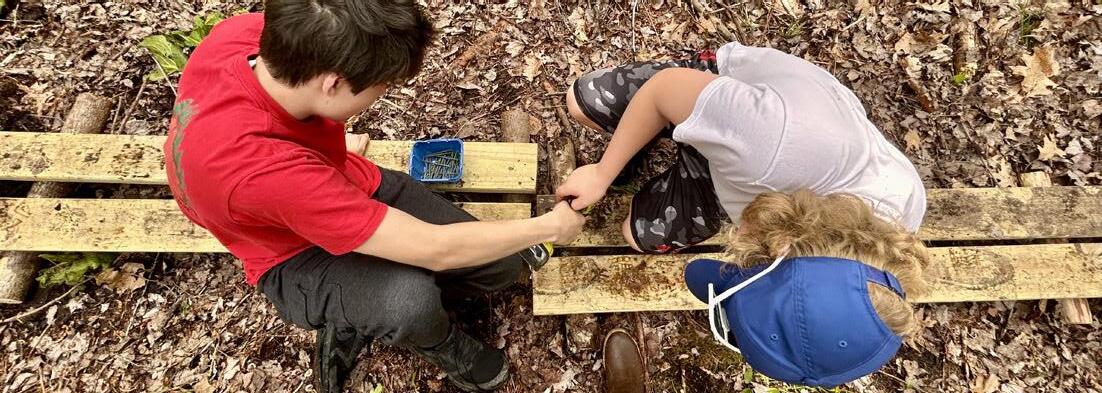
Outdoor Classroom Solutions
NEXT STEP HIGH SCHOOL - LEWISTON PUBLIC SCHOOLS
Julie McCabe

This project is an outgrowth of the internship several of our high school students engaged in last spring during which the lead Pre-K teacher noted their lack of outdoor learning spaces. Our high school students also frequently reflected on the Pre-K students’ absolute love for role-playing. Building on this experience, this year I decided to apply for a grant to help build structures to help the younger students engage in role-playing outdoors through a playhouse and three kid-sized picnic tables. The collaboration began with the high school students hosting the Pre-K students to learn about what they desired in an outdoor playhouse. With this input in mind, the high school students drew on their math skills to mock-up drawings of the playhouse structure. And on a sunny day with the help of volunteers from the community, the high school students worked in small groups, helping each other as they went, to build the outdoor playhouse. The research is clear that roleplaying is vitally important for Pre-K students to help them build social skills and practice problem-solving. Role-playing is child-led and inquiry-driven helping to foster confidence and investigative thinking. Through the picnic table construction, the younger students will also be able to complete academic tasks outside more
easily through appropriately sized means. The students can for instance now make observations of their outdoor environment and discuss these in small groups at tables. It is essential that we make outdoor learning as easy as possible to participate in now more than ever as students, even in Pre-K, may spend hours beyond the Center for Disease Control recommended limits glued to screens. I am thankful for the MEEA for allowing us this opportunity to build bridges between the teenage and Pre-K age students and to build long lasting structures that will promote outdoor learning for years to come.

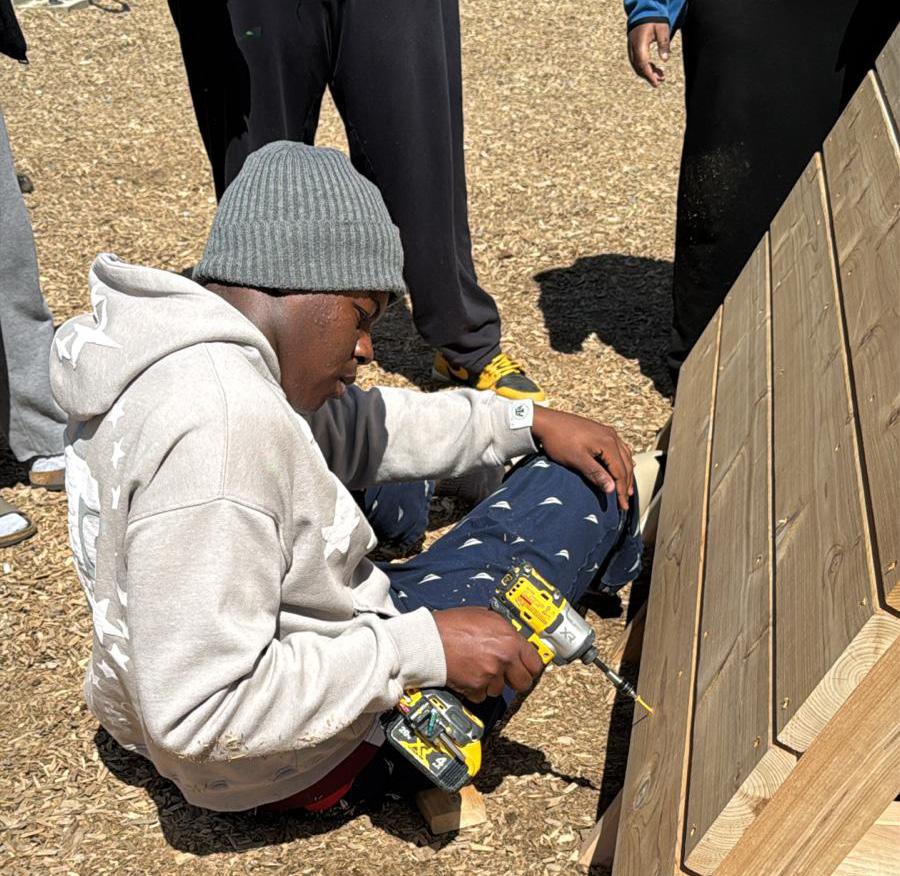
Outdoor Classroom Solutions
PISCATAQUIS COMMUNITY SECONDARY SCHOOL
Dawna Blackstone
For several years, Piscataquis Community Secondary School (PCSS) has had a goal of increasing Outdoor Learning opportunities for its teachers and students. Ten years ago, an Outdoor Learning Committee was established to apply for grants to build an Outdoor Classroom and an outdoor school trail between the campuses of PCSS and PCES. In the past 2 years, this revived committee has done amazing work through grants, volunteer time and muscle power to add a stage, sheds, a white board, tables and benches to not only the Outdoor classroom, but has added two other outdoor learning spaces: the Courtyard and the Garden classroom. In addition, a storybook walk was placed along the trail.
This MEEA grant has helped further this Outdoor Learning work in SAD #4 by meeting more of the needs of the teachers and students. New snowshoes, native and edible plants and classroom materials are all supplies that help to get our students outside. Great work is still happening. The school and the committee are working with a local family for a longterm lease of land to add to the school campus for additional trails for walking, biking and skiing, as well as the addition of a wetland for students to study, increasing their knowledge and appreciation of their local ecology and outdoor environment. Thank you MEEA for helping us get students outside!
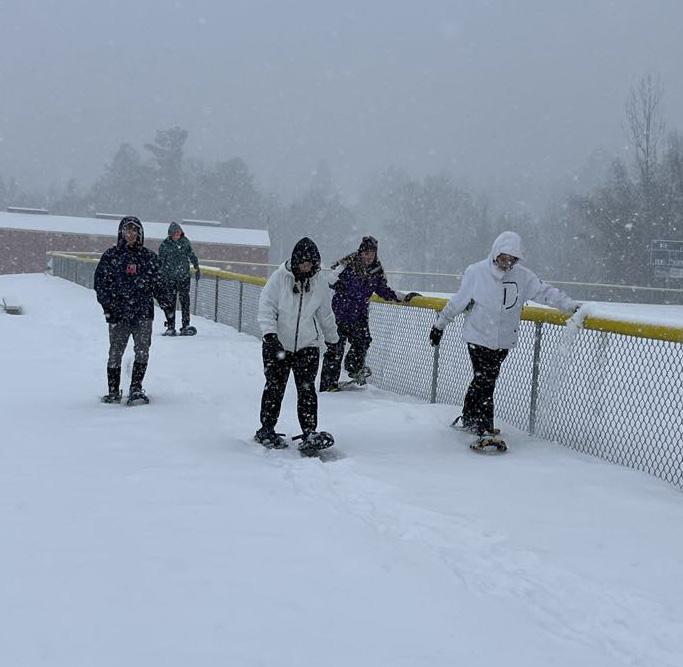
POLAND COMMUNITY SCHOOL
Emma Martineau
Poland Community School is working hard to incorporate more outdoor learning in all grade levels and content areas. We found that winters make it challenging to get out and about in the deep snow outside the confines of our playground. We purchased the snowshoes so activities such as nature walks, hands-on learning, and winter science exploration is more accessible and safe. Snowshoes also allow for more physical activity in the winter when conditions often make it harder to get out and about. We are hoping the snowshoes provide another opportunity to utilize outdoor learning to foster a lasting connection to nature, their environment, and a love of learning.
A fifth grade teacher took her class outside on the last “storm” to try out the snowshoes. Many students had never heard of snowshoes, let alone seen or tried a pair out. After some lessons on how to get them on and adjusted, students were off walking and running. Students were willing to help each other when the bindings loosened, creating lots of teamwork. Students were engaged and excited to explore nature during winter weather, and many made the comment they can’t wait to use them again next year. Students are excited to share and promote their experiences with the younger students, and teach them how to snowshoe.
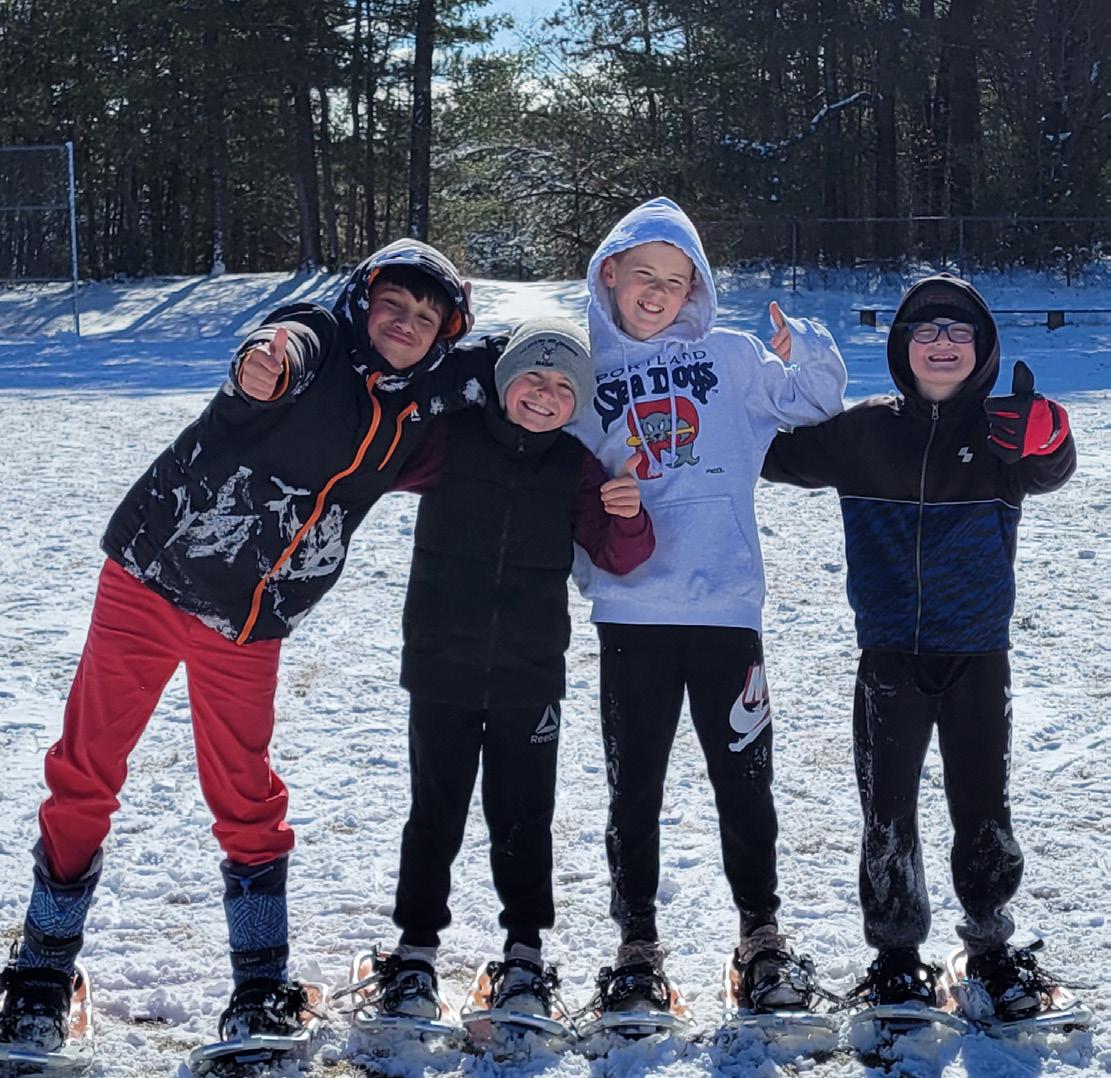
Outdoor Classroom Solutions
Martin POLAND COMMUNITY SCHOOL
Jill Mathieu
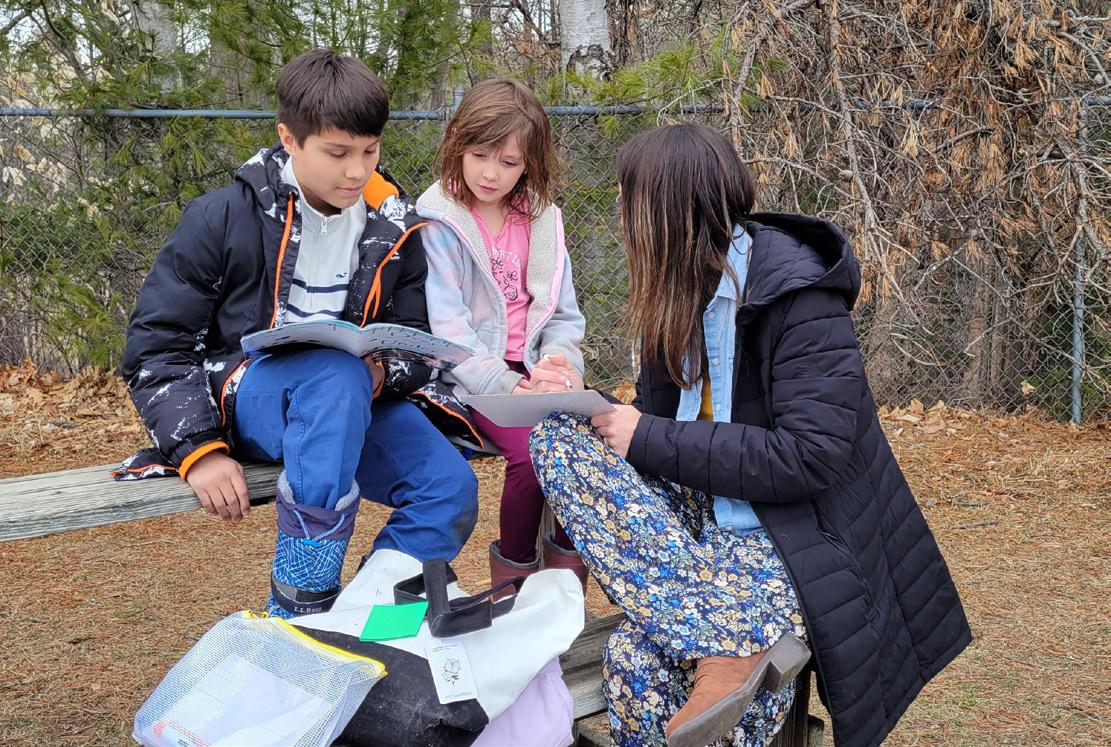
The MEEA grant was used to create outdoor learning bags for each classroom in Poland Community School and Minot Consolidated School. (Elm Street School had done this last year.) Each canvas bag has clipboards, mini white boards, dry erase markers, pencils, tissues, bandaids, pens, etc. so that teachers can pick up the bag and go without a lot of time needed to gather necessary supplies. The easy access to outdoor learning helps more teachers participate take students outdoors due to the time saved in having to gather supplies each time. Poland Community School teacher Kristie Ferland states, “The outdoor learning bags are an amazing addition to our classrooms. The bags contain essential supplies needed to assist teachers in moving lessons outdoors. My students are excited for lessons outdoors and the outdoor learning bags are filled with everything I need for students to engage in outside classroom lessons. I take my outdoor learning bag with me every time we go outside!” Thank you MEEA! We appreciate your help in making outdoor learning easier and more accessible for your students.
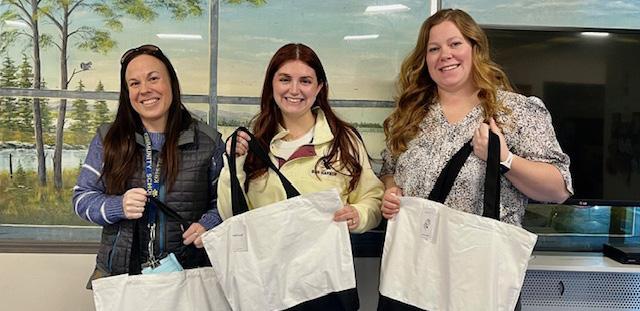
POLAND REGIONAL HIGH SCHOOL
Patrick
Poland Regional High School students and faculty have been engaged with the town of Poland to reclaim the 60 acre parcel of land behind the school and add a trail system to be used for science and wellness classes. The trail system was started in the fall of 2024 and will be in ongoing progress. The entrance to the trail system was a steep hill and needed a stairs case to help people more easily access the trails. Students during the annual Wellness Day were able to help put together the frame of the staircase and carried materials into the woods to wet areas that needed bridges. On a subsequent day, students moved rocks and arranged them in the stairs to create a flat surface, adding sand to create the step. Future projects include the completion of a railing on these stairs and the completion of more bridges in the trail system to help avoid wet areas. Students will use the system in the fall during biology, forestry and outdoor education classes.
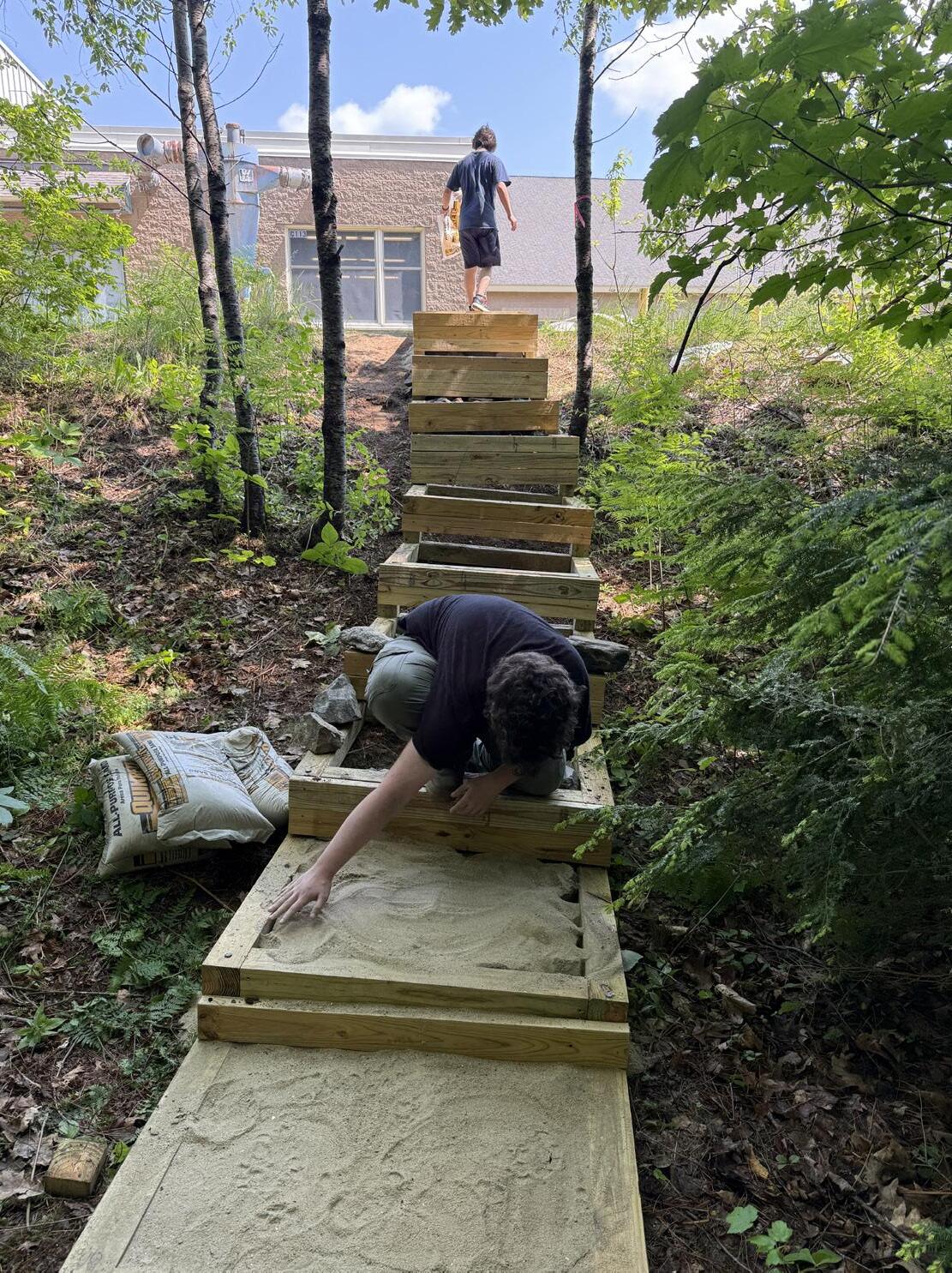
Outdoor Classroom Solutions
PRESUMPSCOT ELEMENTARY SCHOOL
Natasha Vandegrift Martinez
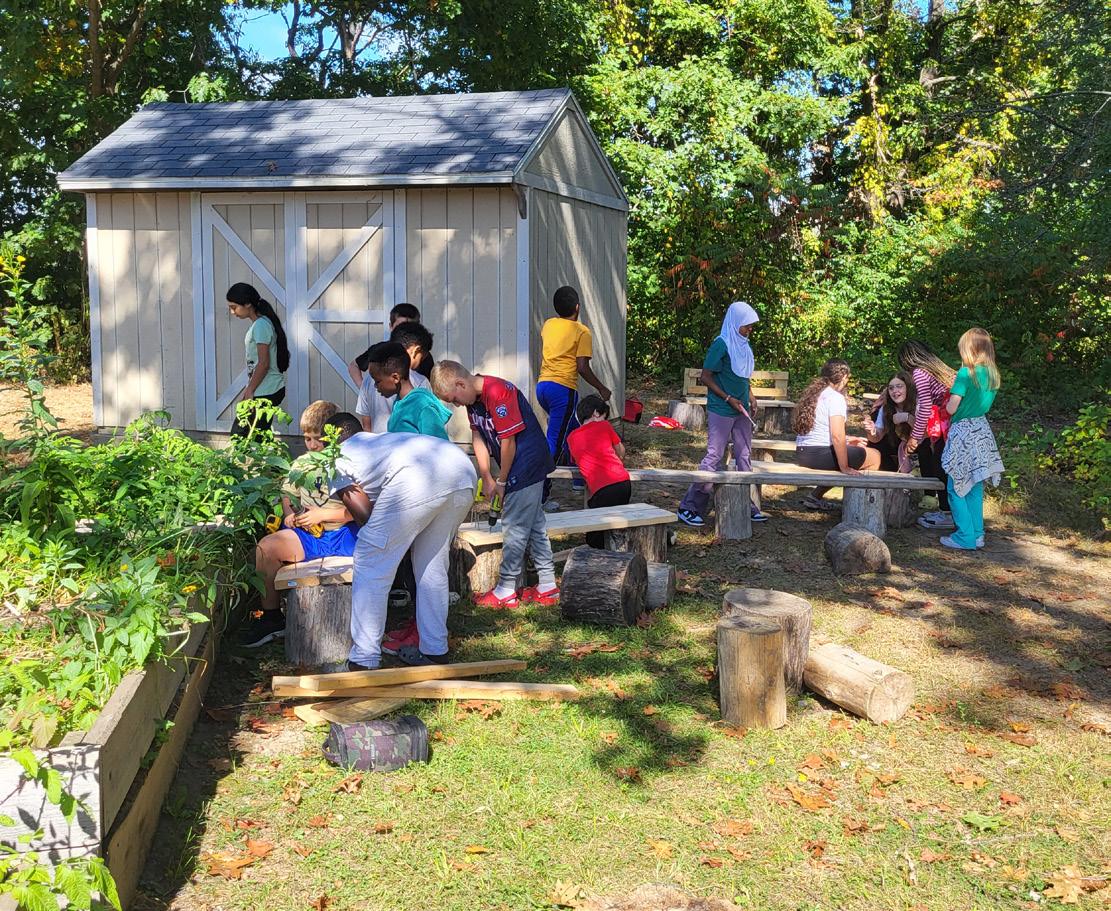
The outdoor classroom at Presumpscot is now a usable space for the whole school community. Students engage in environmental observation, creative expression, and collaborative discussions in this learning environment. The garden components provide year-round educational opportunities through seasonal changes and plant growth cycles.
The MEEA grant money was instrumental to getting materials to build benches, flower boxes and garden stones. Students were able to build and design all the pieces of the outdoor classroom so they feel accountable for the space. This also allowed for more of our school community to utilize the space thoughout the school year. Having a standing outdoor classroom has been a game changer to our outdoor learning.
The MEEA funds also went to buy materials for temporary shelter for inclement weather, garden supplies, and art kits for outdoor learning. Students were able to lead their own learning with the use of this money.
Grant funding has successfully created a versatile, sustainable outdoor learning environment that enhances educational experiences while connecting students with nature and fostering hands-on engagement across multiple academic disciplines.
SACO MIDDLE SCHOOL
Melissa Gosselin
During two weeks in May, second graders from Fairfield and Young Schools traded their desks for dirt trails, immersing themselves in an outdoor learning adventure led by Saco Middle School (SMS) students. The interactive “Trail Talks” event gave nearly 200 second graders in the district the chance to learn about local ecosystems through exploration, observation, and hands-on activities in the woods surrounding Saco Middle School.
Students were first educated about trail safety and how to use nature trails properly. From exploring forested trails to searching for salamanders and identifying native plant life, the second graders experienced science in a way that was active, engaging, and memorable. Their guides were seventh- and eighth-grade students from SMS’s Sebago Team, who led small-group activities across three student-built trails that have become a vibrant outdoor classroom.
The middle schoolers drew on their recent studies to create age-appropriate lessons and activities, including scavenger hunts, journaling, and observation games. Their enthusiasm and preparation helped make the trails feel like a living laboratory, sparking curiosity in their younger peers. “The second graders were so excited to be out there, especially when they found frogs, insects, or unusual leaves,” said 7th grader Olivia Garland, who helped lead a session. “It was cool to show them that learning can happen anywhere—even in the woods.”
The trails, built by SMS Sebago students, have become a space where students across grade levels can engage in project-based learning and environmental stewardship. The area includes four vernal pools, where students observe and collect data on amphibians and aquatic insects as part of climate monitoring efforts in partnership with the Gulf of Maine Research Institute.
For the second graders, “Trail Talks” was more than a field trip—it was a chance to see science come alive, guided by students just a few years older who modeled curiosity, collaboration, and a connection to the natural world. One second grader stated, “I can’t wait until I am in seventh grade so I can lead a group of second graders!”
Outdoor Classroom Solutions
SANFORD MIDDLE SCHOOL
Diana Allen
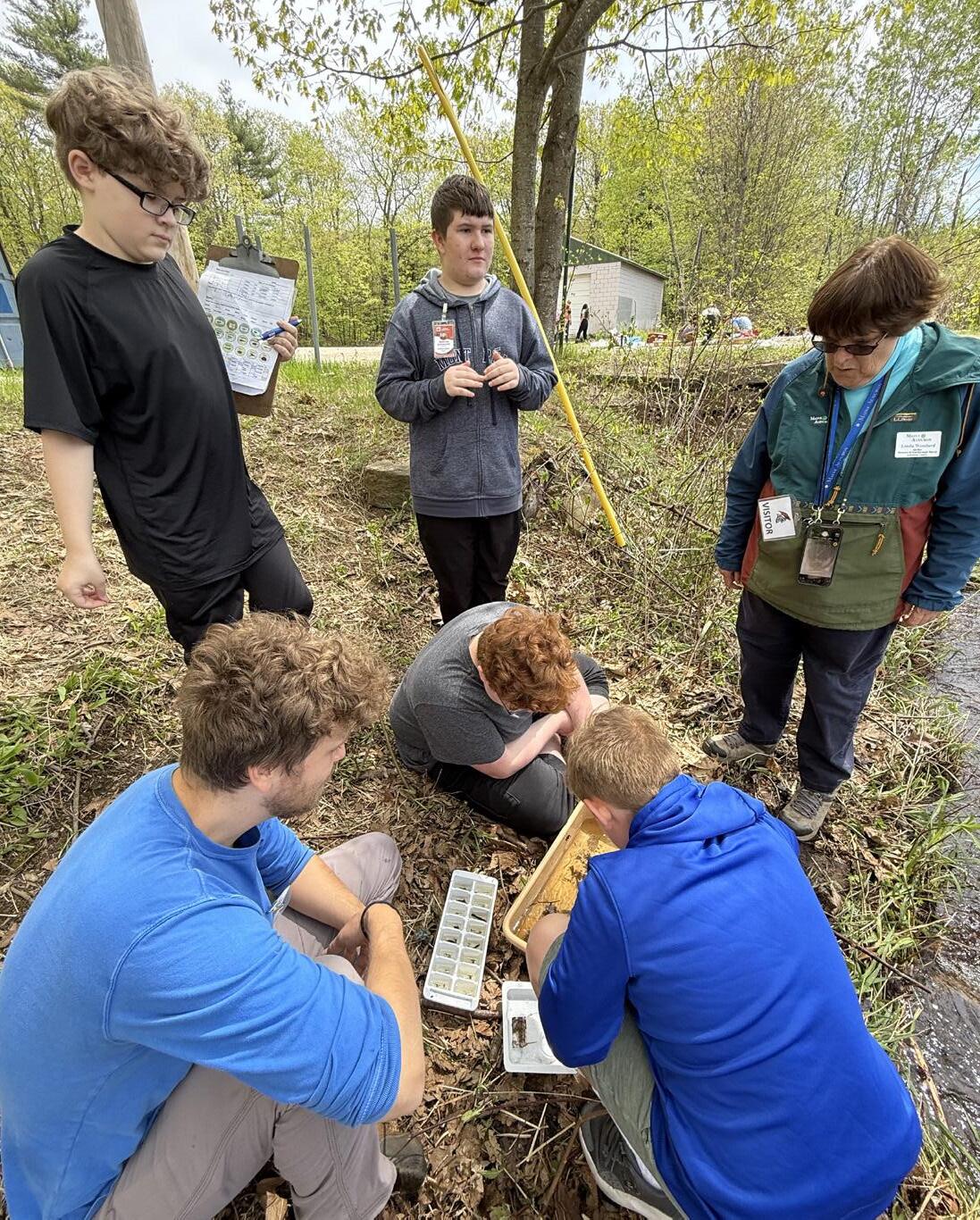
Our project is twofold: cleaning up along our local river and using a search and identification of macroinvertebrates to determine the water quality of a tributary to our river.
In the spring and fall we took over 100 students out to clean up our school grounds and specifically focused on removing trash from our river and tributaries. We cleaned up more than 20 buckets filled with metal, wood and mostly plastic in various forms.
In the spring students from Ms. Allen, Mr. Sanborn and Mr. Hoag’s science classes pulled on our waders, grabbed our dipnets and headed out to the tributary to look for macroinvertebrates like caddisflies, dragonfly nymphs, may flies and crayfish. Over 150 students got to wade, search, examine, identify and determine the health of the water based on the organisms’ sensitivity to pollution. It was a beautiful sunny day, with 8 volunteers from Maine Audubon and Three Rivers Land Trust. The students had an amazing day and learned more about being stewards of the environment.
SEARSPORT ELEMENTARY SCHOOL
Amy Hafford
Fourth-grade students at Searsport Elementary School, led by Ms. Hafford, engaged in a rich, place-based learning project that combined science, literacy, technology, and cultural studies.
Students began by exploring local habitats to observe and identify birds, learning field techniques and documenting their findings in journals. These explorations were paired with reading time in hammocks outdoors, using nature guides and stories that emphasized ecological and Indigenous perspectives.
A key component was the creation of a phenological trail to observe and display seasonal changes in the local environment. Students tracked natural phenomena, designed informative trail markers using 3D modeling software, and printed them with a 3D printer. Making the trail interactive and educational.
The project culminated in a field trip to the Damariscotta shell middens, where students learned from Wabanaki educators about the cultural and ecological history of the region. They explored how the Wabanaki people have long observed and lived in harmony with the natural world.
This hands-on, interdisciplinary project fostered a deep connection to place, encouraged environmental stewardship, and highlighted the importance of Indigenous knowledge. It exemplifies how outdoor, experiential learning can inspire curiosity, creativity, and respect for both nature and culture.
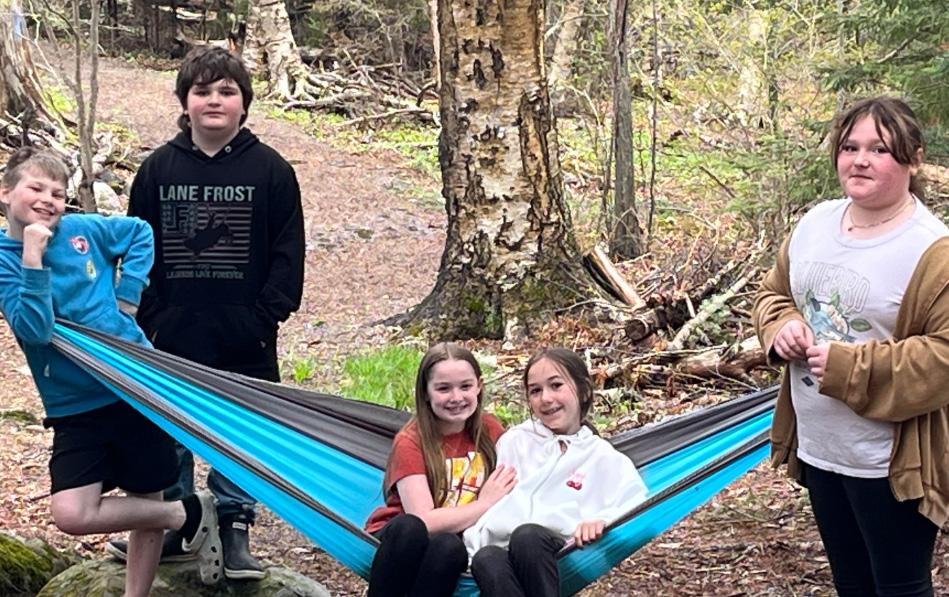
Outdoor Classroom Solutions
SEDOMOCHA
Stacy Shorey
The funds from this grant were used to purchase Lincoln Logs and a storage unit to house the materials. What may seem like a simple toy has become a powerful learning tool in our early elementary classrooms. Students have eagerly embraced the Lincoln Logs, creating chairs, houses, bridges, and other imaginative structures during both indoor and outdoor play.
One Kindergarten teacher shared that the logs quickly became a favorite classroom activity. Students were so excited to build a log cabin reading nook that they began arguing over who would get to use it. To keep things fair, the teacher implemented a lottery system where names were drawn each day to determine who could spend reading rounds inside the cabin. The students’ enthusiasm for reading grew simply because of the cozy and creative space they helped build.
Once the logs were introduced to outdoor learning spaces, a whole new layer of benefits emerged. Students naturally gravitated toward teamwork, communication, and problemsolving as they worked together to build larger and more complex structures. Cooperative play flourished, and teachers observed meaningful social-emotional growth as students negotiated roles, shared materials, and revised their designs collaboratively.
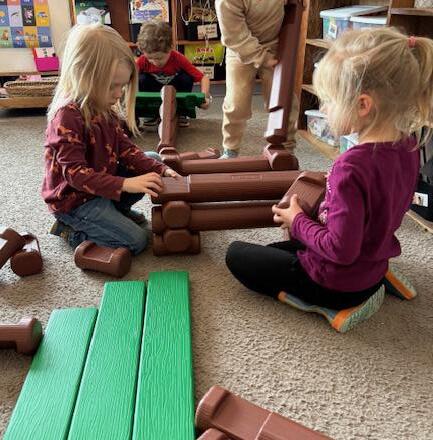
Beyond play, these experiences also supported academic skills in STEM areas—particularly spatial awareness, early engineering concepts, and counting. The flexibility of the logs allowed for creative freedom while still providing structure and challenge.
Thanks to this grant, our students are engaging in high-quality, hands-on learning that fosters imagination, collaboration, and joy. The Lincoln Logs have become a highlight of the school day and an example of how strategic investments in play-based learning materials can make a meaningful difference in a child’s education.
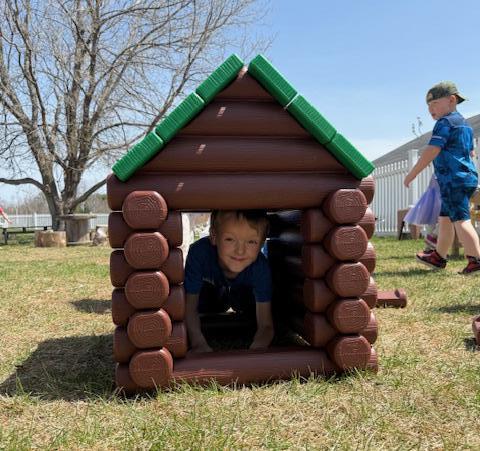
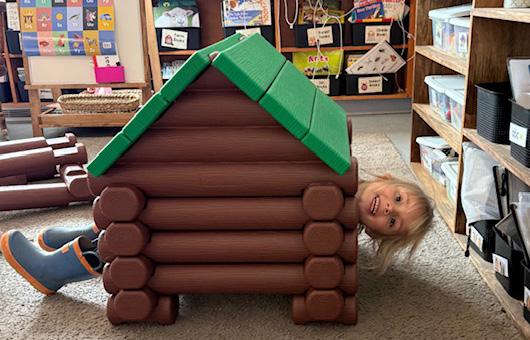
Outdoor Classroom Solutions
ZIPPEL ELEMENTARY SCHOOL
Christopher J. Hallett
Thanks to the generous support of this grant, Phase 1 of our outdoor learning space project at Zippel Elementary School has been an incredible success and a meaningful step forward in our long-term vision for environmental education.
This spring, we created a vibrant outdoor learning area by adding multiple picnic tables and raised planter boxes, which now serve as the foundation for hands-on, project-based learning. Our first major project began at the District’s school farm, where students planted seeds in the greenhouse. Once the seedlings matured, they were transplanted into the new planter boxes at school, giving students an immersive opportunity to study plant life cycles from seed to harvest.
Throughout the spring, students also created pine cone bird feeders, read outdoors from our newly purchased outdoor learning library, and explored nature-themed books focused on weather, ecosystems, wildlife, and environmental stewardship. These resources have helped spark curiosity and deepen connections between academic content and the natural world.
One of the most exciting projects involved the introduction of butterfly gardens. Students observed the full life cycle of butterflies—from caterpillars to chrysalis to release—bringing science standards to life in an unforgettable way. These projects have made learning more engaging and meaningful for our students while encouraging them to become stewards of the environment.
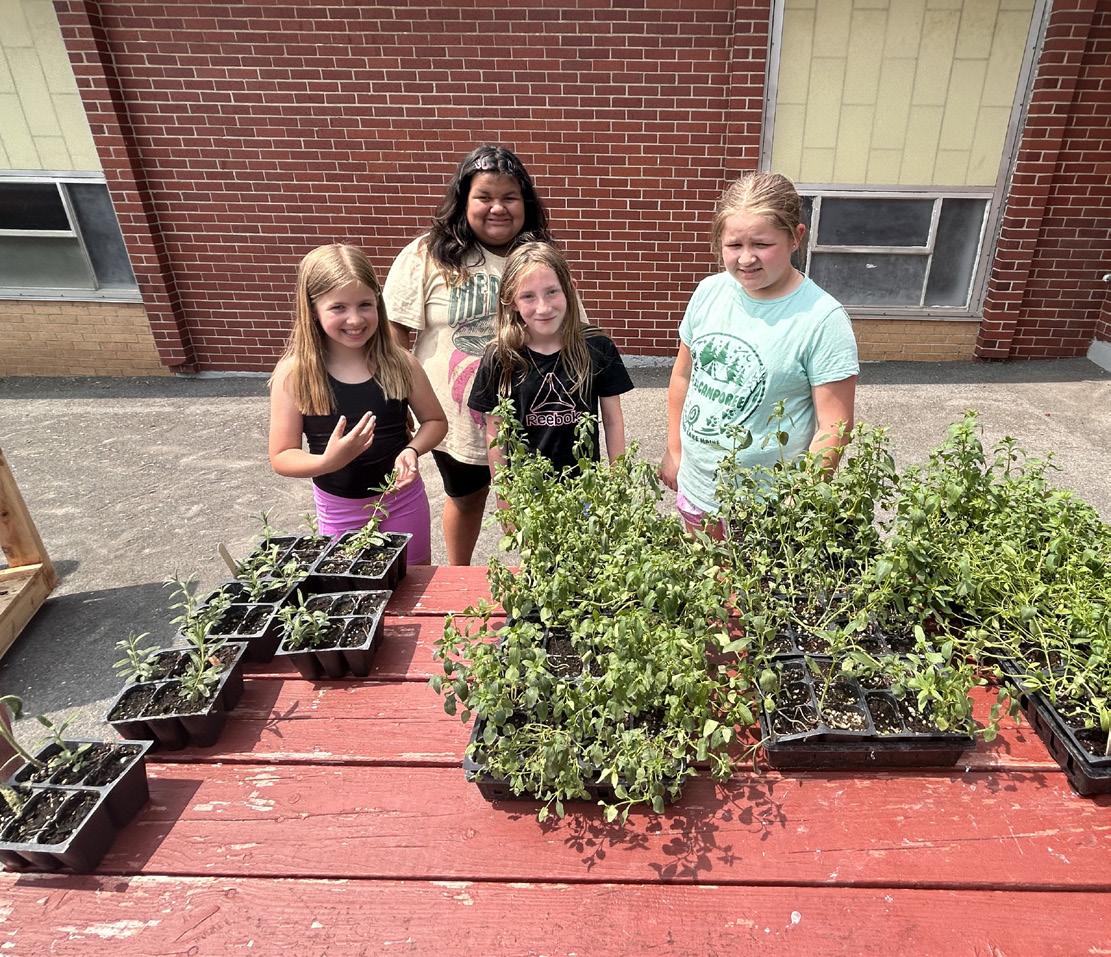
The support from this grant has already made a visible impact, and the project will continue into the summer and early fall. Through a generous Rotary Club grant, we will construct a permanent gazebo-style classroom to provide shade, structure, and sustainability for future outdoor learning. This space will be dedicated in honor of a beloved student who had a passion for outdoor learning, adding a deeply personal and lasting legacy to our efforts.
We are so grateful for the opportunity to bring this vision to life. Our students now have a space where learning, exploration, and nature intersect—and this is only the beginning.
Thank you for believing in our students, our staff, and the power of outdoor education!
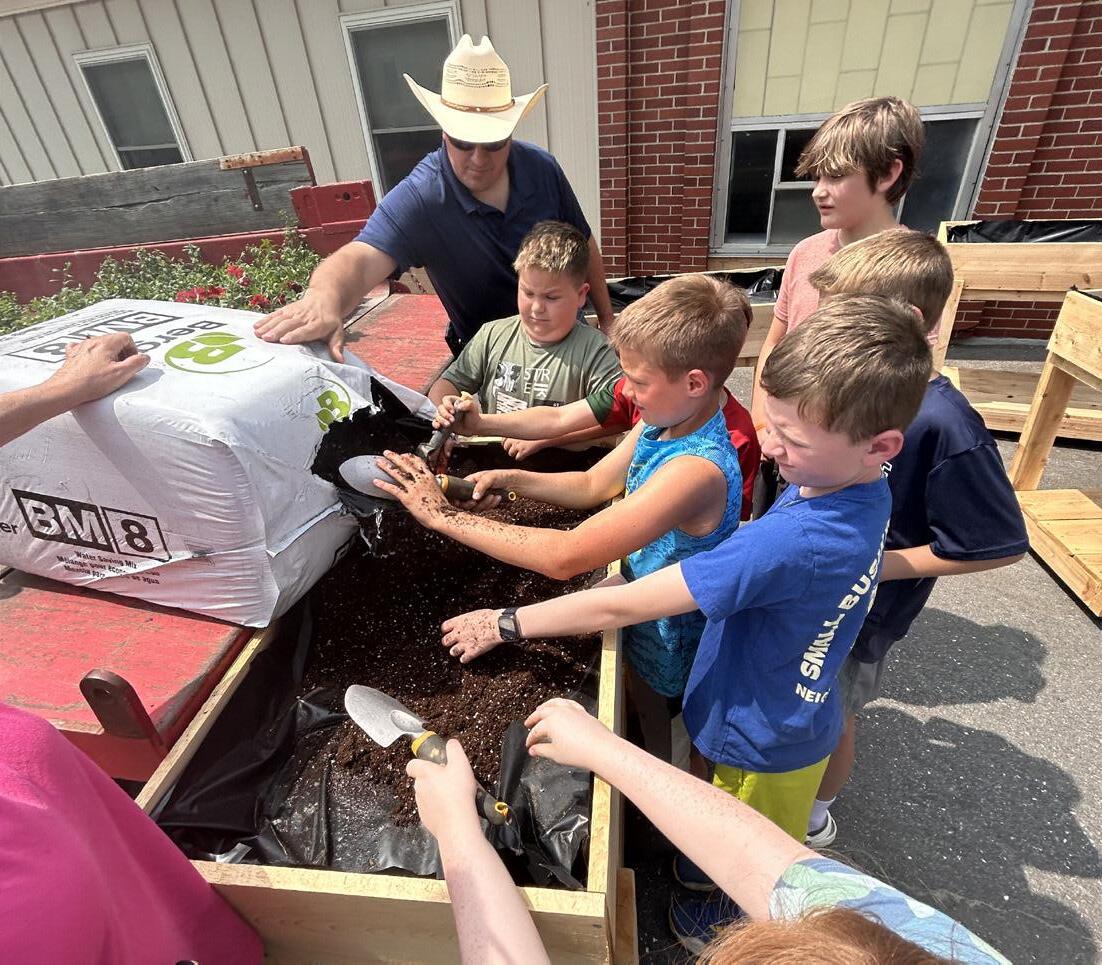
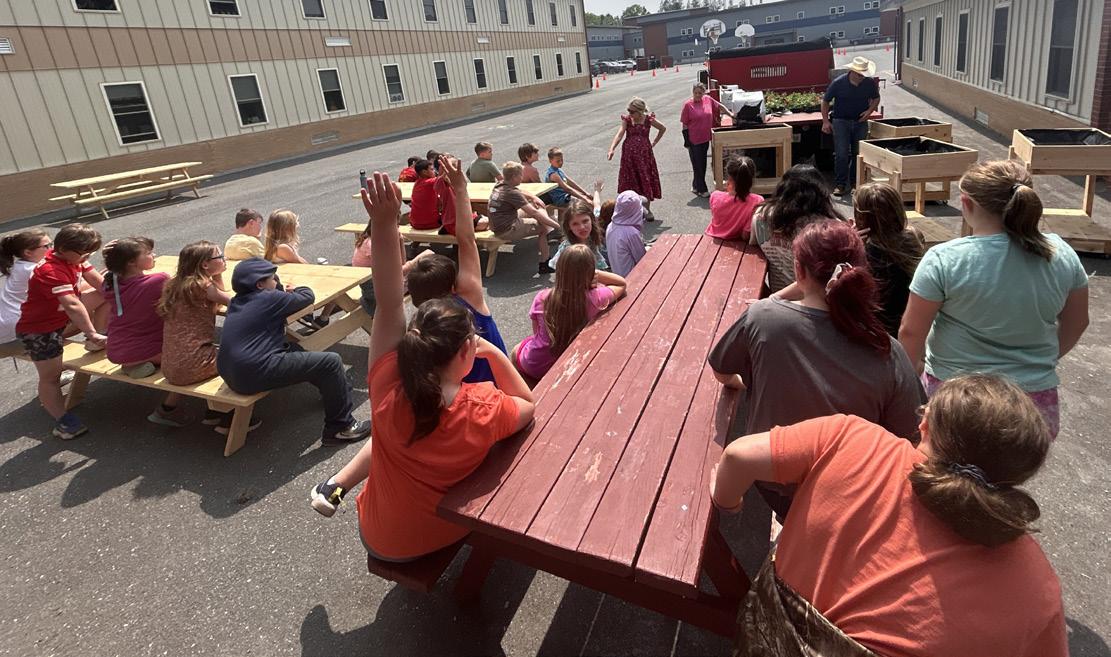
Outdoor Recreation & Sporting
BREWER COMMUNITY SCHOOL
Katherine Miller
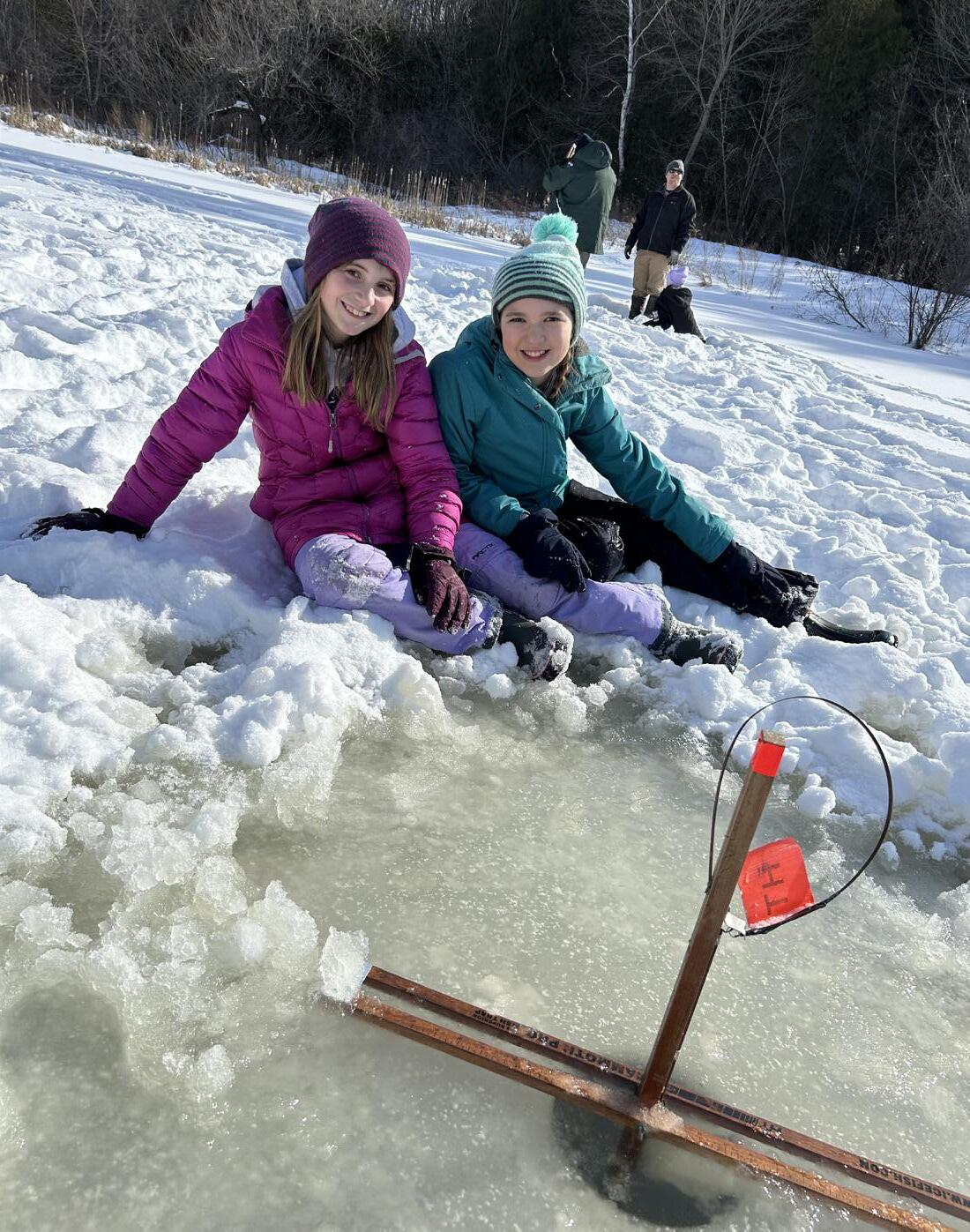
We took students to the Penobscot County Conservation Association to provide our students with a unique full-day learning experience ice fishing at their club. Old Town Trading post provided bait, and the grant provided us with traps and gear so students could ice fish on the pond, sledded and play on the property, and warm up in the club facilities. We had visits from local game wardens, club members, and many volunteers who engaged with our students teaching them fishing techniques, knot tying, and casting skills. We learn about catch and release fishing practices to educate students about sustainable fishing practices and conservation.
Jan Winchester, a fifth grade teacher at BCS, “loved how the trip provided students with an opportunity to engaged with nature, outdoors, at a local pond in their community and grow an appreciation for our their local environment and fishing.
CASCO BAY HIGH SCHOOL
Leslie Appelbaum
Written by Princess Sakyi
On the first day of intensives, we started off by making a list of our hopes and fears. My favorite part was when someone said one of their hopes was to live. Live, we did! We then moved into watching a beautiful movie that made some of us cry. It’s called Pride and it’s based on a true story about Jim Ellis, a swim coach founding an all-Black swim team. Then we headed off to the pool. We talked about some rules for the pool and how to keep ourselves and each other safe. The pool was a bit cold. The first day was just to see what skills people were good at and what skills needed to be worked on.
Each and every day we all had made tremendous progress and we were proud of our efforts and accomplishments. During our time in the pool, we watched beginners who did not know how to swim, swim! We watched swimmers hone in their skills, and we watched many head to the deep end. It was truly incredible, and was necessary, as swimming is a skill that is critical for life. We would practice dry lands, which is an exercise that makes us stronger, preparing us for the water.
Before we swam everyday, we would work on our children’s book! We each created a book teaching water safety, and encouraging water practices for our audience: 3rd graders at Talbot. Every single elementary student adored the books, and carefully observed the characters as they would be scared to swim, and finally head in the water. (Similar to students who first joined the swimming intensive!) After the end of our intensive, we not only constructed a relationship with water, but with other students and teachers as well. I cannot stress the importance of this intensive enough, and I am entirely grateful for the Swimming Intensive!
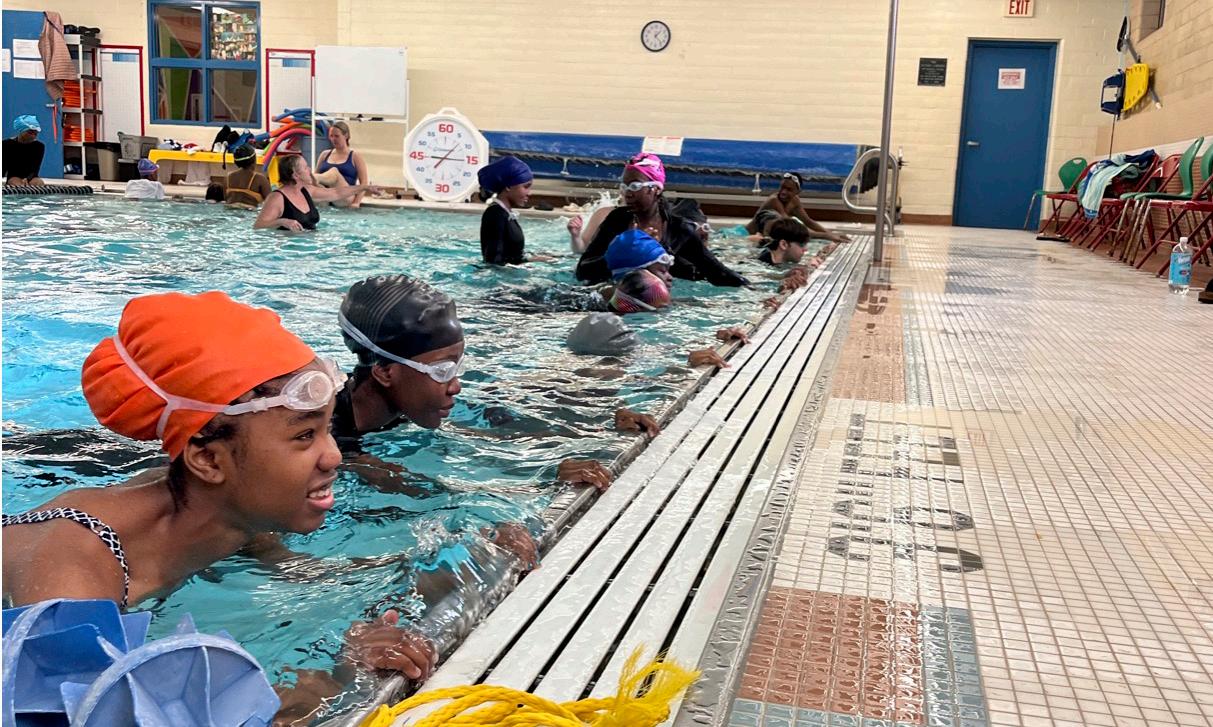
Outdoor Recreation & Sporting
CONY MIDDLE AND HIGH SCHOOL
Brenda Weis

The Cony School Garden serves as a “living laboratory” providing healthy and engaging learning opportunities for students. Across course disciplines, the garden enables students to connect with nature, see the relevance of their education, and examine the origin of their food. Funds provided by the Maine Environmental Education Association were used to enhance school garden productivity, to enable increased outdoor engagement, to develop agricultural and life skills, and to access fresh food for Augusta children and their families.
One of the most meaningful outcomes of the Cony School Garden project was watching students who had never planted a seed before gain hands-on experience with growing their own food. Thanks to the $1000 Maine Environmental Education Association grant, I was able to replace aging wooden raised bed frames, purchase Coast of Maine raised bed mix and seed starting soil, buy vegetable and flower seeds as well as a bundle of row cover. My 8th grade Health Education students learned the basics of Square Foot Gardening and were able to directly apply this planning to seedling trays and the 4x8 raised beds.
Several students expressed surprise and pride when their seedlings sprouted, and some even talked about helping start gardens at home using the same simplified techniques they learned in class. Our discussions around the benefits of growing local foods helped them understand the connection between nutrition, sustainability, and community.
Knowing that the produce they were growing would be used for summer school meals and fall school lunches gave them a sense of purpose and contribution. This project didn’t just teach gardening—it built confidence, practical skills, and awareness around nutritional health that students will carry with them beyond the classroom.
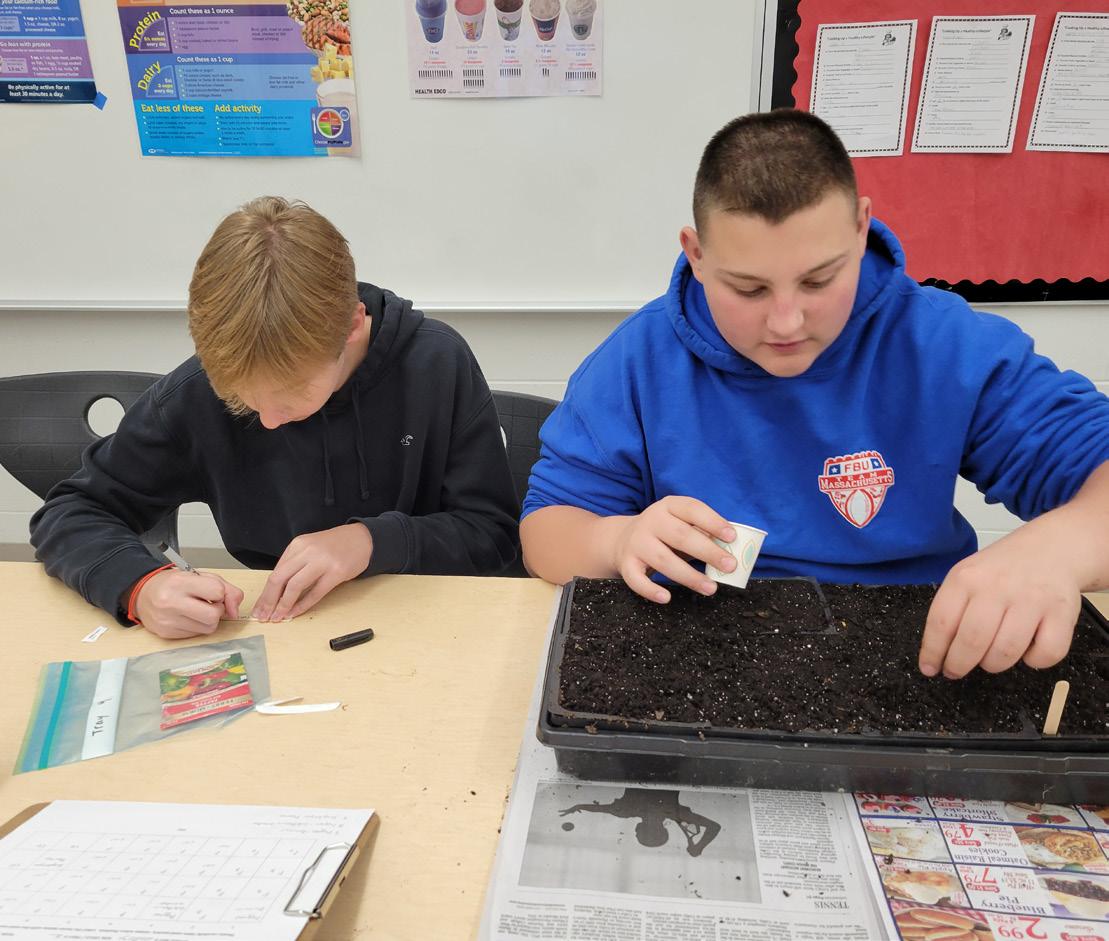

Outdoor Recreation & Sporting
GORHAM SCHOOL DEPARTMENT
Heather Whitaker MINOT CONSOLIDATED SCHOOL
At Gorham Middle School, outdoor education is a cornerstone of our Alternative Education Program. Through hiking, camping, and other nature-based experiences, our students build confidence, teamwork, and a deep connection to the environment. These opportunities not only support academic learning but also social-emotional growth—many of our students thrive when learning is hands-on, active, and outdoors.
Thanks to the generous support of the Maine Environmental Education Association (MEEA) through two separate grants, we’ve been able to outfit our students with the clothing and gear necessary to safely and successfully participate in multi-day outdoor adventures. These trips—some of the most memorable and transformative parts of our year—would not be possible without this support.
This year, we’re excited to use MEEA grant funding to purchase high-quality overnight backpacks for our students. Although an extended illness delayed our outdoor education teacher’s ability to place the order until recently, we’ve now joined Osprey’s discount program and are working with their team to select backpacks that fit our students’ needs. We’ve even applied to become an official Osprey Dealer to stretch every dollar as far as possible.
All equipment is stored in our dedicated gear closet and is reused year after year, making the program sustainable. We also lend gear to other programs in our district so more students can access the outdoors as part of their education.
“Our outdoor learning program simply wouldn’t happen without the generous support of organizations like MEEA,” says Heather Whitaker, teacher and program lead. “These experiences change students’ lives, giving them a sense of belonging, achievement, and a connection to the world around them. MEEA’s support has helped us remove financial barriers and open up the outdoors to every student, year after year.”
Jennifer French
Many classrooms have taken advantage of learning outdoors this spring. It is fun to see the activities the different classrooms have taken part in when looking out the window. Kindergarten has been doing their snap words with chalk on the tar. 4th grade has been working on their writing in the garden- even on misty days as we have pop-ups that cover the picnic tables.
Our outdoor learning is a work in progress for our teachers. We now have a committee that will be working with teachers to get outside more often as a school. We have our outdoor supplies stored in cabinets that are accessible to all. Because we are a Pre-k to 6 school, classrooms can work together to set up and take down supplies/areas.
The community garden is worked on by all grades throughout the year. In the spring we plant and weed. In the summer, groups come in and weed and water. In the summer and fall we harvest all of the veggies we have grown. Some of the produce is even used in our own lunch program!
As you can see, everything we are working towards is a work in progress. With the support of our administration, our staff, and our community, our programs slow growth will hopefully lead to experiencing the wonders of the outdoors on a more frequent basis.
“It may take awhile to learn the expectations for outdoor learning, but if we make it a routine, we will become used to the outdoor distractions.”
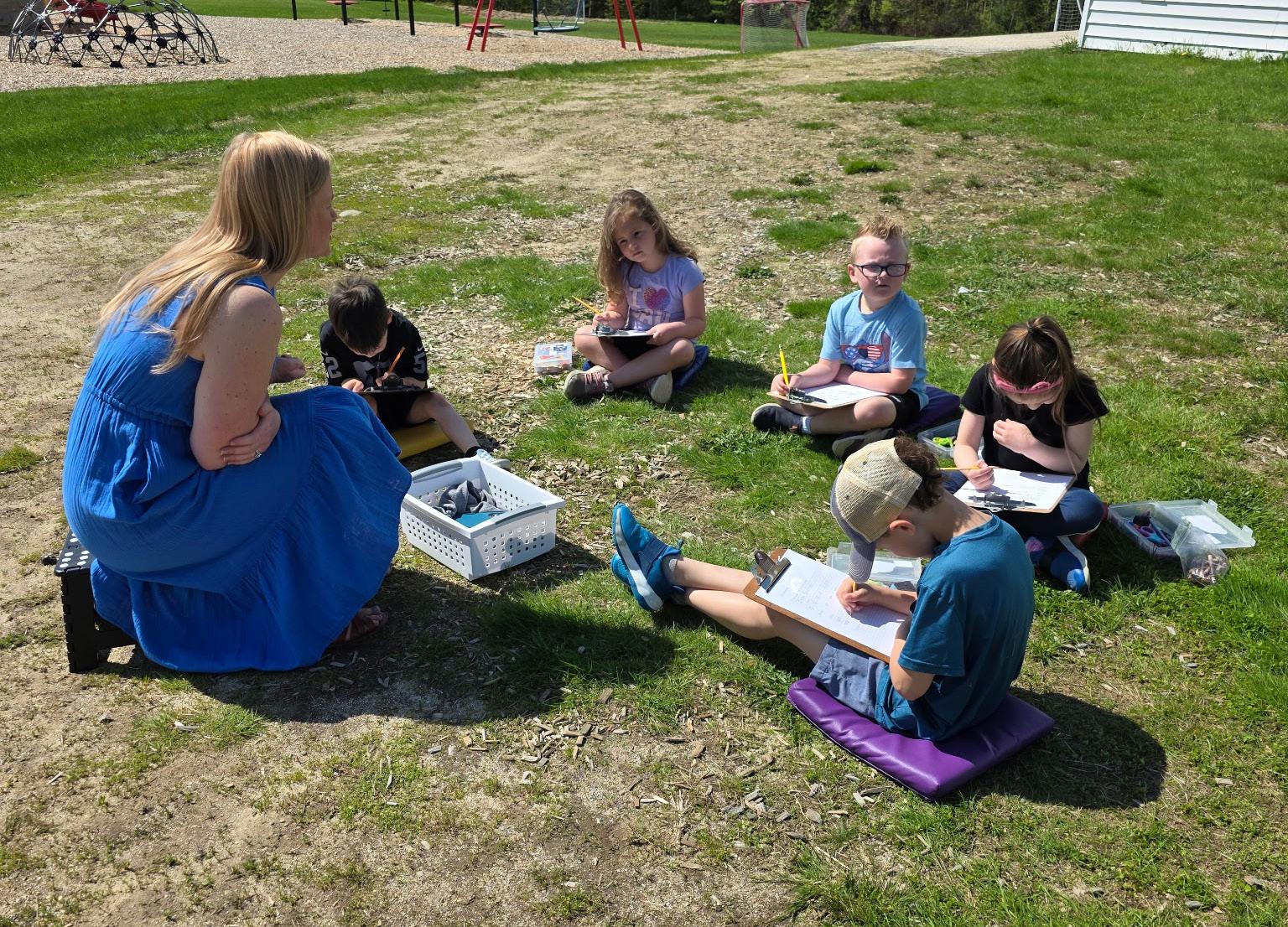
Outdoor Recreation & Sporting
OAK HILL HIGH SCHOOL
Timothy E. Farrar
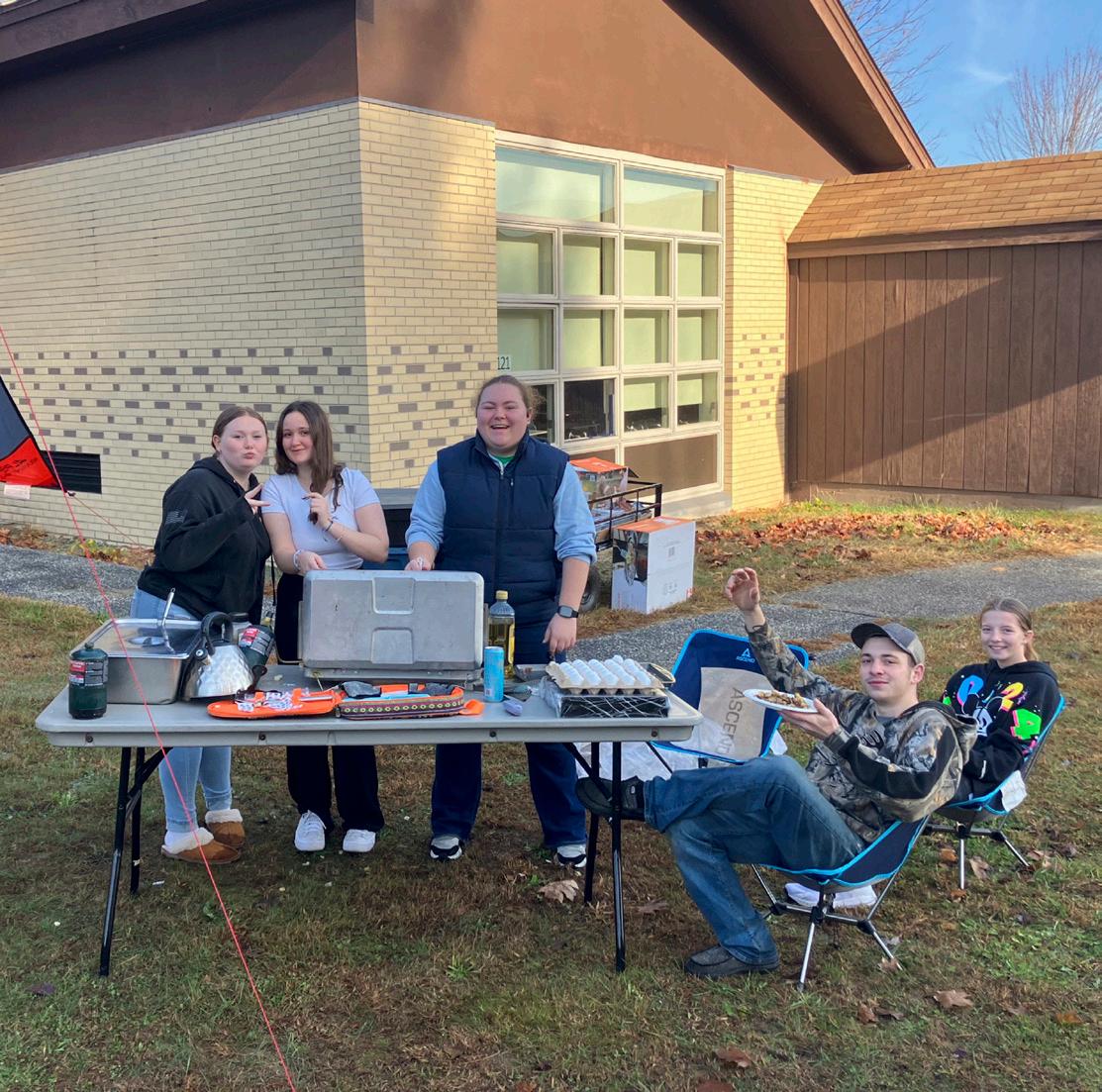
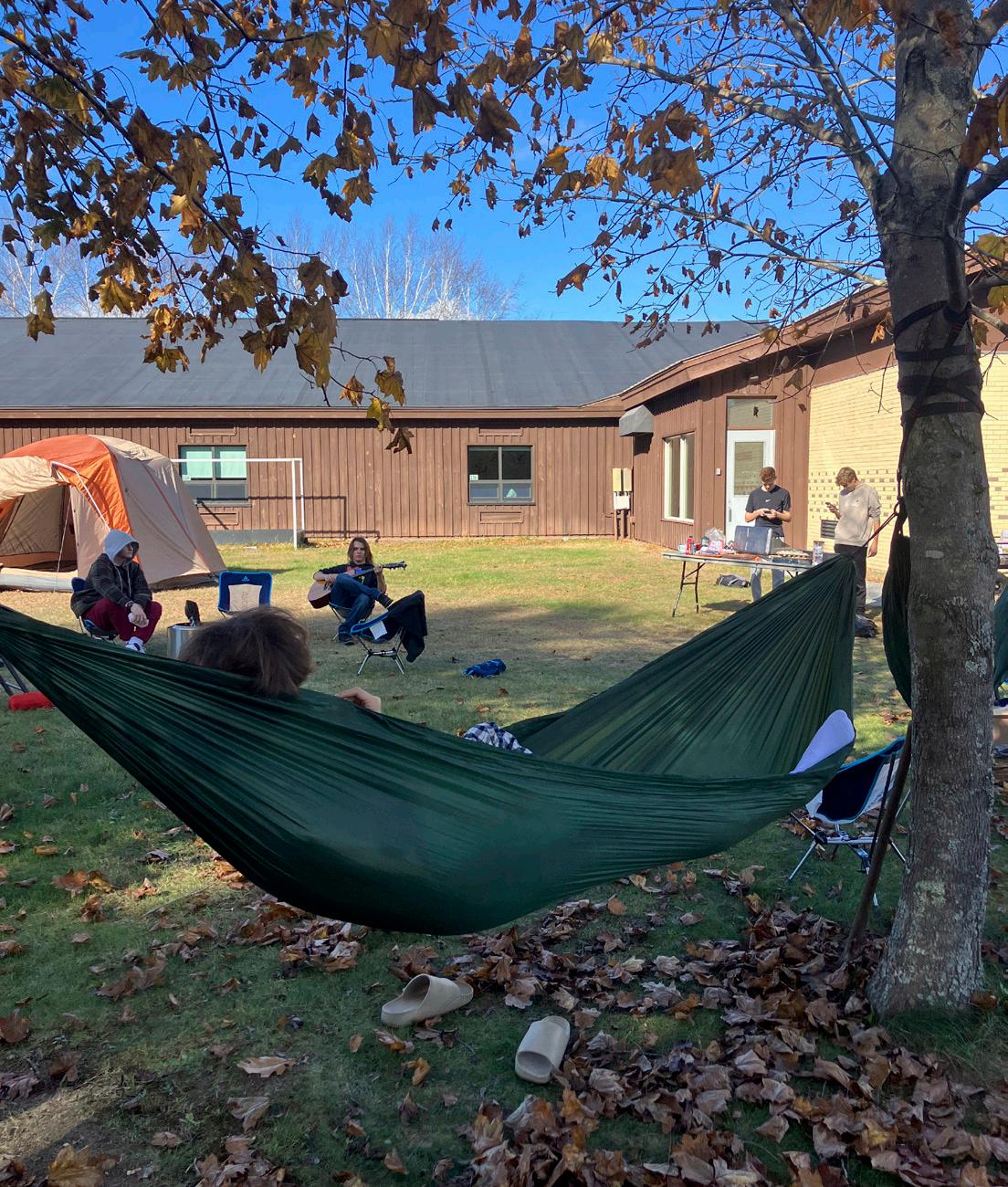
Oak Hill High School is a school that promotes outdoor based learning. Our school has made a decision to make getting our students outside a priority. We have the resources on campus and district and community support to continue to foster outdoor learning. In the last month I have seen students from math, English, French, science, history and health classes joining our PE students in getting outside to take a recreation break as well as enhance the learning environment.
Our French teacher took her class out for picnic of cheese pate and baguettes. Our geometry teacher had students measuring trees height using something Pythagorus invented. Our health classes were enhancing their relationships by walking with a friend around campus wide nature trail system.
Our outdoor learning area is just the launch pad for accessing other activity areas for our school community to use.
I was able to put up a game camera to get pictures of coyote, gray and red fox, bobcat, bald eagle and opossum that were traveling through our campus. Which highlighted to our students and staff that we are part of the ecosystem.
We are continuing to grow as my colleague is now planting a small garden with hopes of growing to stalk our lunch time salad bar. Students have been busy moving top soil, planting plants and veggies, setting up the water barrel. We even have students excited to come in this summer to water the garden to keep everything growing.
For our outdoor learning area we are adding a canopy and seats so a more formal classroom can in place in the fall.
Our hope is that we are growing in our students a greater connection to the outdoors. A connection that goes beyond the knowing facts and getting a good score on a test. We want them to get their hands dirty in soil, hear birds singing in the trees and breath in the fresh air we are privileged to have in Maine.
Outdoor Recreation & Sporting
WISCASSET MIDDLE HIGH SCHOOL
Molly Carlson
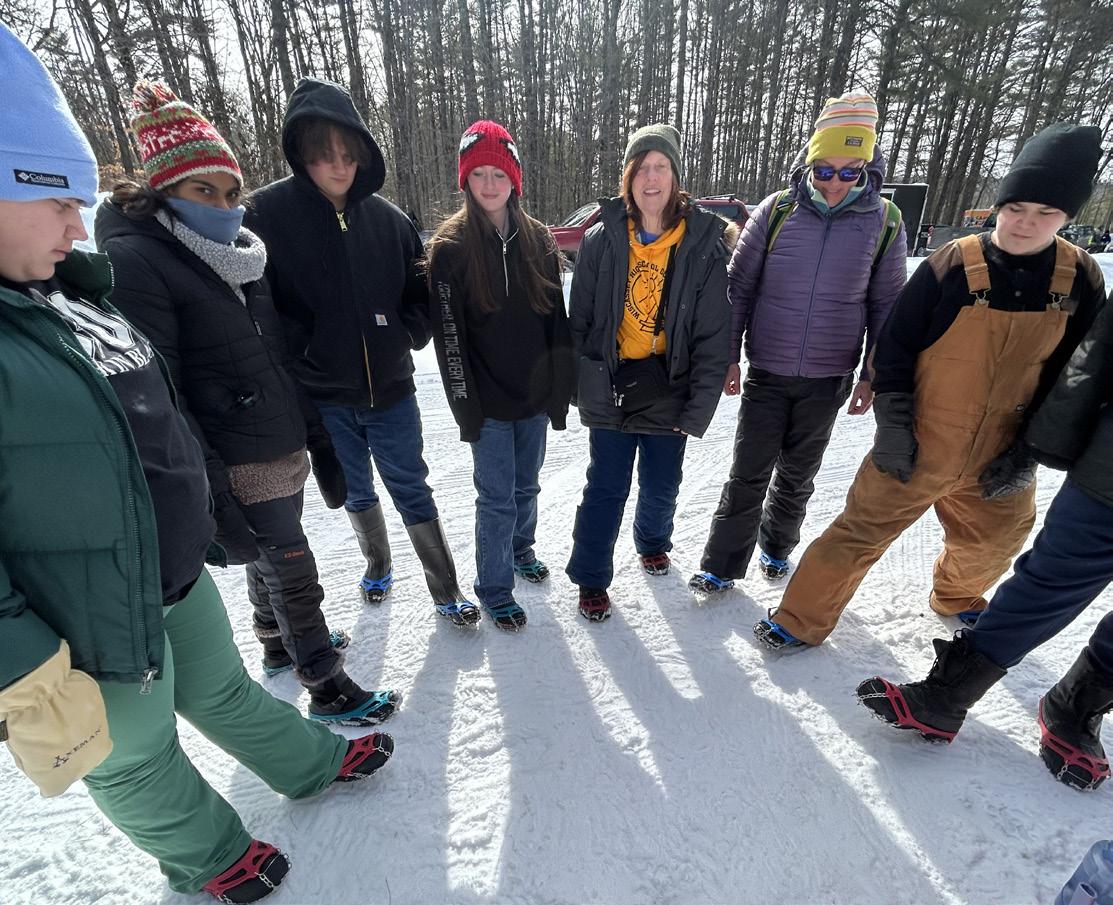
The anticipation of experiencing her first snowfall led Yashaswini Dikonda, an 11th grade exchange student from India, to join a Wiscasset Middle High School Outing Club trip to Hidden Valley in January of 2025. It did not disappoint! She felt the kiss of flakes on her upturned face and laughed with pleasure. She wanted to try to walk on the frozen water in the pond but felt uneasy with the lack of traction. Donning a pair of microspikes purchased with the MEEA’s grant, Yashaswini walked on the frozen pond exclaiming “ I can’t believe I am doing this!” She had so much fun on this day trip that she joined another Wiscasset High School Outing Club in February, and went ice fishing at Range Pond, sponsored by the Maine Dept. of Wildlife and Fisheries and Teens to Trails. The microspikes were very useful on this trip and all the students used them except when driving snowmobiles or tubing. We also purchased a few pairs of hiking poles to help provide some support to those that needed a little extra stability.
Molly Carlson and Alyson Graham are the Wiscasset High School Outing Club trip leaders. Carlson related “sometimes we anticipate a need at a higher elevation, pack the microspikes along and carry them as part of our safety plan. It is good to be prepared, even if you don’t end up needing them.”
This year, the microspikes and hiking poles were used the most by the Outing Club but the gear is available for sign out by classroom teachers wanting to take students outside to the trails next door to the high school in winter conditions.


Science Exploration
BAXTER ACADEMY FOR TECHNOLOGY AND SCIENCE
Katie Strait
One of the best parts of living in Maine is being surrounded by ocean, rivers, and forests. It’s an ideal place for experiential learning, so many of my marine biology lessons focus on the Gulf of Maine and its surrounding ecosystems. Once rich and productive, these waters have changed dramatically over the past century. It’s important that my students understand what’s been lost and why the natural habitat is no longer as bountiful.
From there, we take a solutionary approach—problemsolving ways to restore ecological balance or, in the case of endangered native salmon, to help restock their populations. I had been teaching students about native salmon for the past few years, but was unaware of the Fish Friends Program until last summer. I thought it would be a wonderful way to get my students hands on experience in taking care of 200 salmon eggs, watching them as they go through their intricate life cycle and then releasing them into their native tributary as fry.
Every single day, and even multiple times a day, students would come into my room to check on the eggs and watch in anticipation as the eggs slowly hatched. The foot traffic in my room increased dramatically when all of the eggs hatched and students began talking to other students about the importance of native salmon stocks. Many of my students felt a sense of responsibility when it came time to release the fry into the tributary. They felt a sense of pride knowing that they were playing a small part in trying to rebalance salmon populations. It couldn’t have been a more rewarding experience.

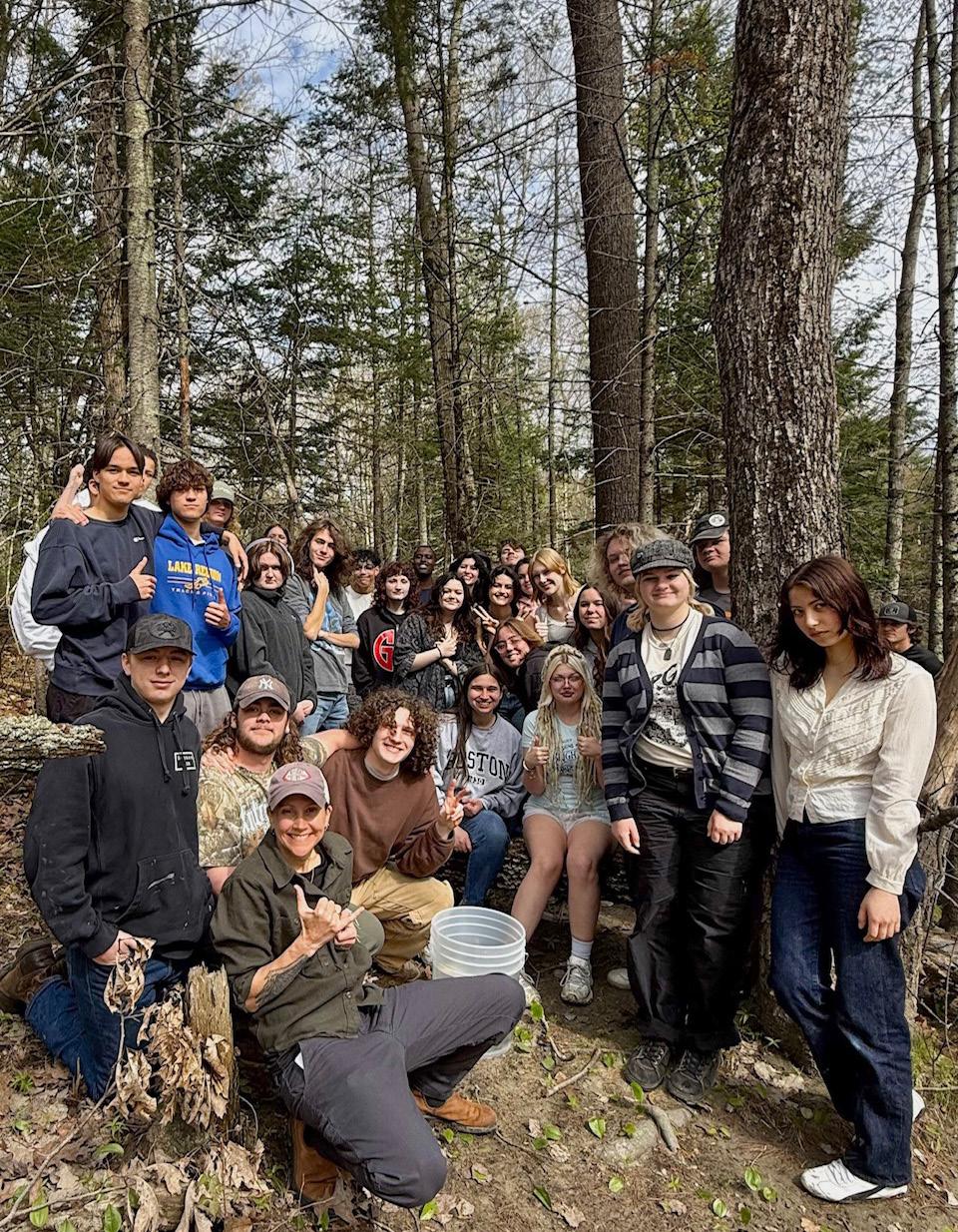
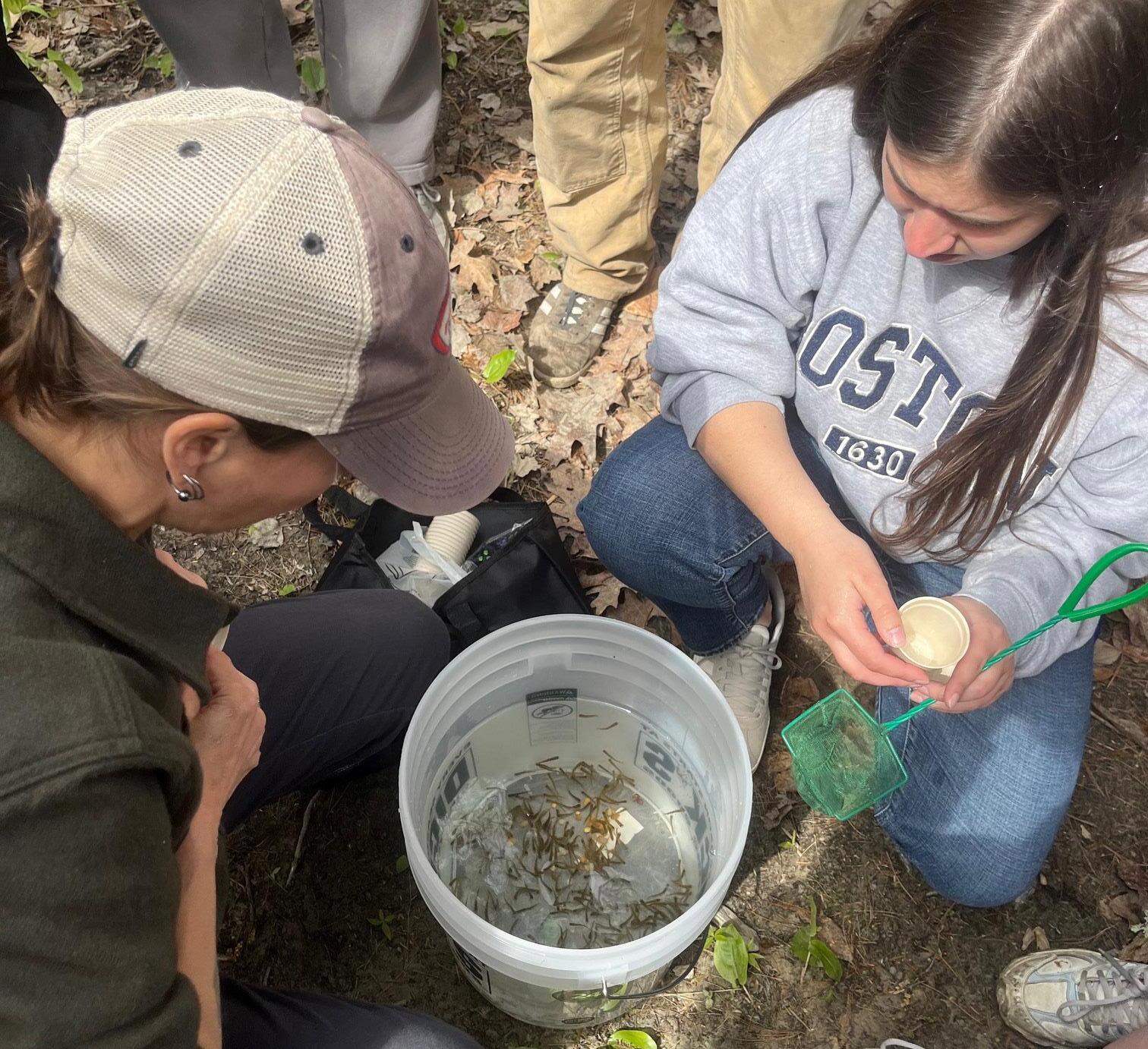
Science Exploration
BONNY EAGLE MIDDLE SCHOOL
Erin Hullinger
Mrs. Hullinger’s 7th grade science classes raised brook trout from eggs this year, starting February 2025. This spring, after months of trout care, the classes traveled to a local park on the Saco Reservoir/River to decide if it was a suitable place to release the trout. They spent the first visit doing in-depth water quality and habitat assessments, gathering data. Back at school, the data were compiled and students worked together to determine that the site was an appropriate location to release the brook trout they had raised from eggs, starting in February. Several days later, the trout were safely and carefully released by the students into the waterway. Students loved feeling like they were helping and studying a waterway that runs through the community- many students fish this river, and hope to catch one of our trout all grown up in a couple years!
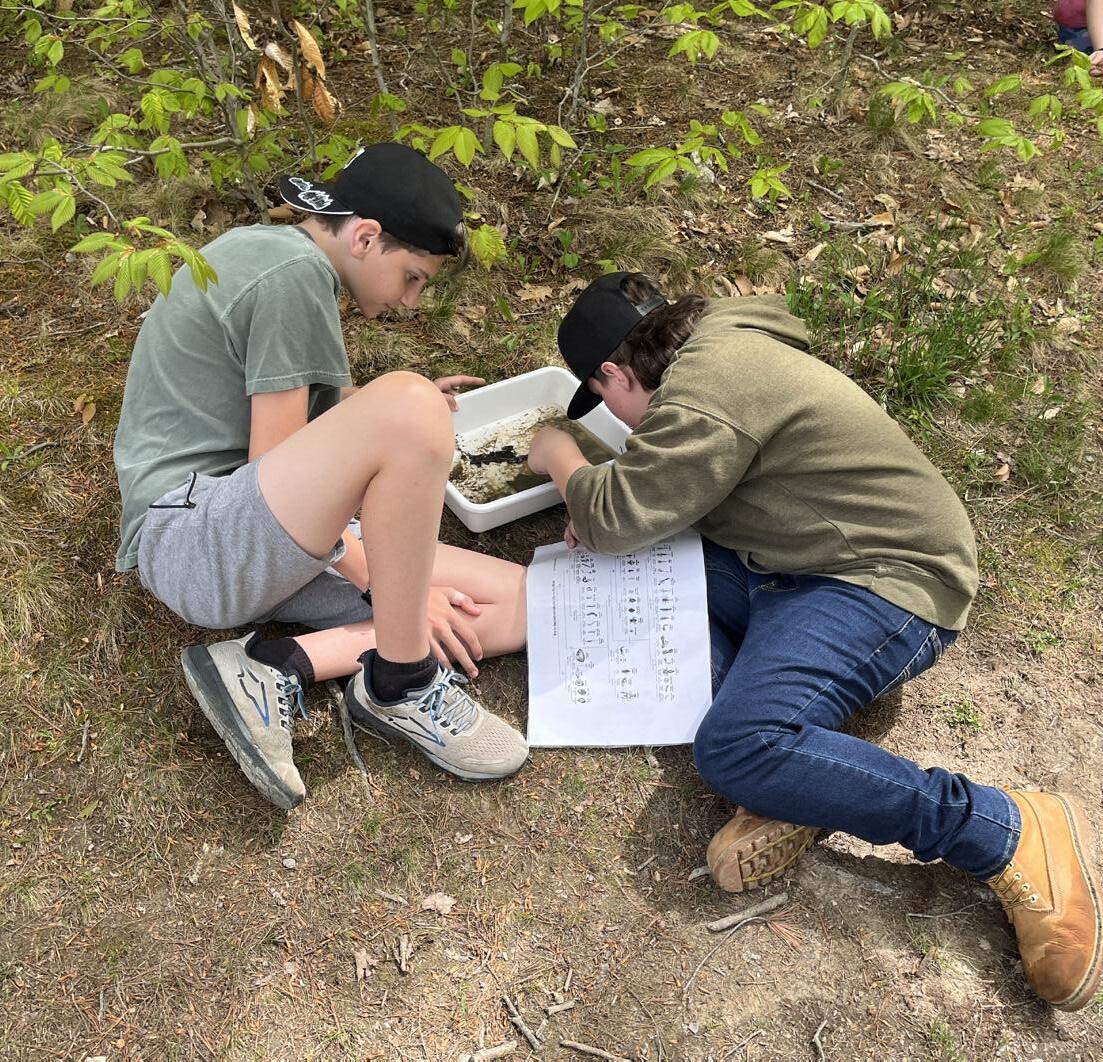

BROWNFIELD DENMARK ELEMENTARY SCHOOL
Mary Hill
The students of Brownfield Denmark Elementary School love to be outside. Our school is surrounded by nature. We want our students to feel that connection with nature and to be curious about the world around them. By having the Chewonki science educators come and present at our school, students were given an opportunity to learn about the animals that live in Maine. The Chewonki presenters were very engaging and students were able to ask questions to increase their knowledge. It was so wonderful to hear the gasps and cries when the live animals were brought out. The students were so excited to learn about each animal. I’m sure each student went home that day and shared with his/her family all about the animals and what they had learned.
As an educator it made me happy to see students excited to learn about science and the animals in the outdoors. Our school has been working on providing students the opportunity to be outdoors more and to learn in different ways. These presentations inspired the students to get outside and learn about the world around them. They can learn about the animals, the trees and plants, water, rocks and the weather. Science is everywhere in the world and they just need to explore and ask questions to learn. The presentations also inspired the teachers to take students outside to explore and learn. As educators we need to foster the natural curiosity that students have. Getting students outdoors is a necessary step in helping them be lifelong learners.
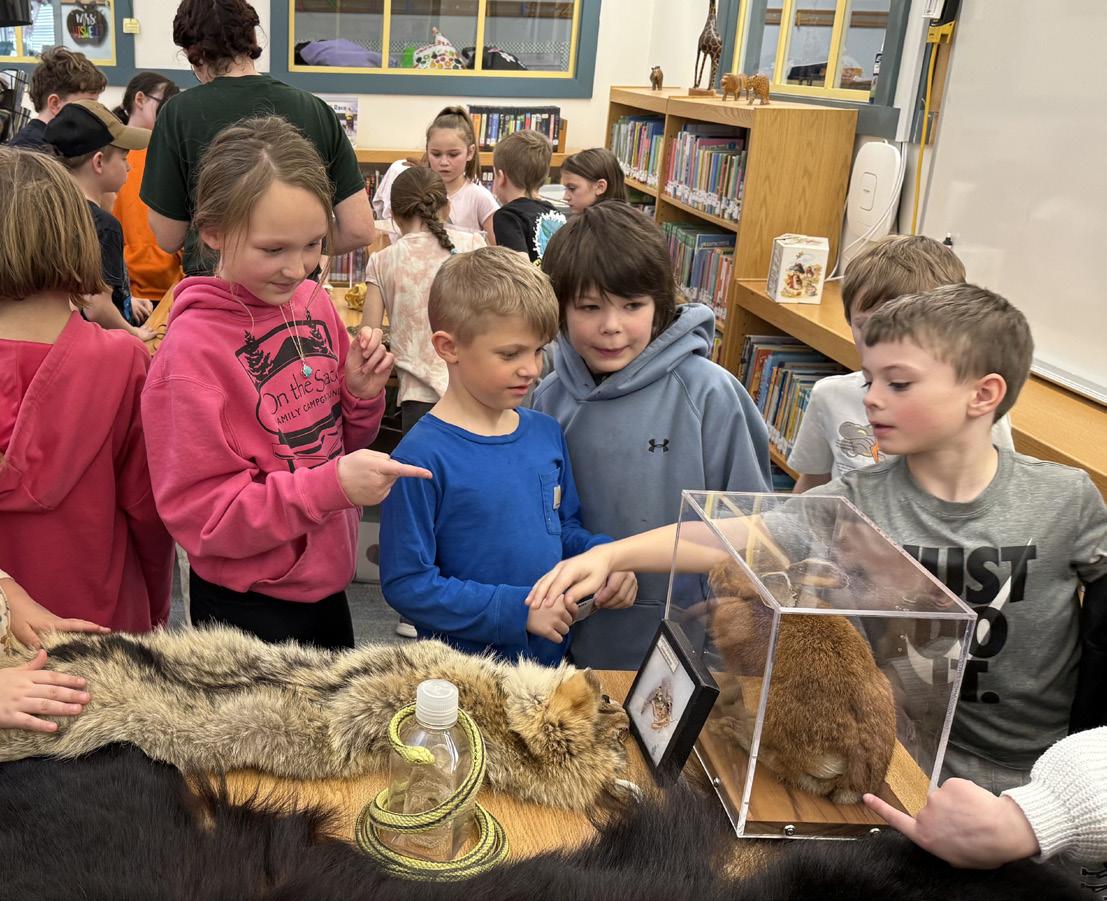
Science Exploration
DIRIGO HIGH SCHOOL
Kaitlyn OConnor

Dirigo High School’s marine biology class on a lobster fishing and seal watching tour in Bar Harbor, ME. This field trip is provided at the end of the semester when students have completed all coursework as an exciting, educational celebration. Students learned about the diversity of marine fauna, the various ecosystems, and threats to the ocean throughout the course. This trip encompassed all of those elements with a hands on experience in the field.
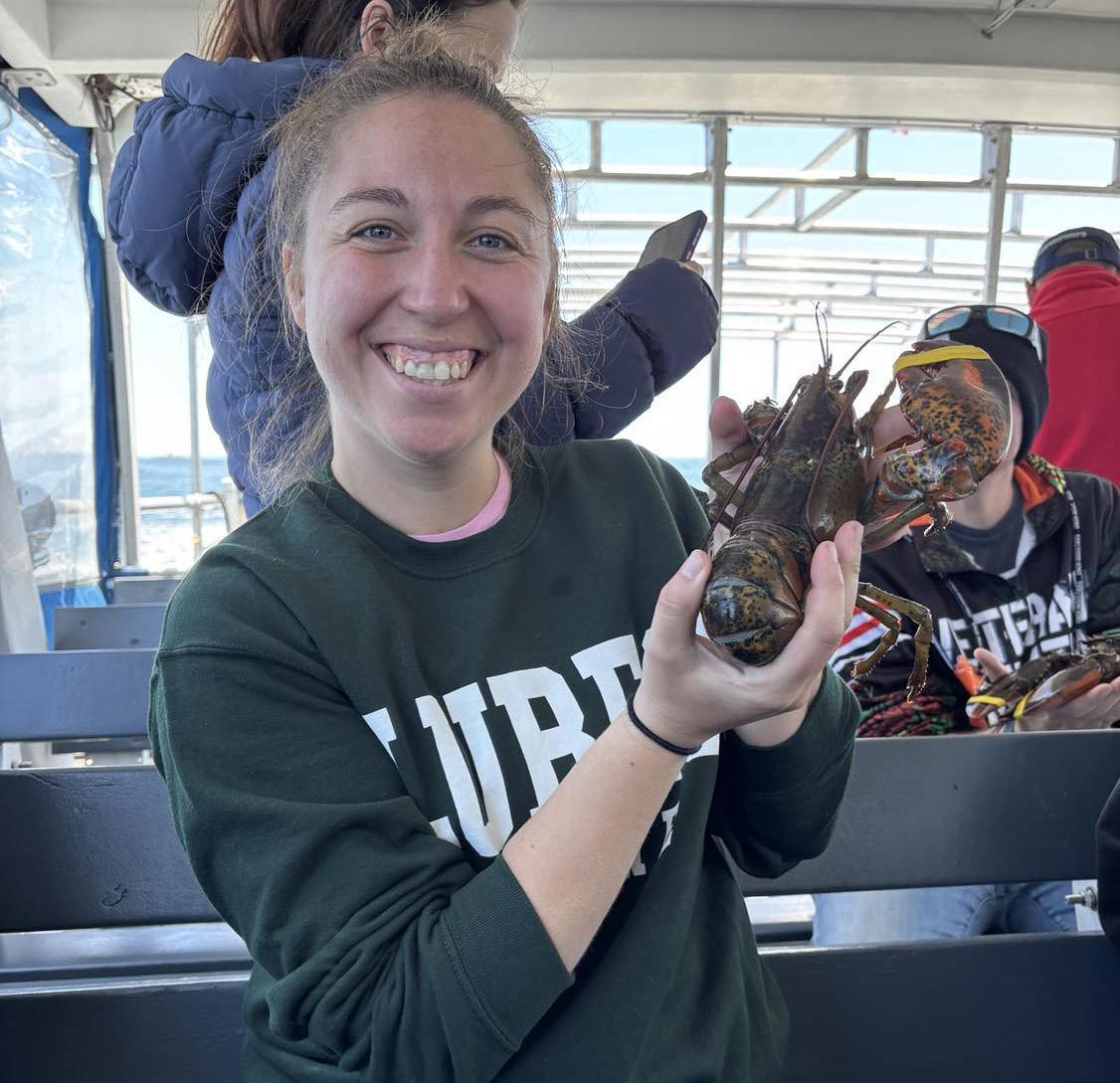
DURHAM COMMUNITY SCHOOL
Henri Moser
This intensive forest research project consisted of 50 students grades 4-8 in both ELA and Math enrichment settings. 5th and 6th graders gathered and presented the data on the Eastern White Pine in a Durham, ME forest near our school. 4th graders wrote up the findings. 7th graders completed natural history plates, and 8th graders wrote the report on the Eastern White Pine.
The primary research questions were: How does the EWP contribute to its ecosystem and what challenges does it face today? Primary findings included (1) EWP has plenty of cones, but not regenerating, (2) dead and dying EWP contribute to the forest ecosystem, (3) disease and bugs are natural problems for the EWP and (4) EWP are the highest trees in the canopy, with many hardwoods and other conifers in the understory.
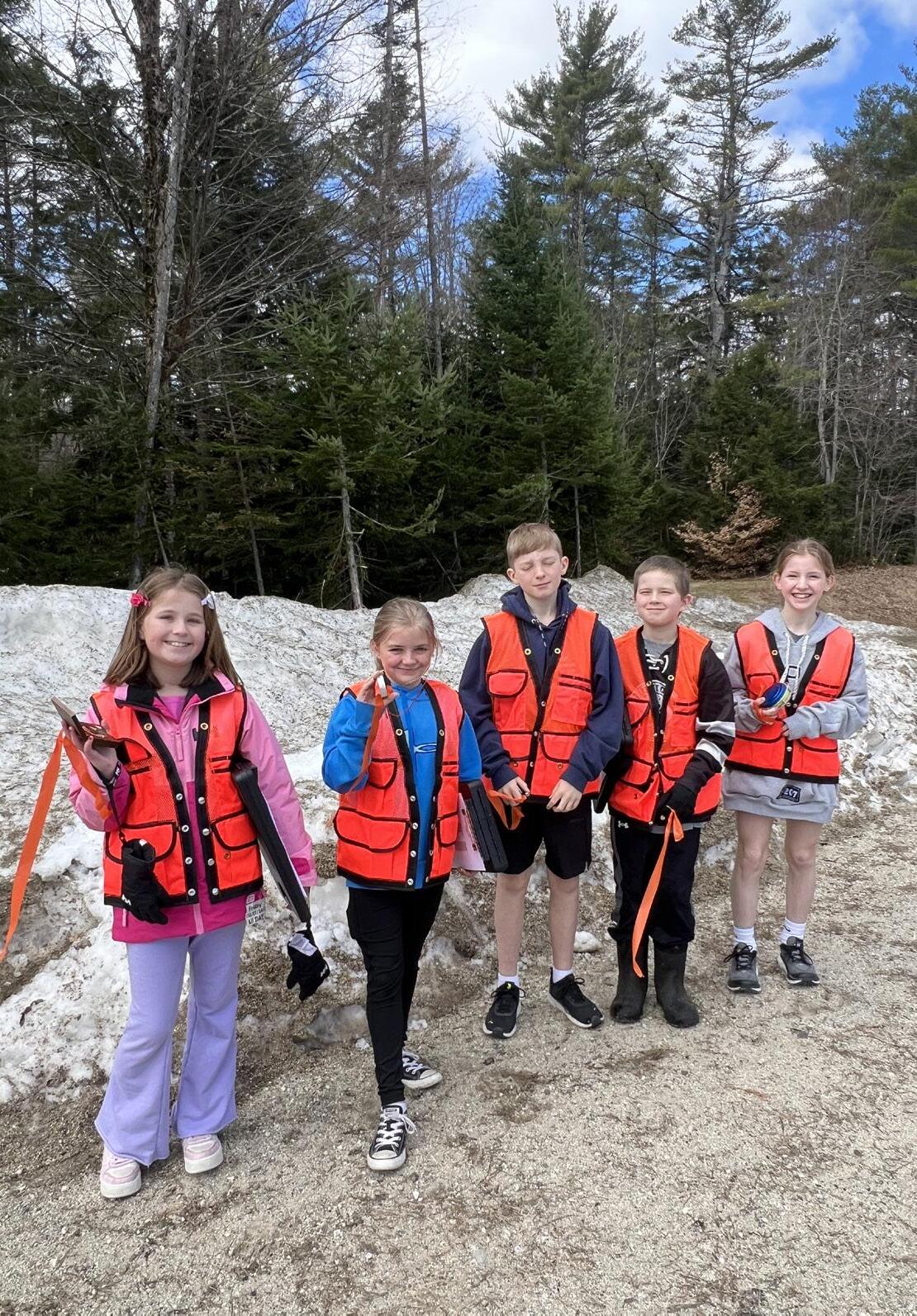
Science Exploration
HODGDON MIDDLE/HIGH SCHOOL
Sara McQuarrie
This year is the first year in a long time that we have had a middle school outdoor education class at MSAD 70. The snowshoes that we purchased with the grant money allowed the students comfortable access to our school’s nature trail during the winter. It was the first time many of the students had used snowshoes! We purchased a variety with different types of bindings. Students were able to try the various bindings and learned about the parts of a snowshoe.
Throughout the winter, we visited the school nature trail during almost every outdoor education class. The students learned how to identify different animal tracks and we spent many classes on our snowshoes with tracking cards in hand. By the end of the winter students were able to tell which animal tracks they were seeing and point out key factors to look for when identifying them. We also focused on trees, and students learned how to tell the differences between the conifers. We looked at the buds and bark of deciduous trees as well. Some of our time was spent learning survival skills and building shelters. We studied the winter homes and habits of insects and animals and then ventured out to see if we could find any. When spring finally arrived and we started looking at phenology, students were able to definitively say how the seasons were changing as they had been observing the woods closely all winter.
One of the most exciting aspects of getting the students outdoors in the winter and also in the spring and fall has been hearing their stories of their own outdoor experiences and seeing them discover new things. They started asking more questions about the woods around them! Throughout the school year I have seen many of them go from simply observing, to really starting to wonder about, and wanting to research, the relationships among different organisms in our school forest.
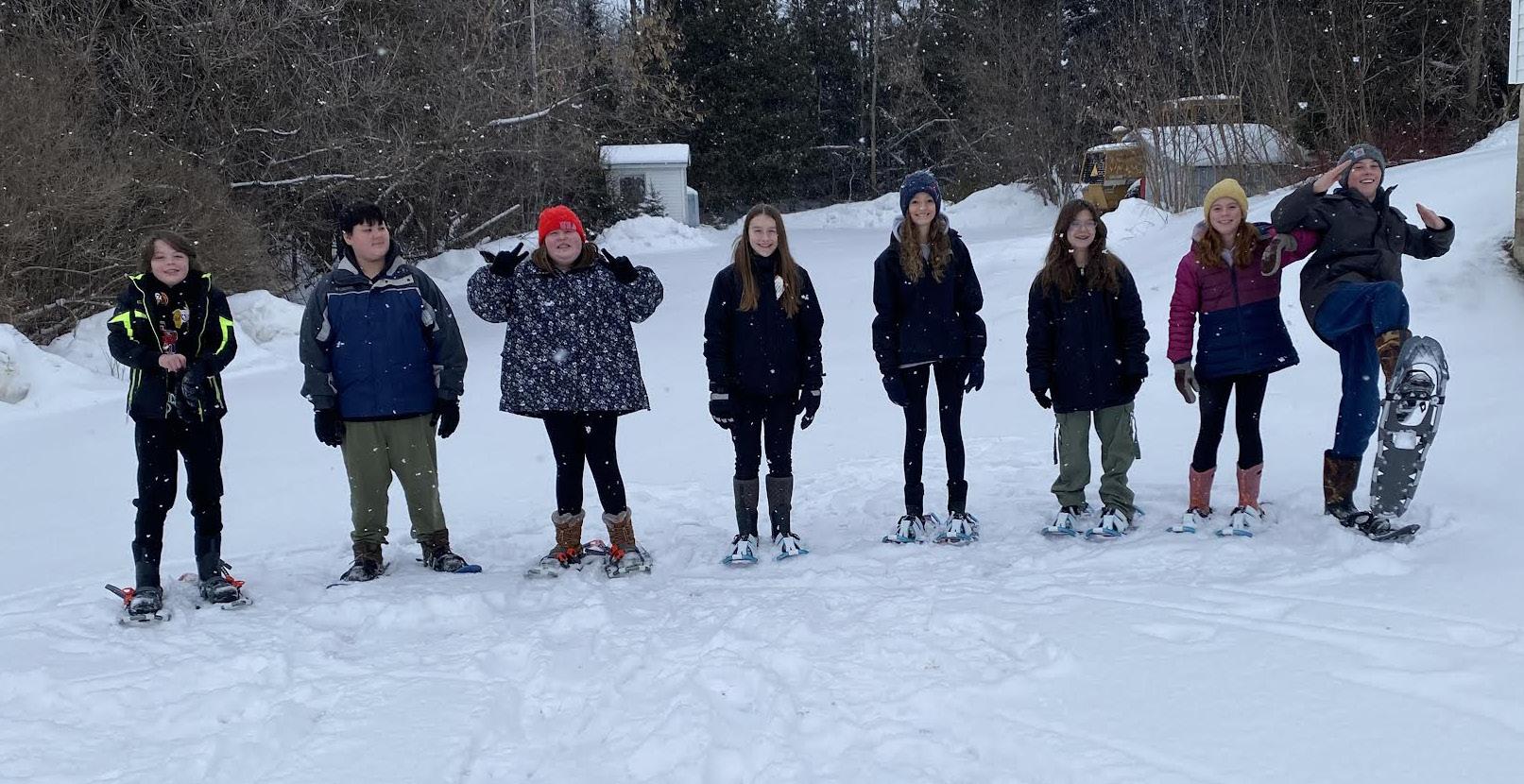
KATAHDIN MIDDLE HIGH SCHOOL
Kelly Birmingham
The materials that we got from this grant this year have really enhanced our work in the outdoors. We have been able to have information on us when we are out on the trails to help identify the things that are around them. From tree identification to first aid, the students have become more knowledgeable about what things are around them. The gloves that they use are helpful in all weather because they can still use their devices to help document the things that they are seeing and observing. All of the pamphlets have been great tools to keep us constantly learning and able to create a safe environment when we are out in the woods. The will be using these materials to also teach elementary students about the things they will see when out walking on the trail.
One high school student stated, “The first aid card really is a helpful thing to have when we are out in the woods. It is a quick go to for the most common things we would run into out in the woods.” Another student stated, “The edible plants pamphlet is awesome to have when we were walking the trails. We had done some foraging lessons and this was neat to have on hand so that we could check the things that we were seeing on the trails. We then were able to determine which things we could gather when out on the trails if we needed to.” Most of the students have found everything from this grant to be a helpful tool to have in their backpacks and have been using them more and more as we do longer hikes in areas we are not familiar with. This will be helpful on their big hike for the end of the year!

Science Exploration
MEDOMAK VALLEY HIGH
Anna Myers
Our work with Herring Gut Coastal Science Center focused on plastics in the ocean. To begin, we looked for plastic in the intertidal zone of Drift Inn Beach in Port Clyde. We used transects and quadrats to locate microplastics in the sand. We used plankton nets to collect water samples, and combed the shore for easily visible plastic. Students also enjoyed simply exploring. We gave them free time to search for organisms in the intertidal zone. A highlight was finding a razor clam and watching it dig back into the sand and disappear.
In the lab, we identified plastics using a variety of methods, including microscopes, flotation, and a protocol that involves melting materials with a hot piece of metal (the latter being most popular). We were pleased to find that, although we did discover some plastic, Drift Inn Beach was relatively unpolluted.
To explore the issue of plastics on a larger scale, we created gyres in bottles to study how ocean currents concentrate waste. We examined pictures of trash around the world. The group discussed the impact of plastic, considering issues such as bioaccumulation and the time it takes for plastic to decompose. We took a quiz to determine our own “plastic footprints” and compared them to each other. The sessions concluded on a positive note, as we discussed potential solutions to the problem. Students suggested buying less plastic, shopping for clothes second-hand, and recycling.
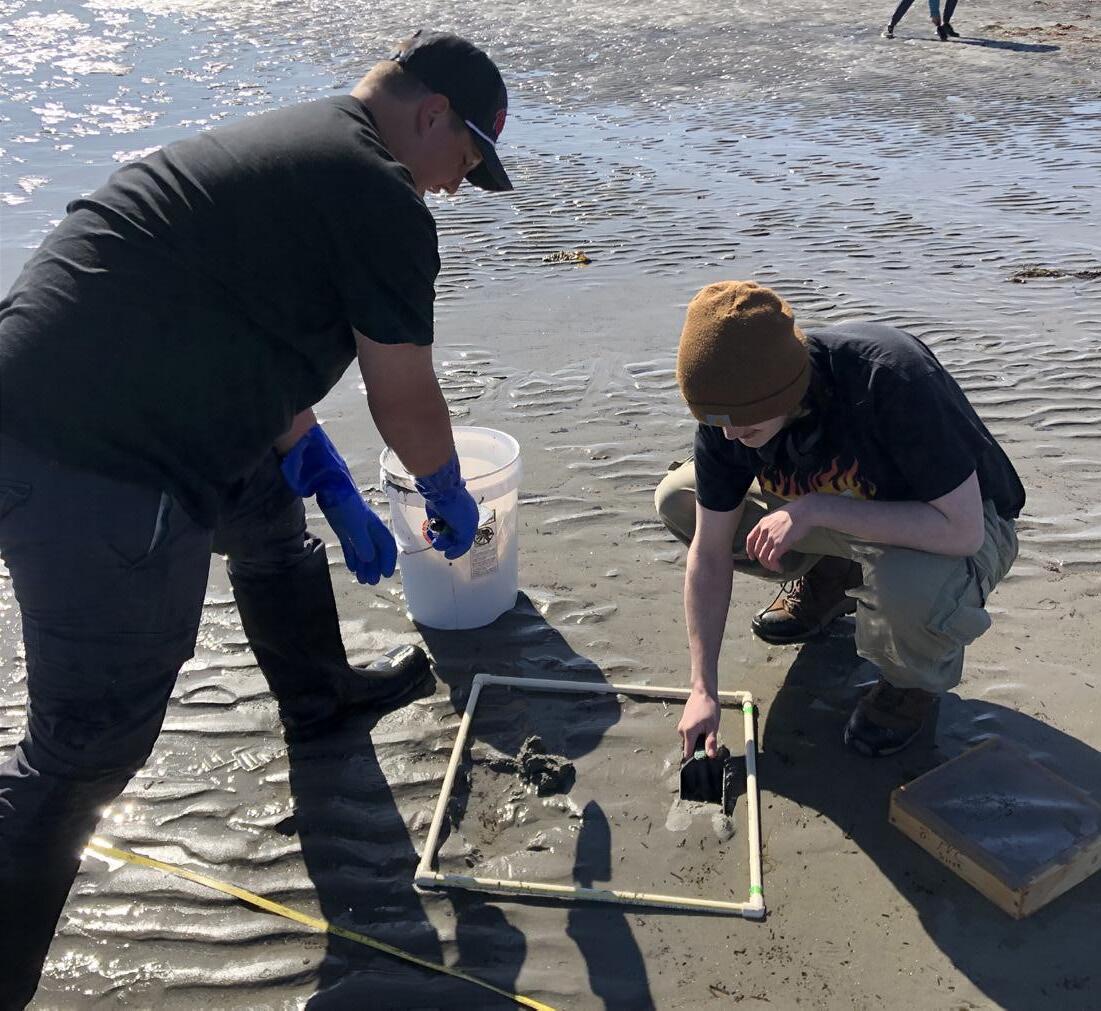
Medomak Valley High School serves communities that border the Medomak River and Muscongus Bay, sensitive ecosystems that support farming and fisheries. Clamming and lobstering are especially important to the local economy, but they are also ecologically vulnerable. The families of several Medomak Alternative Program students rely on these industries. The collaboration with Herring Gut provided a meaningful opportunity to encourage students to consider conservation and environmental stewardship within their communities and the broader world.
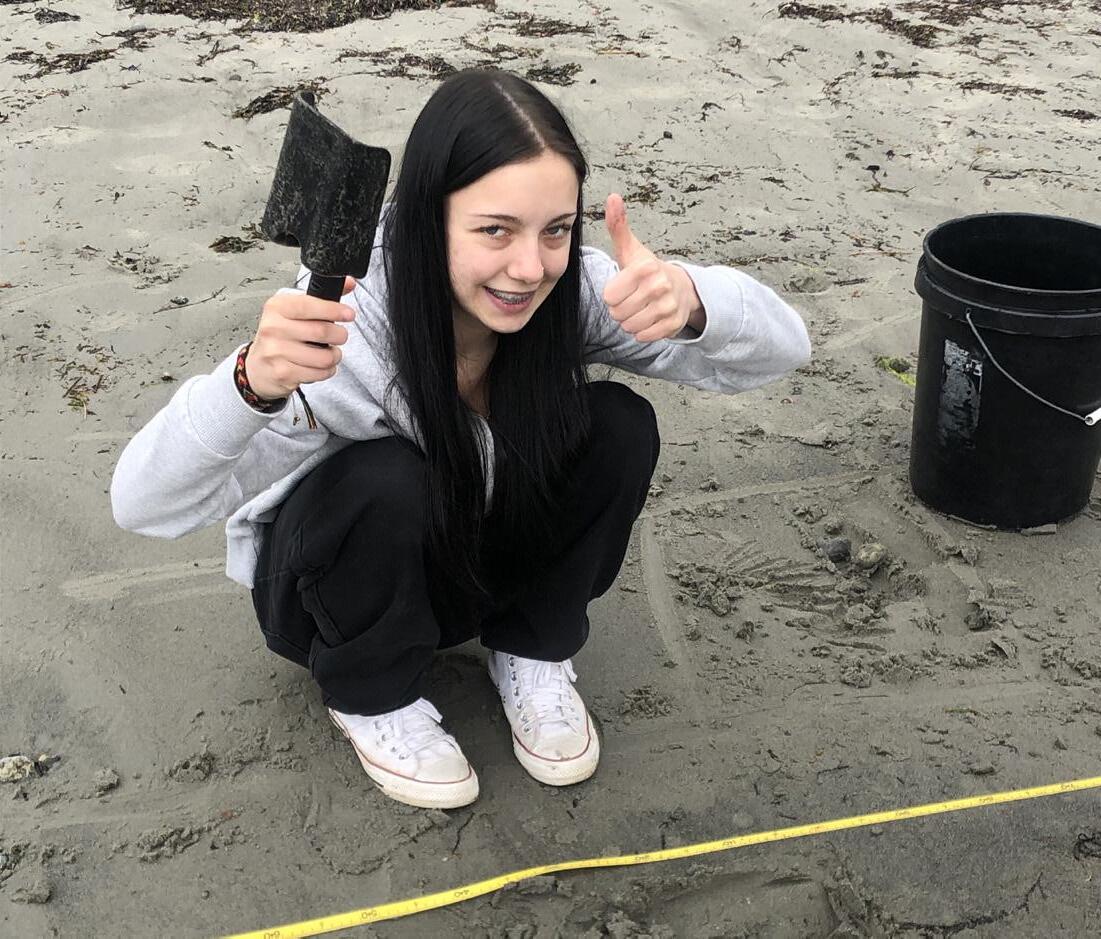
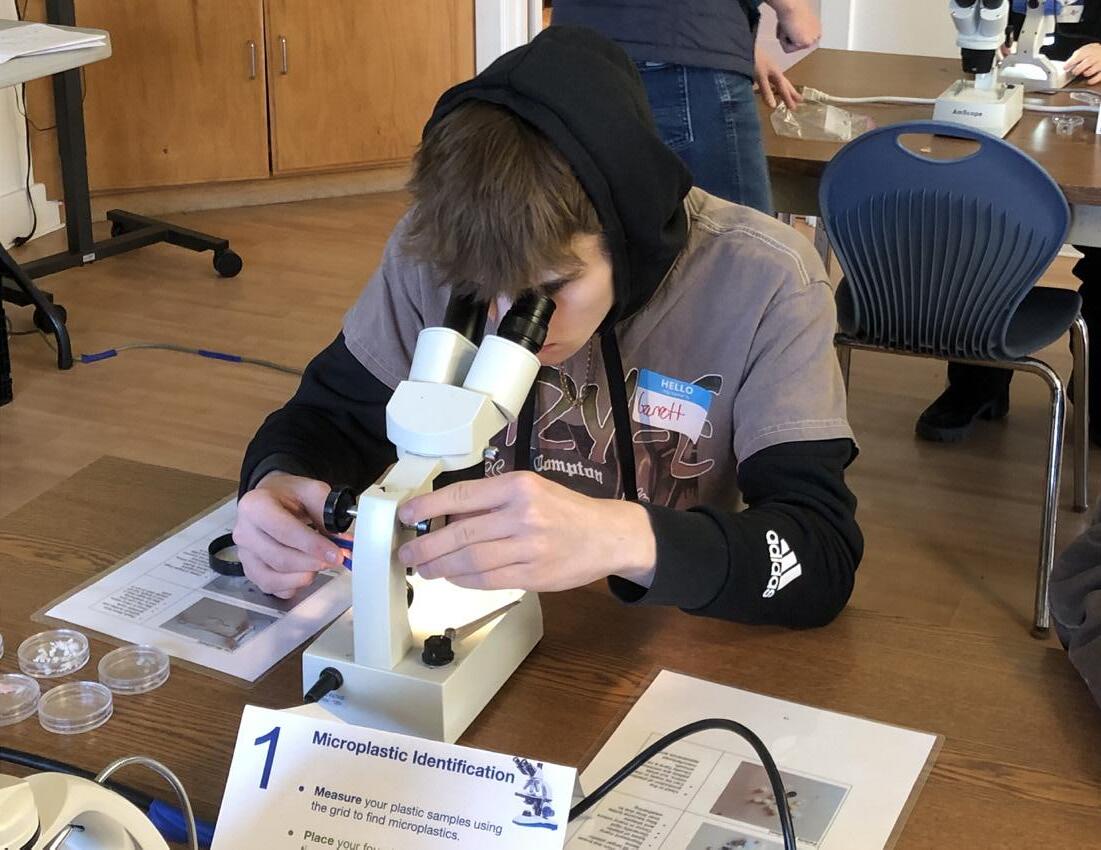
Science Exploration
MIDCOAST SCHOOL OF TECHNOLOGY/REGION 8
Seth Walton

The equipment, supplies, and activities/lessons that we purchased with MEEA grant funding enables us to add more robust science content into our outdoor leadership program. Students have the opportunity to study and model in the classroom and then go out into the field to gain first hand experience with the topics we cover. For example, we used the Lab-Aids Making and Interpreting Topographic Maps and Eisco Labs Contour Map Demonstration Model to study topography along with our map and compass unit. Students were able to practice in the classroom with the materials and then we went out into the field and used the maps for orienteering activities.
We were also able to augment our weather monitoring/ forecasting capabilities by adding the Kestral DROP 3 Environmental Sensor and the StrikeAlert Lightening Detector. We now can take field measurements to make decisions about risk-management and adjust plans according to real-time conditions. Additionally, the Fieldmaster Aquavue Underwater Viewer really added to our ecology and fly-fishing units where students could view underwater habitats and look for aquatic macroinvertebrates. I’m looking forward to getting out with them next year to explore some vernal pools with it.
The Desk Labs LLC Fluid Dynamics Simulator is a great instructional tool for the program. We can use it to learn about and model weather and climate. Combined with the American Scientific Stream Table Kit we are now able to dive deeper into learning about river dynamics and hydrology that will greatly add to our canoeing unit. Student really appreciate the ability to be able to learn about something in the classroom and then go out into the field and live the applied science!
MSAD #24: VAN BUREN
David Barbosa
Thanks to a mini-grant awarded to MSAD24, students in Van Buren, Maine, are getting a unique opportunity to take their math and science learning outdoors with real-world tools. Using newly acquired five NAVA F30 Handheld GPS Units, a group of freshmen recently began training in how to read GPS coordinates, save location data, and simulate reporting aircraft debris across a mock crash site in a nearby wooded area. This experience was only possible through the funding provided by the mini-grant, which gave students access to technology previously out of reach due to the district’s rural location and limited resources.
During their first outing, students navigated the terrain using GPS units, marking coordinates of simulated debris locations like a missing engine or wing panel. They recorded and later mapped this data, applying skills from both their math and science classes. “It felt like we were actually doing something important,” one student remarked. “I didn’t think school could feel like this.” I would add, “This hands-on experience gave students the chance to leave the classroom and feel like they were part of the real world. It’s exactly the kind of inspiration we want to give them—to connect learning to life.”
While this was just the beginning, it laid a powerful foundation. Other goals of the mini-grant—such as mapping environmental changes, calculating land area, and conducting elevation studies—are planned for the coming weeks as the snow clears from the woods. The GPS units will continue to be used across both math and science classes, supporting active learning and building technical skills aligned with realworld careers. This project has not only enriched the students’ academic experiences but has also empowered them with a sense of purpose and connection to the world beyond the classroom.

Science Exploration
MT. BLUE HIGH SCHOOL
Patti Millette
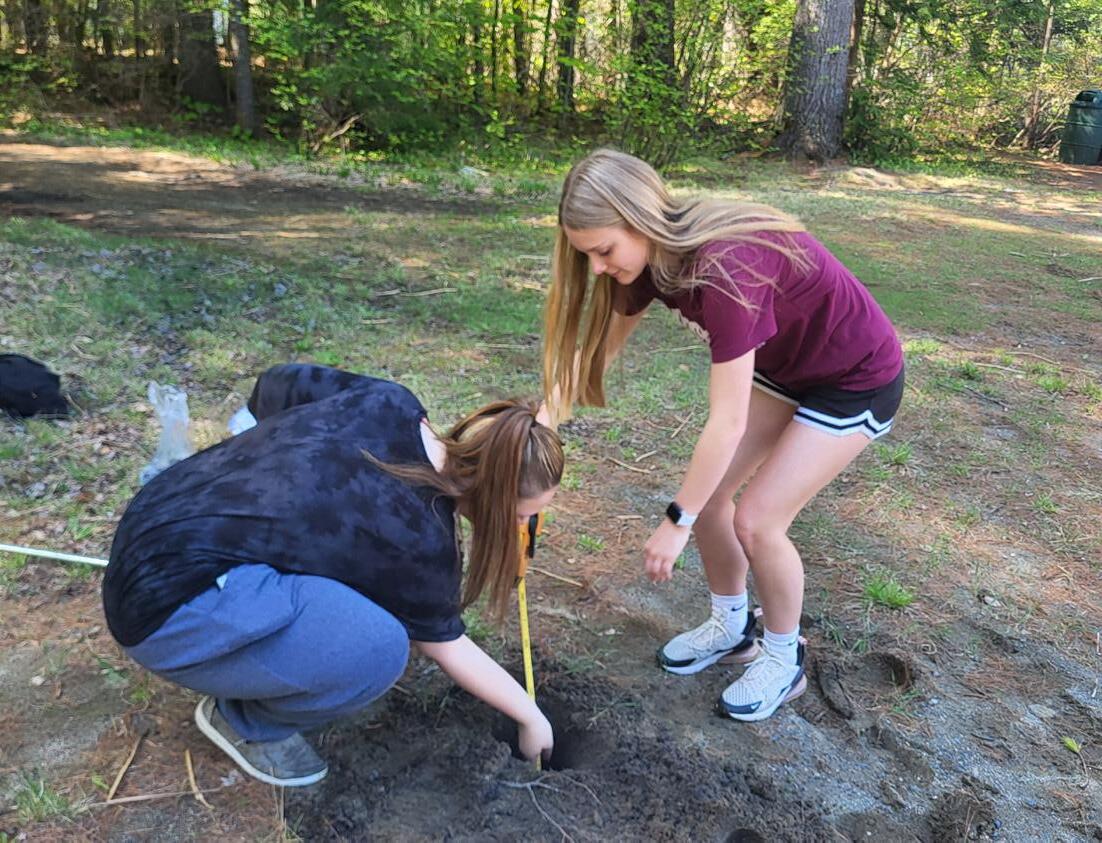
Each year, students from Mt Blue High School Earth Science classes go out in the field to accomplish part of our learning standards dealing with Earth Materials, and the Nature and Practices of Science. Because I need students to feel engaged and see themselves as scientists, I try to set up an investigation that requires them to gather authentic data and have a reason to report it at the end of the investigation.
This year, the folks in the Friends of Wilson Lake in Wilton are attempting to make their lake association an avenue for more education about the lake and how to protect the integrity and quality of the lake. To do this they are working on some educational events about the lake for the public. Consequently, we have formed a collaboration between FOWL and my students to investigate the surroundings and make some professional style educational posters about the geology around the lake that they can use for their events.
To do this, we are sampling both bedrock outcrops, and sediments in areas around the lake. Students will determine the types of underling bedrock, and surface sediments, and tie them into the general geologic history of Maine. This requires that they understand how to use evidence in the rocks (both rock type and structures) to understand their origins, and how the rocks relate to tectonic events in Maine. By looking at a variety of sediment samples that they have collected, they can also see the connections between the sediments and Maine’s glacial history and more modern processes. Finally, it requires them to communicate effectively for a general audience.
PEMBROKE ELEMENTARY SCHOOL
Beckery Renaud
This year, Pembroke students grades 5-8 experienced science in action through the Fish Friends Program, a hands-on initiative that gave students the opportunity to raise salmon from eggs to fry right in their classroom. Through this program we were able to teach students about ecosystems, life cycles, and conservation. With the support of dedicated funding, our school was able to purchase specialized equipment, including an aquarium, a chiller unit to maintain optimal water temperature, water filtration system, and observation tools. These resources transformed a corner of the classroom into a living laboratory where students monitored and cared for developing salmon from eggs to fry. Students learned environmental responsibility, and the interconnectedness of life.
The excitement was tangible each morning as students checked the aquarium for changes, tracked water quality, and recorded the growth of the alevin. We noticed a shift in student engagement, as students were truly interested in this project. The culmination of the project was a Field Trip to the Dennysville River, where students released their fry into the wild. For many, it was their first time seeing a salmon habitat up close, and the experience sparked both awe and pride. By combining classroom learning with hands-on environmental stewardship, the Fish Friends Program has deepened students’ understanding of local wildlife and the importance of conservation.
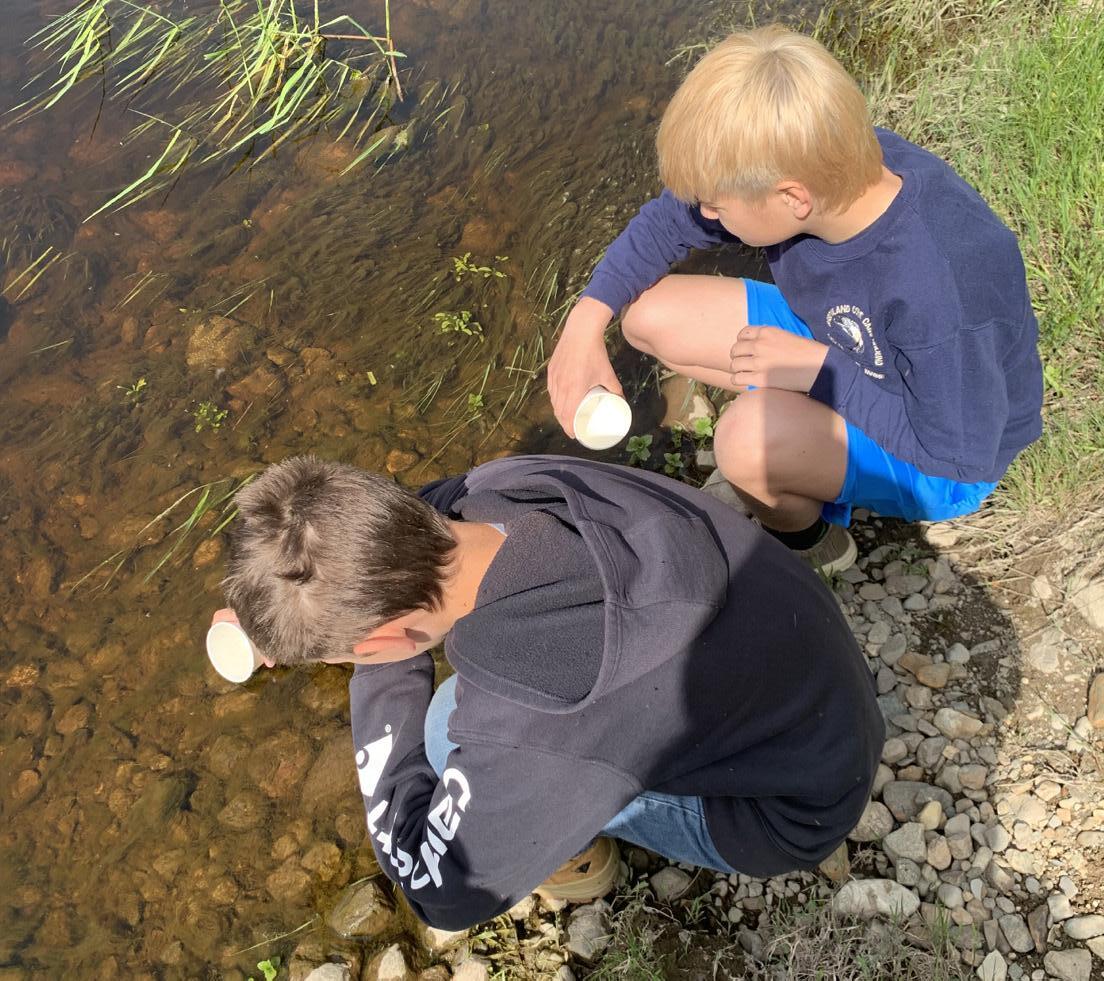
Science Exploration
REGION 9 APPLIED SCHOOL OF TECHNOLOGY
Jonathan Longley
Region 9 Outdoor Skills & Leadership Program is forever grateful for the continued support of the MEEA. All the equipment purchased in these grants is considered ‘nonbudgeted’ and simply would not be made possible without the help and support of these mini-grants from MEEA. All the activities depicted in the attached report have been made possible by the generosity of this foundation. The following list contains many of the activities made possible with our recent acquisitions:
Maintain the hiking trails of Concord Pond and Little Concord Pond (State operated), Maintaining walking trails and observation points at our land trust, trimming fir to insure a healthy deer herd, making wreaths to support our Skills USA program, Hosting 3 middle schools and 4 elementary schools for age appropriate casting clinics, which lead to sponsored fishing trips using our students as junior guides, capturing and tracking Maine wildlife using our Tactacam Reveals, providing shore luncheons and picnic barbecue to our guests and staff, placing emergency blankets and whistles with each PDF, and the list continues. Long story short, these purchases supported our mission to provide examples of safe and healthy activities while demonstrating best practices of conservation as they relate to our field. I strongly believe we are creating the next generation of outdoor stewards.
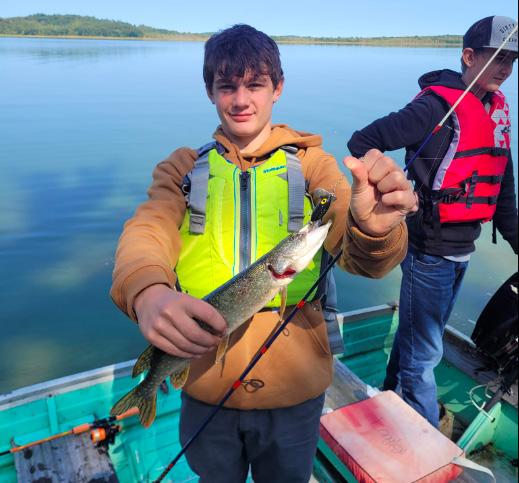
We have also been tracking the equipment being signed out. Even with less than cooperative weather on the weekends, our equipment is constantly being signed out. Our cache of equipment is much like a library book, available to be used and returned with little to no obligation on the ‘borrowers’ part. In terms of quotes from visitors we still hear “ I never knew Region 9 offered this” or “This is amazing, how long has the school offered this program?” and of course, my favorite from many young visitors......” When can we come back?” I will leave you with this quote I use daily in the classroom- “ Remember the 5 P’s - Proper Planning Prevents Poor Performance” and that my friends, is exactly what your generosity has done for us and for all who have visited our program.
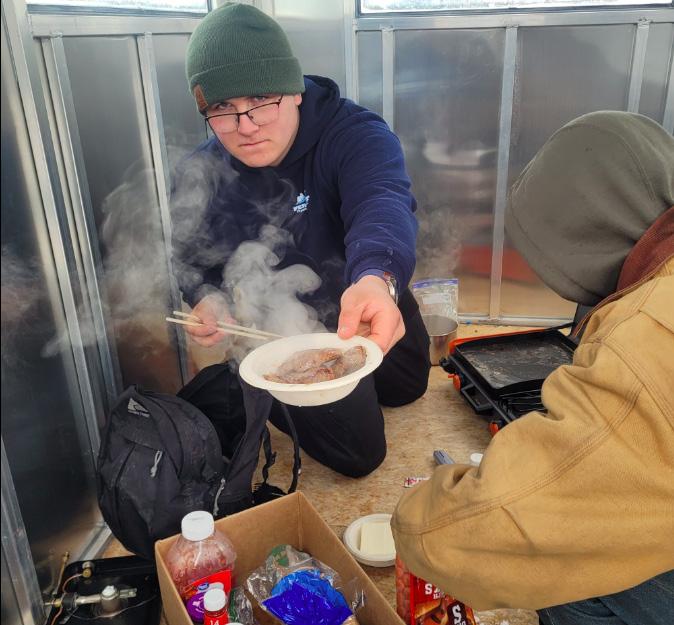
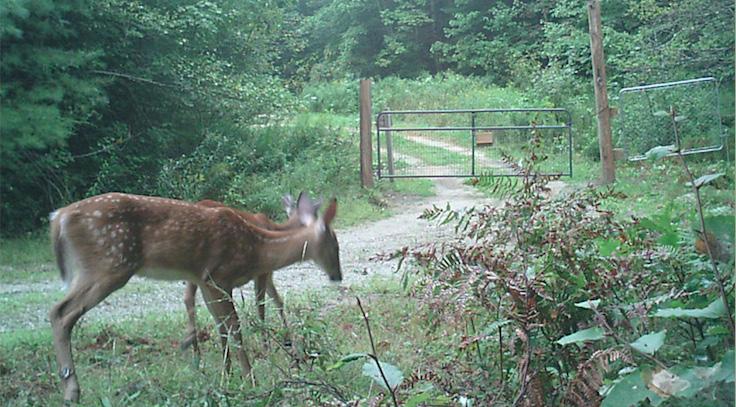
Science Exploration
RIVER
VIEW COMMUNITY SCHOOL
Kymm O’Brien
Thanks to funding from the MEEA grant, our school was able to bring science to life through a unique, hands-on learning experience that connected students with nature in meaningful ways. The project centered around raising trout in the classroom—an engaging, multi-week experience where students cared for and observed the trout from the egg stage all the way to their release into a local waterway. Along the way, students learned about life cycles, environmental stewardship, water quality, and the importance of protecting natural habitats.
One particularly powerful moment came during the trout release field trip, when a student remarked, “It feels like we’re giving them a real home. I hope they grow up healthy and I can come back and fish for them someday.” This simple reflection captured the sense of responsibility and connection that students developed through the project.
In addition to the trout program, grant funds were also used to enhance our outdoor learning spaces by purchasing tables and seating. These additions have made it possible to hold more lessons outside, encouraging a deeper connection with the environment and offering students a refreshing change of pace from the traditional classroom setting. Teachers have found that students are more engaged and focused during outdoor learning sessions, and the flexible seating has allowed for a variety of collaborative activities.
This project has not only enriched our science curriculum but also inspired a deeper appreciation for the natural world among our students.
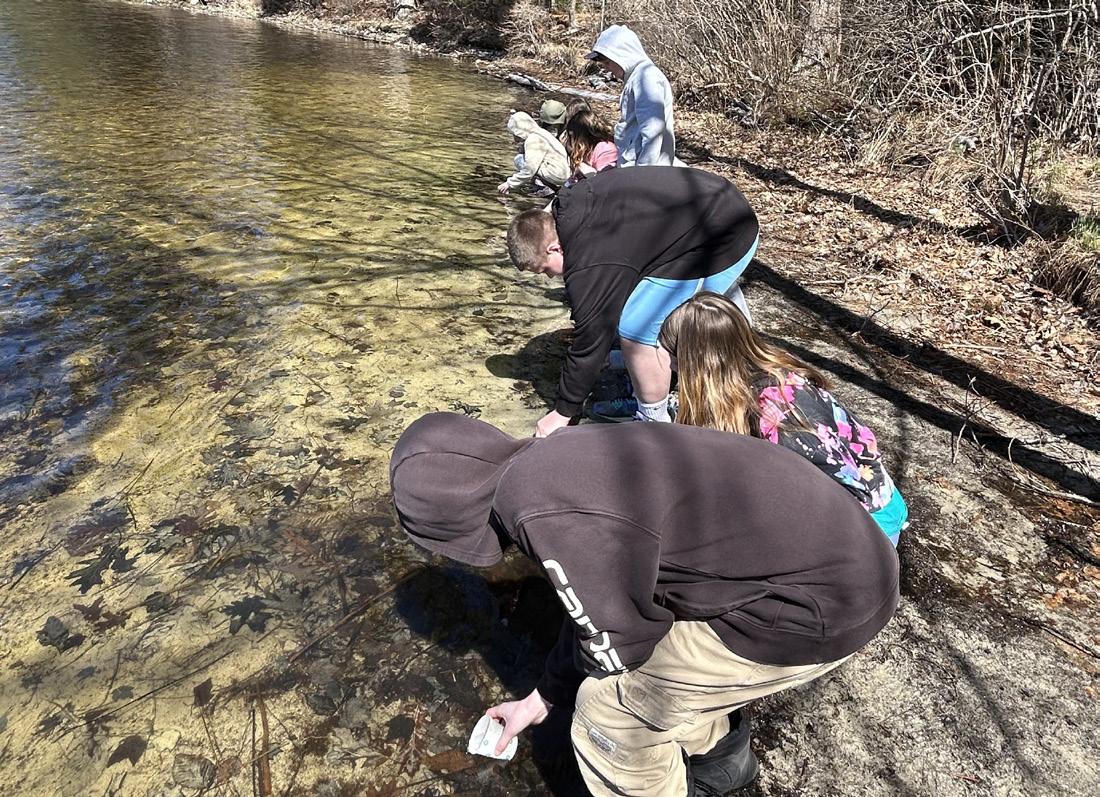
SANFORD MIDDLE SCHOOL
Brock Sanborn
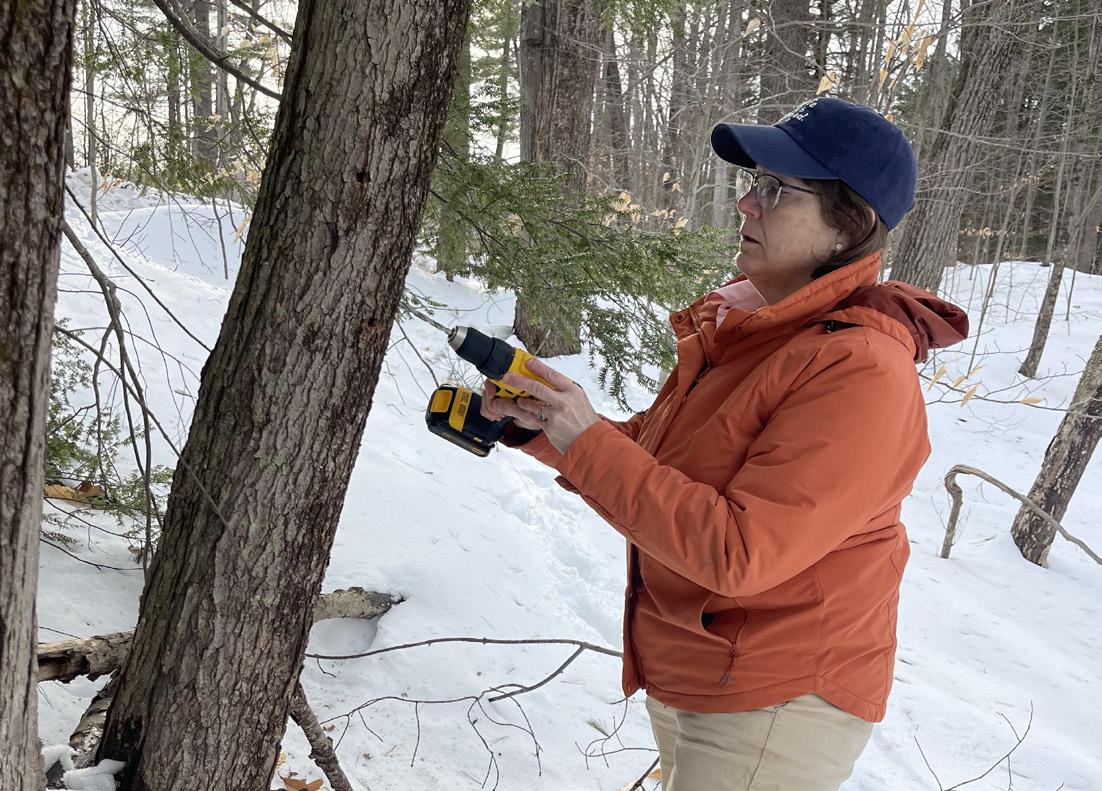
Have you ever wondered where your favorite breakfast condiment comes from? The beloved amber liquid that graces our pancakes and waffles on weekend mornings - we’re talking about maple syrup! At Sanford Middle School, Brock Sanborn and his seventh grade science students engaged in a sustained investigation on the production of maple syrup and the effects that climate change is having on this process in the state of Maine.
Students engaged in boiling sap from their very own maple trees located on the school grounds. As part of this process they taste tested store bought syrup to compare with the homemade product. In addition, as the students witnessed this process, they also engaged in an inquiry and analysis of the effects of climate change on maple trees in Maine. Due to the effects of climate change, the north east has seen maple syrup production move later into the year, which can also cause a shorter season, meaning less syrup produced. Not only does this affect those of us who love our pancakes, it also has an effect on small businesses in the area and could even alter a growing Maine “holiday” Maine Maple Syrup Sunday. Students at SMS hope to continue their studies in climate change and its effects locally by having this maple syrup study be something that occurs annually. Principal of SMS Pam Crosby said that “It was a fantastic opportunity for Sanford students to participate in learning that can be directly related to their every day life in a fun and hands on way” Without the help of funding from MEEA this wouldn’t have been possible and we are so thankful for the support and backing of our students’ learning!
Science Exploration
SEARSPORT HIGH SCHOOL
Nienke Adamse
Thanks to a recent environmental grant, students at Searsport High School are diving deeper into nature with hands-on learning experiences. The grant has enabled the purchase of essential outdoor gear, including waders, fishing nets, backpacks, and reusable water bottles, all of which are being put to excellent use during field trips and inquiry-based outdoor classes.
The new equipment is supporting a variety of outdoor educational activities designed to engage students with the natural world. From studying aquatic life in local streams to exploring ecosystems in nearby creeks, streams and ocean, these tools have opened up new opportunities for active, meaningful learning outside the classroom. The hands-on approach fosters curiosity, critical thinking, and a deeper understanding of environmental science.
The waders and fishing nets have become especially popular during science classes, allowing students to safely investigate water habitats without getting soaked. Backpacks help them carry supplies and journals for note-taking, while reusable water bottles promote sustainability and hydration during their adventures.
We (the outdoor science teachers at the high school), emphasize the impact of the grant.This support has truly transformed the way we teach science and environmental stewardship. Our students are not only learning about nature — they’re experiencing it firsthand.
These field-based lessons align with the school’s commitment to fostering a healthy outdoor environment and providing valuable educational experiences for all grade levels. The initiative has already sparked interest in environmental careers and increased student awareness of conservation issues. The students were excited to discover all the hidden invertebrates in the Mills creek and learned that the insects buzzing around us actually start their lives under rocks in the creek nearby.
As the program continues to grow, we hope to expand outdoor learning opportunities and collaborate with local environmental organizations. With continued support, students will keep exploring, discovering, and building a lasting connection to the world around them.
SUMNER LEARNING CAMPUS
Ellen Hall
Students at Sumner learned how to test the quality of the school’s drinking water thanks to a grant from the Maine Environmental Education Association (MEEA).
Chemistry classes first researched the various tests performed on drinking water and the associated health risks when limits are exceeded. Then tap water from around the school was tested before heading to Long Pond to field test the source water.
Students returned to the lab with samples to answer the question, ‘What happens to the pH of the source water as temperature increases over the summer?’ Students used newly purchased Vernier GoDirect temperature probes that wirelessly connect to their laptops for the study.
Being involved from sample collection in the field to a bench study gave the students a better appreciation of what goes in to studying water. Students were more engaged in determining the effect of summer temperatures on pH when using better technology than regular thermometers.
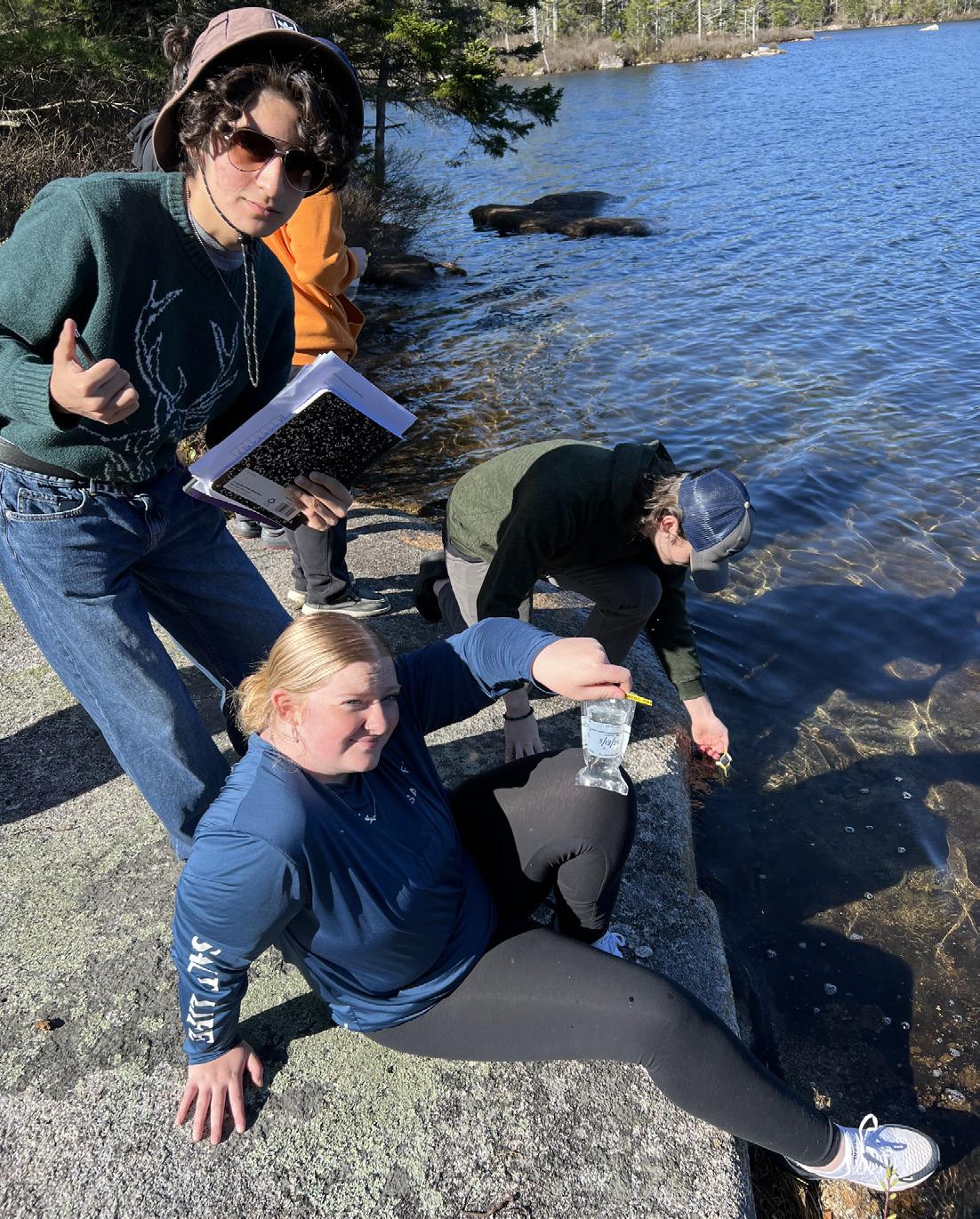
Science Exploration
TREMONT CONSOLIDATED SCHOOL
Tonya Prentice
In fall 2024, students at Tremont Consolidated School (TCS) launched a real-world science initiative just steps from their classroom—a Salt Marsh Restoration Project focused on protecting the fragile coastal ecosystem bordering their school on Mount Desert Island, Maine.
As part of their Maine Forest Collaborative project, seventh and eighth graders are investigating how sea level rise impacts coastal communities and how restoring salt marshes can support climate resilience. They are learning how restoration can reduce flooding, protect infrastructure, and preserve biodiversity, while taking meaningful local action.
This spring, under the guidance of science teacher Mrs. Prentice, students unboxed 1,000 native salt marsh grass plugs—most destined for replanting in a degraded section of the marsh. Others are being used in student-designed experiments to test optimal growing conditions. Students are collecting water quality data, mapping plant life, and tracking seasonal changes to better understand the marsh’s health and ecological role.
The salt marsh, located across the street from TCS and near Acadia National Park, has become a living laboratory that brings life and Earth systems to the forefront of student learning. This yearlong project integrates hands-on research with classroom study in ecology, biodiversity, and climate science.
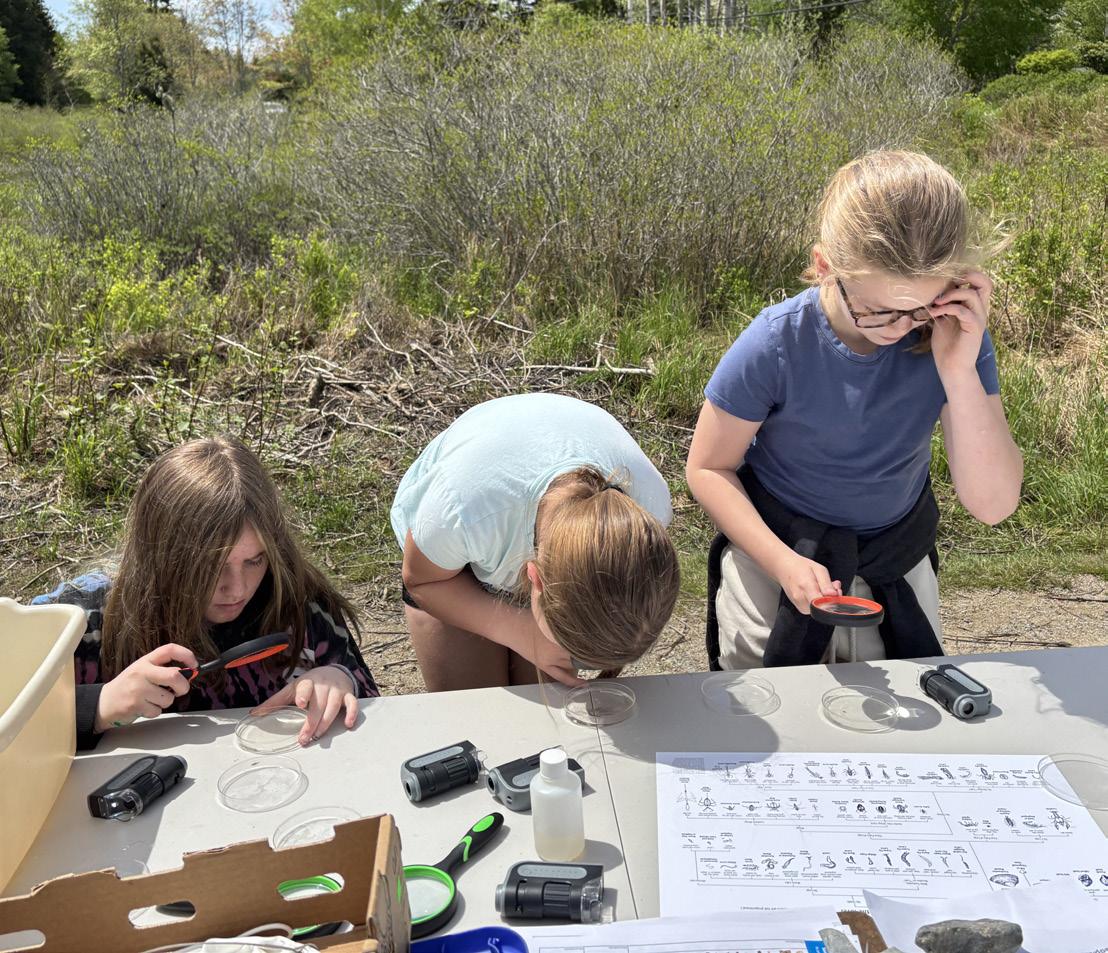
WISCASSET ELEMENTARY SCHOOL
Kaden Pendleton
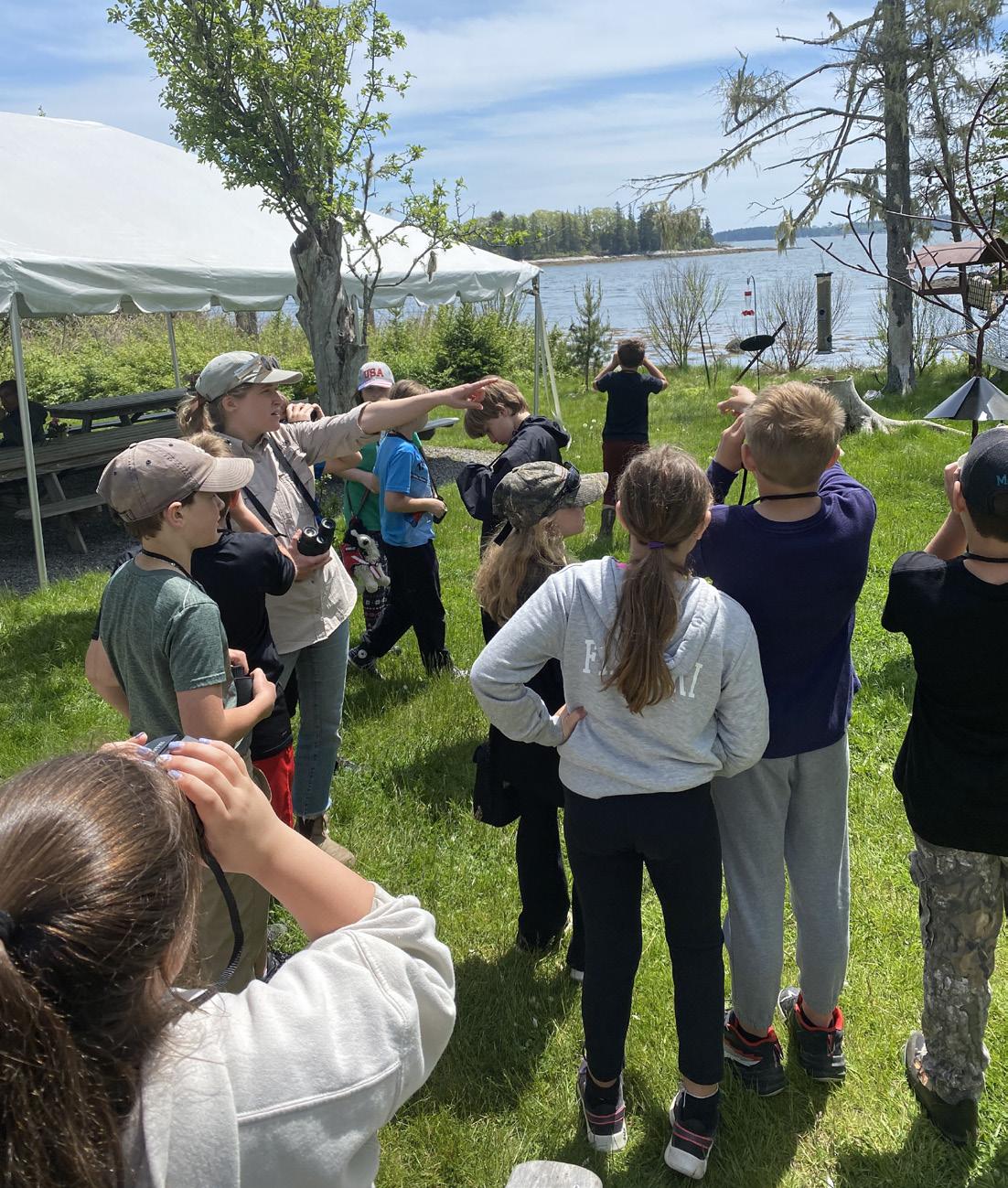
This year, we had the goal of using our grant funds in projects that would become traditions in our school year after year. We purchased Maine backyard bird field guides and binocular sets for our students in our entire school (pre-K through fifth) to participate in the Great Backyard Bird Count through the National Audubon Society. Additionally, in grades three through five, we also purchased nautical charts and nautical navigation equipment for our students to use when we take an annual boat ride to look for local wildlife, so that our students received exposure to reading and understanding nautical charts, and the features of them in our area. It was important to us that whatever we purchased would be continuously used year after year, and would not go into a box and be stored away following these projects. Our students gained great knowledge on how to perform research on these local creatures, and then they gained great field experience by using that research to go out and search for the creatures that they researched. Our school is thrilled to have incorporated so many new traditions in place-based learning!
Wabanaki Studies
BREWER COMMUNITY SCHOOL
Jenny Becker
I am beyond excited to have the Wabanaki Interdisciplinary kits as part of my classroom next year. I will be teaching third grade (after twenty-seven years in first and second grade) for the first time!
I will continue to weave Wabanaki Studies into my classroom all year long. The kits will allow my students to have more hands-on experiences with Wabanaki materials. The kits will also support me and my teaching as I begin moving towards being able to increase the amount of Outdoor Learning I do with my students. Each kit has a variety of lessons that can be taught outside and that encourage making connections with the land and water around us.
Next year, the third grade teachers are committed to getting our students outside. We are working to align our curriculum standards with Project Wild and Wabanaki Studies. We already have plans for canopied areas where we will have outdoor classroom. Much of our Wabanaki Studies curriculum will be taught outside.
As we teach our students about habitats (in this space we now call Maine), for example, we will be able to integrate teaching about and identifying birch and ash trees. We will be able to pull lessons from both the Birch and Ash kits along with the Nature kit to get our students outside. They will have the opportunity to identify trees in our area and learn about the cultural importance of the trees to the Wabanaki and the connection to creating baskets, canoes, birch containers and more.We will have space to plant the Three Sisters garden in lieu of just talking about it.
Teaching our students that we all live in the Dawnland and how we can learn from the Wabanaki how to be better stewards of the land and water around us will be enhanced with the Wabanaki Interdisciplinary Kits.
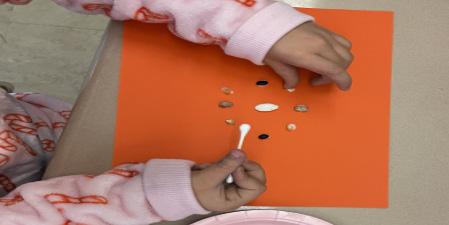
EAST BELFAST SCHOOL (RSU 71 BELFAST)
Hollie Anne Hilton

Multi-age students have utilized the clipboards with outdoor sketching and observation. Observation has been a key focus in my art program inside the classroom. This includes visual thinking skills, asking the questions:
What do you notice?
What do you wonder?
What do you think?
I collaborated with our Food Corp staff member, Lauren, to take the observational skills outside. I purposely did not have specific directions, such as “go find a flower and draw it”. I wanted them to have a natural response to what interested them and what they noticed. My most memorable experience was with a student who was initially terrified about the bees on the dandelions. As I wandered around, I noticed her sitting next to the same flower with the bee and sketching. Later, I noticed she was sitting ON her clipboard right beside the flower! She had a smile on her face. I walked over and she whispered that she had made friends with his bee and she was just observing it. I have shared the picture of this student on the clip board and the bee.
A student who refused to touch the soil when they were planting flower seeds. As students were making a hole for him with their fingers, a huge worm squiggled out. He was so excited that he asked if he could touch the worm! He did, and the smile and joy that overcame him will be something I will never forget. “It’s so wiggly,” he laughed. It was fascinating to observe the transformation of observational skills as a teacher. I modeled what observation looks like; it had a domino effect as each student started to get excited about seeing something they noticed. Wow moments include a spider with a blue egg sack, buds on trees and bushes, a snail, bees on dandelions, two-headed dandelions.
Wabanaki Studies
GREELY HIGH SCHOOL
Gennifer Giuliano
Students and staff have already noticed the new books, and they are being used! One student marveled about how much she learned about trees after checking out “Reading the Forested Landscape” by Tom Wessels. “I didn’t know trees could communicate with one another!” she exclaimed. Another student expressed their appreciation for the book “How to Teach Nature Journaling: Curiosity, Wonder, Attention” by John Muir Laws because it connects his love and enjoyment of art with being outside. Several teachers from the English department have read books from the new collection to see if they may fit into their curriculum next year.

HOLDEN ELEMENTARY SCHOOL
Helen Allen-Weldon
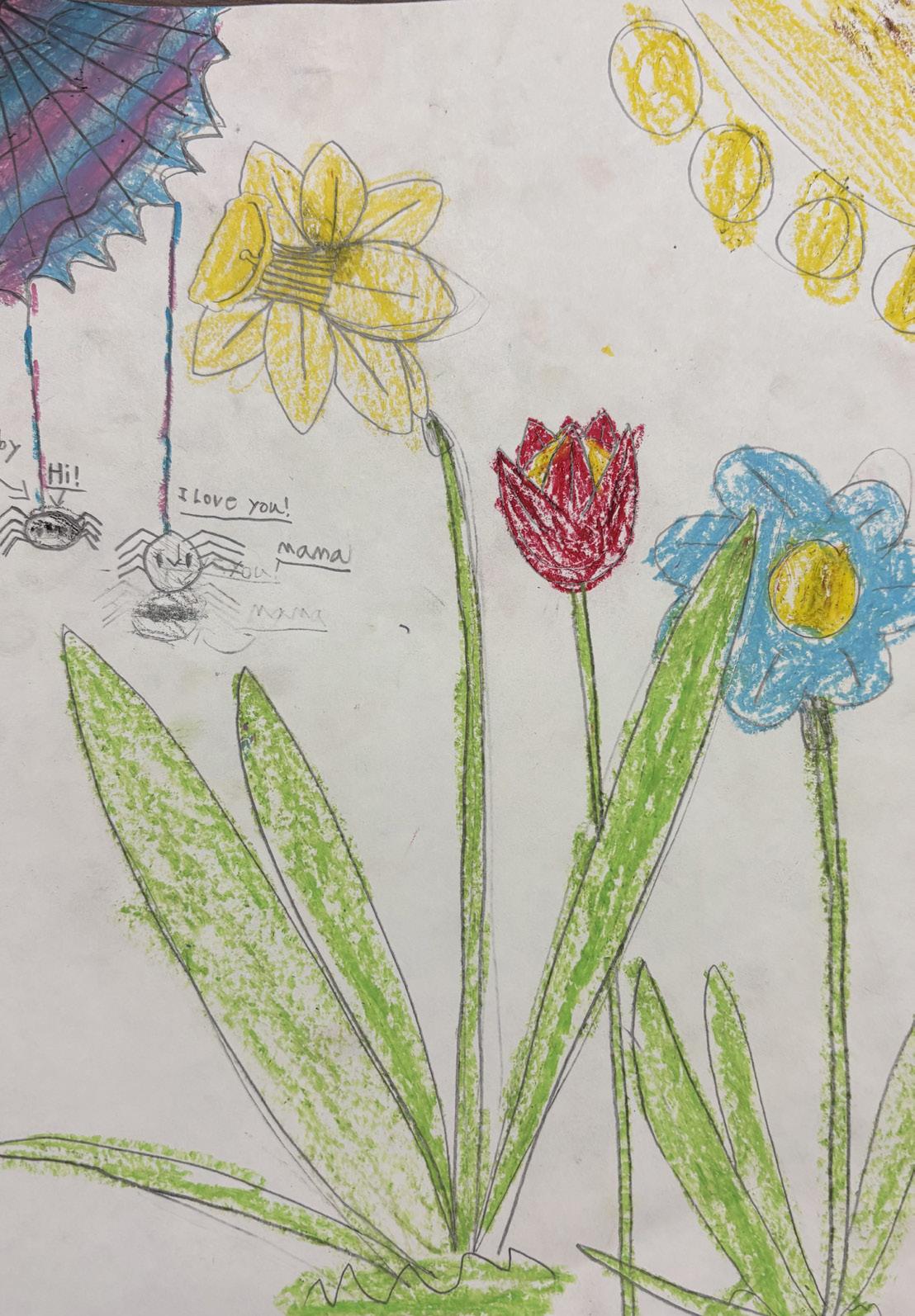
My students have truly enjoyed building their relationships with the outdoor world. Together, we’re learning what brings us joy outside and how to notice the connections all around us. Students are beginning to explore not only their own relationship with nature but also the relationships between trees, plants, animals, and the land itself.
One of the most exciting changes has been hearing students express empathy for the living things around them—something I had often struggled to foster before we began this work. It’s been incredibly rewarding to witness this growth.
We are working on slowing down and focusing on feeling the wind in our hair, warmth on our skin and letting our minds calm down so that we can build a connection with the living things around us.
Wabanaki Studies
MESSALONSKEE HIGH SCHOOL
Ninette Fenlason
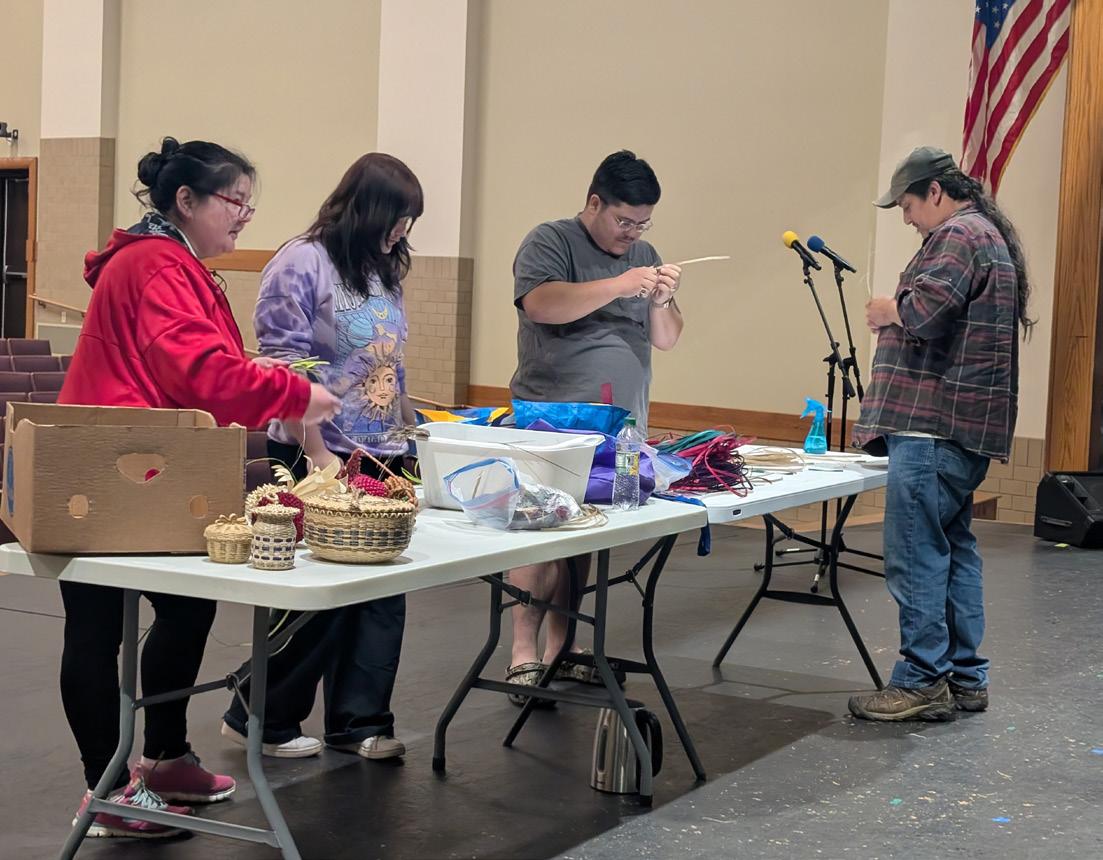
Wabanaki basket making artist Paula Love went to Messalonskee High School in May of 2025 and presented to Messalonskee students and staff about the Wabanaki culture with a focus on basket making and its importance to the Wabanaki people. Along with three other Wabanaki artists, Paula demonstrated basket making and helped the students create their own bookmarks using sweetgrass and reeds. I learned a lot about basket making and we had the opportunity to see first hand the process of weaving. The bookmarks we made from sweetgrass is a great stepping stone to learning more about the Wabanaki culture.
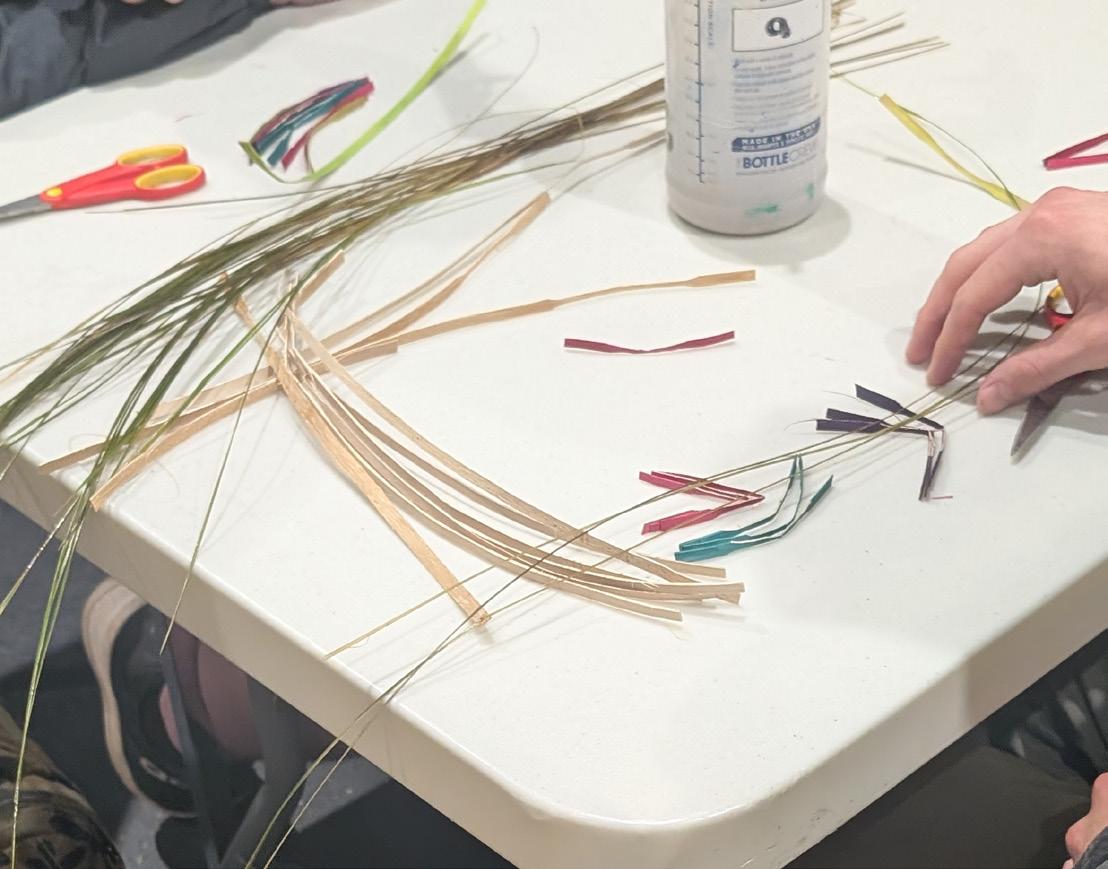
ROBERTS FARM EXPERIENTIAL LEARNING / MSAD 17
Sarah Kearsley
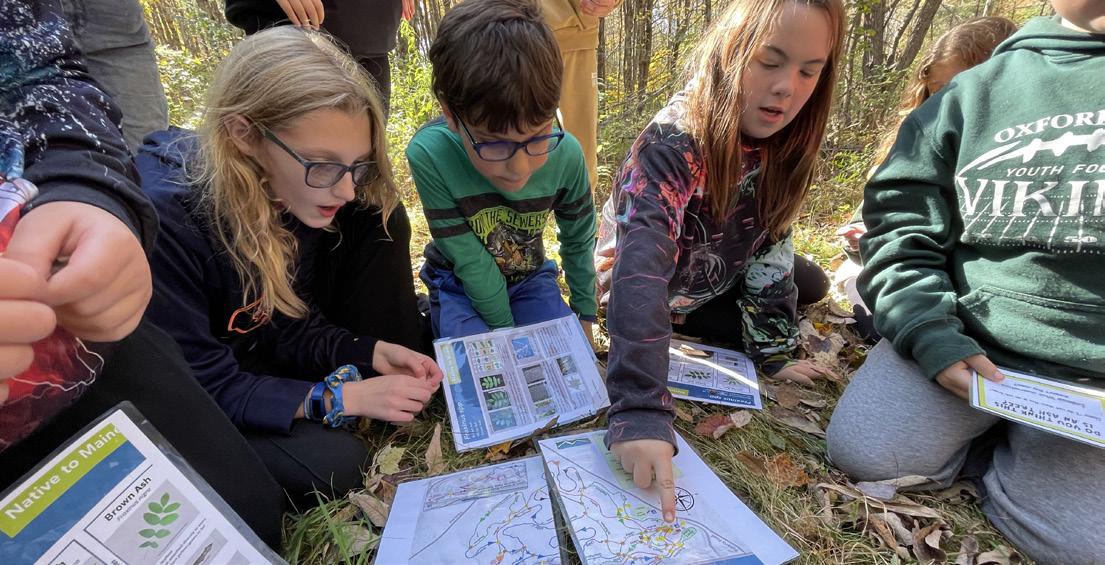
The funds from the MEEA Mini Grant for Outdoor Learning supported the expansion of Wabanaki Studies in all of our programs at Roberts Farm Experiential Learning.
This fall we piloted a set of learning experiences for our 5th grade students focused on ash trees, exploring the ecological significance of this species as well as the cultural importance to the Wabanaki. During their visits to Roberts Farm Preserve, fifth grade students learned to identify ash trees and observed signs of stress due to the paired threats of climate change and impacts from the Emerald Ash Borer. These observations were uploaded to the GMRI Community Science Project called Protecting Ash for the Future.
It is one thing to learn about the Wabanaki basket tradition through photos or videos, but it is a much more powerful learning experience for students to be able to hold and appreciate a real basket as they learn about the threats from the Emerald Ash Borer. The MEEA Mini Grant for Outdoor Learning supported the purchase of four Wabanaki baskets for students to experience during their class visits to Roberts Farm.
For the three classes at Paris Elementary School, these hands-on lessons connected to a basketmaking unit in their art classes where students created paintings of places in nature that were significant to them, cut them into strips and then wove these strips into baskets.
Beyond these learning experiences, the MEEA Mini Grant supported the purchase of some incredible materials which will contribute to new learning experiences for all of our programs that center Wabanaki studies. We were able to add a number of books, maps, and Wabanaki language resources to our professional library. We are excited to integrate these resources into all of our programs, especially our middle school Youth Leadership Program this summer!
Wabanaki Studies
LORANGER MEMORIAL SCHOOL
Cynthia Nye
The MEEA mini grant helped my students and me expand our ash inventory project by learning about two eyed seeing. Minquansis Sapiel, a Passamaquoddy educator who lives in our town, planned and taught 11 classes with me so that we could model and teach students how to combine indigenous knowledge with western science practices. In the classroom and in the woods, she helped us learn about Wabanaki culture and the 4Rs: Respect, Relationship, Reciprocity, and Responsibility. Together, we helped students write and draw two eyed seeing pieces for Findings from The Field, a student research journal published by the Gulf of Maine Research Institute, with whom we are doing our ash protection project. In a survey reflecting on the project, students were asked if their work this year felt different than other science learning in the past. “Yes,” wrote one student, “because instead of just learning it, we experienced and observed it.” Another wrote, “We learned in a different way that was unlike any other year, learning through a different view.” Others wrote, “It was fun learning about Wabanaki stories and exploring nature all the time,” and “I learned so much more about nature than I did last year.”
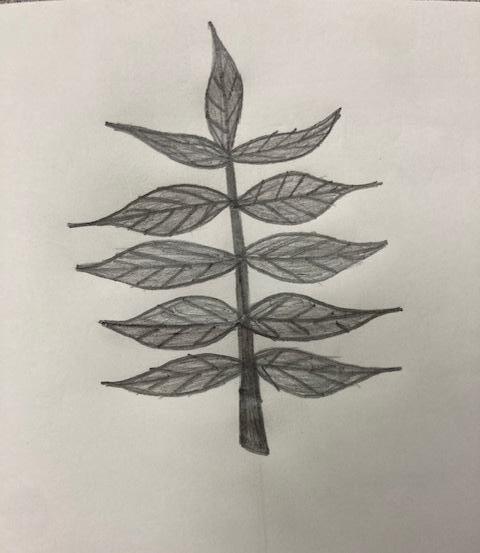
In the course of this project, my students were able to learn from other teachers as well. Partners in the project connected me to Butch Jacobs, Passamaquoddy basket maker and speaker. Wabanaki Youth in Science, WaYS, arranged for Butch to visit my school in April. He gave presentations to five classes, teaching us about land claims, language loss, basket making, and Emerald Ash Borer. Since my students and I didn’t find brown ash, the basket tree, in our local forests, we took a field trip to the Friends School in Falmouth. Rebecca Dugan of the Falmouth Land Trust led us on a woods walk to find brown ash that had been identified by students from the Friends School in their ash project. Our two eyed seeing project deepened our understanding of respect, relationship, reciprocity, and responsibility for trees, forests, and the community around us.
